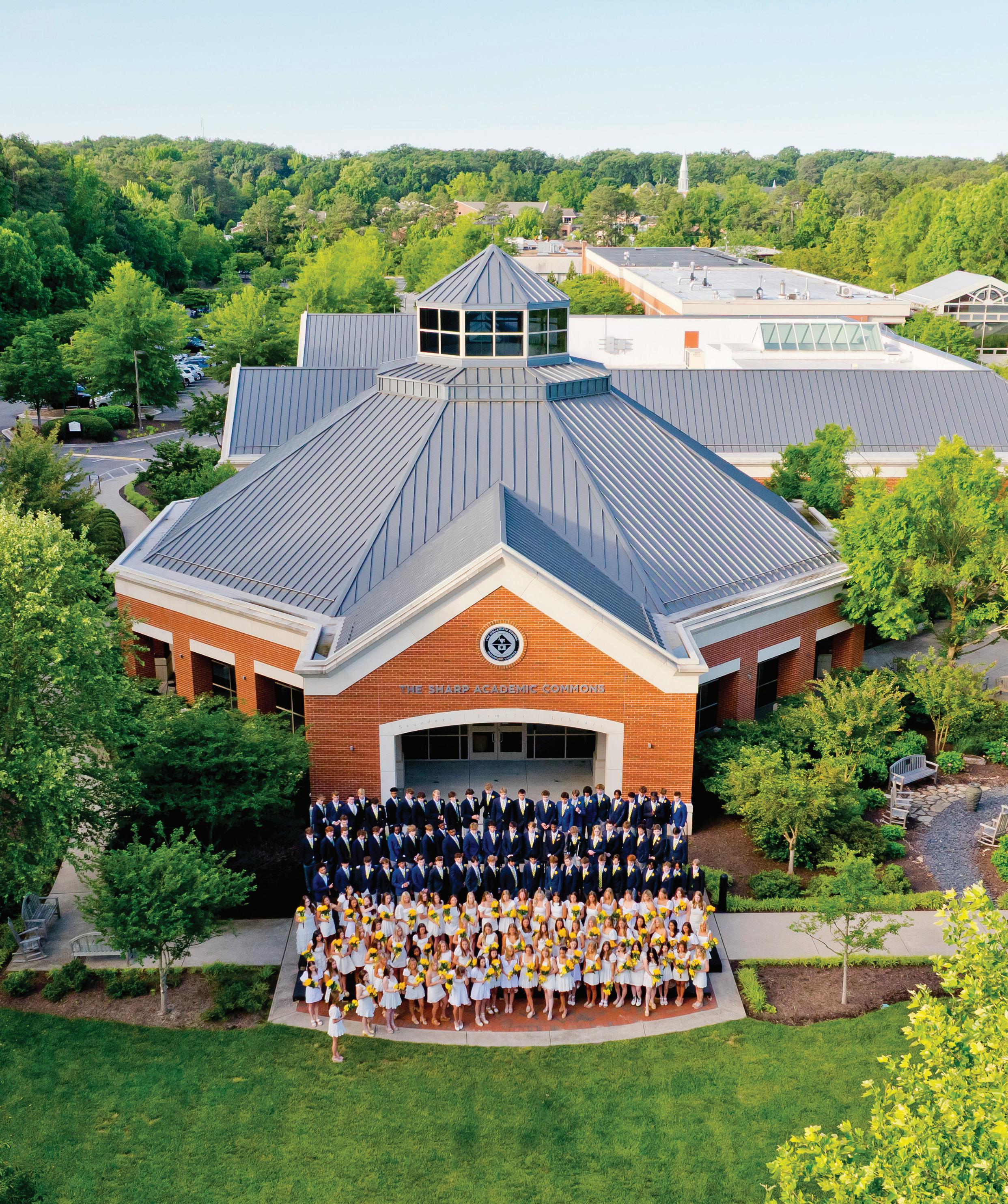

Celebrating the Class of 2025
SPARK

THE MAGAZINE OF COLLEGIATE SCHOOL
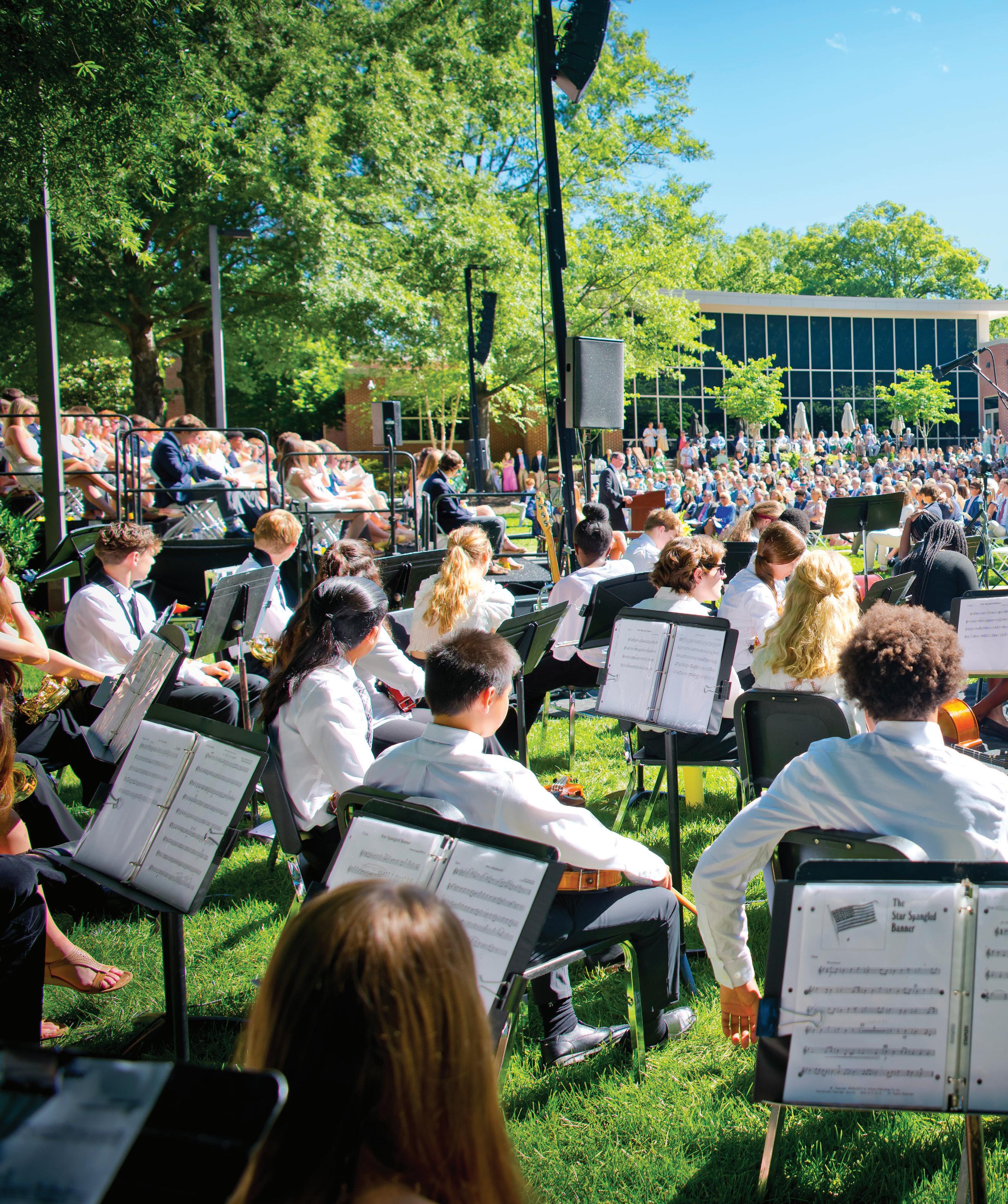
Playing in the band. Commencement, of course, is a celebration honoring the graduating class. But it’s also a celebration of those that helped the graduates make it to this monumental day — faculty and staff, parents, coaches, alumni, and friends. That Collegiate’s band plays the graduates across the stage, creating the emotional tenor of the moment, is, well, perfect.
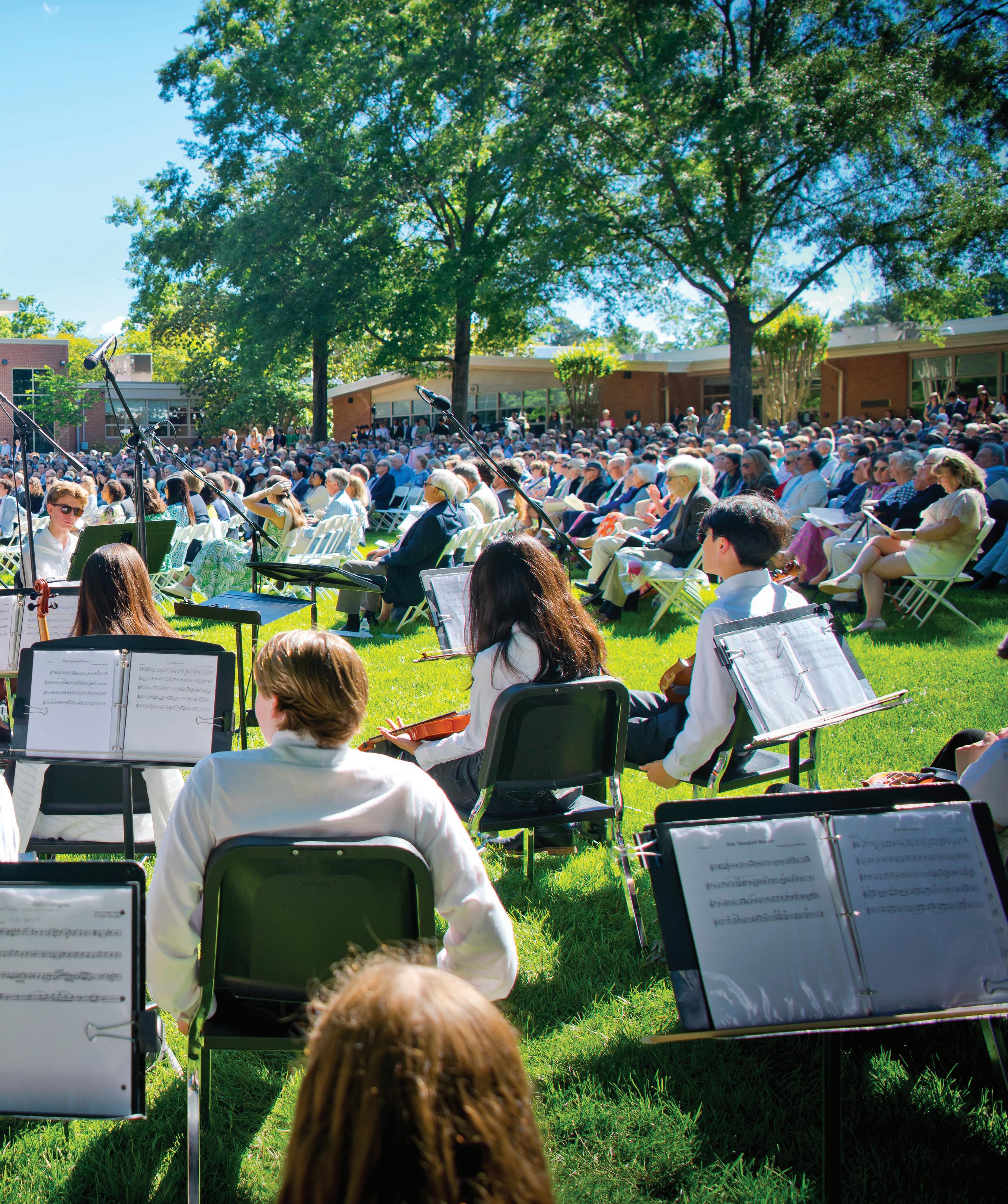
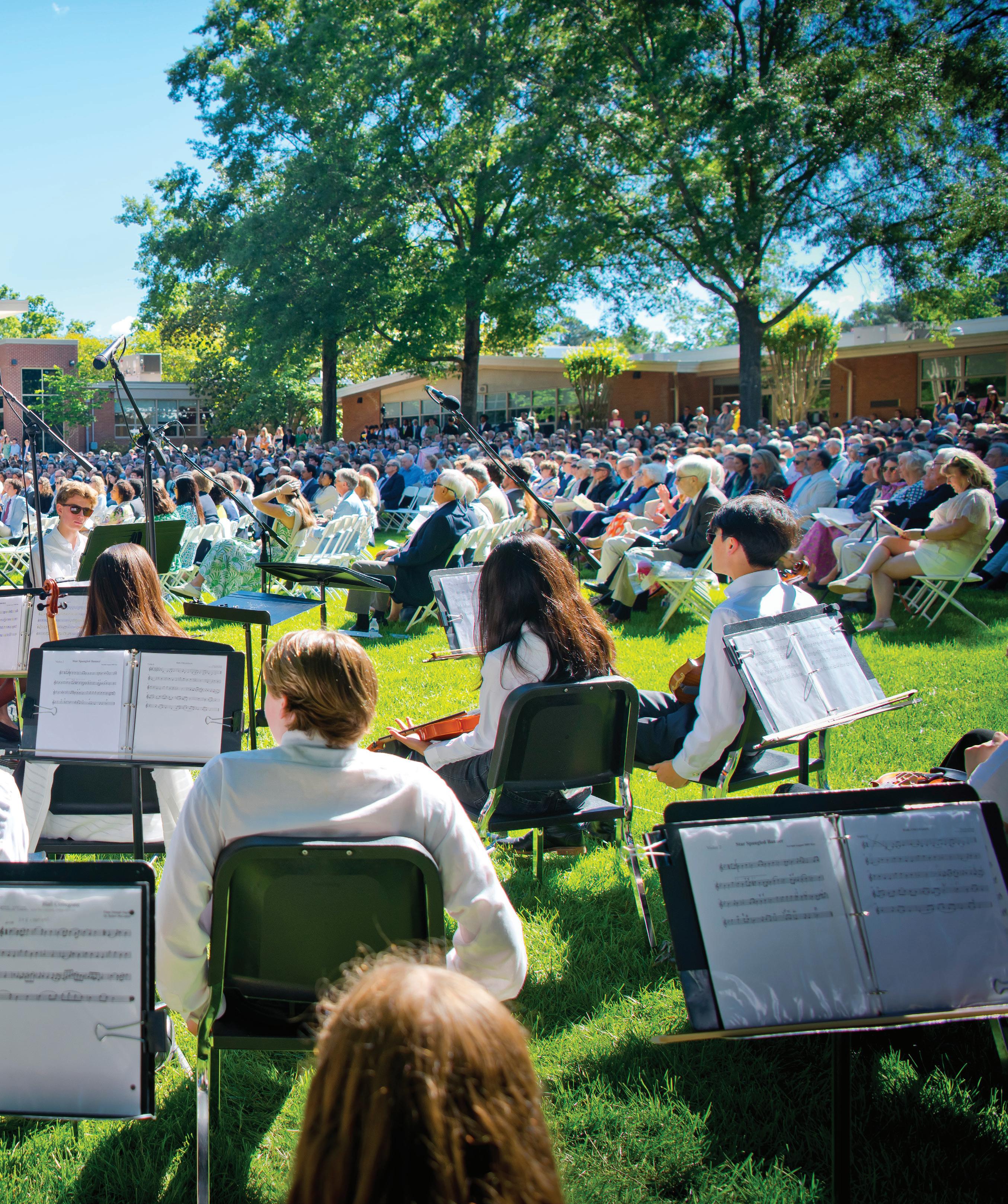
SPARK
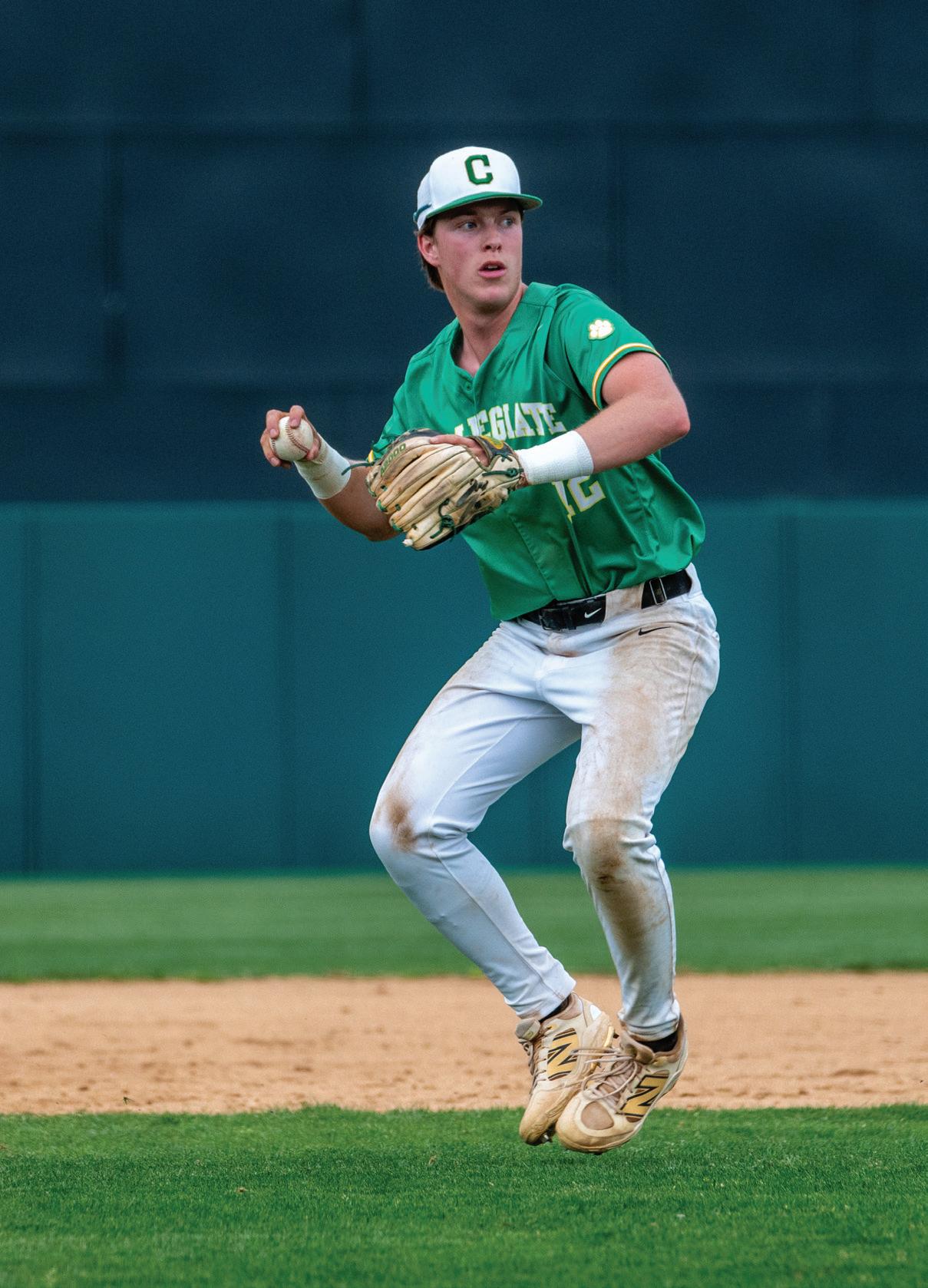
32 Unsung Seniors
Collegiate coaches celebrate a group of Senior athletes who distinguished themselves this spring but did so under the radar.
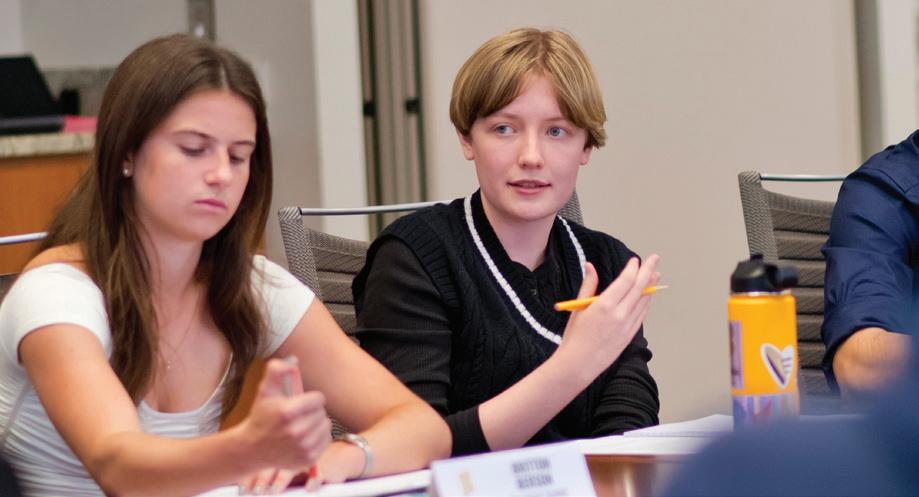
8
Future-Focused Programs
The students in the Class of 2025 are the first class to experience and participate in all three division-level Capstone courses.
The Upper School Art Walk is a culminating show, and it has allowed Adi Brotherton ’25 to showcase her work as an artist and her growth as a student. ON CAMPUS / ARTS / ATHLETICS
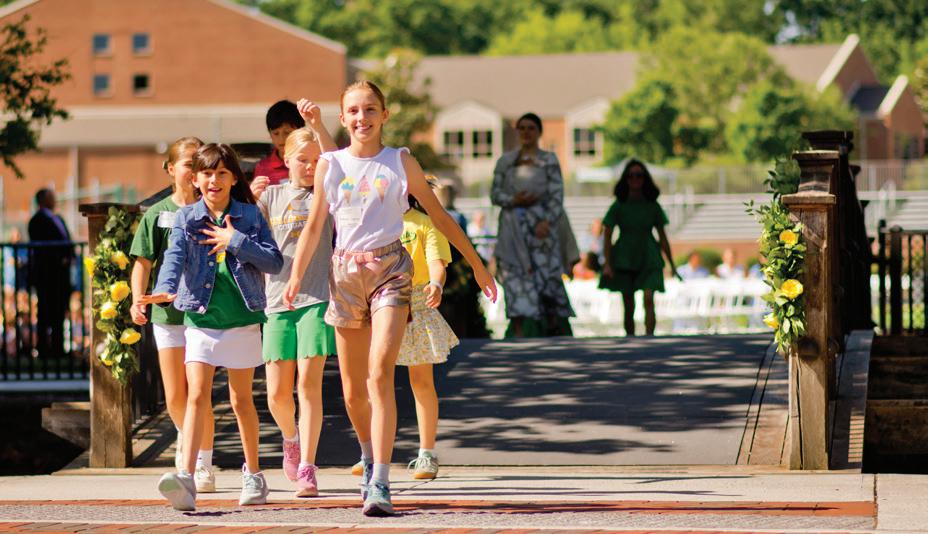
11 The Bridges We Cross
Fourth Graders stepped from the Lower School to the Middle School, marking a significant moment of growth in their Collegiate experience and a new tradition for the School as the bridge was named in honor of Debbie Miller.
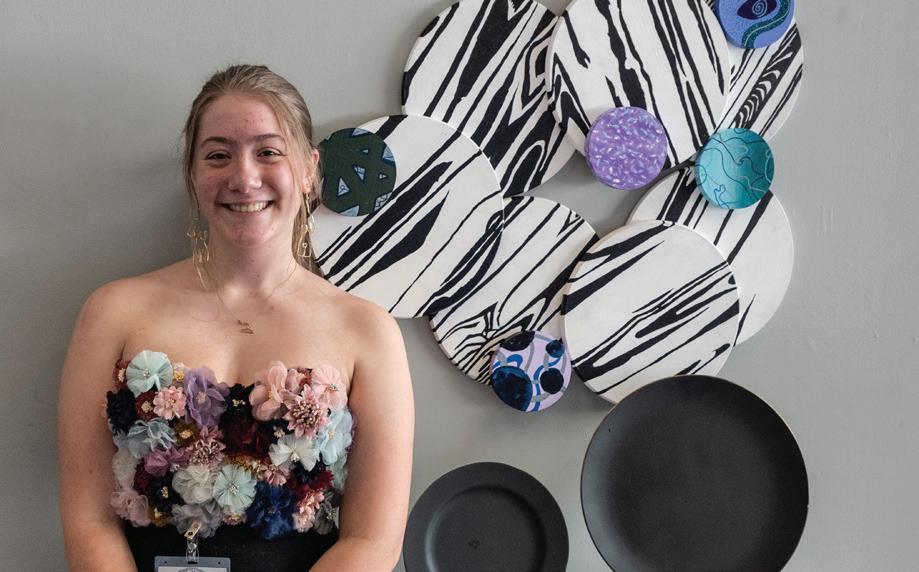
20 Developmental Pieces
FEATURES ALUMNI NEWS
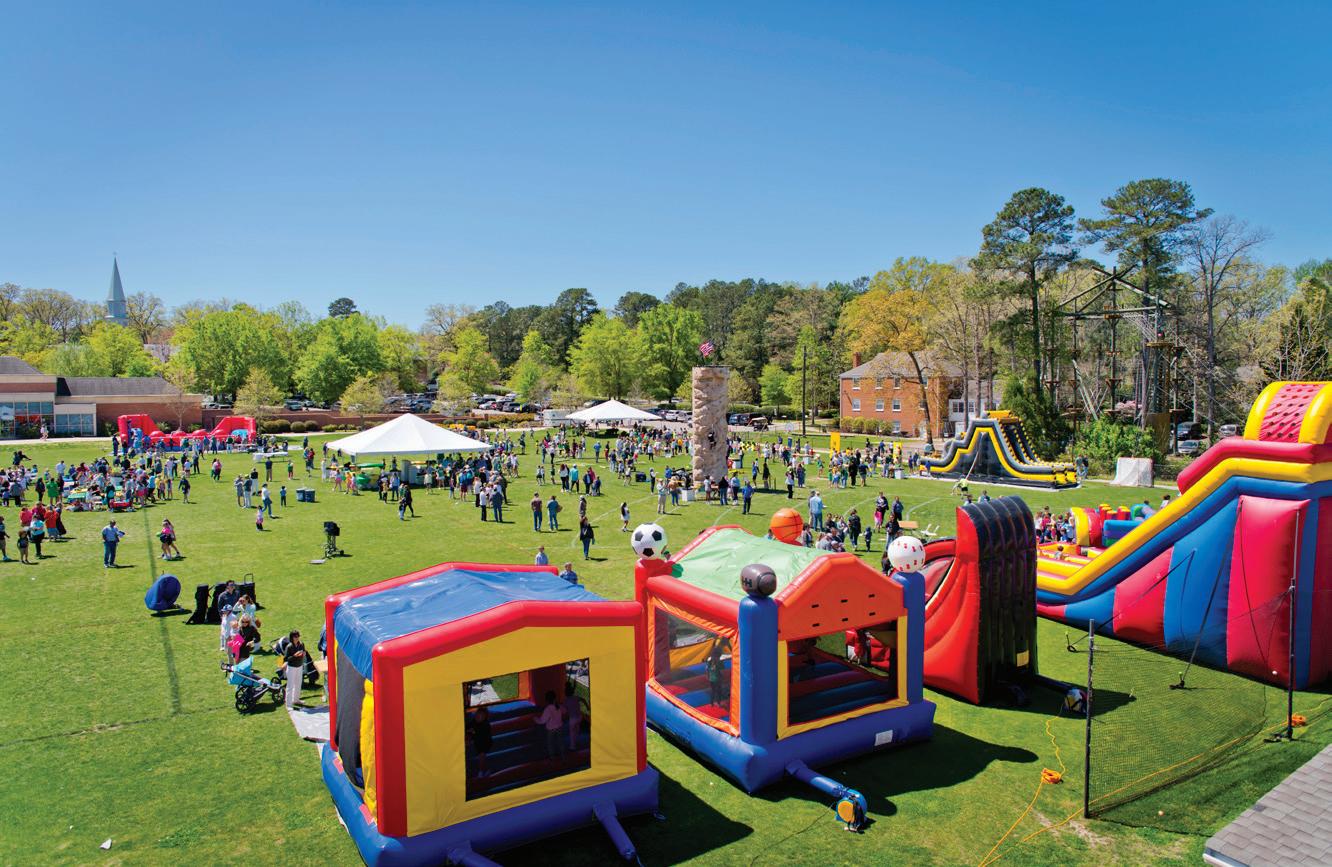
34 Under the Big Tent
For 60 years, the Village Green Fair has functioned as the Parents’ Association’s biggest fundraising event and one of Collegiate’s most beloved community gatherings.
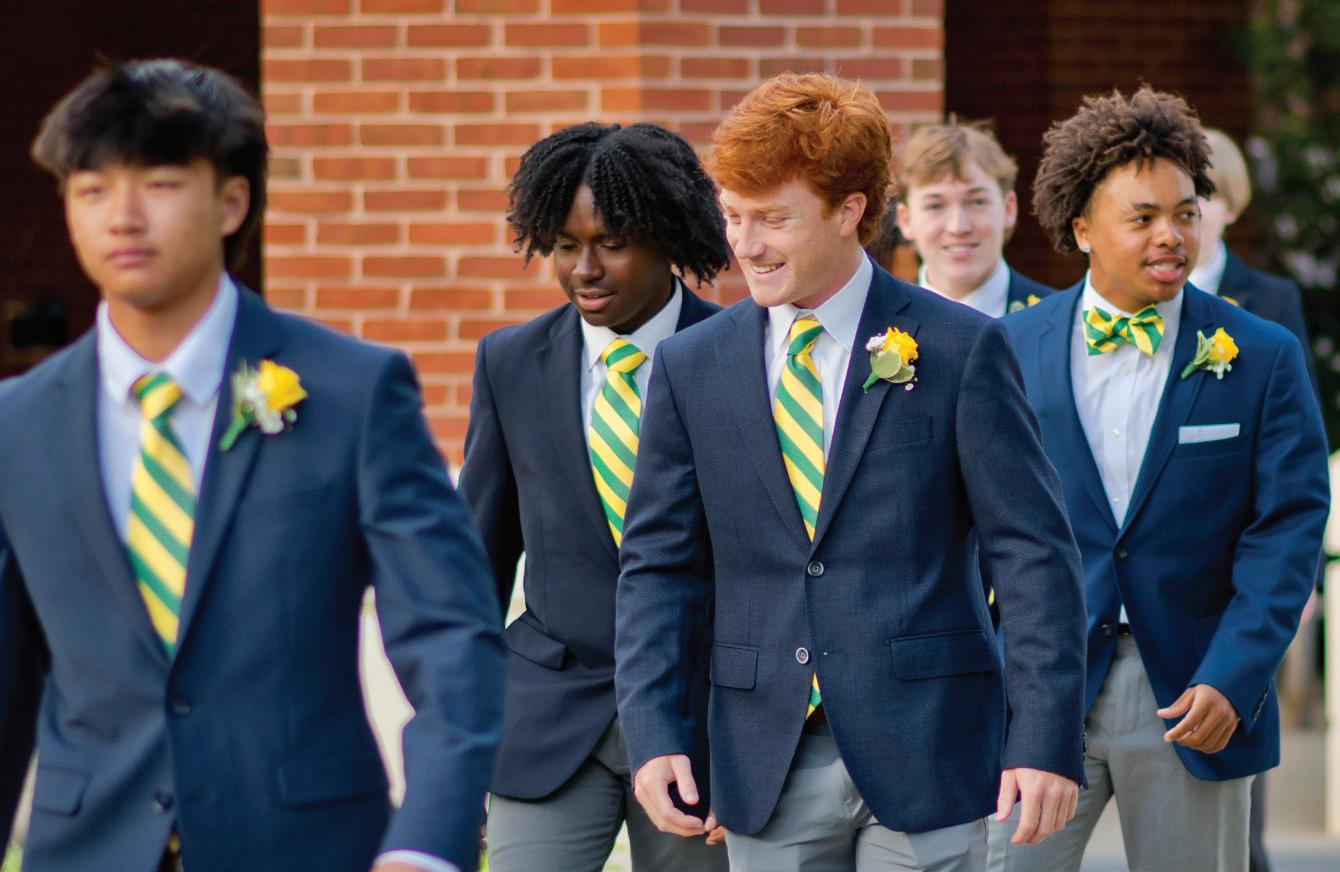
40 Class of 2025 Commencement
Collegiate School’s 110th Commencement took place in late May, with students of the Class of 2025 seated on stage in front of the 2,000-plus family members and friends who gathered to celebrate them.
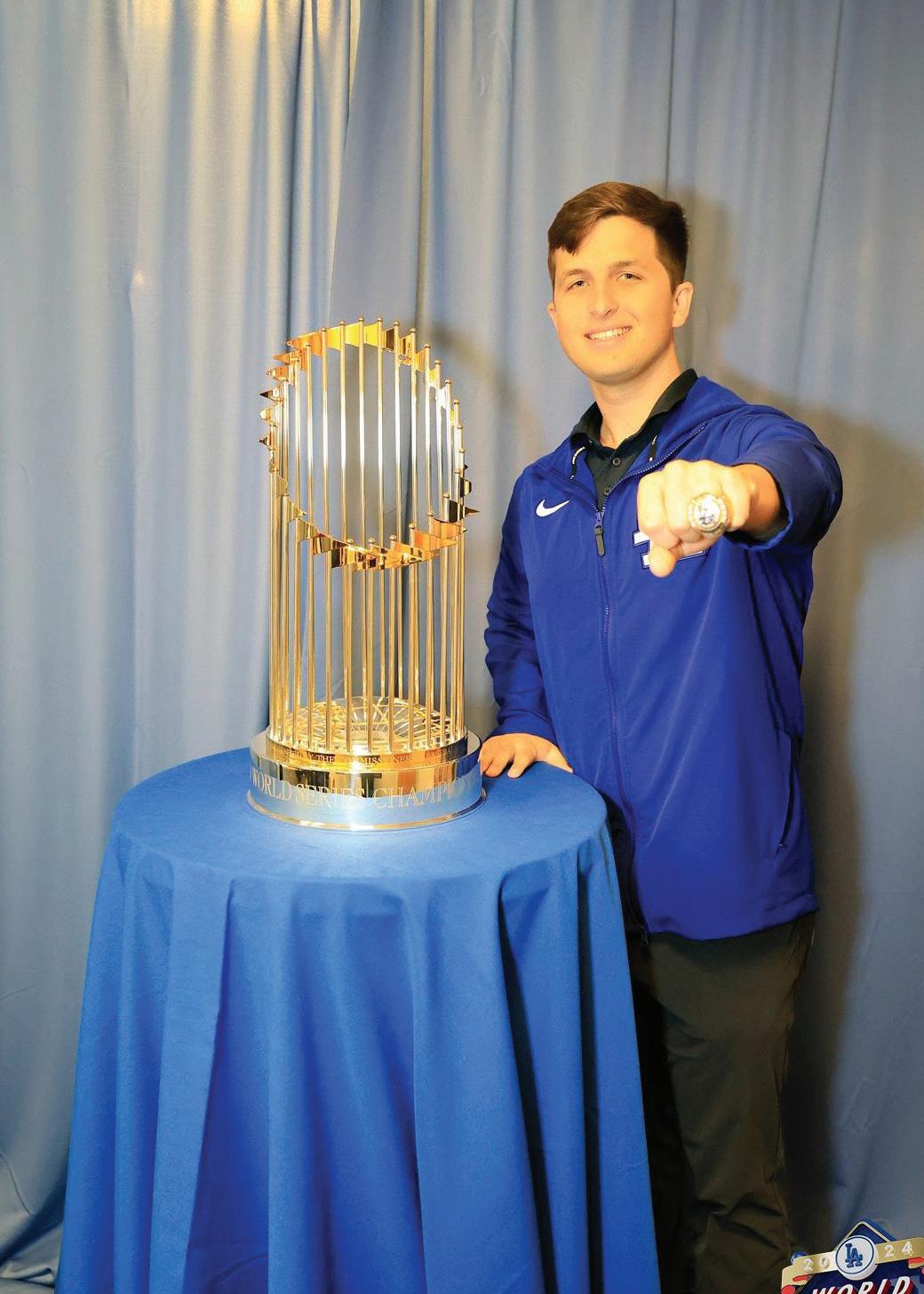
66 Numbers Game
Charlie Willingham ’18, a member of the Los Angeles Dodgers baseball analytics team, translates the game from stats to on-field success.
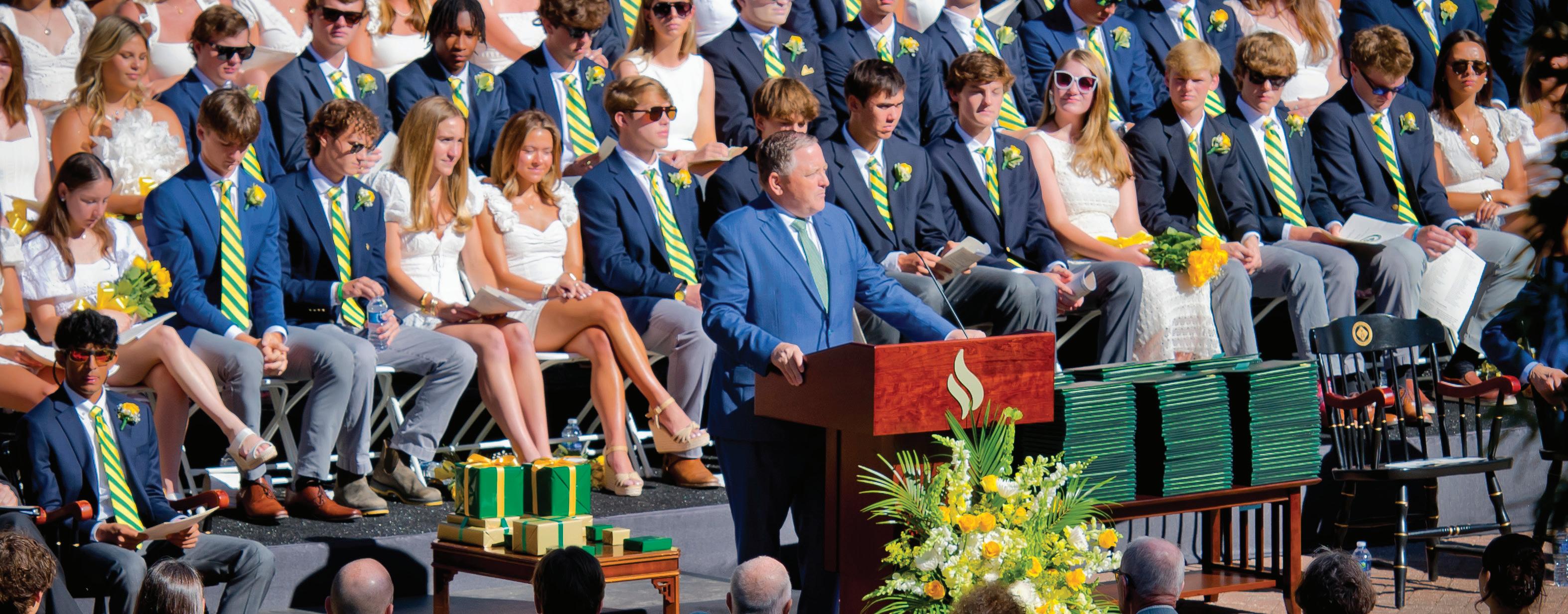
A LETTER FROM THE HEAD OF SCHOOL
Dear Collegiate Community,
I want to express my sincere gratitude for the support and kindness you have shown throughout the year. When I wrote to the community on July 1, 2024, I was excited for what was ahead, and my experience this year has far exceeded my expectations.
It has been a privilege to serve the Collegiate community and have the opportunity to witness the success of our students. Throughout the course of the year, I have seen our students excel in the classroom, in athletic competitions, in service to the community, and on the stage. They have worked hard, and we can all be proud of their accomplishments. As you will read in this edition of the Spark, the Class of 2025 had incredible success and set a high bar for future classes.
As we continue to carry Debbie Miller in our hearts, I am grateful to everyone who supported our efforts in honoring her legacy in three distinct ways. The first recognition is the renaming of the Green and Gold Heart Award for faculty and staff to the Debbie Miller Heart Award. The second recognition is naming the bridge that connects the Lower School to the upper campus — now officially named Miller Bridge. Lastly, through the generosity of so many members of the community, we established The Debbie Miller Endowment Fund, which will provide funds for students in need of financial assistance.
To the alumni community, when I wrote to you in July 2024, I quoted one of our valedictorians. I wanted you to see the view from the students’ eyes so you would understand that what you love most about Collegiate continues to thrive. So, again, I offer the words of 2025 valedictorian Sadie Webb:
“Fortunately, while Collegiate provides for us to find our talents, they don’t let anyone rest there. Teachers encouraged me, pushed me, challenged me — but never limited me to just ‘stick to my strengths.’ For that, I am most grateful. This school has given me my best friends, lifelong relationships that would never have been possible at a place that solely prioritized academics. Collegiate has never allowed my personality to be just ‘school.’”
As we know, Sadie’s experience is only possible because of the dedication and compassion of our faculty, staff, and coaches. They are the ones who create an atmosphere where our core value of love of learning is palpable. They take the time to know their students, call them by name, and care for them each day.
As we look ahead to the summer and the promise of a new year, I remain filled with gratitude and optimism. Wishing you a restful and joyful summer.
Sincerely,
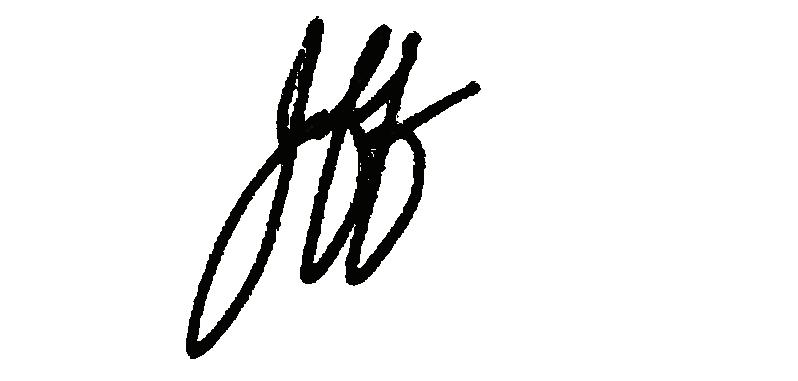
Jeff Mancabelli Head of School
Spark is published three times a year by Collegiate School by the School’s Communications Office.
Director of Strategic Communications
Sarah Abubaker
Writer/Editor
Jack McCarthy
Design
Think (think804.com)
Creative Manager
James Dickinson
Contributors
Virginia Angle ’20
Macy Boyer ’26
Weldon Bradshaw
Louise Ingold
Ellie Lynch
Photography Maggie Bowman ’23
Keller Craig
Taylor Dabney
Ash Daniel
James Dickinson
Alyssa McDaniel ’20
Jalen Gregory Photography
Robin Reifsnider
Address
Spark Editor
Collegiate School / Communications Office 103 North Mooreland Road / Richmond, VA 23229
Phone
Spark: 804.754.0869 / Alumni Office: 804.741.9757
Class Notes and Photographs
Please send your news and photographs to asiebert@collegiate-va.org, and we will use them in an upcoming issue. Digital images must be high resolution (min. 300dpi).
Letters to the editor jack_mccarthy@collegiate-va.org. Visit our website at www.collegiate-va.org
Collegiate School admits qualified students and does not discriminate on the basis of race, color, national or ethnic origin, religion, gender, sexual orientation, mental or physical disability, or any other status protected by applicable law in the administration of its admissions, scholarships, and loans, and its educational, athletic, and other programs.
Collegiate School Administration:
Jeffrey W. Mancabelli, Head of School
Sarah M. Abubaker, Director of Strategic Communications
Khristiane K. Bates, Head of Lower School
Michael W. Boyd, Director of the Arts
Jeffrey G. Dunnington, Head of Middle School
Patrick E. Loach, Head of Upper School
Phyllis Palmiero, Chief Financial and Chief Operating Officer
Andrew Stanley, Athletic Director
Antenette Stokes, Ph.D, Director of Inclusion and Belonging
David E. Taibl, Director of Admission and Enrollment Management
Tung T. Trinh, Dean of Faculty
Kristen O. Williams, Chief Development Officer
Board of Trustees 2025-26:
W. Hildebrandt “Brandt” Surgner P ’11 ’14 ’17 ’19, Chair of the Board
Kenneth “Ken” P. Ruscio P ’08, Vice Chair the Board
Neelan “Neely” A. Markel ’96 P ’27 ’30, Secretary
Neil Amin P ’31 ’32
Ellen T. Bonbright ’86 P ’24 ’26
Callie L. Brackett ’95 P ’22 ’24
Mason T. Chapman ’84 P ’22
Mayme B.F. Donohue ’03
Leavenworth “Wortie” M. Ferrell II ’88 P ’24 ’27 ’31
Martin “Marty” D. Franks
Mary B. Malveaux ’86 P ’26 ’29
Malcolm “Mac” S. McDonald P ’87 ’88
Nimisha Parikh Montgomery P ’35
Lia C. Mooney P ’28 ’31, Parents’ Association President Meera Pahuja ’97 P ’30 ’32 ’34
J. Cheairs Porter Jr. P ’27 ’29 ’32
JoAnn Adrales Ruh P ’16 ’18 ’21
Julious “Jody” P. Smith III ’86 P ’20 ’22 ’25
Wallace Stettinius P ’77 ’79 ’84, Trustee Emeriti
W. Gray Stettinius ’79 P ’07 ’10 ’12
R. Gregory “Greg” Williams ’69 P ’01 ’04, Trustee Emeriti
Elizabeth Dolan Wright ’01 P ’33 ’35, Alumni Association President
Alumni Association Board 2025-26:
Kash Aboud ’12
Brink Brinkley ’76
Wilson Cecil ’15
Max Comess ’03
Molly Congdon ’03
Kathleen Corsello ’10
John Daniel ’70
Stuart Farrell ’03
Gray Fain ’07
Dominique Meeks Gombe ’09
Muffy Greenbaum ’04
Missy Herod ’72
Angie Hutchison ’90
Devon Kelley ’05
Ted Lansing ’98
Toby Long ’98
David MacMillan ’82
Lauren Makhoul ’10
Beth Marchant ’72
John Markowitz ’01
Gracie Mason ’05
Lee Moreau ’85
Rishi Pahuja ’04
Chris Pearson ’02
Grayson Richmond ’17
William Roberts ’65
Giselle Shaw ’22
Beth Anne Shelly ’83
Nash Wiley ’15
Elizabeth Dolan Wright ’01
Welcome New Cougars!
We are excited to have each of you brighten our classrooms this year, and we can’t wait to see what unique contributions you make to the Collegiate community. Ensuring that your family’s transition to Collegiate is as smooth — and fun! — as possible, we are offering the following events for new families this fall.
SEPT. 2 Kindergarten Parent Coffee at the Jepson Alumni Center, 8:30-9:30 a.m. University of Richmond
SEPT. 3 JK Parent Coffee at the Jepson Alumni Center, 8:30-9:30 a.m University of Richmond
SEPT. 11 New US Parent Social in Craigie before US parents’ night 5:30-6:15 p.m.
SEPT. 18 New MS Parent Social in Craigie before MS parents’ night 5:30-6:15 p.m.
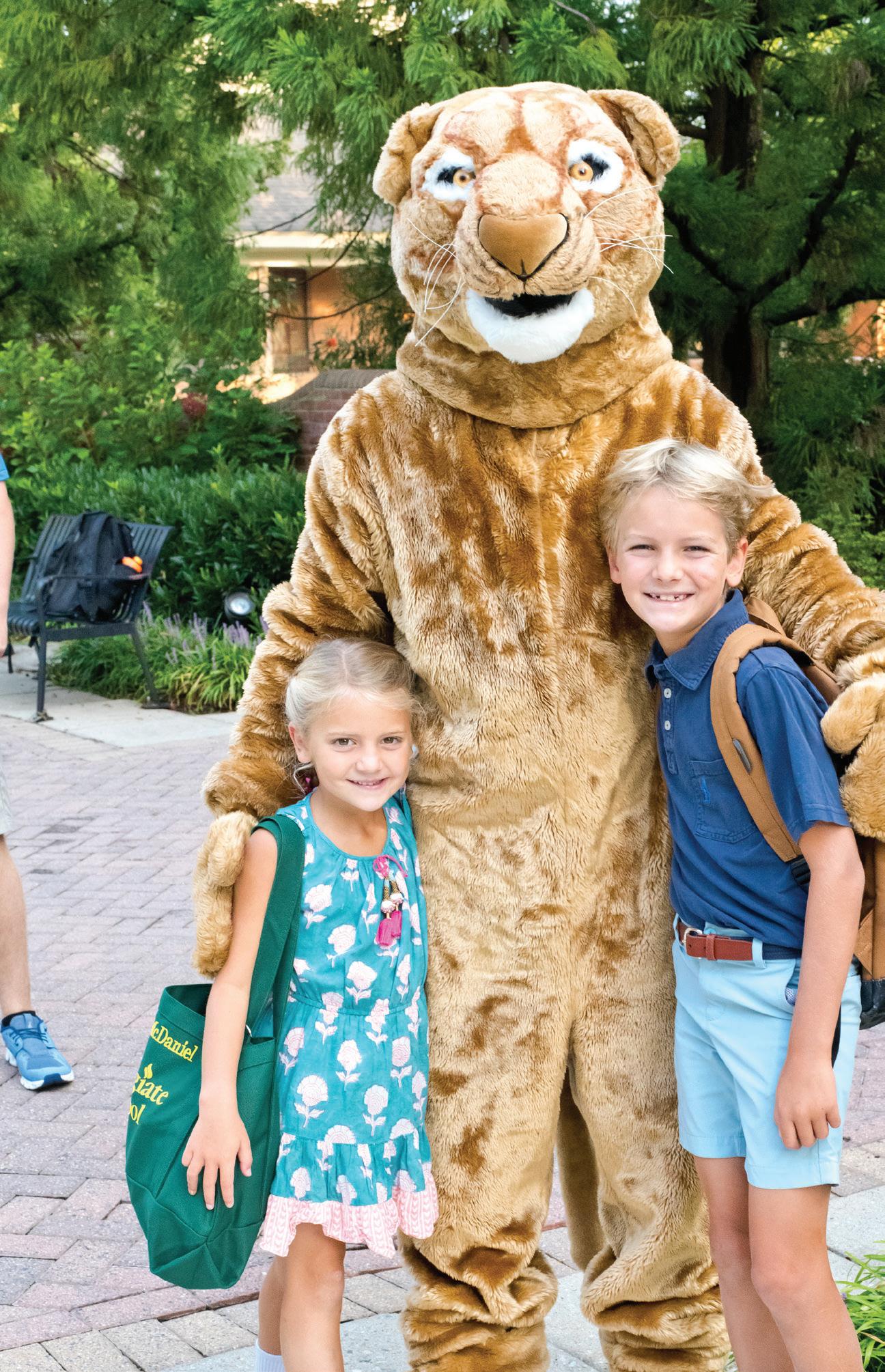
SEPT. 22 Coffee and Conversation with Head of School Jeff Mancabelli and 8:15-9:15 a.m. Head of Lower School Khristi Bates for new 1st Grade parents, held in the Development Conference Room
SEPT. 24 Coffee and Conversation with Head of School Jeff Mancabelli and 8:15-9:15 a.m. Head of Lower School Khristi Bates for new 2nd-4th Grade parents, held in the Development Conference Room
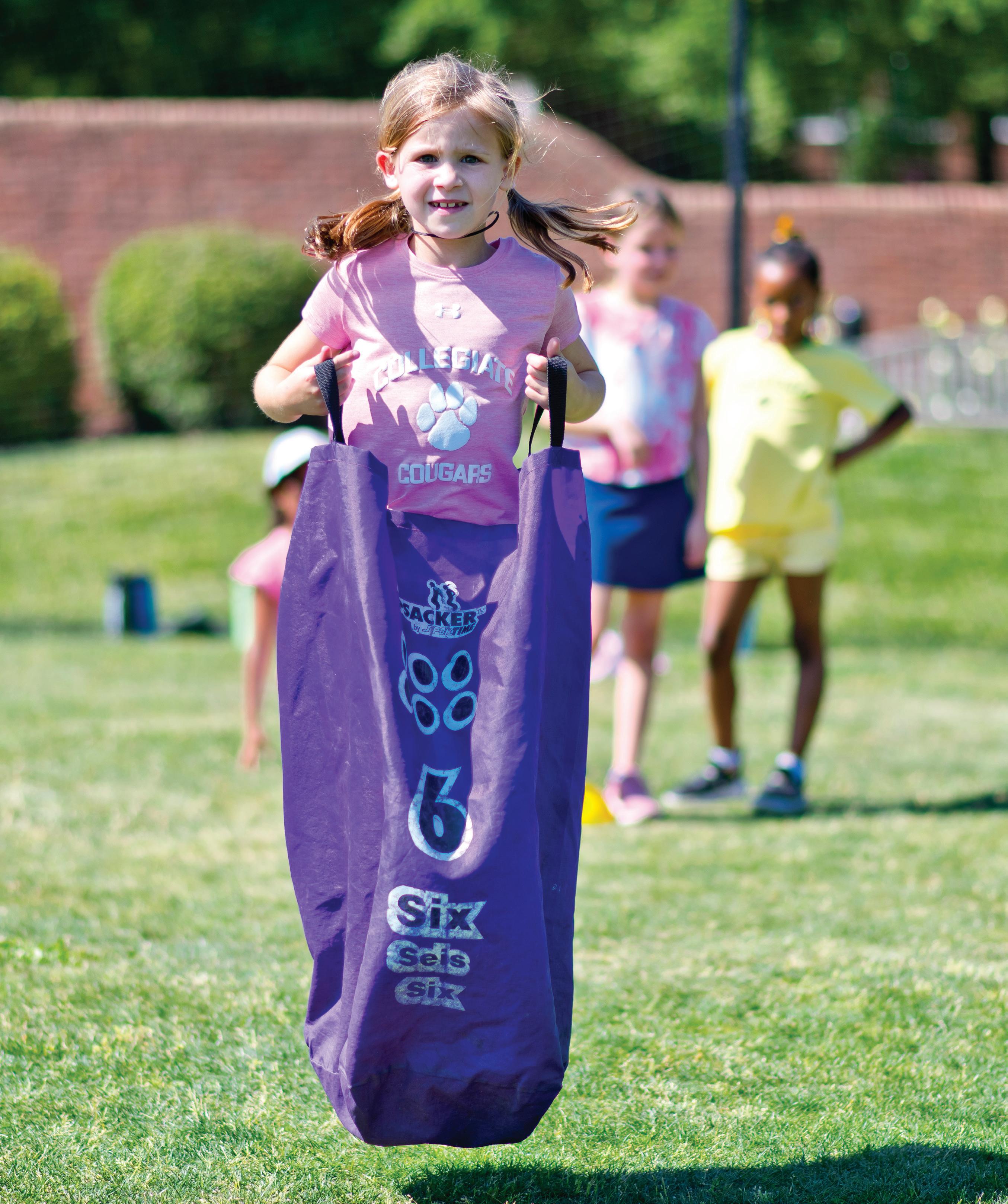
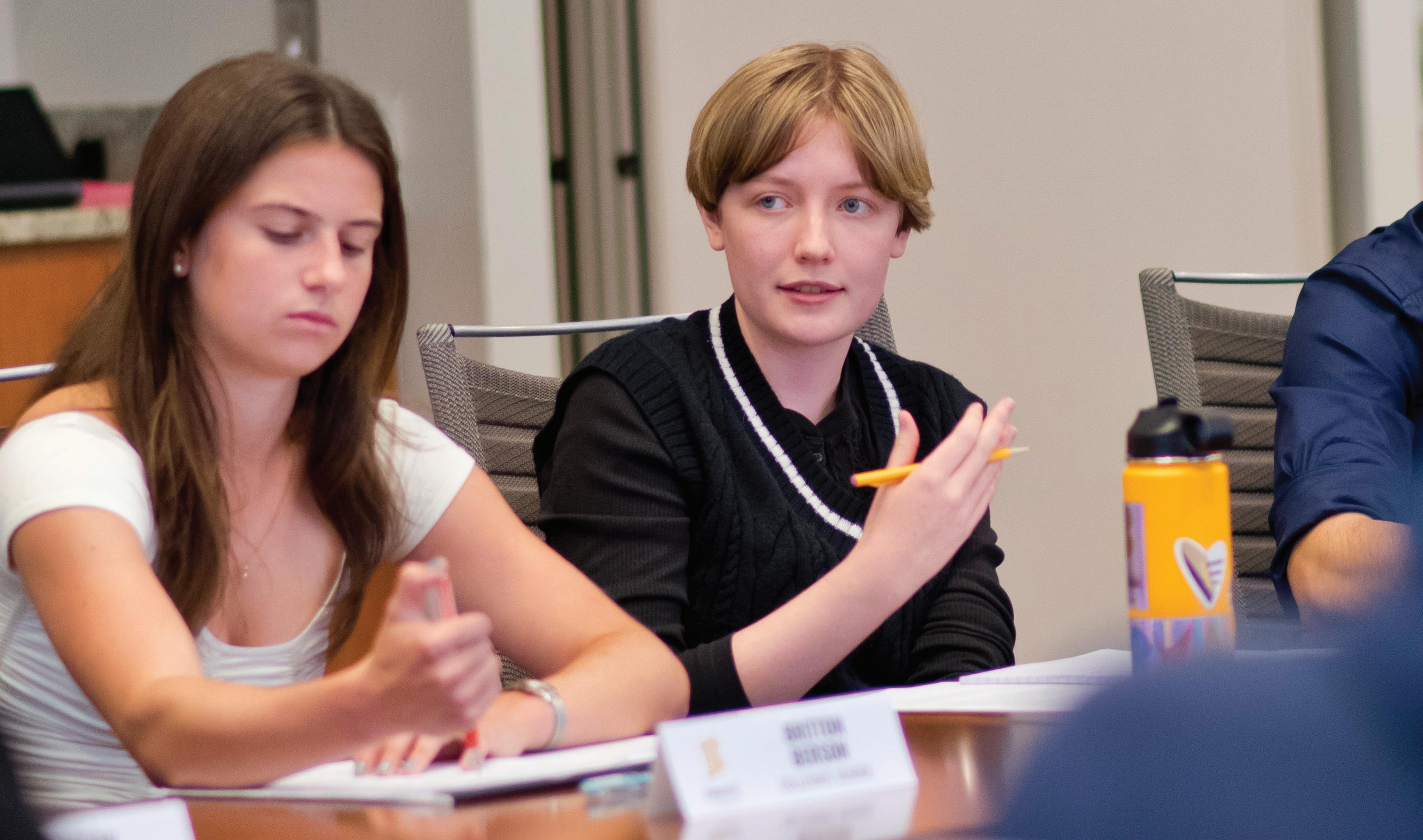
Future-Focused Programs
The students in the Class of 2025 are the first class to experience and participate in all three division-level Capstone courses.
HAZEL MILLER ’25 was lost in the weeds and thrilled to be there. They were staying after school, working through some case studies for the Virginia Ethics Bowl with a group of students.
The group was discussing the veil of ignorance, a thought experiment used to promote fair decision-making by asking people to recognize that individuality and personal circumstances are the result of life’s natural lottery. Setting aside personal bias, what would we be willing to accept? Under a veil of ignorance, if one didn’t know what kind of person one would be -
come, what society would one set up? What would be considered fair? These thoughts supercharged the conversation among the students. The conclusions the group would reach, together, were still unknown, but the process of discovery was exciting. Hazel and their team were navigating the nuances, following whatever path logic led them down, taking everything they had learned at Collegiate with them to help navigate. Hazel did this with composure and respect, understanding that you first had to get lost in thought in order to discover what you think.
Hazel cherished the process of sitting with a difficult idea, moving it around in their head to see all its angles. That’s what Collegiate taught them to do, and Ethics Bowl, an event within the Ethics and Engaged Citizen Senior Capstone, gave Hazel the space to apply themself and think deeply. It was the natural culmination of everything they had learned, and the Ethics Bowl challenged them to draw on the well of knowledge they had acquired throughout their 13 years at Collegiate. A competition of knowledge and leadership, the Ethics Bowl equally challenged Hazel’s application
Hazel Miller ’25 participating in the Ethics Bowl.
of personal skills — the traits of a responsible citizen — that they had been taught at Collegiate. “Collegiate does a really good job of building on concepts that you’ve learned previously, pushing you to apply yourself and expand yourself,” Hazel says. “And so now, having gone through that process at Collegiate, through each division, I feel as though I’m actually ready to be out in the world and do good in the world.”
Collegiate’s Capstone program, which is offered in the final year of each division of the School, intentionally creates these opportunities for students to build on their knowledge base and prepare them for the future. Each Capstone has, at its core, an essential question or challenge, one that empowers students to use their cumulative learning. As students advance through the divisions, skill sets expand with each Capstone, and they continue to complement the skills they learned in previous classes. “During each Capstone we try to give students different ways of leaning on their strengths and encourage them to take ownership over certain areas,” says Rhiannon Boyd, JK-12 Capstone Director. “No matter what division-level Capstone you look at, we’re asking the students to think about their place in the world while using the skills they have been developing throughout their time at Collegiate.”
The Capstone programs Collegiate offer serve to open students up to what can be done both in and outside a classroom. So when Hazel sits down with classmates to discuss the veil of ignorance, they are taking everything they have been taught and channeling it into the thought exercise.
This year’s class of Seniors, as they embarked on their culminating Captones, felt particularly prepared for that chal-
lenge. The students in the Class of 2025 are the first class to experience and participate in all three division-level Capstone courses. The skills they have built over time — leadership, public speaking, problem solving, civic engagement — are no different than the skills students from other classes have developed as responsible citizens, but this crop of students is unique in the sense of having refined and honed those skills, with intention, over three Capstone projects. They are the first class of many. Their focus expands — from Envision Collegiate, in 4th Grade, to Envision Richmond, in 8th Grade, and finally culminating in Envision Your World, in 12th Grade — but their intention of applying their academic knowledge to larger communities remains the same. “We are just beginning to see what three divisions of investment looks like,” Boyd says of the Capstone program. “All of the skills are ones that students have picked up along the way during their time here, and the Capstone is the one piece that sits on top that has a way of unifying all of those foundational skills.”
For Clavio Ascari ’25, who participated in the Global Public Health Capstone this year, his Capstone experience helped harmonize his skills and interests. The co-president of the Science Research Club, he knew he wanted to select a Capstone that catered to his enthusiasms. Students in Envision Your World have the ability to choose from a variety of Capstone experiences, each with a curricular focus on one or more of the areas of responsible citizenship. The possibility of choice, for Clavio, is what makes Collegiate unique. “I’d say that’s definitely my favorite part of Collegiate: being able to independently explore the things I’m interested in,” he says. “I
think the Capstones help everyone with strengthening what you’re already passionate about while teaching you how to be a member of society.”
Regardless of subject, though, the core function of any Capstone course is to present students with real-world situations and challenge them to respond in an appropriate, disciplined manner. “Collaboration is at the heart of everything that we are trying to do within Capstones,” Boyd explains. “We are creating situations in which students have to work across differences.”
Differences manifest in multitudes. That’s the core lesson to learn in preparation of being a responsible citizen. When Clavio and his classmates discuss the ethics of medicine within the context of Global Public Health, differences in viewpoints are inevitable. The same goes for when Hazel and their classmates discuss moral rights within a society. Differences in learning styles between Lower or Middle Schoolers are equally important to understand how to navigate. The experience of approaching those differences with empathy and compassion and understanding is paramount to not only succeeding within the Capstone course, but critical to students becoming responsible citizens prepared for whatever the future holds for them. “Throughout my Capstone experiences, regardless of subject of focus, I have learned how to be a functioning member of society,” Clavio says. “I feel prepared to hold and lead discussions in a respectful and meaningful way in any given scenario. I feel emboldened in my passion for medicine, but I especially feel prepared to lead in the future.”
I think the Capstones help everyone with strengthening what you’re already passionate about while teaching you how to be a member of society.”
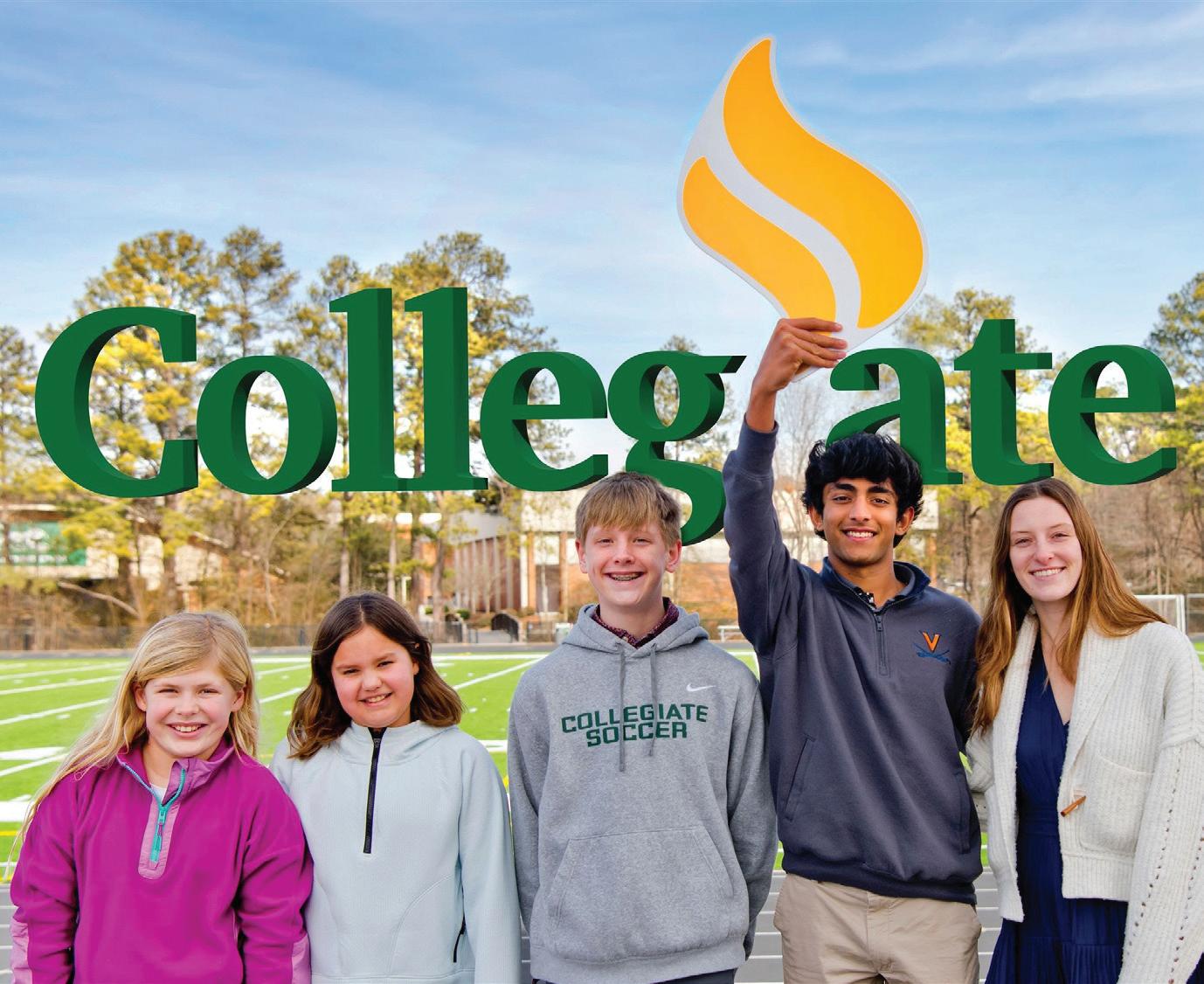
YOUR SUPPORT IGNITES POSSIBILITIES
This year, over 2,000 donors contributed a record-breaking $2.6 million to the Collegiate Fund. As our donors recognized the impact of their gifts, we saw our alumni and parent participation rise.
In every division, students have the opportunity to get out of the classroom to live and experience the curriculum. First Grade students visit our partners at Shalom Farms to learn about the important role agriculture plays in a community. While at the farm, the students harvest thousands of pounds of sweet potatoes, which are then donated to Richmond-area residents. Middle School students take a bus tour of Richmond to see the different neighborhoods the city encompasses and visit the Valentine Museum to see how the city’s history shaped the Richmond community. In the Upper School, students give back to the community on retreat days by volunteering their time in meaningful ways across the community. These are exciting, experiential trips, all funded by philanthropic support.
The impact of the Collegiate Fund is far reaching, supporting student experience such as these, faculty support, technology and innovation, financial assistance, athletics, and the arts. Thank you to everyone in our community that has made the 2024-25 Collegiate Fund a tremendous success. All of our students, faculty, and staff are the beneficiaries of your generosity.
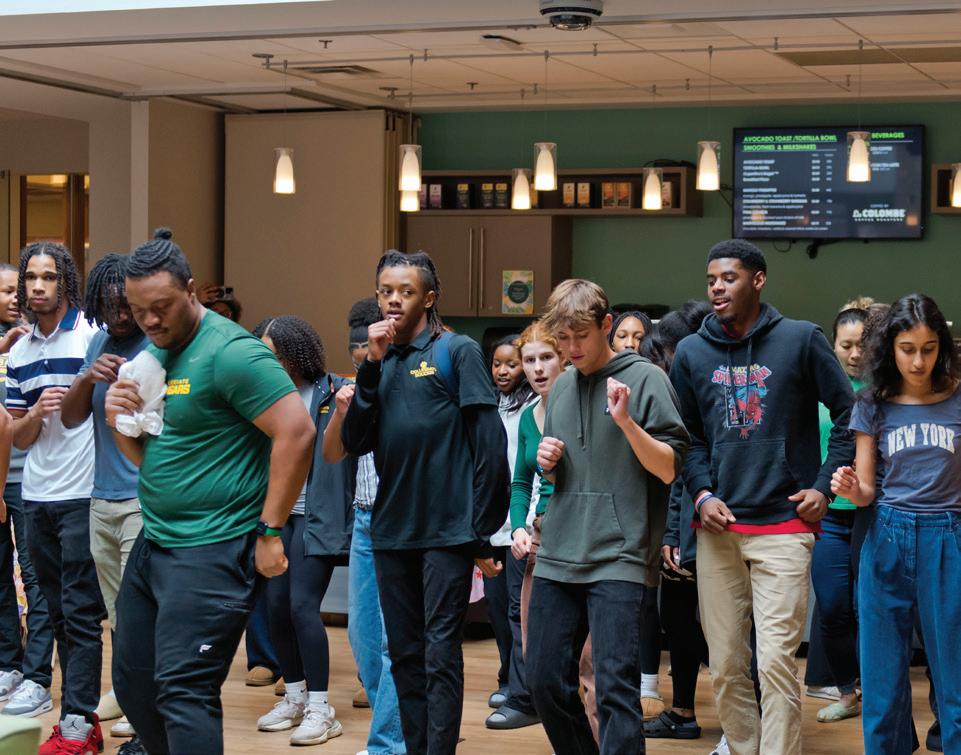
UNITING COMMUNITY
Within a rigorous academic school year, it’s important to remember to have fun and enjoy yourself. That’s why, just before Spring Break, the United Sisters and Brothers affinity group hosted a block party in the Sharp Academic Commons, bringing everyone together.
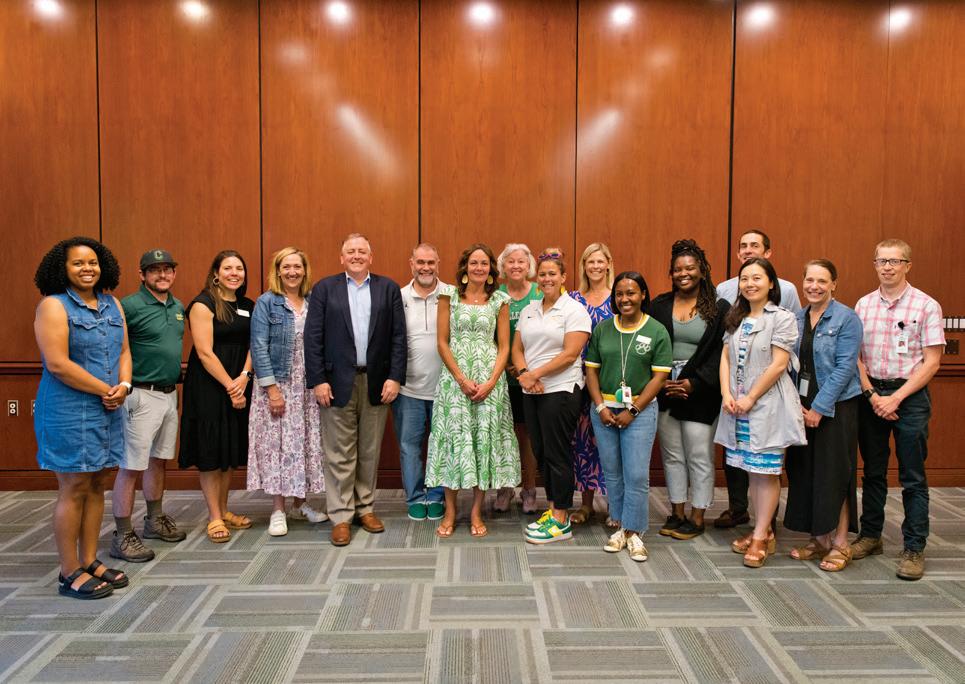
LEADERSHIP AT WORK
Collegiate School’s Leadership Academy allows interested faculty and staff to refine their expertise in the classroom, take on new challenges in leadership, and deepen their connections to colleagues. The Leadership Academy provides pathways to advance the careers of faculty and staff. A two year professional development program, faculty and staff spend 100 hours working with each other to shape a better educational environment that works for everyone.
The Bridges We Cross
Fourth Graders stepped from the Lower School to the Middle School, marking a significant moment of growth in their Collegiate experience and a new tradition for the School as the bridge was named in honor of Debbie Miller.
Every journey begins with a single step. For Lower Schoolers, that journey begins across the bridge — home to Luck and Reynolds Hall, the Watt Library, and the Weinstein Wing. It’s where students built their foundation. And, both symbolic and literal, that journey continues as Lower Schoolers cross the bridge to the Middle School. This year, that crossing took on deeper meaning.
This year’s ceremony marked a new tradition for the School. On what would have been her birthday, the Collegiate community gathered to dedicate the bridge in honor of late Lower School Head Debbie Miller. With parents, teachers, students, members of the Miller family, and special guests in attendance, the event was both joyful and reverent, a moment of celebration and reflection.
Gentle sunlight splashed across the newly named Miller Bridge as the 4th Graders stepped from the Lower School to the Middle School, marking a significant moment of growth in their Collegiate experience.
The bridge has long served as the passageway for Collegiate’s 4th Grade students as they transition into the next
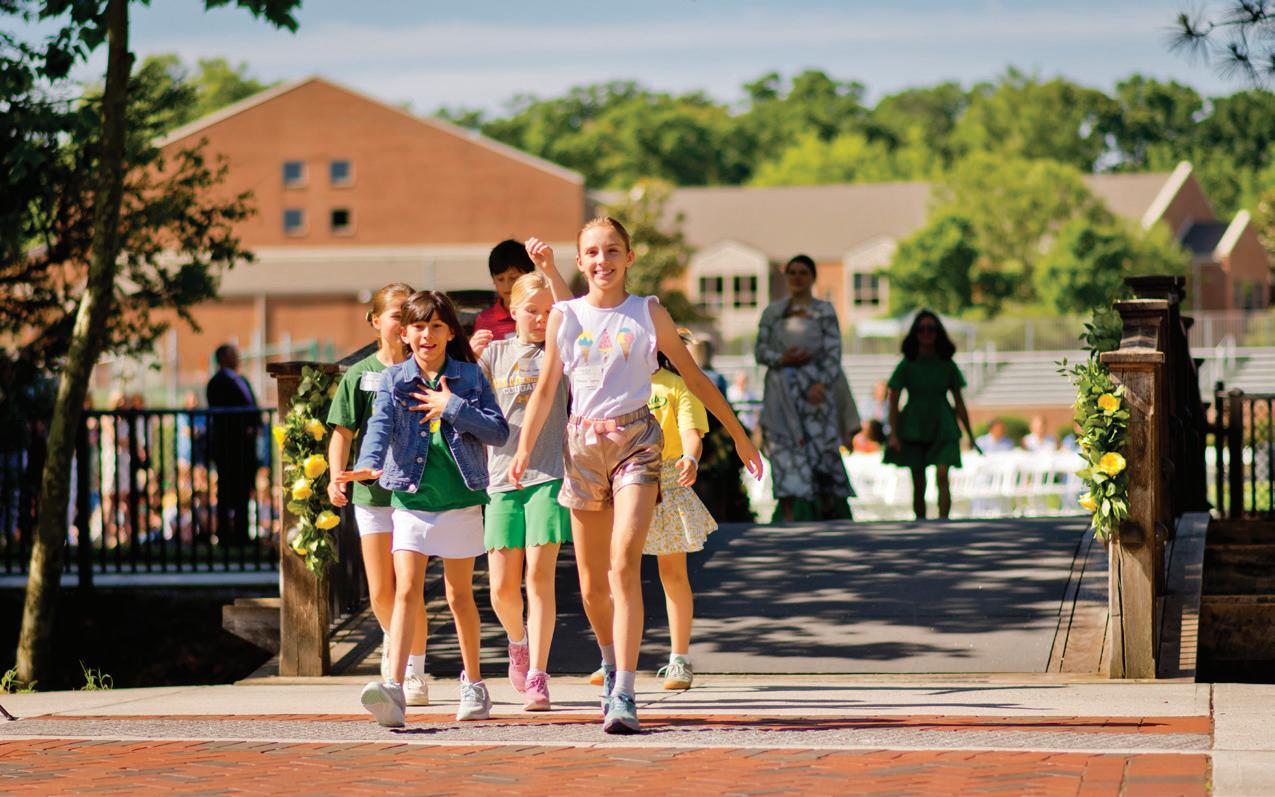
chapter of their academic journey. This rite of passage is steeped in the values that anchor the Collegiate experience.
“This crossing marks the end of one chapter and the beginning of another,” Head of School Jeff Mancabelli told the 4th Graders. “It is a celebration of all that you have learned and the ways you have grown, hopefully with a deeper understanding of our core values: honor, respect, love of learning, excellence, and community.”
In every classroom, hallway, and corner of Collegiate, everyone felt Debbie’s presence. Now, dedicated in her honor, the bridge serves as a symbol of the growth Debbie has helped instill in countless students in all three divisions in which she taught. For Debbie, the students always came first. This is how she led, made decisions, and lived her vocation; she always focused on the needs of the students entrusted to her care. As Lower Schoolers cross the bridge, they do so with Debbie’s steadfast guidance. On the Lower-School side of the Miller Bridge stands a plaque bearing a handprint, symbolizing Debbie’s hand, which was always there to guide each student. “This plaque is a quiet but
powerful reminder of her presence and the legacy she leaves behind,” Mancabelli said. “By touching [the plaque], you are symbolically receiving a final gesture of encouragement from someone who believed deeply in your potential. Let it remind you that you carry a piece of Mrs. Miller’s kindness and joy with you as you step forward into your next adventure.”
In addition to the naming of the bridge, Collegiate announced three meaningful initiatives to further honor Debbie’s legacy. First, thanks to the generosity of the Parents’ Association and Collegiate families, the bridge will undergo thoughtful renovations this summer. Second, the School has renamed the Green and Gold Heart Award, which recognizes faculty and staff members who truly embody the core values of Collegiate, to the Debbie Miller Heart Award. The award celebrates individuals who lead with quiet strength and genuine purpose. And, finally, a new endowment fund has been established in her name through the support of the Parents’ Association, parents, alumni, and Trustees. “This fund will support financial assistance for stu-
dents at Collegiate,” Mancabelli said. “This was a passion for Mrs. Miller, and we are grateful to everyone who supported this endeavor.”
Debbie leaves behind a community that was enriched by her presence. Her spirit will continue to inspire and guide students and teachers alike. This new tradition is yet another symbol of her enduring legacy, and no matter where the journey takes the Class of 2033, the lessons Debbie and the rest of the Lower School faculty instilled in these students will guide them. “As you take your steps today, carry that spirit with you,” Mancabelli said. “Know that you are ready. Know that you are supported. And know that your Lower School family will always be cheering you on, wherever your journey leads.”
HONORING SERVICE AND CELEBRATING THE SCHOOL YEAR
The end of the school year always arrives like a great crescendo — slowly, then all at once, and it always leaves you a little emotional. So much is packed into a year, and, for faculty and staff, the pace is so frantic that it’s often difficult to take a moment to reflect when you’re still in the middle of it all. It’s trite but true: If you don’t stop and look around once in a while, you could miss it. That’s what the end-of-the-year all-school meeting is for: Reflecting on the year, celebrating achievements, and connecting with colleagues.
Within that meeting, which has the atmosphere of a celebration, Head of School Jeff Mancabelli recognized the 17 faculty and staff members that have given 10 years of service to Collegiate and the seven faculty and staff members that have given 20 years of service. Julie Miller and Jackie Johnson were also celebrated for their 30 and 40 years of service, respectably.
Mancabelli also awarded Athletic Coordinator Wilbur Athey with the first Debbie Miller Heart Award, which recognizes faculty and staff members who truly embody the core values of Collegiate.
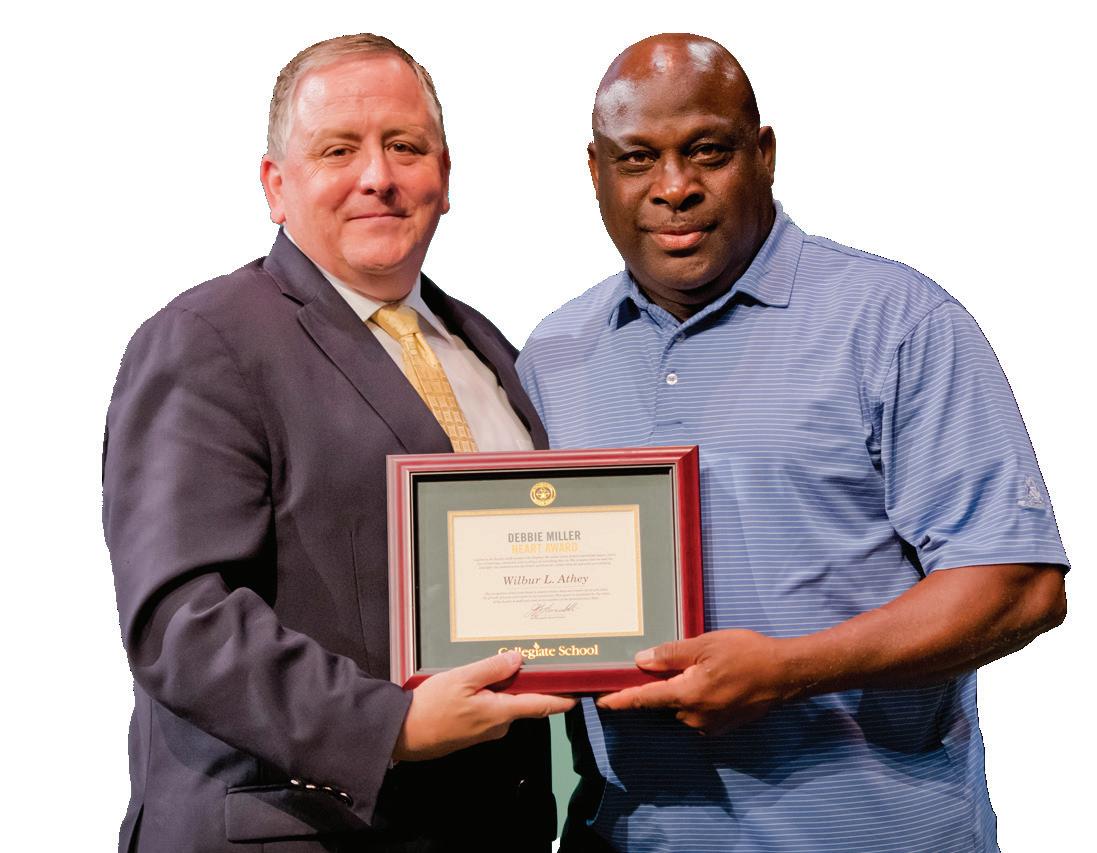
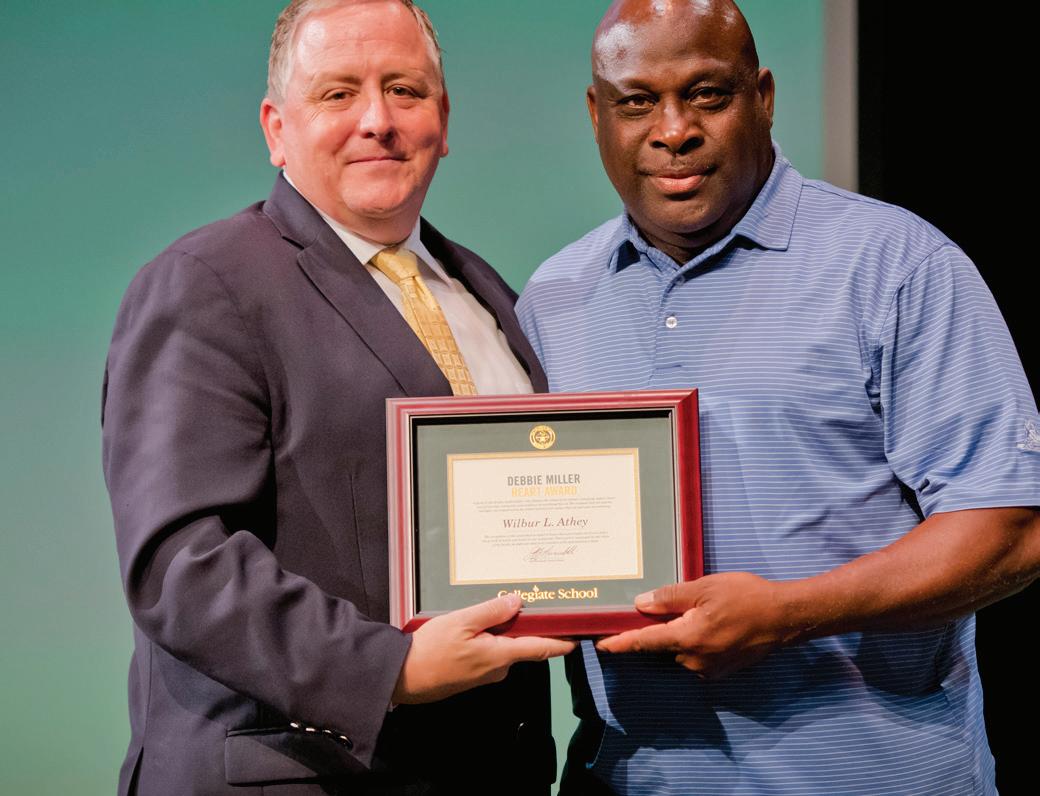

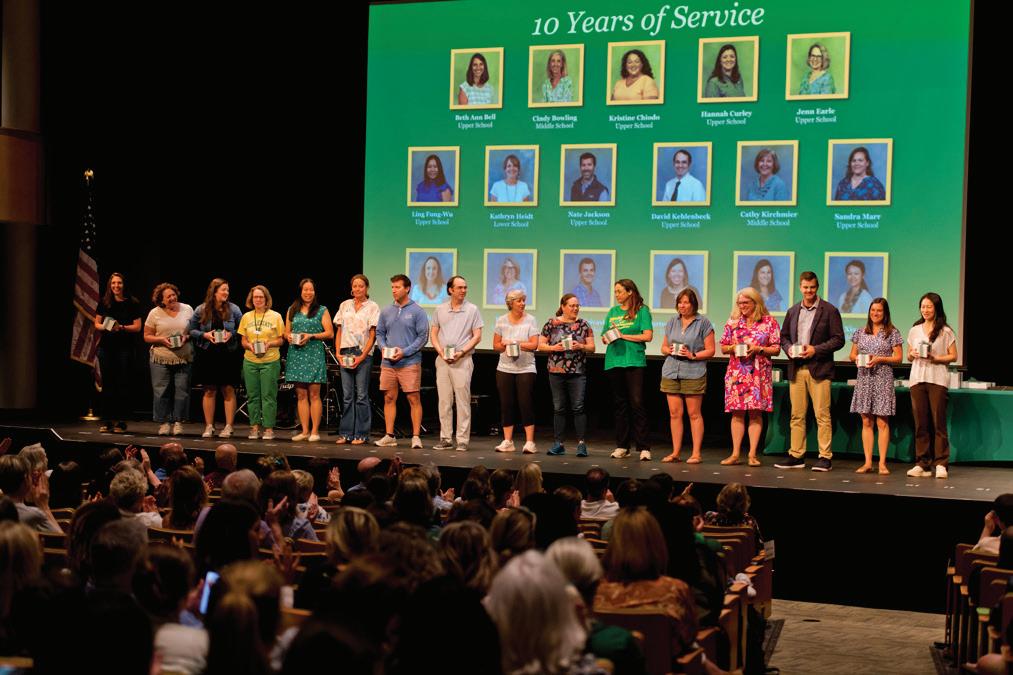
Athletic Coordinator Wilbur Athey awarded the first Debbie Miller Heart Award, which recognizes faculty and staff members who truly embody the core values of Collegiate.
Faculty and staff honored with 20 years of service.
Faculty and staff honored with 10 years of service.
Proportions in Practice
In Tara Connor’s pre-algebra class, Middle School students built a miniature model of a JK classroom using proportions.
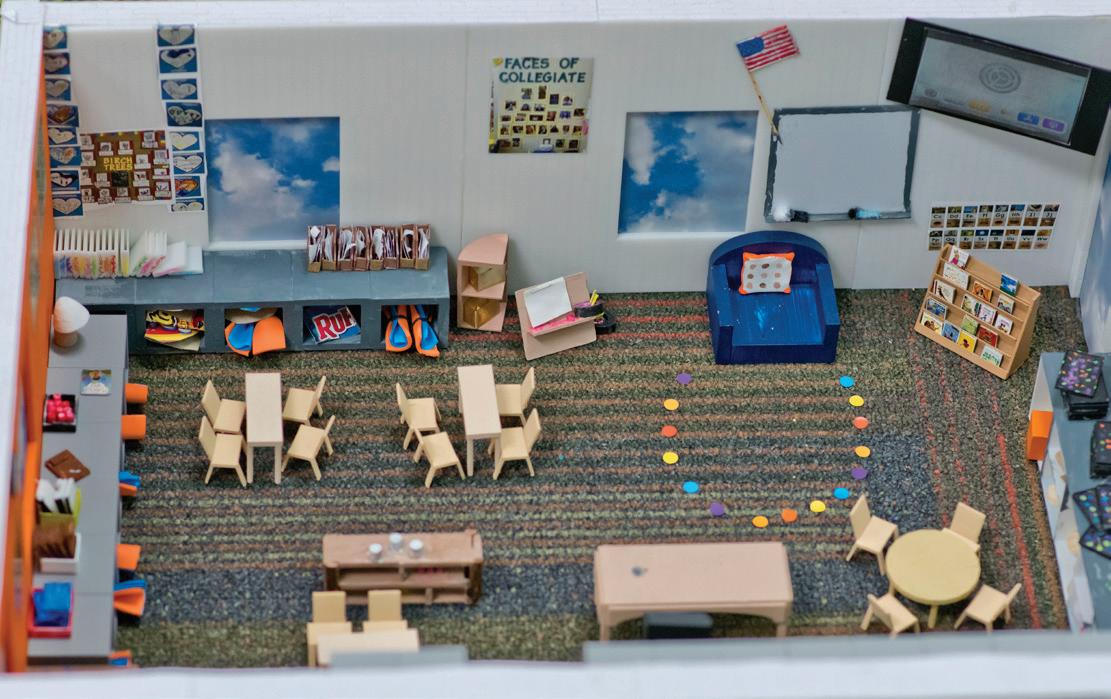
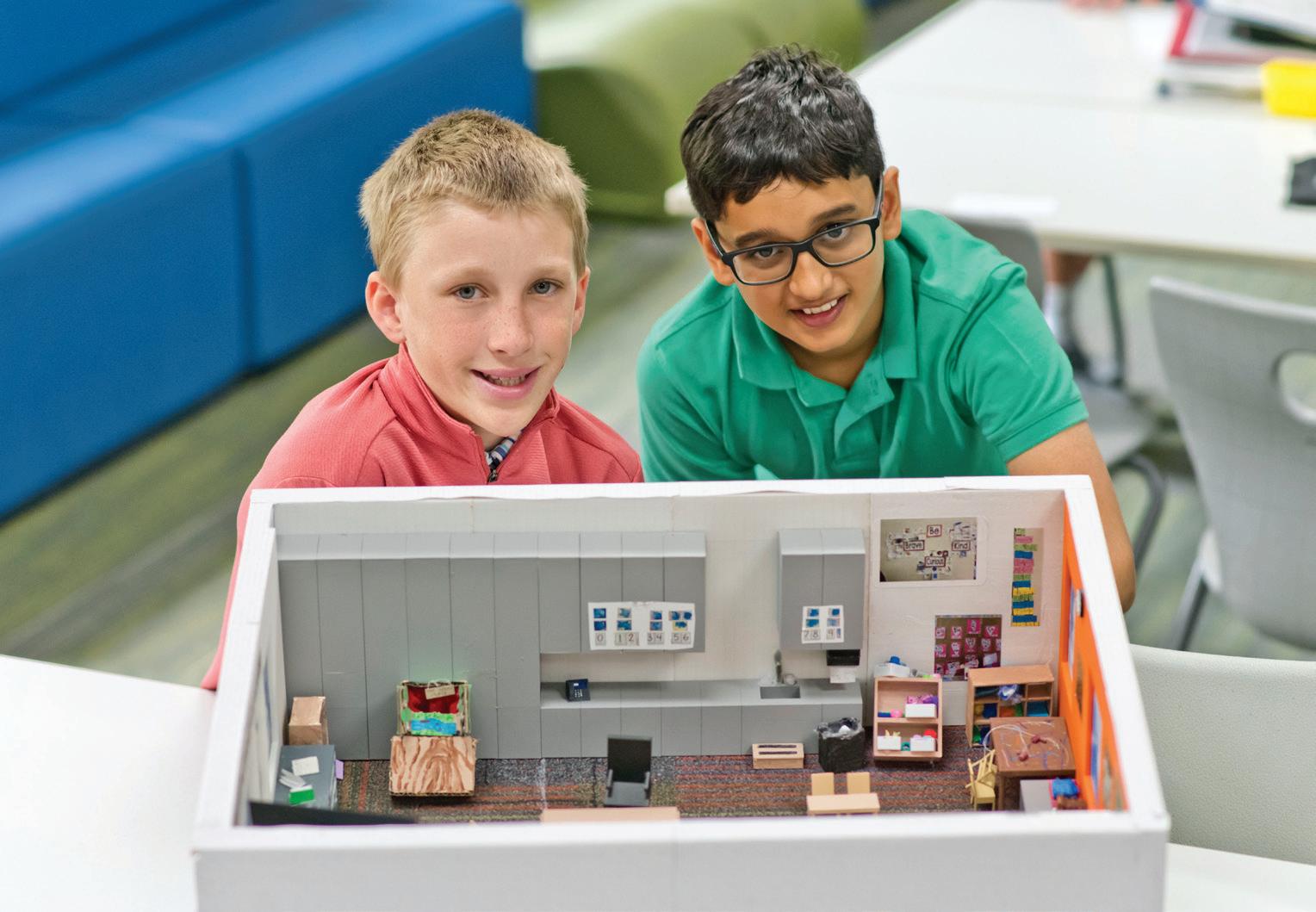
books on it, a TV, desks, the walls of the classroom — and then the Middle Schoolers had to apply their knowledge of proportions to scale the items down to proportionate, doll-house sizes. The cross-division collaboration, Connor says, directly placed Middle Schoolers into a leadership position and created a greater impetus to do their best work.
There is the tired and timeless utterance that pops up in math classes, usually spoken, out of frustration, while staring down a particularly difficult problem: “When will I ever use this in the real world?” A multiplication table rarely has any hint of life in it. Middle School math teacher Tara Connor, with a recent project in which her 6th Grade pre-algebra students made a brilliantly realistic scale model of a JK classroom, serves up an answer to that age-old question. “There are so many times in math class where it feels to students like they’re doing math without any rhyme or reason,” she says. “They’re not able to see the connections and applications between what they’re learning in the classroom and the real world.”
Throughout the year, the students learn ratios and fractions and, with diligent practice, they
become skilled practitioners of proportions on paper. Connor wanted to create a project that transformed what the students knew on paper into something much more tangible and real.
Connor presented her pre-algebra students with a challenge: Work with the Junior Kindergartners to build a miniature model of a JK classroom. It would put all of their skills built over the first semester to practice. “My students had all of these skills, they had solved hundreds of proportions, but it didn’t truly feel real to them yet,” Connor explains. “This project was a way to present authentic, organic math challenges in a real-world context where the math they had already learned could come up naturally.”
Middle Schoolers collaborated with Junior Kindergartners to measure aspects of their classroom — bookshelves and the
Once students took their measurements and scaled their classroom objects, the Middle Schoolers sought out Instructional Technology Coach Rachael Rachau and librarian Catherine Clements, who oversees the Middle School library’s Maker Space, to help build out their models. A microcosm of logistics and innovation, it was a process that broadened students’ understanding of what is possible in a math class. “We had to take what we knew in 2D — the surface area and perimeter of an object — and build out something 3D,” says Aaryan Amin ’31, who built the classroom’s paper towel dispenser during the project. He brought out his iPad to display his work, explaining the process of how he took measurements of objects and shrunk them down to size. “You really had to think about what each number meant and how those numbers could be created into real-world objects.”
The expressive result is a technically accurate and creatively astounding model of a Junior Kindergarten classroom. The details have a specificity indicative of the craftsmanship of professional architects. Everything is to scale and, even more impressive, everything is functional. The paper towel dispenser hanging over the classroom sink actually has a roll of paper you can unfurl. The bookshelf is stacked with books, the covers of which are accurate to the time the Middle Schoolers visited the JK classroom (the students assigned to scale those books painstakingly resized and cut out the illustrations of every book cover, then glued them to tiny bits of cardboard). In the process, students saw how math moved with life. “There’s a difference between just memorizing all your numbers and formulas and actually having to apply those formulas to something you need to build,” Aaryan says. “And so all of those lessons we thought we mastered earlier in the year were really put to the test. It was challenging, but seeing what was possible with math was really rewarding.”
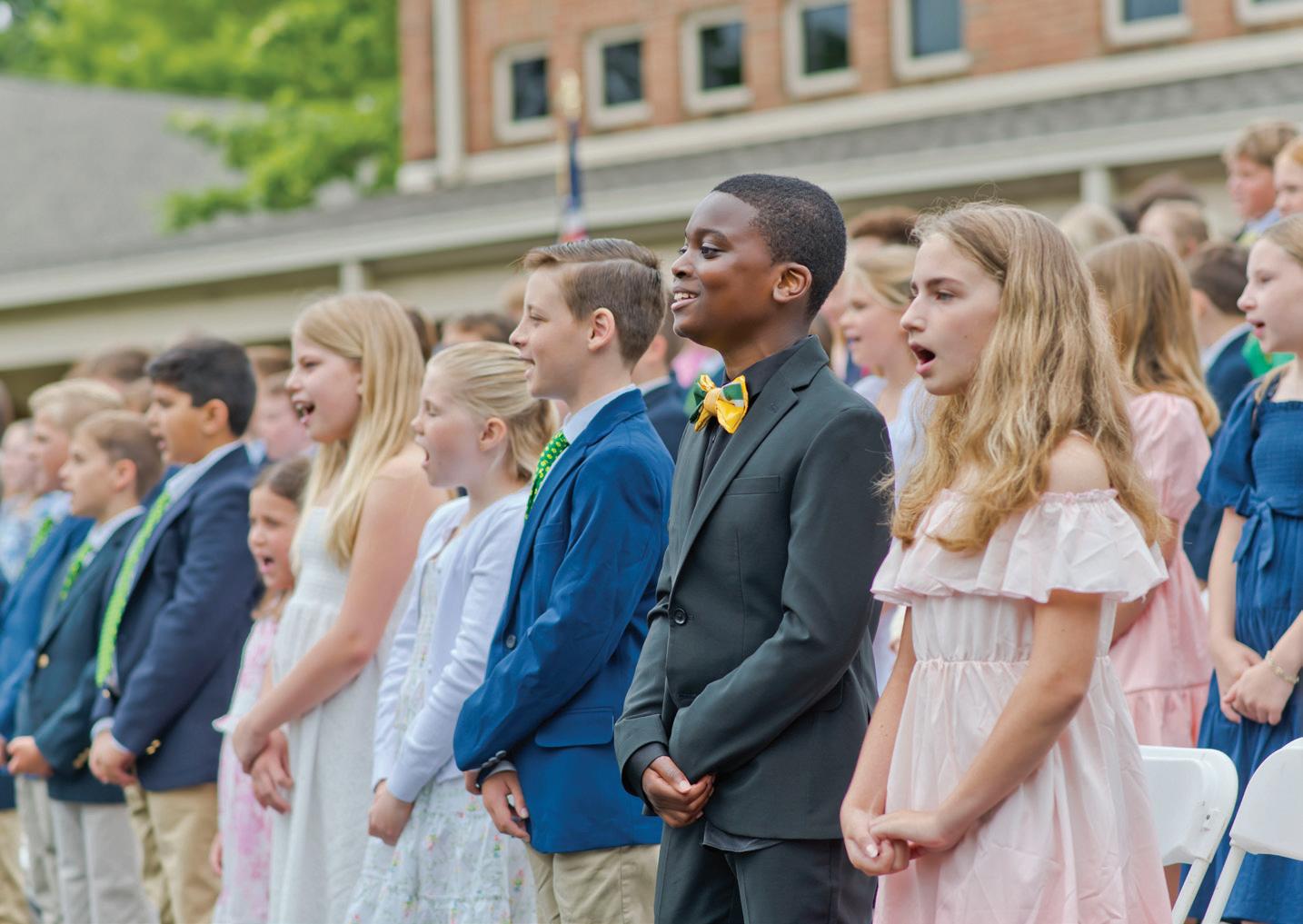
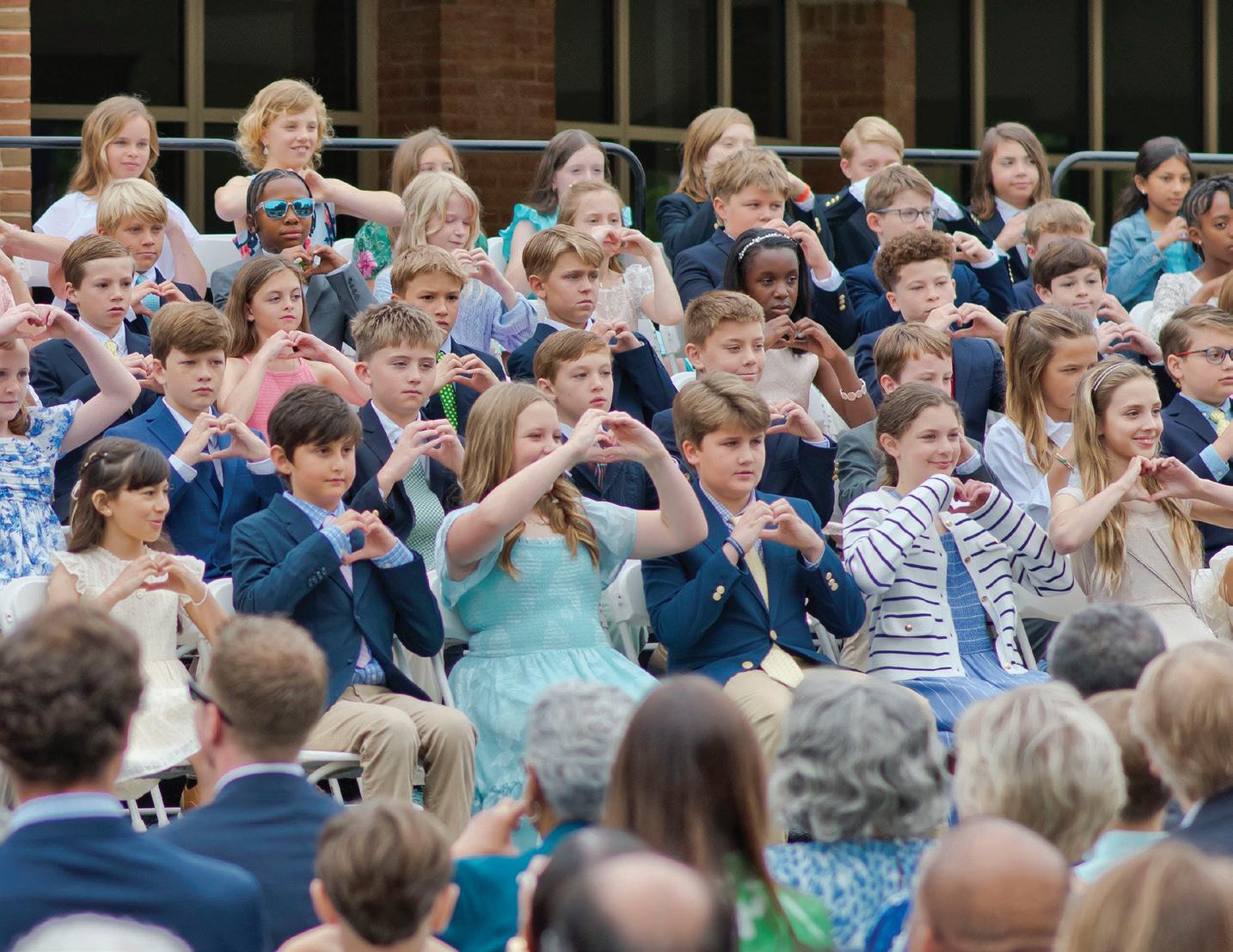
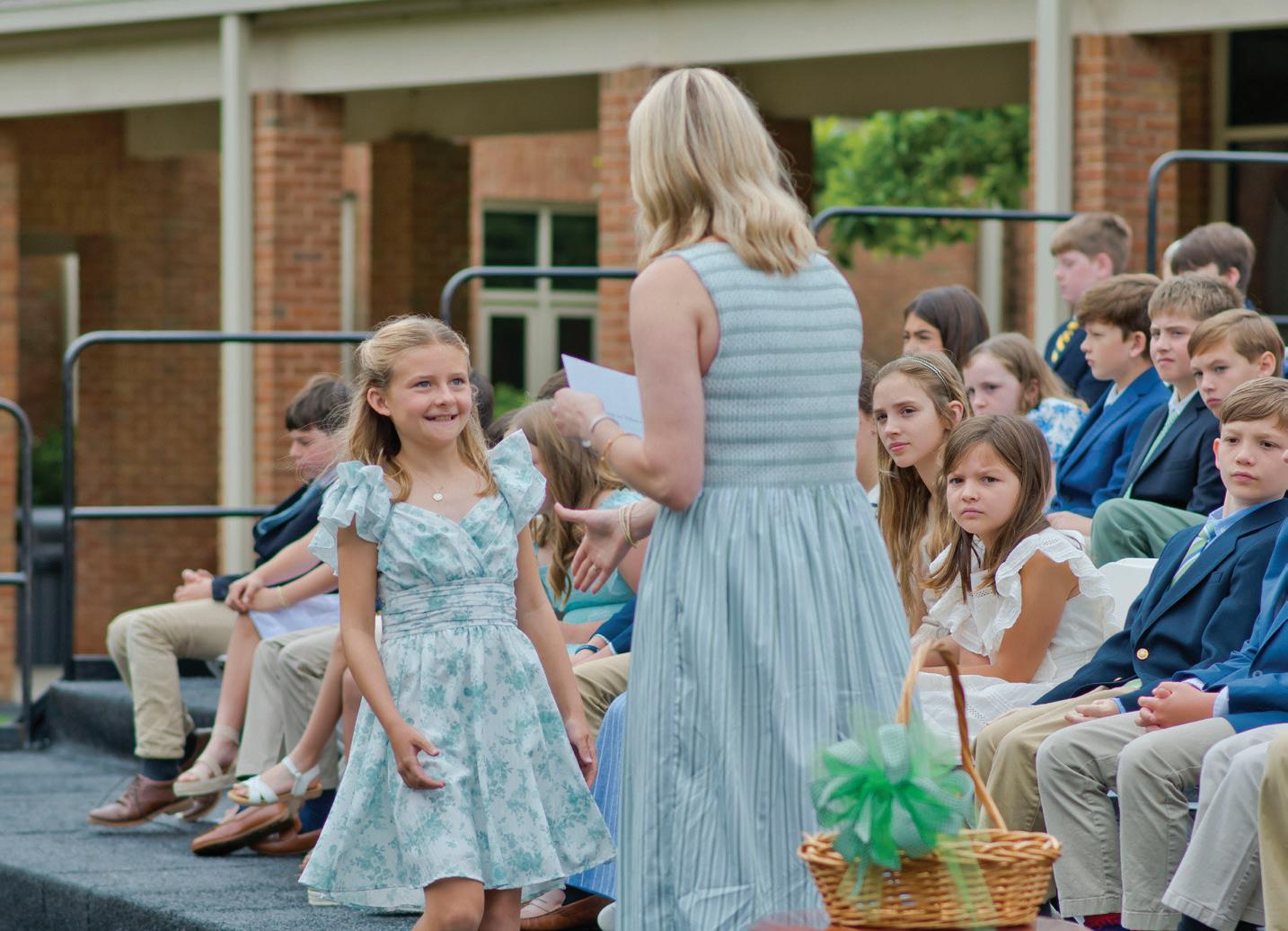
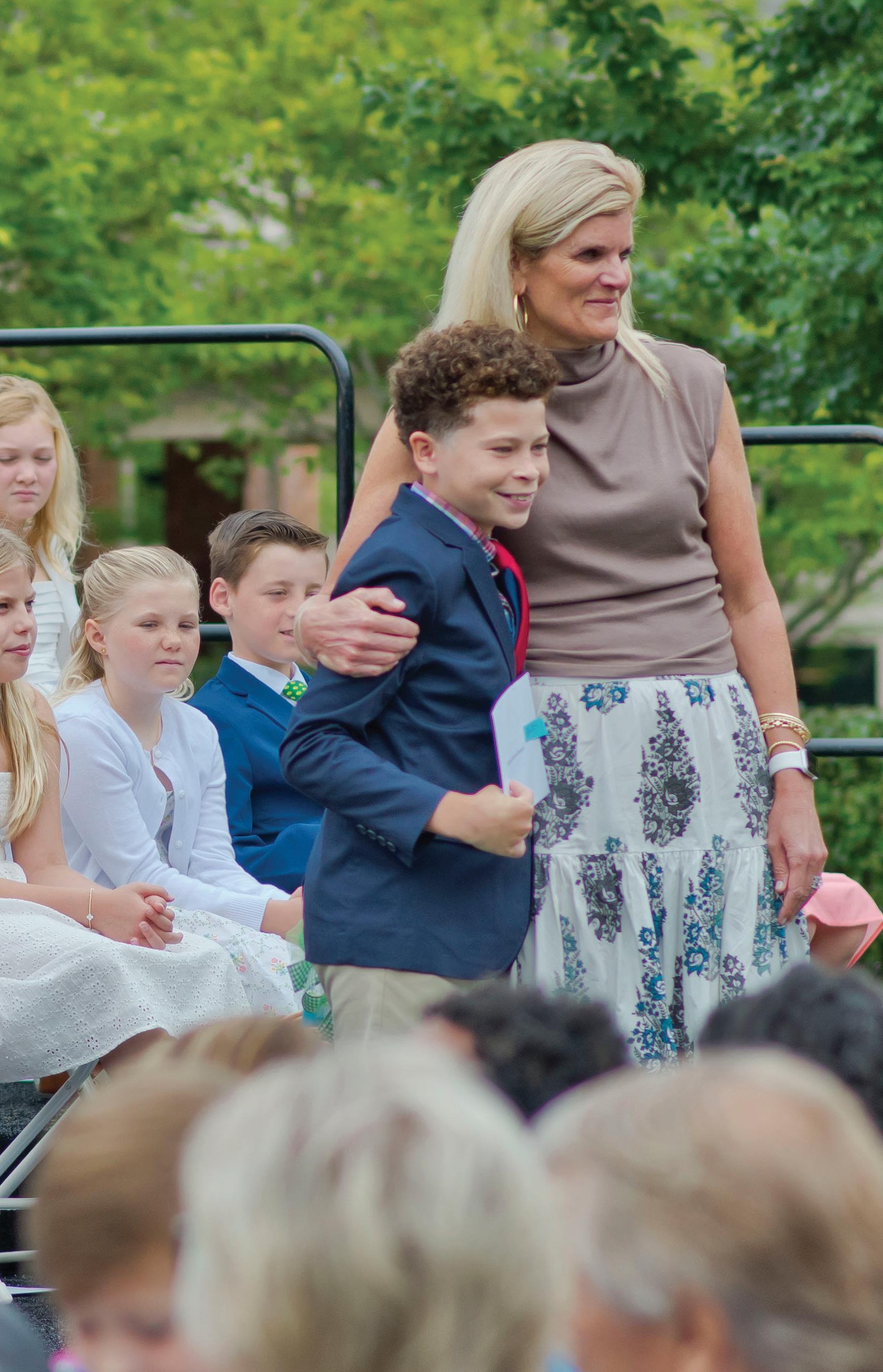
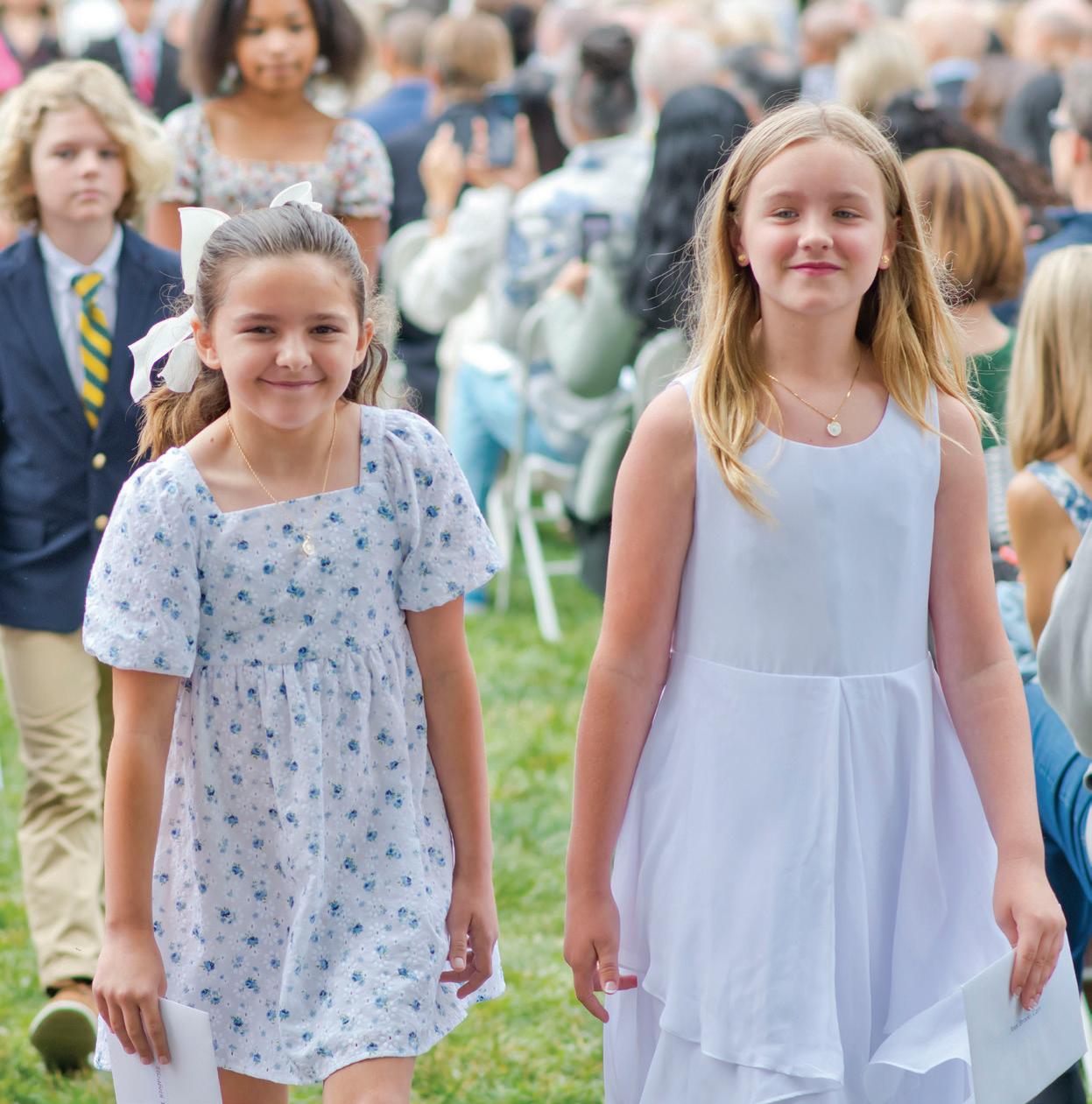


COLLEGIATE SCHOOL’S CLASS OF 2033 MOVES UP
Collegiate’s 4th Graders completed their Moving Up ceremony in May, officially marking their transition to the Middle School.
ON A COOL DAY IN LATE MAY, the 4th Graders walked into the Moving Up Ceremony, held in the Lower School courtyard. One week prior, they ceremoniously crossed the Miller Bridge to explore the Middle School, honoring the late Debbie Miller and the strong educational foundation she helped build for the class. Now, it was their time to move up. Once seated, Cheryl Gahagan, Assistant Head of the Lower School, gave a warm welcome to parents and family.
During their time in the Lower School, the Class of 2033 demonstrated curiosity, leadership, and responsible citizenship. “These students have worked hard throughout their years in Lower School to become the leaders you see in front of you today,” she said.
As the students celebrated their momentous milestone in their Collegiate education, they took the time to honor Debbie, their late Lower School Head, for all that she gave them — the joy, the lessons in kindness, and the passion for learning. During Gahagan’s speech, Lower Schoolers expressed their gratitude by making their hands into a heart shape, indicative of the indefatigable love Debbie showed to the students in her care.
Head of School Jeff Mancabelli took the podium next, delivering remarks to a class
of students he came to know well in his first year as Head of School, for he spent most of his mornings on that side of campus, which he calls the most joyful place on earth. Mancabelli celebrated the 4th Graders’ transition to Middle School by reflecting on their growth, using the metaphor of trees, like the names of JK classes, to show how teachers and families have nurtured them.
“Throughout the course of the last six years, your teachers have helped you grow, and your families have surrounded you with love and support,” he said. “You have learned, you have made mistakes, and you have blossomed. You have grown in ways you can see and in ways you may not have noticed. But today marks the moment when you, like those young trees that were planted so long ago, prepare to leave the Lower School garden.”
Similar to a tree, the students will continue to grow. With growth comes freedom, and with freedom comes responsibility. As the students continue their education in the Middle School, Mancabelli reminded them to lean into the values they have established here in the Lower School to help guide them in their decisions. “I hope you carry and continue to grow the five core values of Collegiate,” he said. “As you take this step forward to Middle School,
remember these words: Growth does not happen overnight. It takes time and it takes patience. Each of you will grow and experience Middle School at a different pace. And what we ask of you is to remember to always be kind to one another, to offer advice and help to your friends, and to always be loyal to the friends that you have, as they will be with you as you journey through Middle School. We are so proud of each of you.”
Six students, one chosen from each class, followed Mancabelli’s comments with remarks of their own, highlighting special moments they experienced during their time in the Lower School. Memories included reflections on the challenges of COVID-19, the excitement of Homecoming Pep Rally, the States Fair parade, and the special relationships students have with their teachers.
“I am grateful for all that we have at Collegiate,” one of the six students remarked. “I am grateful for the teachers, the things I have learned, and how we care for each other.”
It’s an attitude that will surely continue as they move up and succeed in the Middle School.
COLLEGIATE SCHOOL’S CLASS OF 2029 COMPLETES FINAL EXERCISES
Fully ready for the Upper School, Collegiate’s 8th Graders gathered for their Final Exercises.
ADAPTABILITY IS A QUALITY frequently exercised by Middle Schoolers. The Middle School years are ones of change, growth, agency, and responsibility. Students are given the freedom to explore their own interests while remaining deeply connected to teaching advisors that help guide them throughout their learning journeys. Within this balance, students learn to adapt to change and growth.
It’s a perfect encapsulation of the resiliency and enthusiasm exhibited by the Class of 2029, then, that, due to poor weather conditions, the Middle School Final Exercises were moved to the Seal Athletic Center. The students handled the move swiftly, smiling through it all. As they should: Rain or shine, this was a day of celebration.
Head of School Jeff Mancabelli welcomed attendees to the ceremony and congratulated the rising 9th Graders — each of whom, he said, grew as students and leaders during their time in the Middle School. “They have overcome challenges, and they have become young people who know what it is to succeed and to continue on their journey,” he began.
In early spring, around the same time Mancabelli was beginning to prepare his remarks for the Final Exercises, a colleague brought a piece of paper to his office that she found outside Flippen Hall. It was a note, written by an 8th Grader, addressed to their 5th Grade buddy. It read: “I hope you finish your 5th Grade perfectly. You have a while left in Middle School. Don’t take it for granted. I hope you have some great Middle School years ahead. If you ever need anything, don’t be afraid to reach out. I’ll always be here to help.”
It’s a simple note, but it carries great wisdom — one indicative of the character and values lived out by Middle School students.
“These are not just kind words for me,” Mancabelli explained “I heard them as a call to community. They are a reminder that, being a part of Collegiate, we look out for one another. It is more about the collective ‘We’ than the singular ‘Me.’ At Collegiate, we talk often about our core values — honor, respect, community, excellence, and love of learning. For us in
Middle School, it’s not only about algebra and writing essays — although, faculty, they are very important — it is about understanding and learning what it’s like to be a friend, how to notice someone else’s needs, and how to offer to them and say you’re not alone.”
The lessons of character built and refined in the Middle School will suit them well as they advance to the Upper School. “I hope you carry with you the same spirit this note reflects,” Mancabelli said. “Be the one who offers help to another student without being asked. Be the one who says you can count on me. Because, without this, our words on paper of our core values are simply that — they’re just words on paper. It is through your actions and your passion for your friends and this community that makes the Collegiate core values come alive. This is what makes Collegiate feel like home.”
Head of Middle School Jeff Dunnington also congratulated the Class of 2029 on their achievements and celebrated the triumphs the students have earned during their time in the Middle School. He spoke about the abundance of new opportunities they embraced with enthusiasm as they entered the Middle School.
“These students quickly adjusted to the new routines — changing classes more frequently, and doing so without walking in lines, to a new, larger set of teachers, to lunch in McFall Hall, to recess on Grover Jones, Time Outs on the front lawn, email, Schoology activities, Pageant, Brunch, Lessons and Carols… I could go on,” he said.
Through all that has been given to them, they have modeled into brilliant stories of success. “This is a highly accomplished and decorated collection of students, and, despite their tremendous achievements, what I’ll remember about this particular group is that they are leaders,” he said. “They took to the stage during assemblies to share ways to improve our Middle School community. They organized a wiffle ball game with 5th Graders before the school day started.
I’ll remember this group as helpers who stop to pick up younger students’ dropped books. They clean up a messy table left behind in the cafeteria. I’ll re -
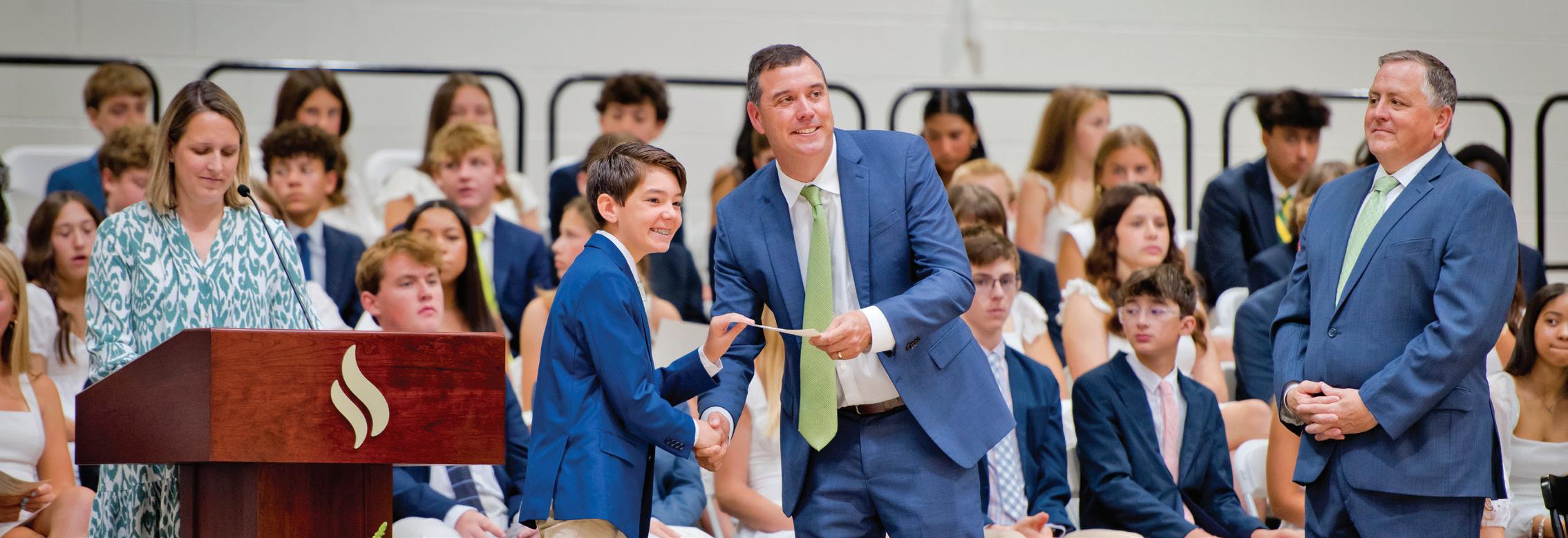
member this group as friends looking to pick each other up in low moments and to celebrate each other in the high ones. To the Class of 2029, you’ve left a positive footprint in the Middle School and have demonstrated that you are ready to move on to the Upper School.”
Following Dunnington’s remarks, the two Middle School Co-Chairs, Ted Geyer ’29 and Amelia Haske ’29, addressed their classmates, highlighting themes of the past and future.
Ted reflected on the past and his growth throughout his time at Collegiate, which has been fostered by the relationships he’s had with his peers and teachers. Through the ups and downs of life as a Middle School student, the people at Collegiate were constantly there to lift him up. “I quickly learned how inclusive our class is,” said Ted, who came to Collegiate in 5th Grade. “One of the many people who got me through it all was my 6th Grade advisor and English teacher, Mrs. Booth. It didn’t matter what I was going through, either way she was there for me.”
Amelia took the podium next, talking about the future and the educational adventures in store for each of her classmates.
“Looking at all of you, I not only see what we are, but I feel what we’ve been — from Time Out hula-hoop contests to jumping off rafts during Envision Richmond,” she told her classmates. “We have so much promise, but there’s even more ahead of us.”
In this next chapter, there will likely be challenges each student in the Class of 2029 faces, but they can draw from the lessons they have already learned in order to overcome whatever may lie ahead. “We’re always going to face adversity — that’s just how life goes. Learning to adapt to that is something we’ll always have to do,” she said. “But we are not in it alone. We must be supportive and lift each other up. What matters is that we’re here for each other, and as we take these steps forward into these newer stages of our lives, I want us all to go into this hand in hand.”
FRY CUP
Julia Emerson Hall
HUGH H. ADDY AWARD
Jack Armstrong Moody
SUE H. JETT AWARD
Gwendolyn Ryan Stringer
DIRECTOR’S AWARD
Corin Davidson Cutchins Boyd
CITIZENSHIP AWARD
Spencer Harrison Chang and Margaret Lillian Galanti
ART AWARD
Brendan Pierce Moran and Krishna Vashisht Sharma
CHORAL AWARD
Spencer Harrison Chang
DRAMA AWARD
Julia Emerson Hall
DANCE AWARD
Abbie Kathryn Kanter
ADELINE COWLES COX MUSIC AWARD
Piano: Corin Boyd
Strings: Genevieve Xoe Anisa Williams
Guitar: Henry Charles Samuels
Band: Windsor Elizabeth Ross
SCIENCE AWARD
Spencer Harrison Chang and Nic Wong Christensen
LATIN AWARD
Jack Armstrong Moody and Evelyn Marie Goodwin
FRENCH AWARD
Jason Andrew Kerr and Blair Kathryn Saulsbury
SPANISH AWARD
Roshan Martin Raval and Emily Sophia Waldrup
CHINESE AWARD
Kellan Hao-Lin Wong and Sutton Elizabeth Gow
FERNEYHOUGH ENGLISH AWARD
Emilie Theresa Siminiceanu
JOHN P. COATES ENGLISH AWARD
Jack Armstrong Moody
PHYSICAL EDUCATION AWARD
Miles Cannon Quindoza and Carter Somers Hofheimer
STEM AWARD
Andrew Scott Cryer and Aliyah Grace Taylor
HISTORY AWARD
Carter Blake Dabney and Julia Emerson Hall
MATH AWARD
Kellan Hao-Lin Wong and Emily Sophia Waldrup
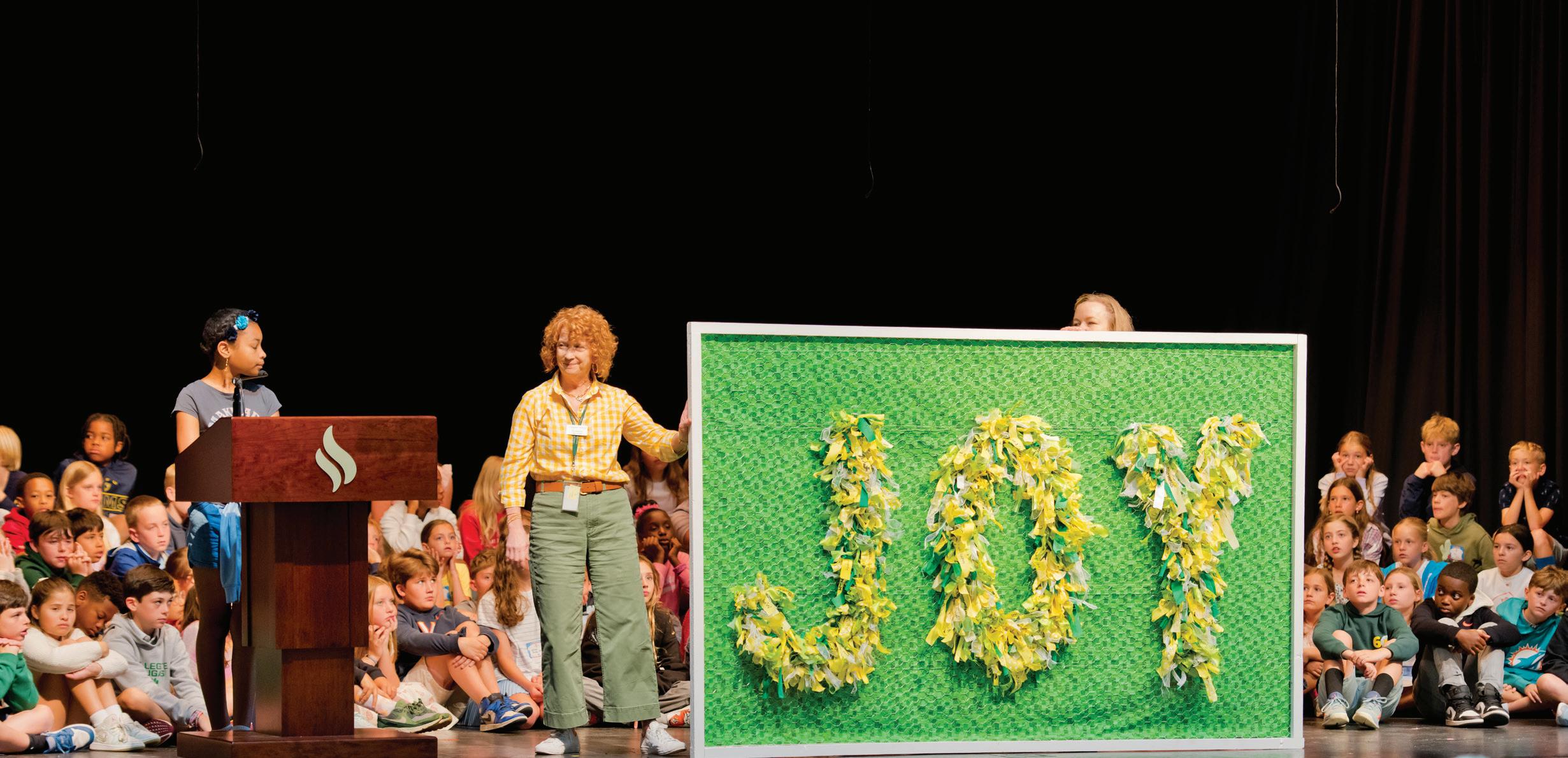
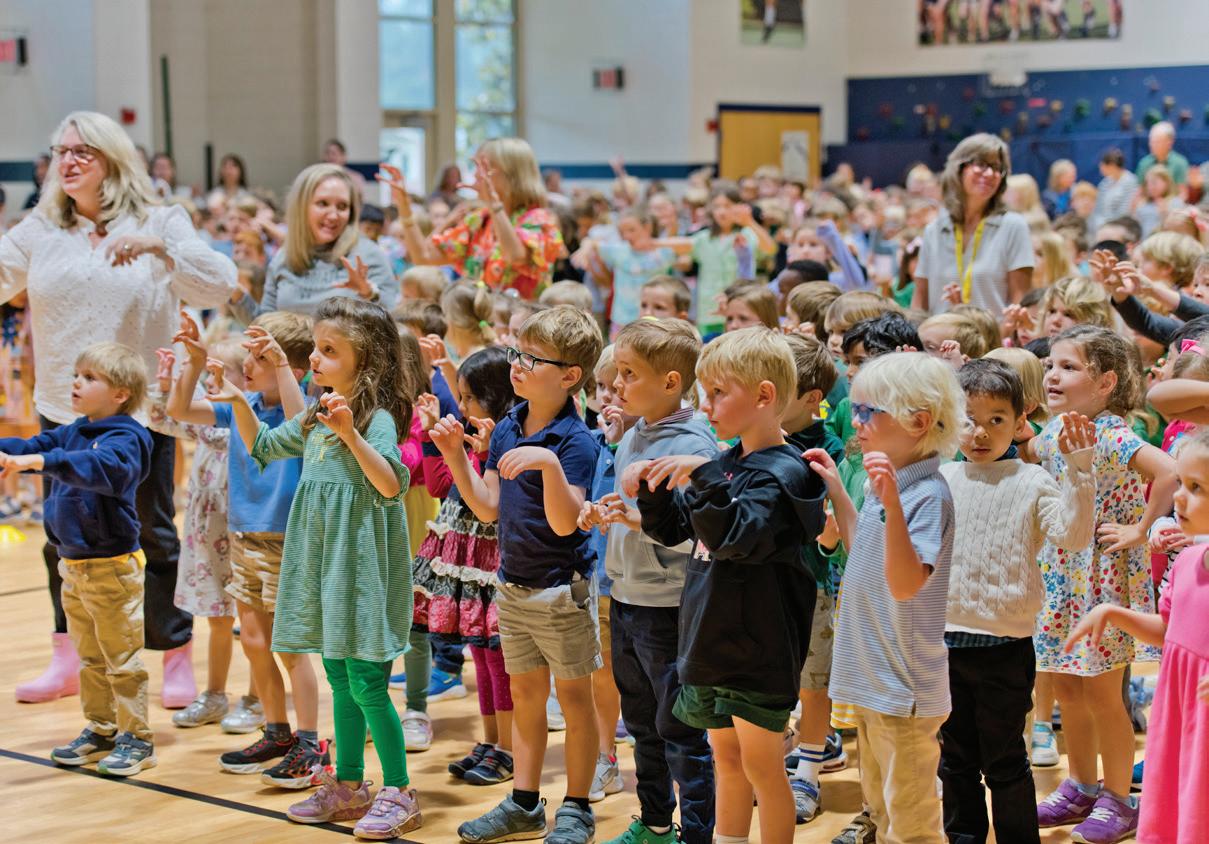
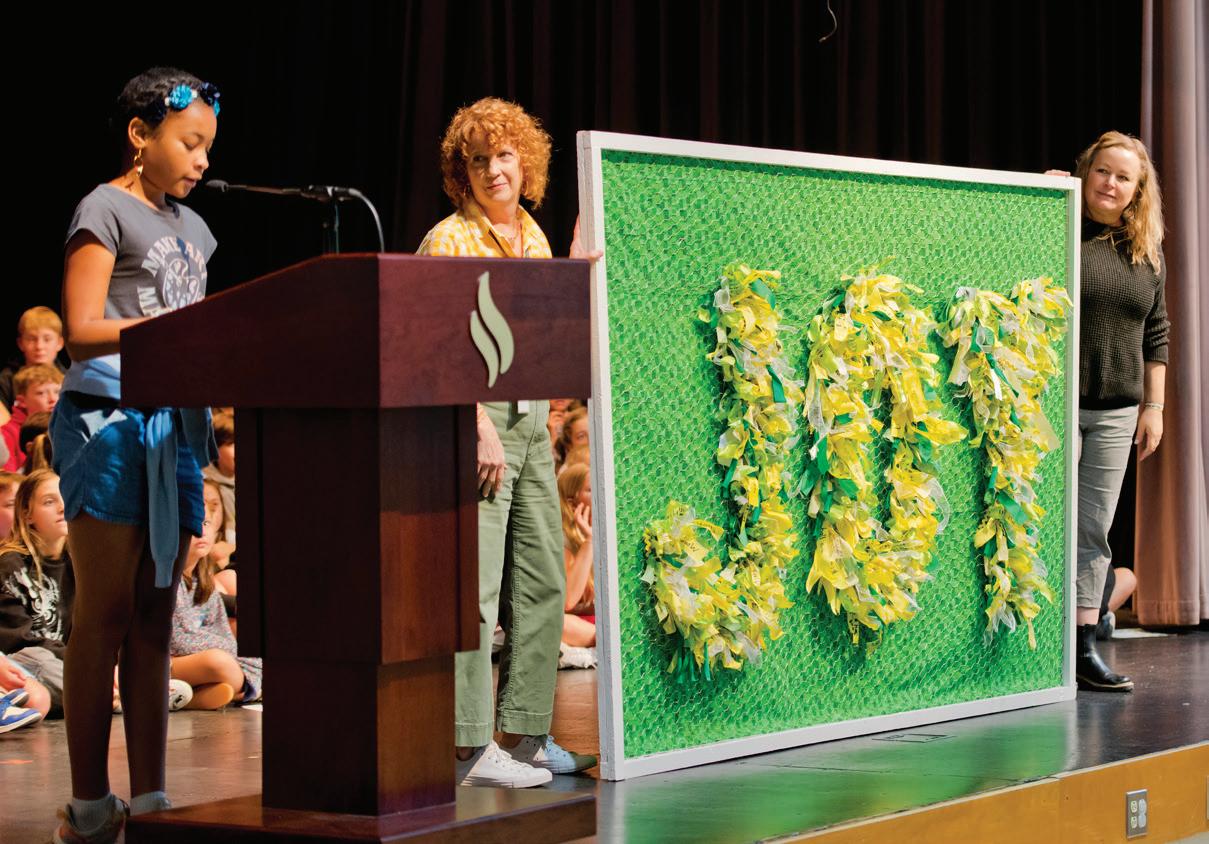
SPEAKING WITH JOY
It’s often said the Lower School is the happiest place on earth. It’s the truth, and Debbie Miller was at the heart of that joy. Joy is not just a fleeting emotion; it is a way of being, a way of giving, and a way of leaving a lasting imprint on the lives of others. If ever there was someone who embodied joy in its purest form, it was Debbie. For nearly four decades at Collegiate School, Debbie wove joy into the very fabric of the community, shaping the experiences of students, teachers, and families alike with her warmth, kindness, and unwavering spirit.
Honoring Debbie’s practice of joy, Lower School art teachers Lisa Anderson and Heather Bruneau organized a school-wide art project prompting the community to write about what brings them joy. Throughout the spring, Cougars wrote about what makes them smile, and Anderson and Bruneau arranged these words in an expressive, happy collage, displaying the result at the final Lower School gathering of the year.
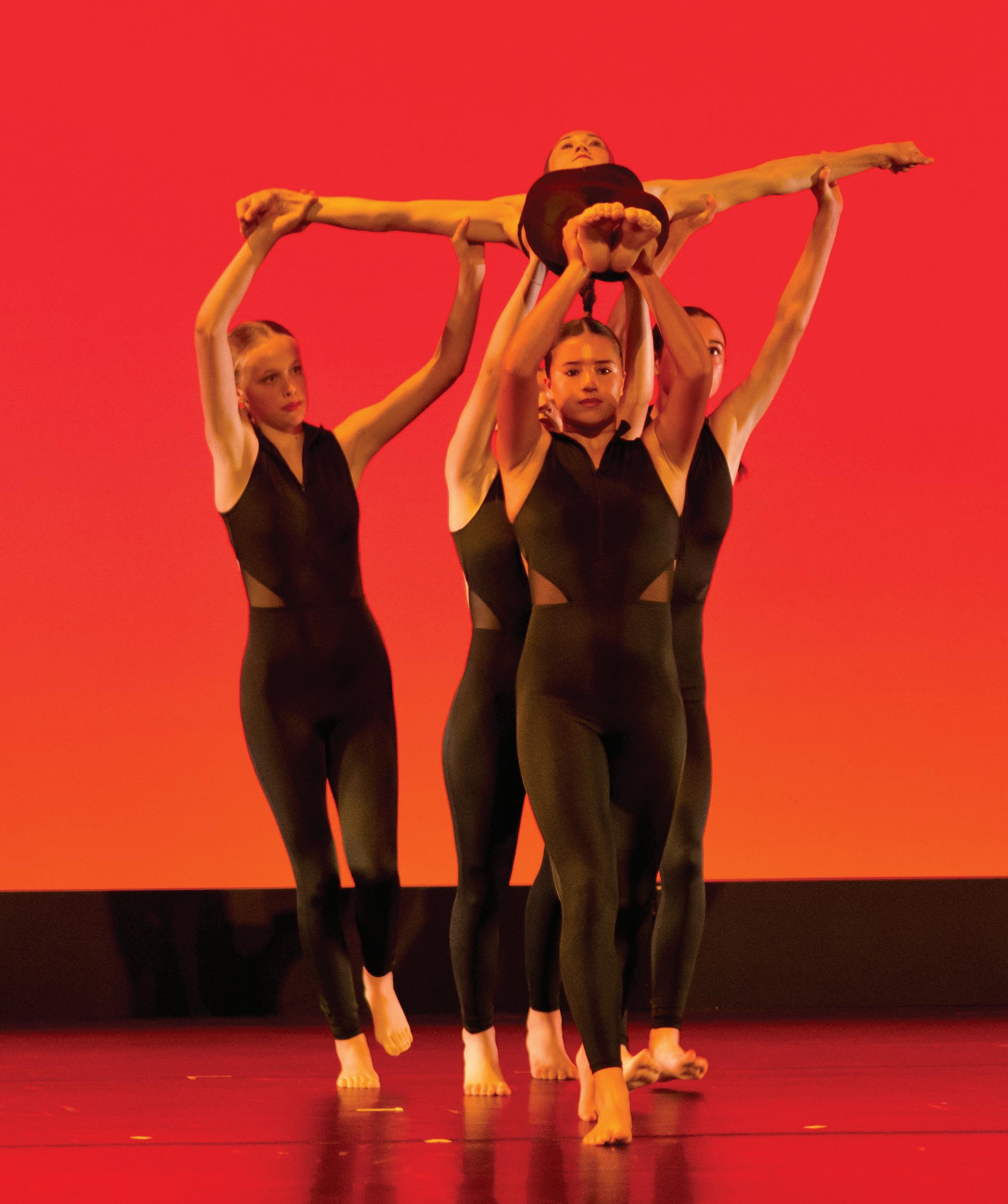
Developmental Pieces
The Upper School Art Walk is a culminating show, and it has allowed Adi Brotherton ’25 to showcase her work as an artist and her growth as a student.
ADI BROTHERTON ’25 practices an art of abundance. Her oeuvre is like that of a wild garden, a multifaceted display of beauty. Bustling and wonderfully busy, everything — from photography to ceramics to crochet — blooms. There are no formal constraints in her work — just an expressive groove, intentionally liberating her to move through various modes of expression.
This freedom isn’t wielded wantonly, though. Although she frequently moves through mediums, there is intention and precision in her art. “My whole thing is that I’ve always wondered what’s going on in someone else’s brain. What’s going on in my brain, your brain, everyone’s brain,” Adi says. “What makes you, you? And so in my art I’m trying to answer that question, at least personally, and show my own self through my art.”
Adi’s freedom to explore her own internal world began with learning the fundamentals, and throughout her education as an artist, she’s studied enough to develop a strong foundation and refine her taste. With speculation and passion she moved through expressive enthusiasms with creative writing, photography, and ceramics. Her exhibit in the Upper School’s Art Walk, held in April, is a demonstration of her range, her multiplicity of styles that she likes to play with.
The Art Walk, which transforms the School’s halls into a vibrant gallery, is a culminating showcase for the artists. It offers a chance for students to reflect on their body of work and exhibit the depth of their talent. “Many students have admired the Honors Art installations in the Art Walk since their time in Lower or Middle School,” says Upper School art teacher Pam Sutherland. “Having their own space to showcase their artistic growth and express their bold, unique perspective, especially as some students near graduation, is a powerful opportunity. It challenges them to blend creativity, self-reflection, and critical thinking.”
Thinking about what to include in her exhibit at the Art Walk, Adi knew she wanted to show her scope and progression as an artist. She reflected on her various styles. She took creative writing in 5th Grade and, ever since, the medium has remained her favorite form of artistic expression. She fell in love with photography after
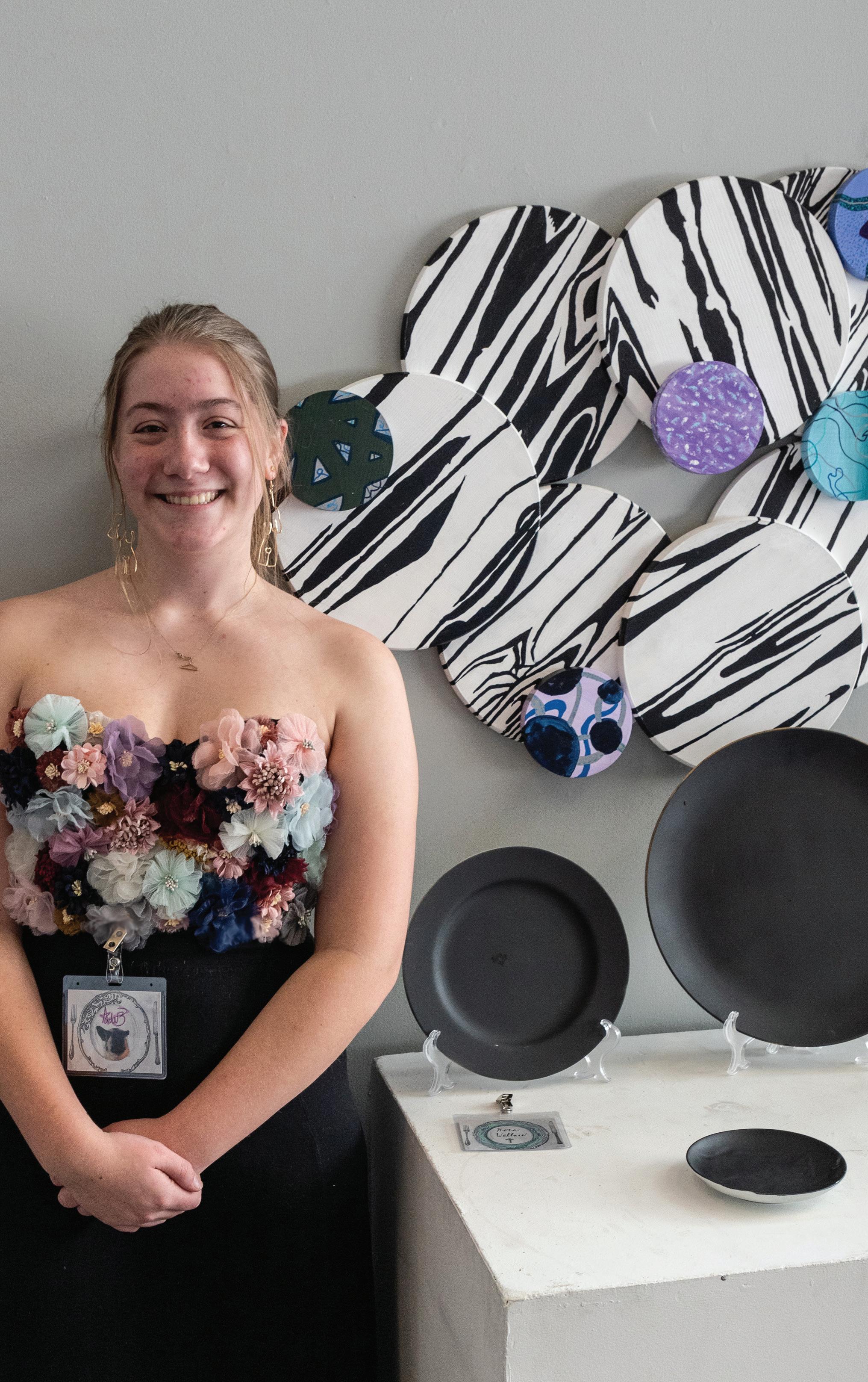
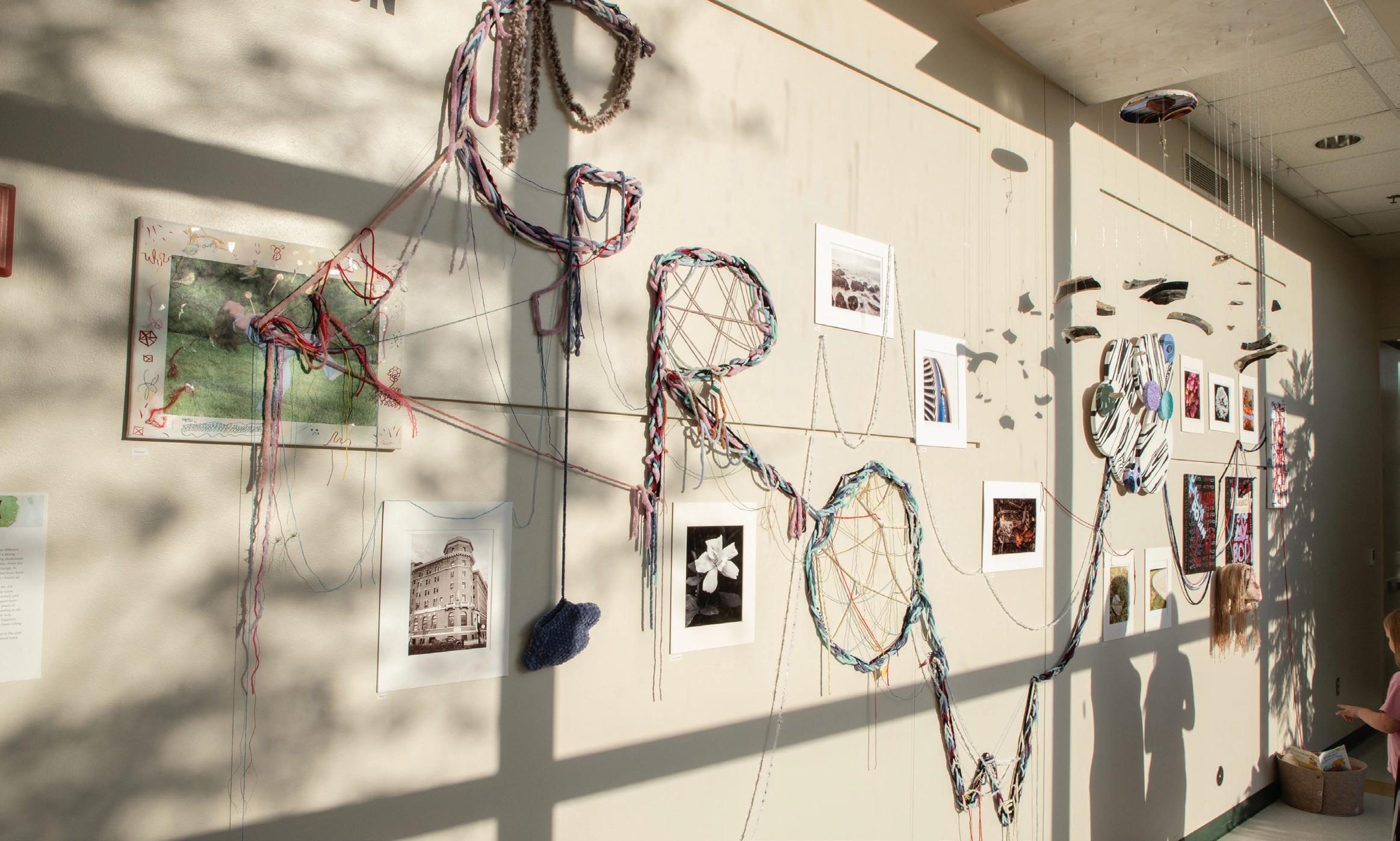
taking a few of Upper School photography teacher Taylor Dabney’s classes, which attuned her sensibility and gave her a new attention to detail that she realized art offered. Looking to expand her creativity, she enrolled in Mary Arzt’s ceramics class. Her Senior year, wanting to challenge herself again, she decided to enroll in Sutherland’s Honors Art course. All of her previous courses served as a great primer for the skills she would hone her Senior year.
“For me, art has always been an escape, so I think it’s fantastic that Collegiate has all of these different opportunities to explore your own artistic interests,” Adi says. “In the same studio where you can practice painting and drawing you can also practice sculpture and media printing. I can enter a course with a bunch of background knowledge and skill or none at all and just explore. That’s unique, and it’s really helped me grow as an artist.”
The Art Walk challenged Adi to take stock in her work and
gave her the chance to view her growth as an artist from a new perspective. In the process of curation, she noticed just how much she’s learned. She’s able to waltz around in any style with individual flair. And that growth and freedom, for Adi, is what she decided to focus on as her unifying theme in her exhibit at the Art Walk.
In anticipation of the show, she laid out all of her pieces, considering them carefully. What connected all of them? Each seemed a piece of herself and a reflection of her adaptability and growth. That was it, she thought: these pieces are indicative of growth. “I put them out, from my first piece to my last piece, and I suddenly realized how much I have grown and changed as an artist during my time at Collegiate,” Adi explains. “Growth has been such a central part of my life. It’s such a big part of everyone’s life, really, and I think that art has allowed me to develop as both a student and as a person.”
Arranged strategically, her show blooms with growth. The pieces display her breadth of style and the techniques developed while studying at Collegiate. Her work holds polarities of genre together. On one wall of the North Science building are ceramic pieces and photography, and, stretched across all of them, stitching them together, is the word ‘Growth,’ spelled out in crochet. Look at her work and you see an encapsulation of what Collegiate’s art program can offer — both in breadth and depth. “Art has been so important to how I see myself and how I engage with the world,” Adi says. “I’m really happy with how my exhibit turned out. I think I did a good job of explaining myself, my passions, and my development.”
Adi pictured with one of her pieces, which was later included in the Art Walk, at the Visual Art Center earlier this year.
Adi Brotherton’s ’25 exhibit at the 2025 Art Walk.
EXHIBITING CREATIVITY
This year’s Art Week series of opening receptions in the Lower, Middle, and Upper School were a huge success. Families were able to spend an evening in their child’s division and have a chance to see the incredible artwork that was created in the classes JK-12. The Lower School featured many works in the Weinstein Art and Music Wing. The Middle School students had works displayed throughout the Hershey Center with pieces that gave insight into the creative interests of these talented students. The Upper School students displayed pieces in Sharp Academic Commons, The Estes Café, Pitt Hall, and the North and South Science buildings.
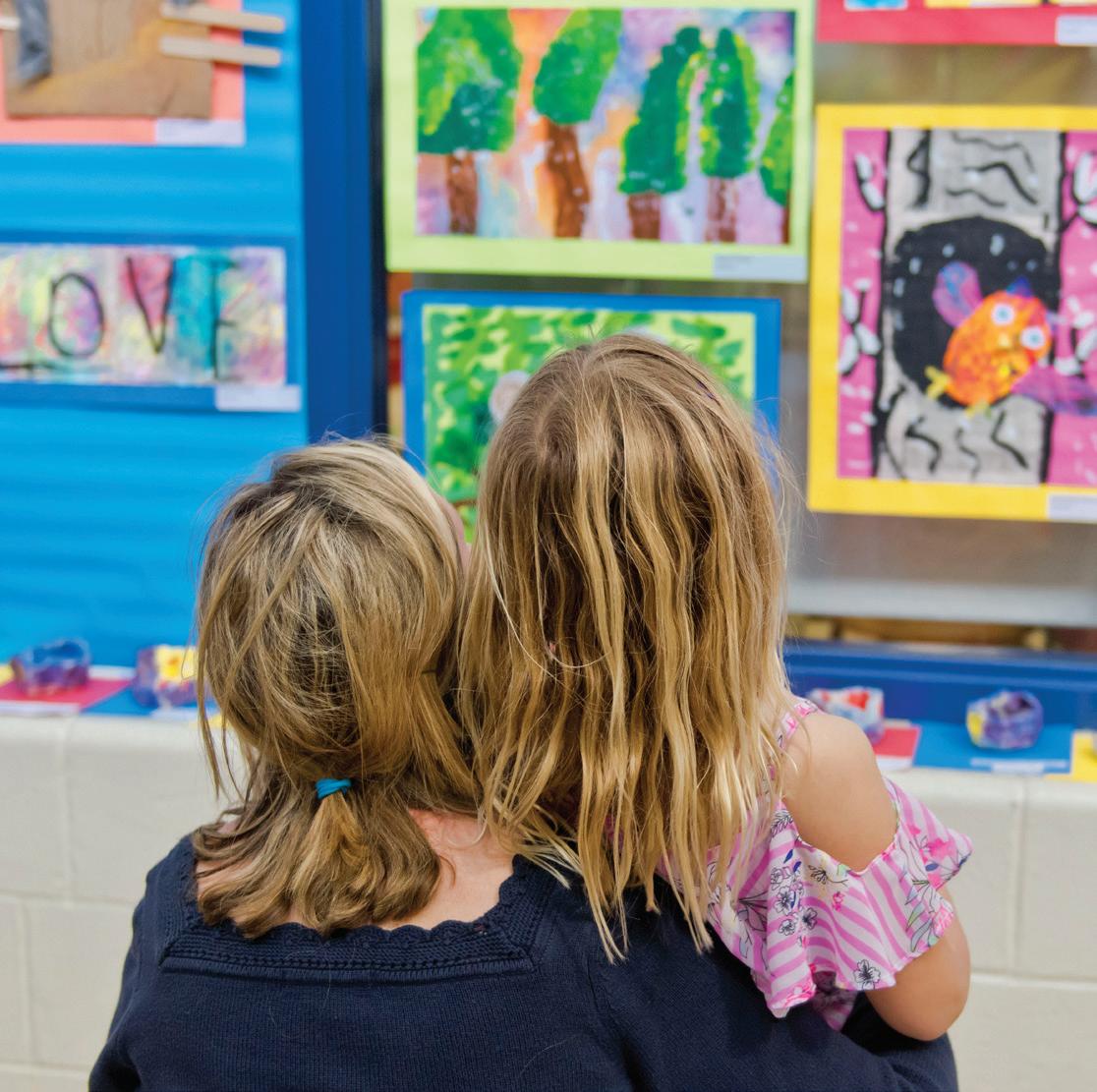
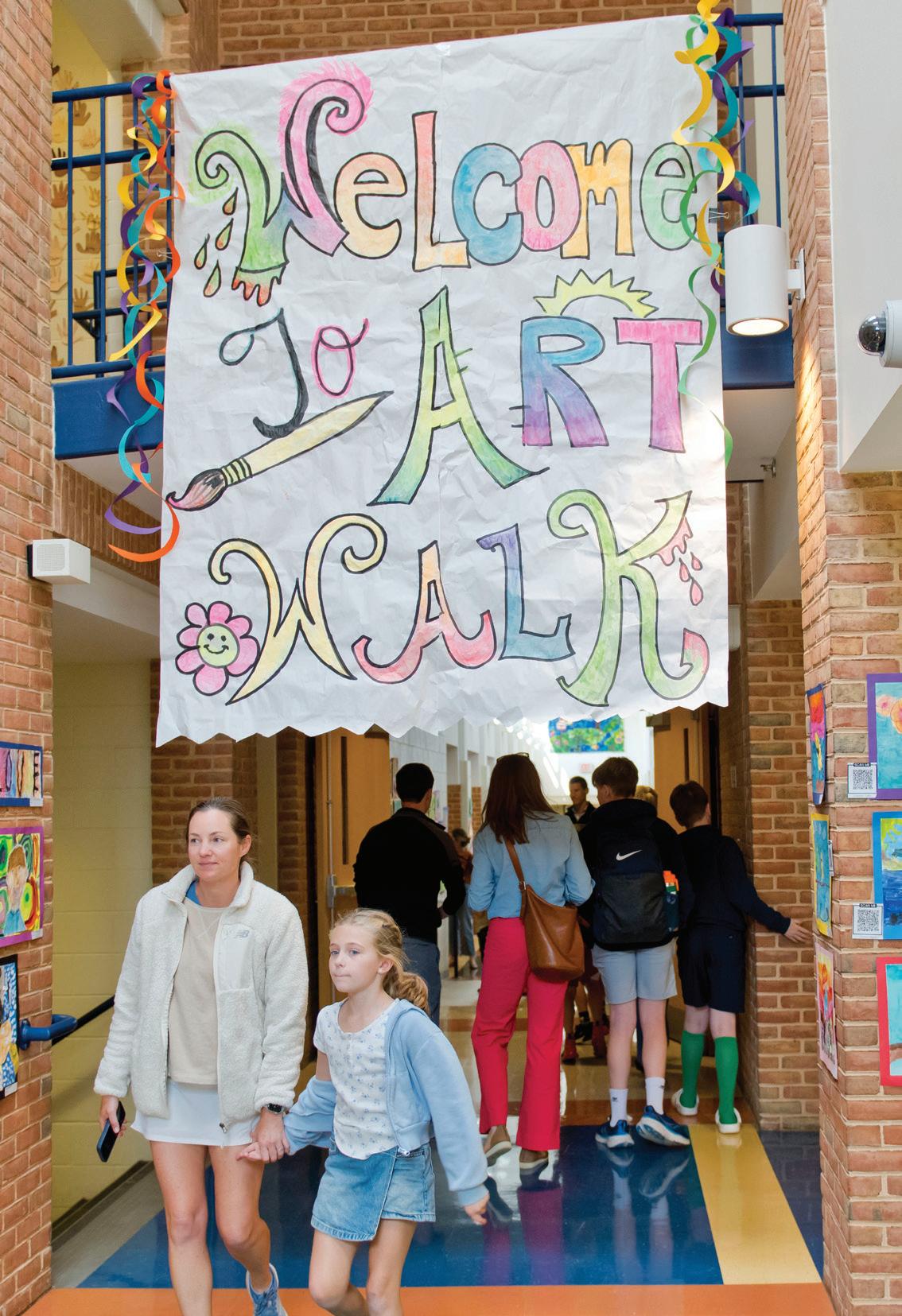
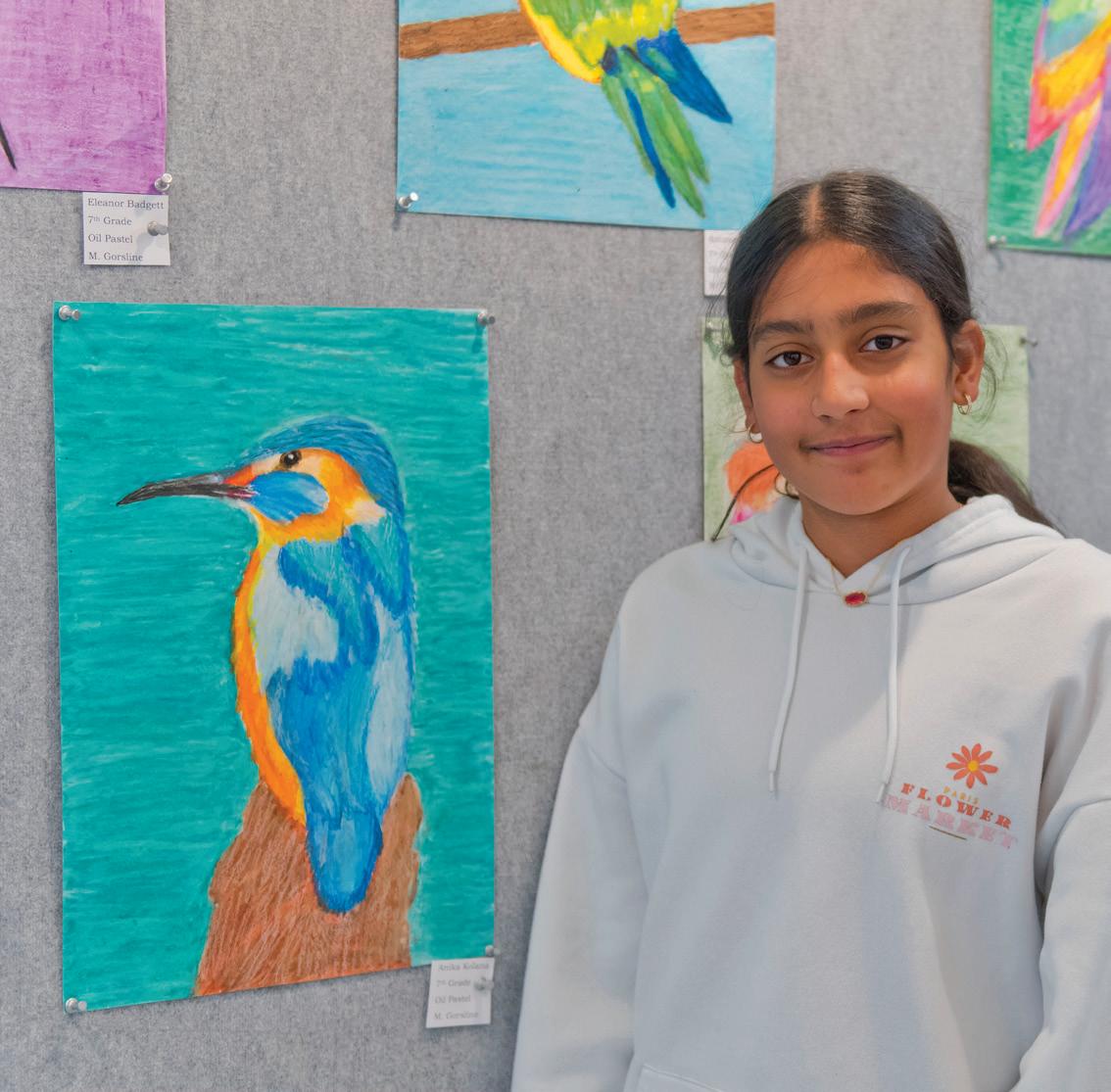
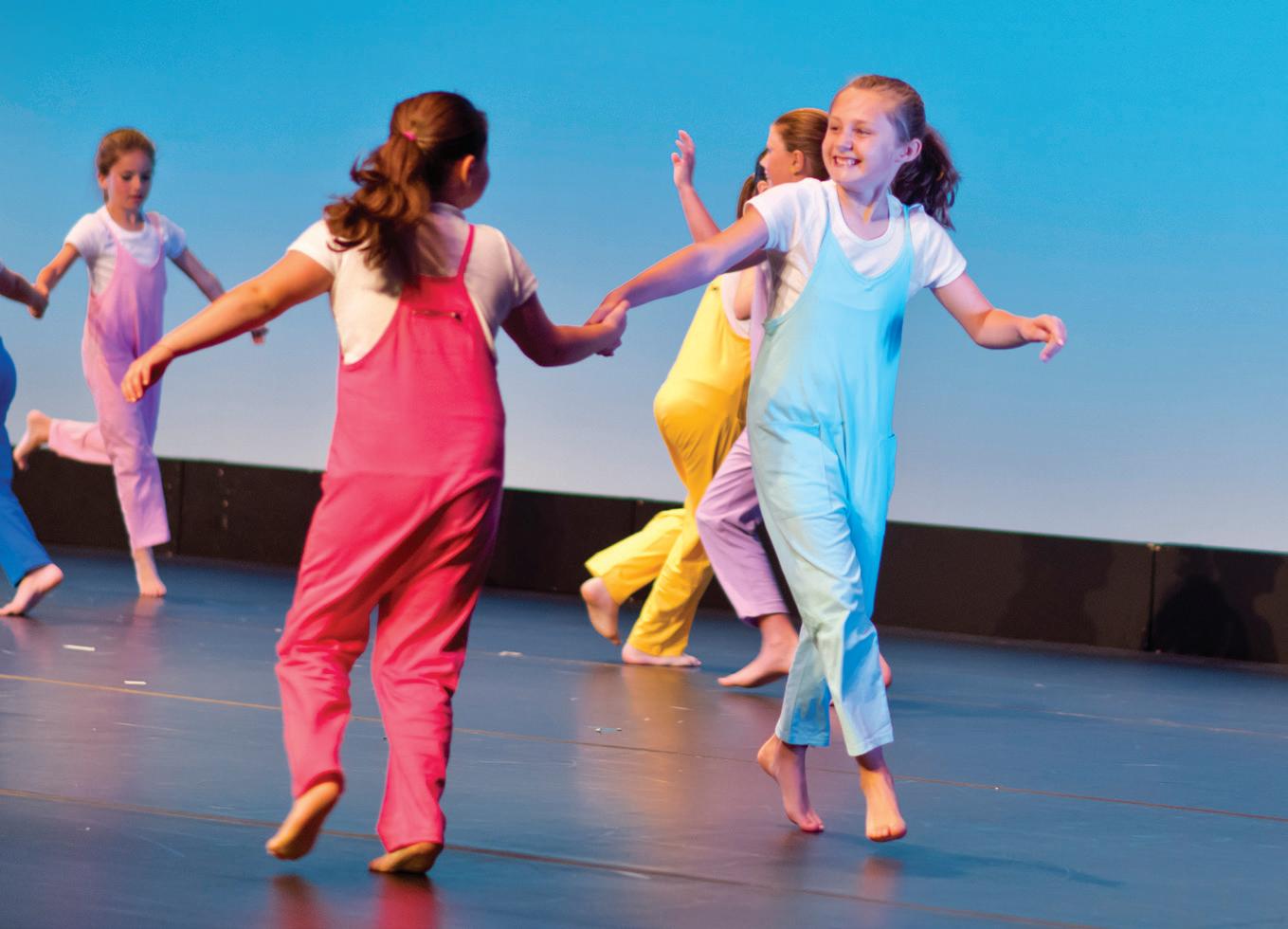
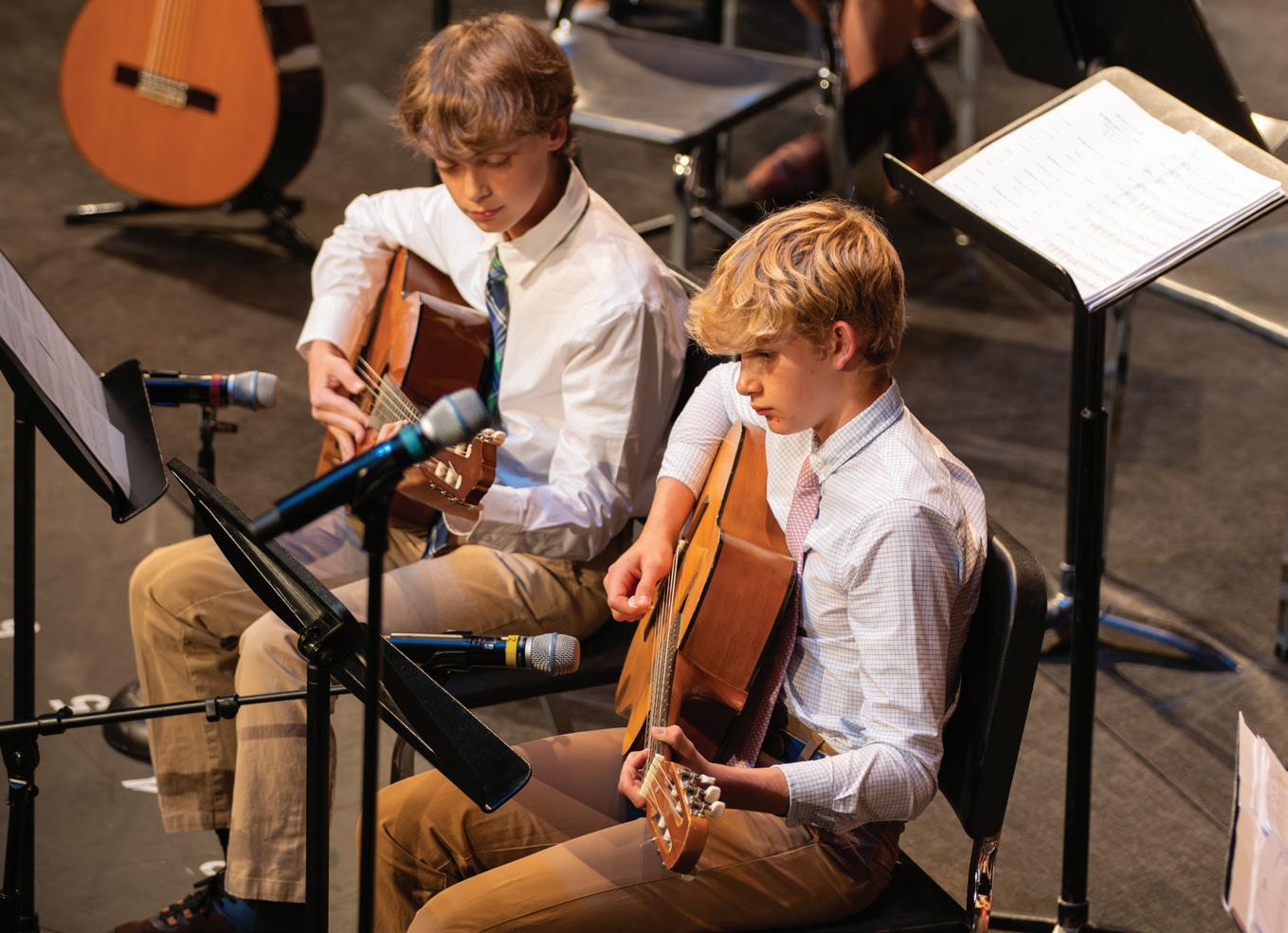
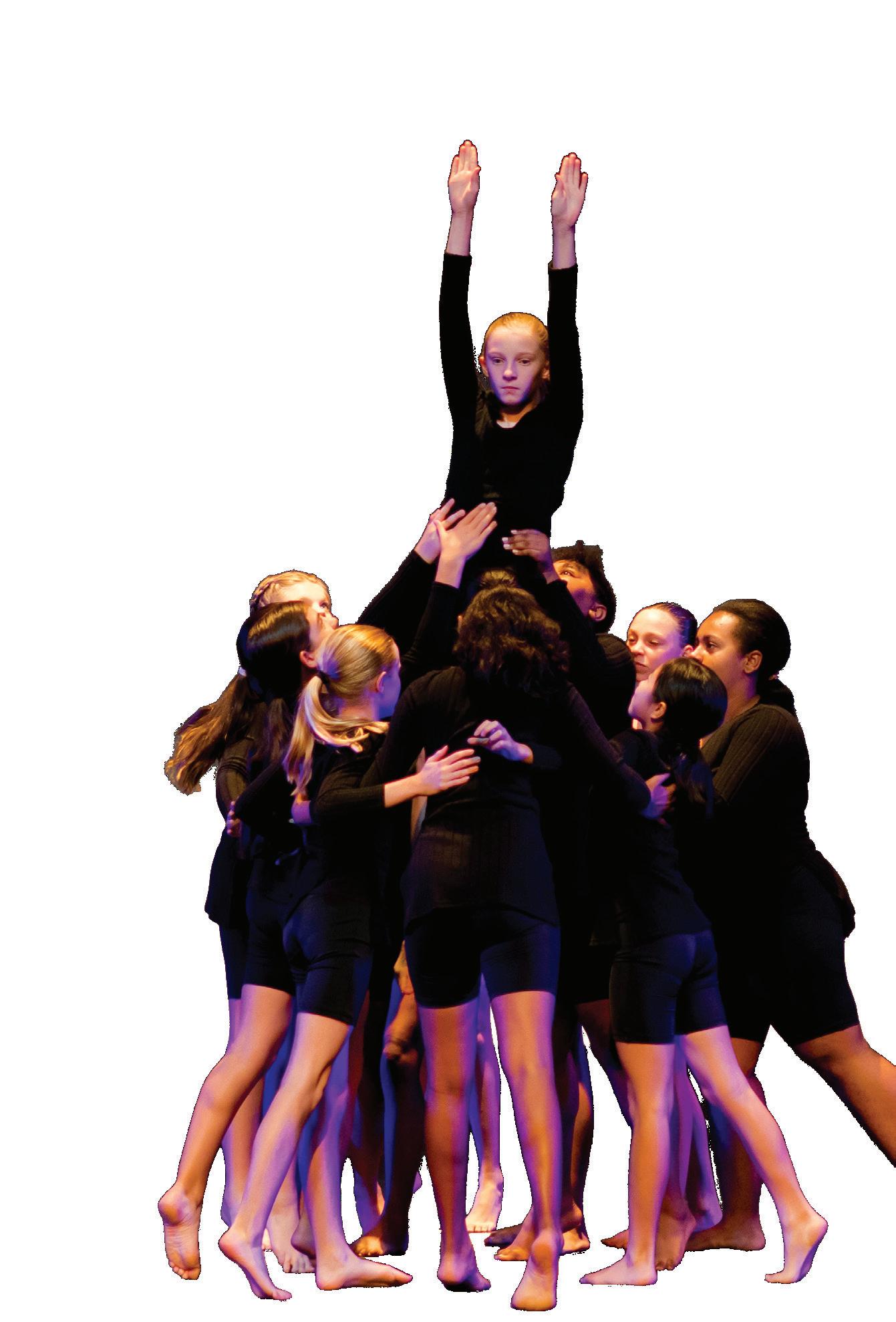
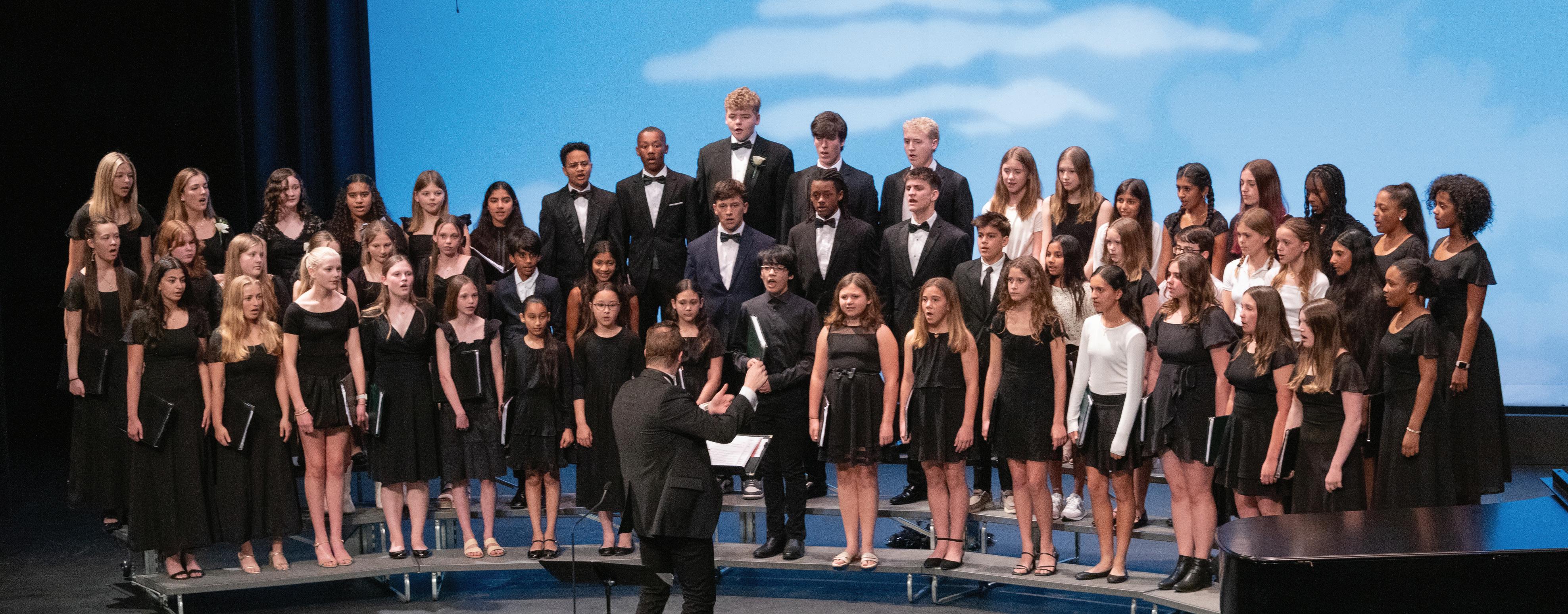
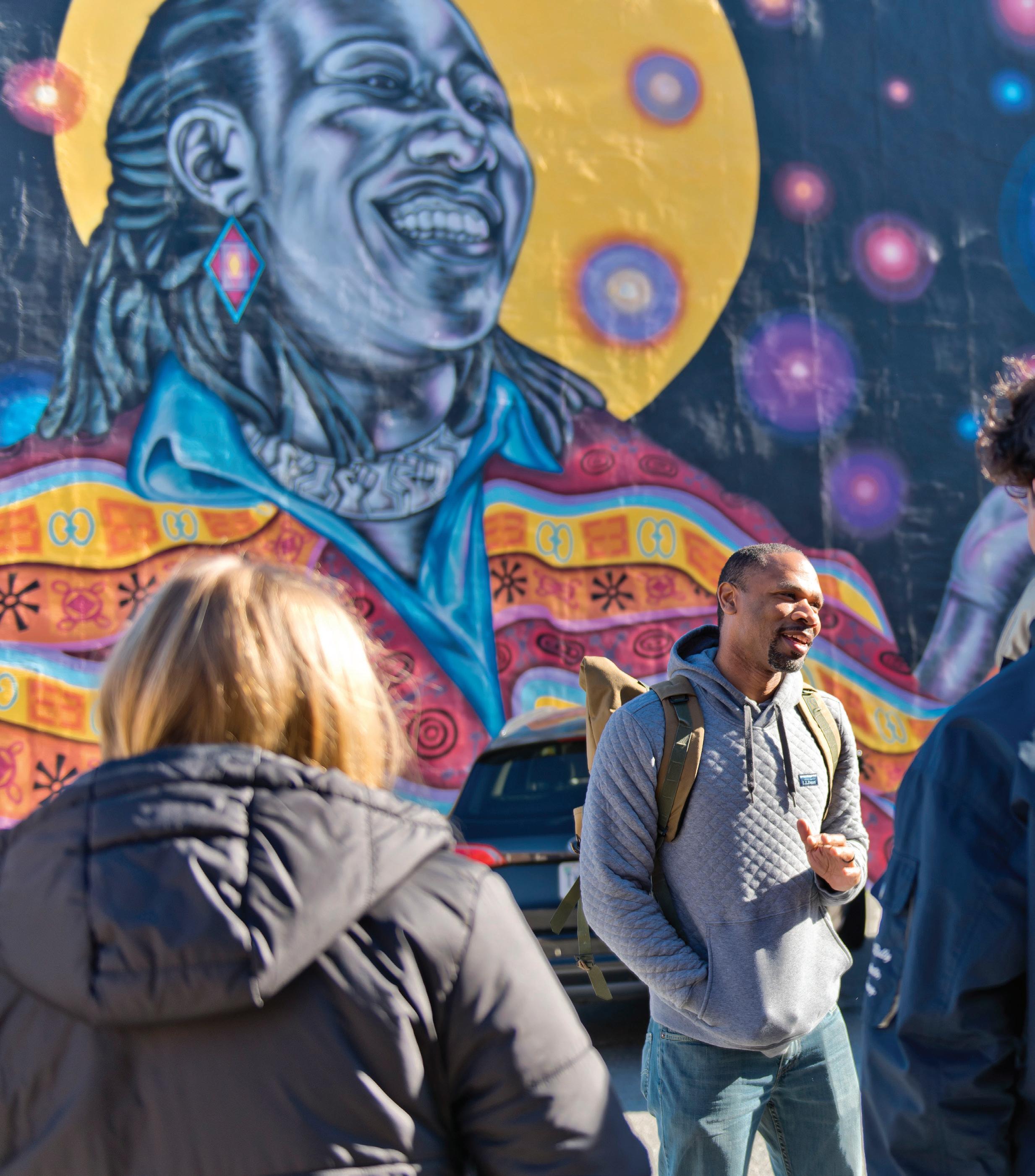


Painting Down Barriers
As this year’s artist-in-residence, Hamilton Glass helped advance Collegiate’s mission of preparing future leaders as responsible citizens.
RAISED IN PHILADELPHIA,
the artist Hamilton Glass first greeted public figures on the sides of city facades. By way of public murals, he connected to leaders of the city. They no longer seemed ambiguous entities untethered from residents for whom they made decisions. They were right there, smiling, walking on the sidewalk with him. He came to understand those figures as advocates, social justice leaders, legislators with morals, and he began to see public art as an extension, a creative articulation, of complex issues.
“The murals around Philadelphia had a really big influence on me and how I understood the programs that affected everyone,” Glass says. “I would see community members celebrated on these massive scales, on these walls, and that took a layer of the ceiling off. I realized that art functioned as a tool for connection.”
When he moved to Richmond in 2007, sparsity scarred the city. There was very little public art, and Glass, partnering with organizations around the city, worked to change that, helping Richmond grow as one of the premier spaces for public murals. With effervescent familiarity, his work organizes Richmond’s environs as a frame for itself. Faces, hands, statements are curated with concerted purpose. It’s epic poetry in everyday tongue.
As Collegiate’s artist-in-residence, Glass approached his position with an intention similar to his work. Blending complexi-
ty with creativity, his work with students challenged them to find creative ways to express ideas often difficult to articulate. How can you express what a poem has meant to you? How can you approach, diplomatically, the history of redlining in Richmond? How can a city collectively reconcile with its past and envision a better future? These are the questions that art can help us answer.
“I happen to believe creativity facilitates discussion,” Glass says. “Using creativity, in any form, can help us bridge the gap of understanding, stir empathy, and amplify discussion and connection. The creative process allows you to put your guard down and really listen to someone in a kind, respectful way.”
Glass, who, among other projects and initiatives, helped facilitate programs such as the River City Capstone, harnesses creative thinking to empower engaged, contributing citizens and nurtures students’ compassion and purpose. His work as artist-in-residence contributed to Collegiate’s mission of preparing future leaders as responsible citizens.
Creativity is a tool expressed in art but is not only limited to art. All forms of problem solving and collaborative discussion are rooted in some variation of creative thinking. Glass, throughout the many projects and programs he was involved in, encouraged students to lean into whatever form of creative thinking that best suited them. “I looked at my role as something that went
beyond art,” Glass explains. “I wanted students to think creatively about how, in the future, they could use their own personal talents to find solutions to any problem. Creativity is an element that all human beings are drawn to. It looks different in each one of us, but helping students discover their own creativity is essential to that process.”
The founder of Mending Walls RVA, a local non-profit that strives, through community-engaged art, to advance social justice by connecting people across various backgrounds, Glass places a strong emphasis on collaboration among communities. Glass, in his work with students, created similar ways for them to engage with communities beyond North Mooreland Road. Through initiatives rooted in art, students have been able to think critically about complex issues within Richmond. Their lessons are multifaceted, refining their creativity while expanding their worlds. Art, then, becomes another approach that students can use to explore life around them. “Art allows people to come together and collaborate,” he says. “With art, we can sit at a table together with opposing viewpoints and still walk away with understanding. Art can often speak more powerfully than words, evoking emotion that words couldn’t. The students were really receptive to that, and our work became engaging and collaborative.”
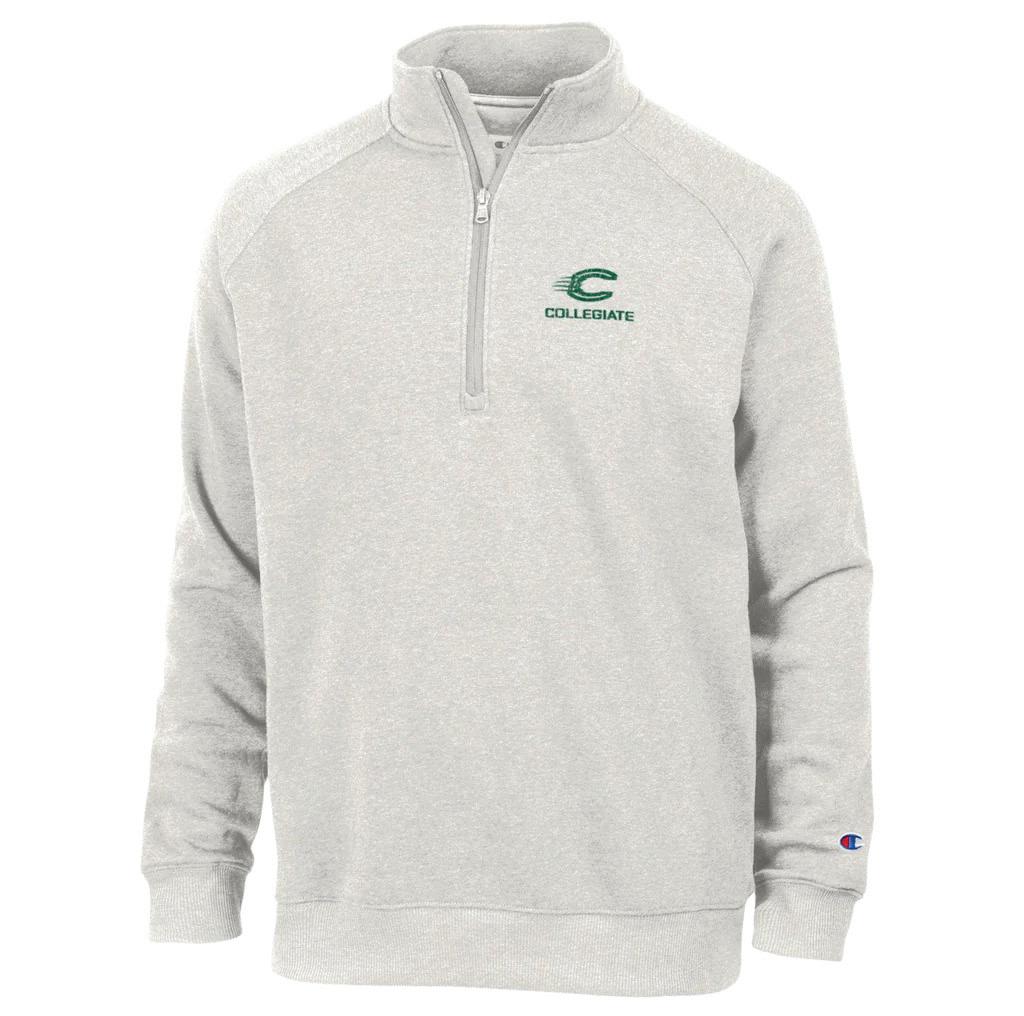
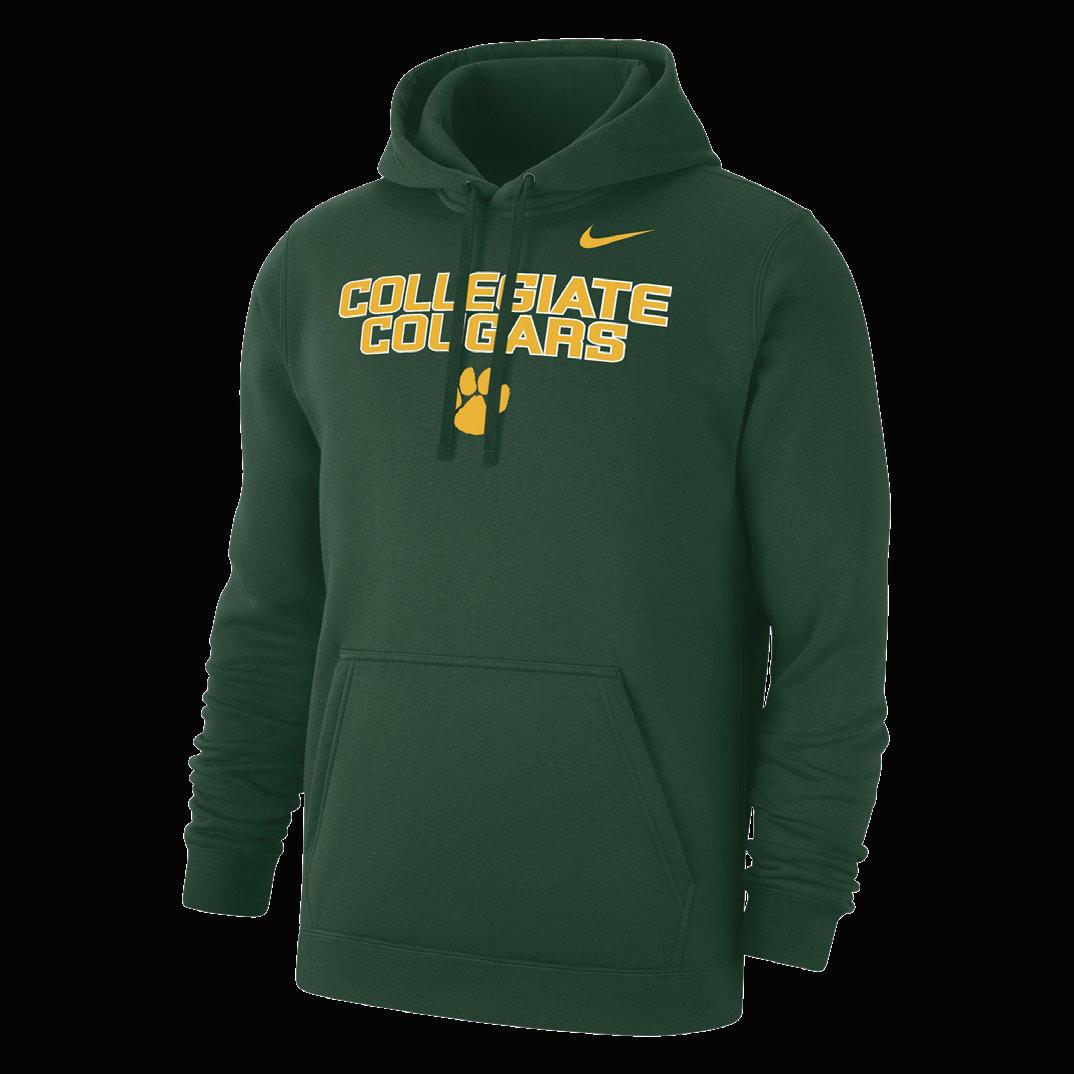
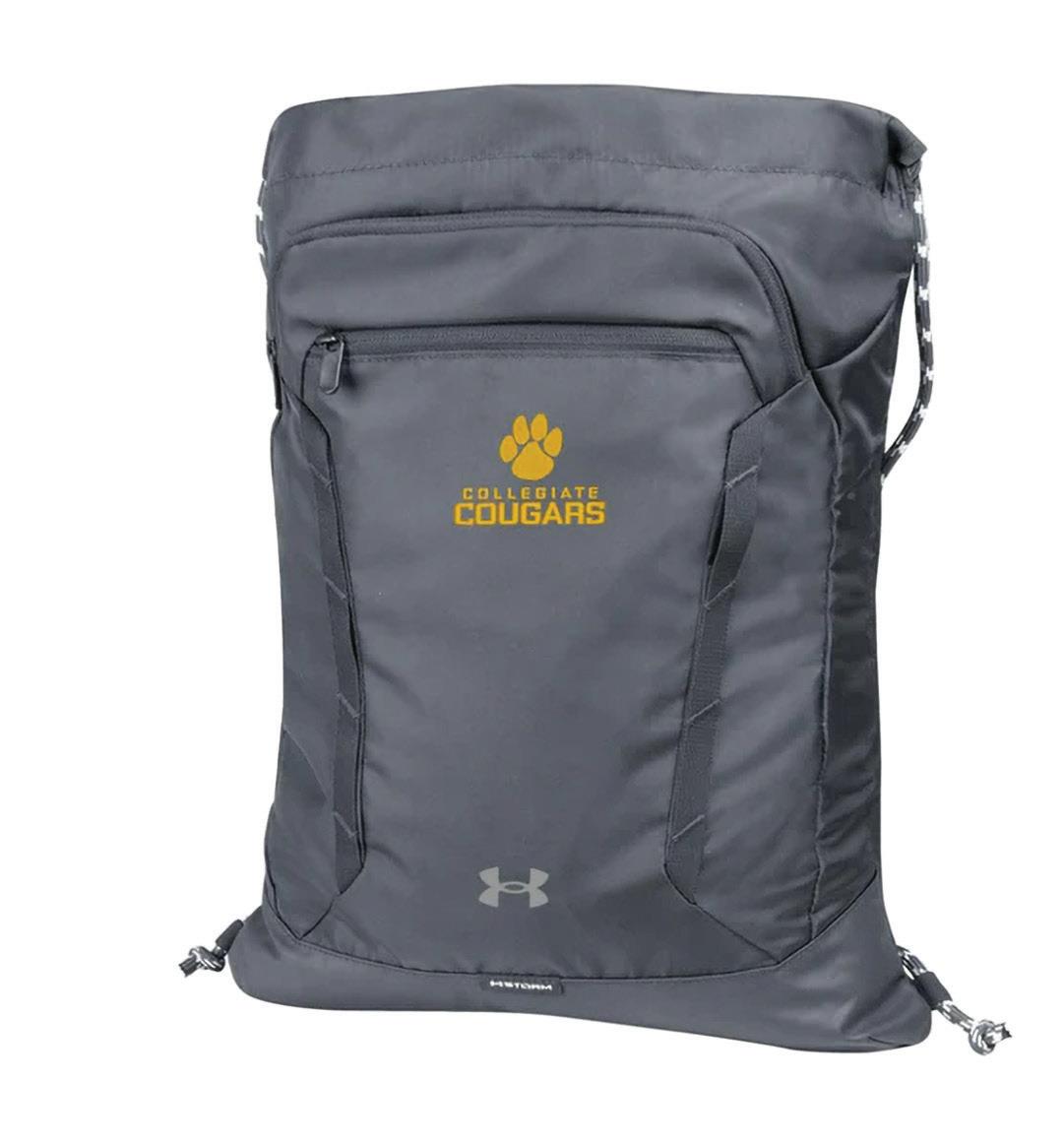
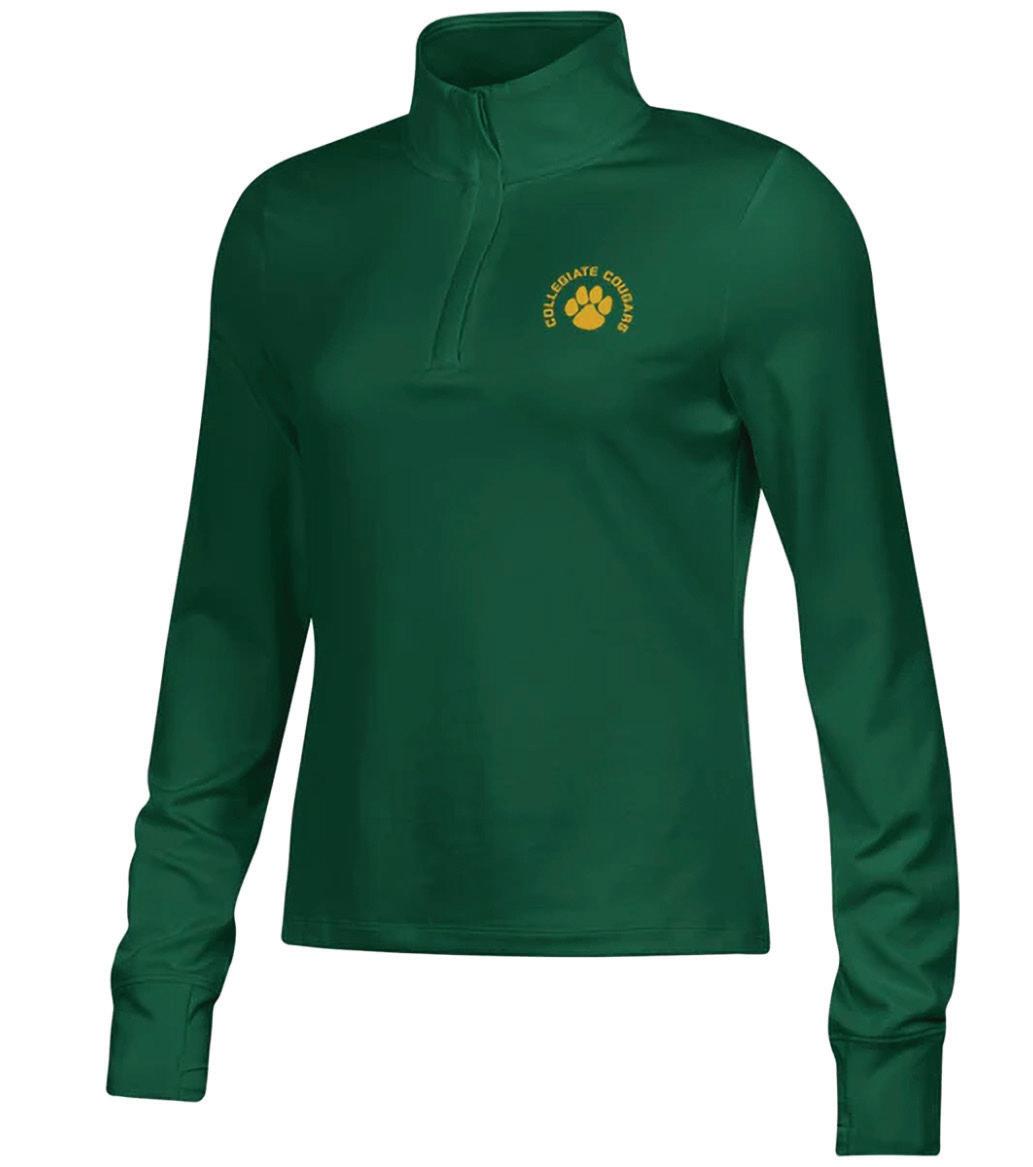
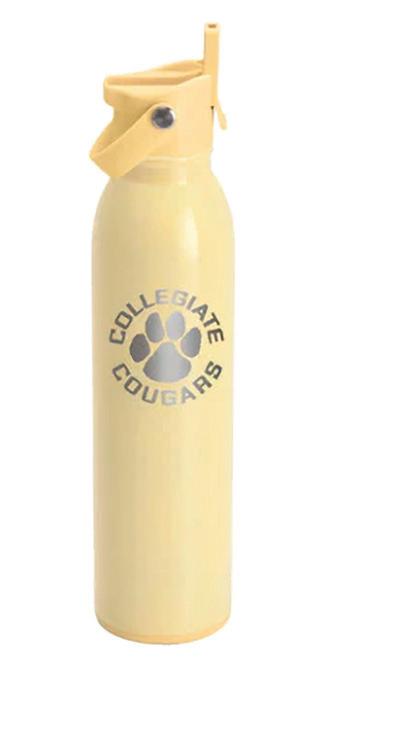
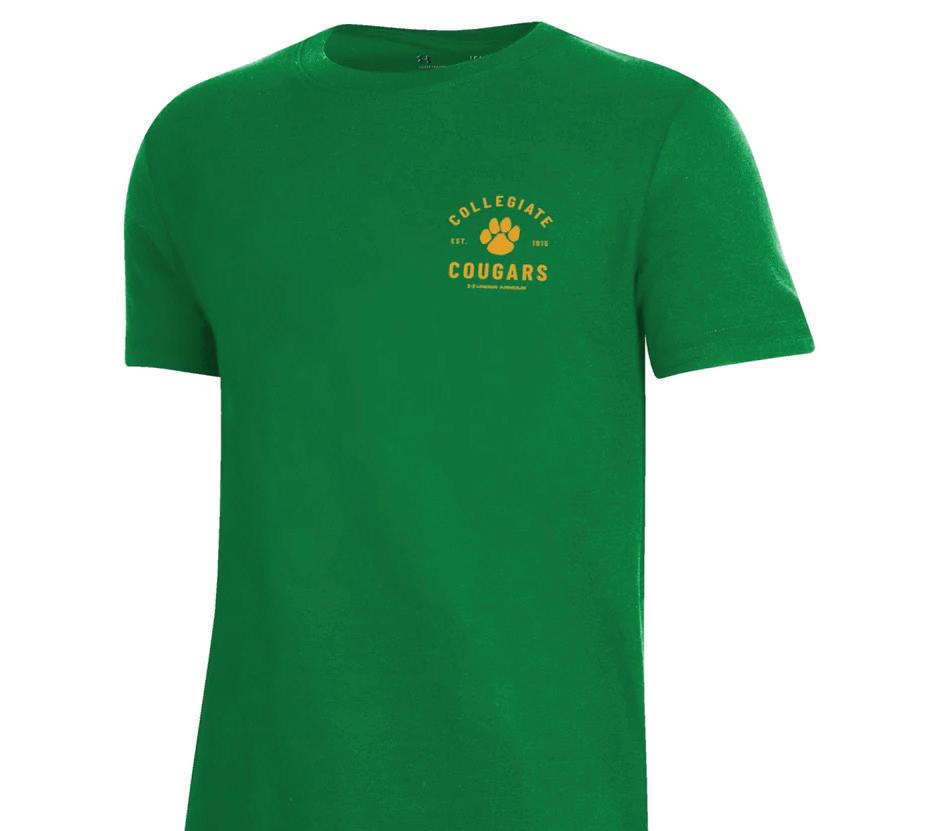
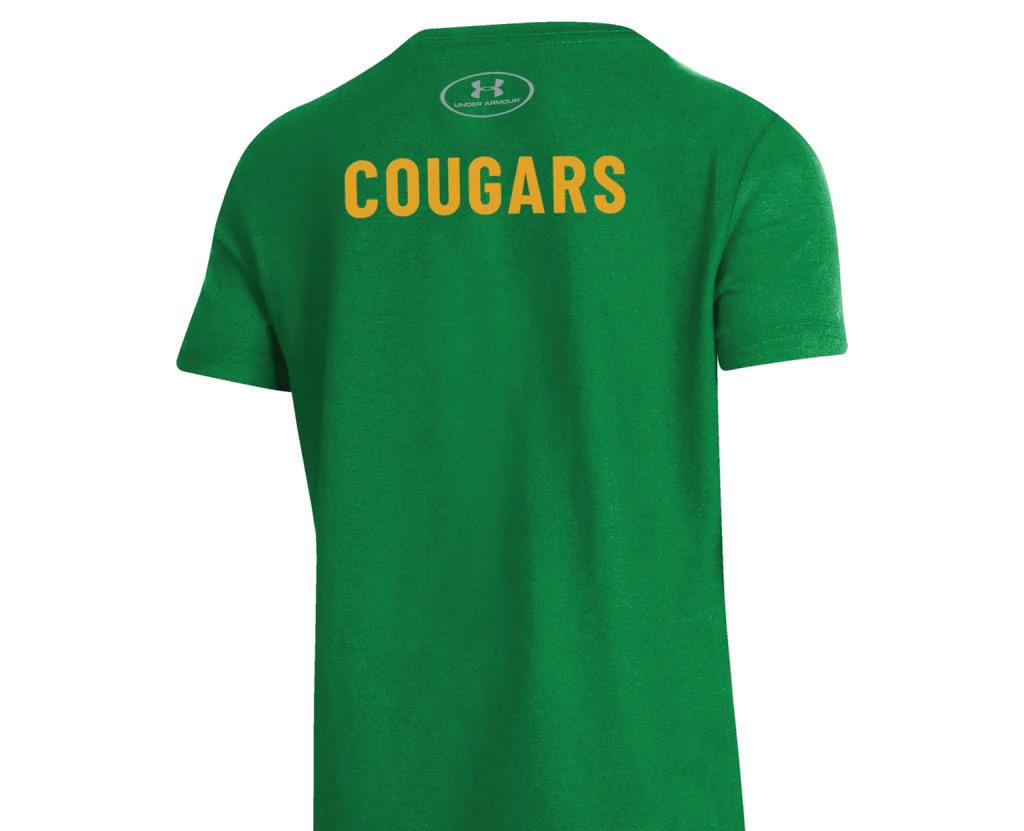

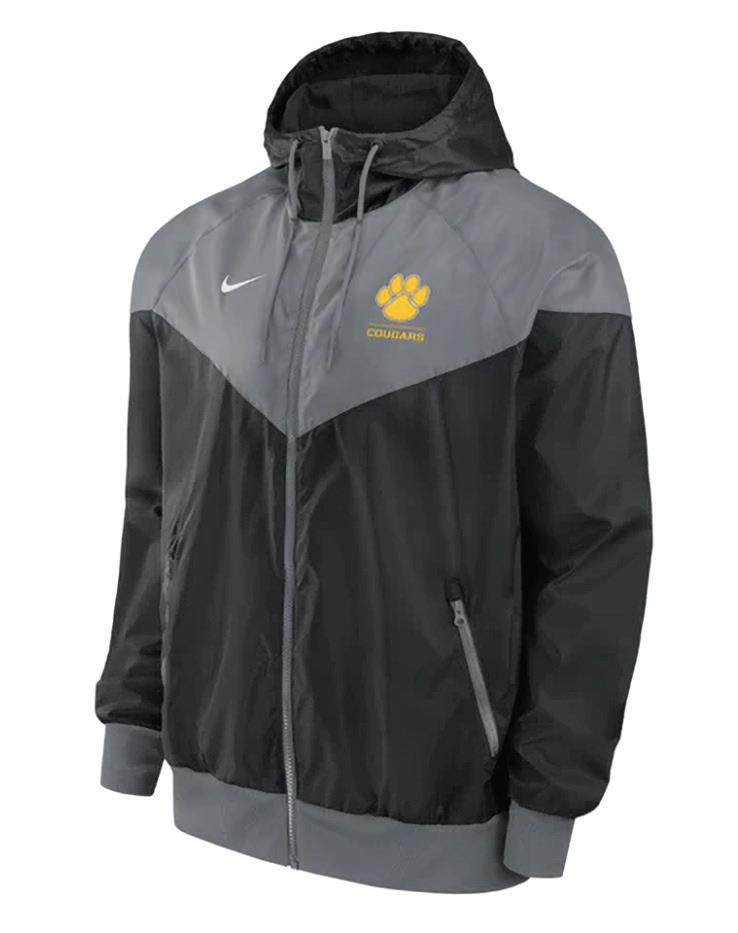
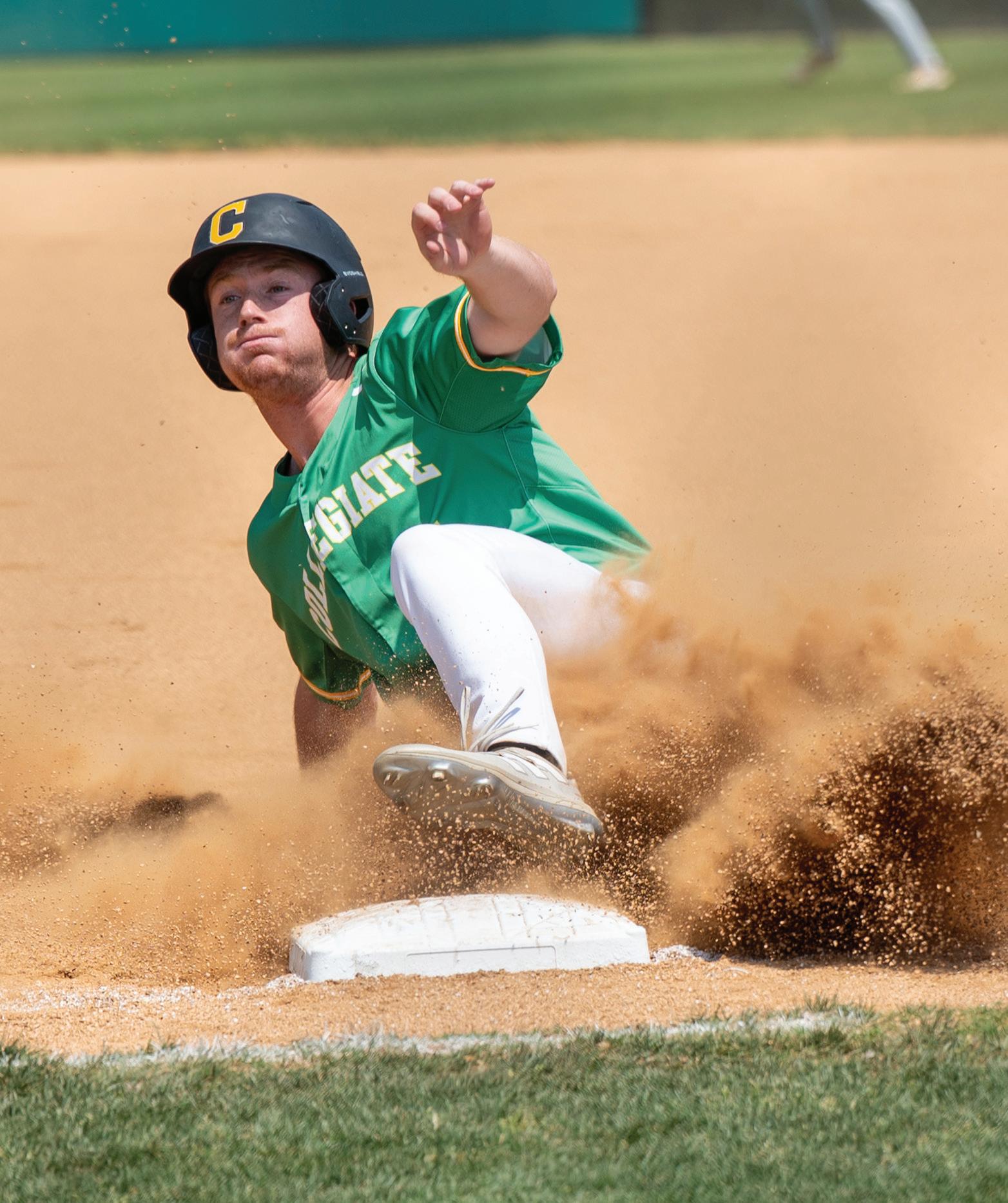
MEASURING COMPETITIVE SUCCESS
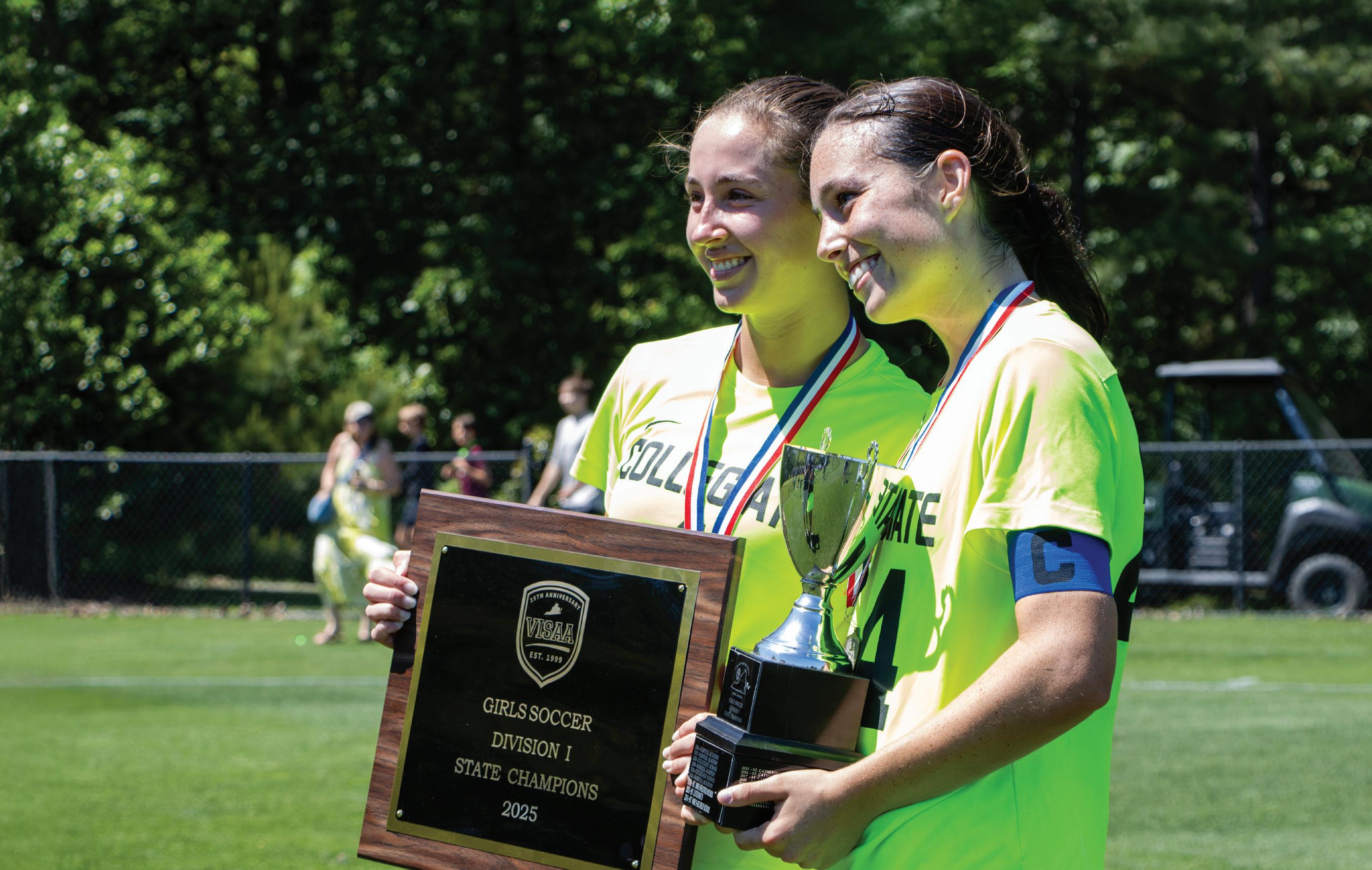
While the numbers tell a story, there’s more to athletic achievement than statistics. Director of Athletics Andrew Stanley discusses the deeper victories of the Athletic Program that numbers might not reveal. By Weldon Bradshaw
HOW DOES ONE MEASURE COMPETITIVE SUCCESS? Victories? Championship trophies? Athletes’ postseason recognition? College commitments? Intangibles? All of the above?
By any measure, Collegiate’s varsity athletic teams held their own during the 2024-25 school year. Girls cross country, tennis, swimming/diving, and soccer won VISAA titles. Boys soccer and girls tennis, cross country, swimming/diving, and soccer finished atop their leagues, and the Cougars placed third in the Prep League Director’s Cup standings.
In the past four years, 18 Collegiate teams have earned state titles, eclipsing the previous four-year mark of 16 set between 2003 and 2007 and equaled in the stretch between 2020 and 2024.
Sixty-four athletes earned all-league citations, 57 were all-state, seven were cited as All-Americans, and eight were all-metro with the selections for the spring season pending.
Twenty-three seniors were three-season competitors during their final year, 10 of those wore the green and gold for all 12 high school seasons, and 25 graduates
will take their talents, hopes, and dreams to college programs.
While the numbers tell a story, there’s more to athletic achievement than statistics. One afternoon recently, Andrew Stanley, Collegiate’s Director of Athletics, reflected on the program he’s led the past three years and the direction he hopes it will go.
What’s your definition of competitive success?
Certainly, you want to win every game. Certainly, you want kids to achieve the opportunities they pursue. But
whenever somebody asks me that question, I think about the sentiment that (legendary coach and AD) Charlie McFall shared decades ago: “You have to take care of the children in front of you.”
I was really pleased this year with the way our teams and coaches took care of each other and controlled the moments they could control. Our teams competed at a very high level. They didn’t always get the win, but they played the game the right way. What does it take to be successful? Did the kids walk off the field at the end of
It’s supposed to be special. For most of our kids and most of our teams, it was a unique and special opportunity that left people excited about what’s to come.
the season feeling that they’d emptied their tanks and left it out there? I think largely that our kids felt that way.
I’m very proud of the effort they put forward. I’m really excited about the platform it created for us to move forward into the summer and next year. [The competitive athletics experience] isn’t supposed to be easy. It’s supposed to be special. For most of our kids and most of our teams, it was a unique and special opportunity that left people excited about what’s to come.
What do we have to do to improve?
We’re doing very well. We’re having success. The more we focus on acknowledging where we are and how to take the next step, not to look 50 yards down the field but the next three-anda-half yards, we will be better more consistently and the better we’ll feel about every single opportunity.
Focusing on what’s right in front of us and keeping our eye on those next three-and-a-half yards will be our key to long term, sustained success. That’s the way we were all brought up
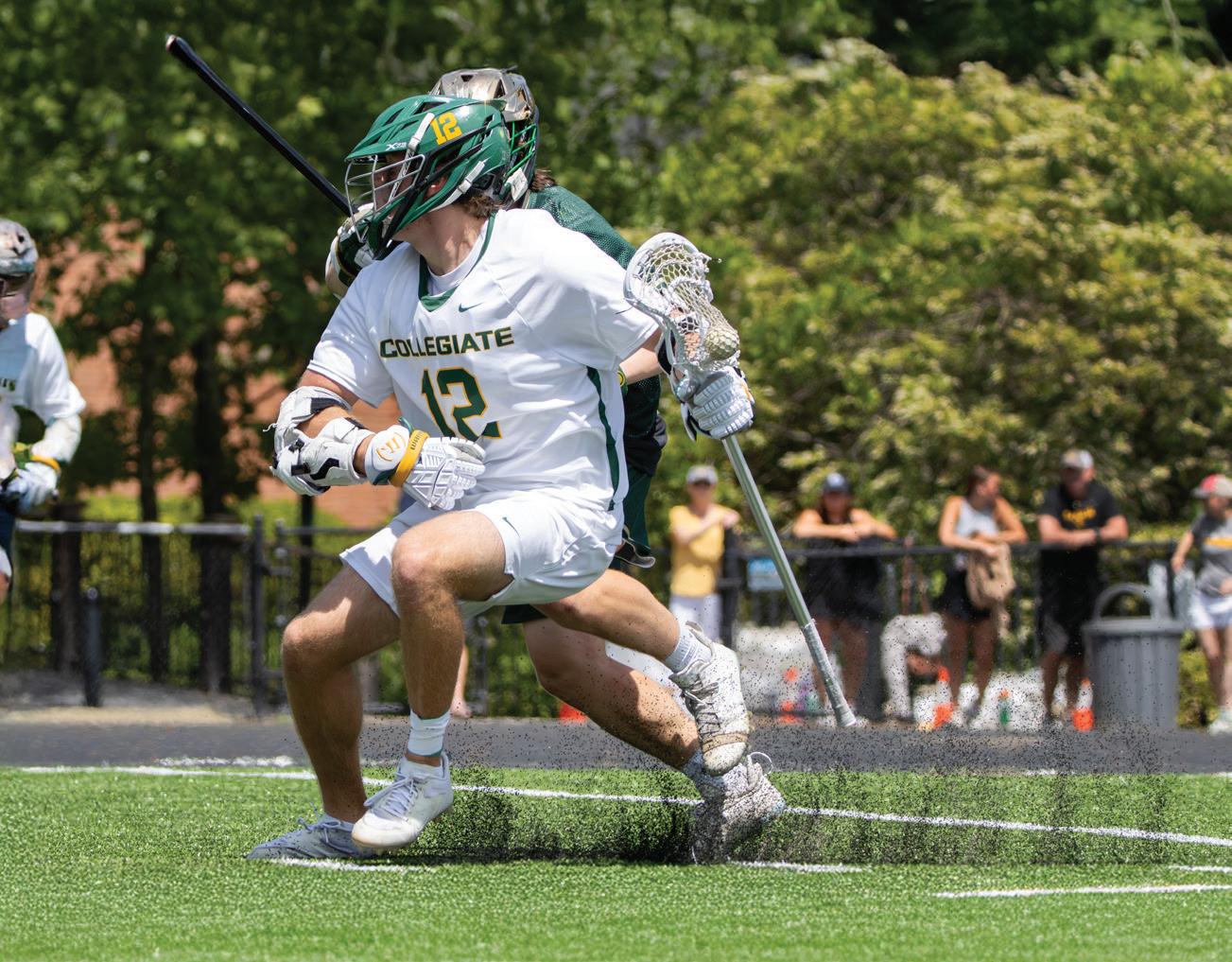
to coach here. It’s never been about the end of the process. It’s been about this practice, this drill, this rep in this drill. If we stack those positives day after day after day, we’ll feel really good at the end. So, what do we need to do to be better? We need to get comfortable being present in the moment and owning what’s right in front of us without excuses.
Which
means?
It’s almost cliché at this point, but controlling what we can control in the work we do, the attitude we bring, and our willingness to be coaches. The energy we bring to practice every day and in the off-season is hugely important. As coaches, we have to continue to be excited about raising the floor every single day, knowing that that’s how we’ll build a new ceiling at the end of the process. We must continue focus on the daily grind and improvement to be the kind of program that we all want to be: one that’s constantly moving forward.
Collegiate has had its share of stellar, high-profile athletes. Role players, though, have been the backbone of teams for years.
We’ve had the top-end athlete, but what’s always made us very dangerous has been the two- and three-sport kids who work hard and bring their team to a new height because they provide the juice and the support. You can talk about [star quarterbacks] Russell [Wilson], Jake [McGee], and Wilton [Speight], but the key to Russell and Jake and Wilton was the way they could get kids who were willing to play their roles to play just a little bit better. The willingness of those students to grind and participate in multiple seasons has been paramount to the success of our program over time.
Every coach has his or her way of saying, “Make each other better.” Right?
When we’re at our best and where we need to get even better moving forward is the willingness to show up every day and challenge ourselves and challenge each other to be just a little bit better than we were the day before, simply because a little bit better is there to be, not for a trophy, not for a championship, not for an Instagram post…just because the opportunity exists.
One of the most important parts of my job is giving coaches permission, encouraging coaches, expecting coaches to push kids to be better today than they were the day before and create an environment where kids are not willing to let themselves or each other off the hook. They need to understand that they’re going to miss. They’re going to fall. Doesn’t matter. Get up, and go again.
It’s also cliché, but the road to excellence has no end point. Correct?
We were at our best this year when we did what we could control and didn’t worry about who we were playing, where they came from, or what their jerseys said. When we challenged ourselves to be better and compete up to our potential, we were the best versions of ourselves that we could be. We’re doing things well. We just have to lock in, move forward, and focus on what we can control to be our very best.
Giving Voice to the Moment
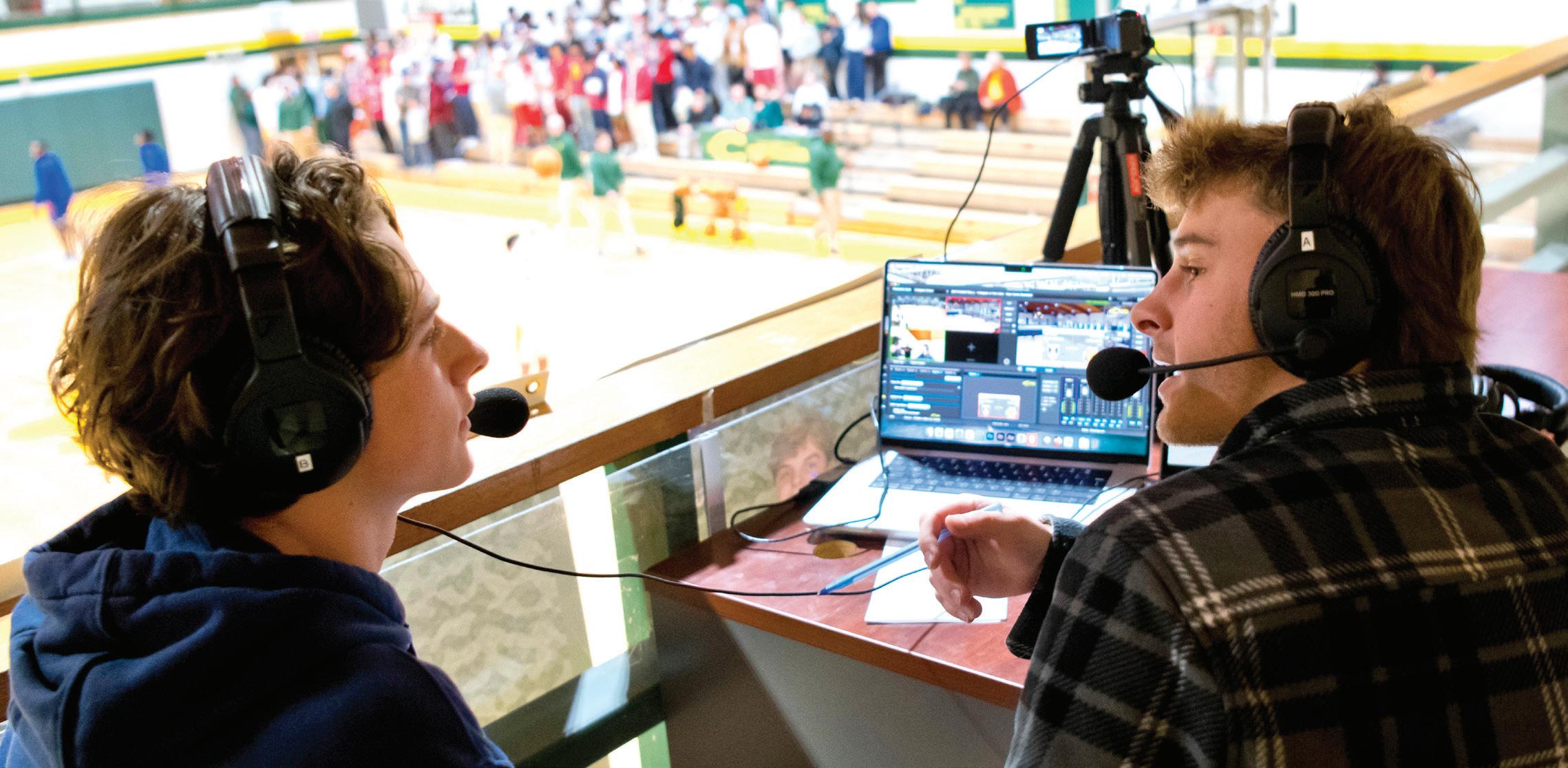
The sports broadcasting program gives students the opportunity to practice public speaking and refine their technical skills within the content of color commentary.
By Macy Boyer
’26
THE COOL NOVEMBER AIR was thick with anticipation. Fluorescent lights, a trademark symbol of late night City Stadium games, illuminated the neon scene. Among the faces of anxious spectators were the Virginia League of Independent School’s top two boys soccer teams as they competed for the title of 2023 Virginia Independent School Athletic Association champions. The game featured a classic Richmond rivalry: Saint Christopher’s versus Collegiate School. A heightened sense of nervous-excitement was captured by three Collegiate students, who, instead of cheering with the rest of their classmates, found themselves behind mounds of equipment and a live stream, commentating on one of the biggest games of the fall season. Jai Spicer ’25, Cameron Jones ’25, and Charlie Cheek ’24 were the voices behind the broadcast, bringing the game to life for viewers who couldn’t attend in person. It was their voices that captured the magic of the game’s final moments.
It was overtime. Shaan Agarwal ’25, a member of the boys soccer team, crossed a corner kick
directly to Joshua Parker ’25, who headed the ball into the back of the net. The voices on the live stream instantly became muffled. “That’s it!” Spicer yelled, his voice raising above the screams of his peers. “The Cougars have done it! They are your 2023 boys soccer state champions!” As the celebration grew louder, and as a pile of disbelieving soccer players formed on the field, Charlie Cheek declared, “As much as I would love to talk about this game for hours with y’all, now is not the time. It’s a time for celebration!” The screen went black. Listening back to that moment of the broadcast, it’s impossible not to feel a sense of adrenaline and excitement. The joy Cheek, Spicer, and Jones felt for their teammates was palpable. Offered as a volunteer club, Collegiate’s sports broadcasting program was established in 2022. Spearheaded by Director of Athletics Andrew Stanley and led by Sports Information Director Bill Ruhl, the program has made significant progress since its development. Ruhl arrived at Collegiate in 2022, and, as he explains it, was responsible for getting the program “off the ground
and available.” Graduating from University of Miami, Florida, in 1994, Ruhl was first introduced to sports broadcasting when he worked at his college radio station and commented on games. Since then, Ruhl has worked for CBS sports and served as a football and lacrosse coach. At Collegiate, Ruhl is able to blend his previous experiences together to lead not only the broadcasting program, but also to manage all of Collegiate’s online sports media. Ruhl says that Collegiate’s broadcasting program is “still sort of in its crawling stages, mainly because it’s purely a volunteer club.” Ruhl admits that “as much as any student wants to do it, no one has the time.” Yet, despite student’s busy schedules, “We have a commitment to live stream every varsity home event regardless of sport,” states Ruhl. On game days, Ruhl checks the six different automatic cameras spread out across both Collegiate’s Main Campus and Robins Campus. He then ensures that equipment is ready for student broadcasters to pick up in the afternoon. From that moment on, the broadcasting of the game is placed solely in the student’s hands.
“It’s really fun to be a voice of the people,” Spicer explains. For the past two years, Spicer has been commentating on both boys and girls varsity soccer games. In the spring, Spicer commentates alongside Jones and Omar Lanneau ’25, who serve as instrumental figures in the program. Spicer, Jones, and Lanneau find a special importance in generating support for girls varsi-
ty games. “I’m a big proponent of women’s sports,” Spicer says. “Making sure they are getting the same representation as the boys team is huge.” On top of ensuring equal representation for all of Collegiate’s teams, Spicer finds the program to be heavily rewarding. “It’s made me a lot more tech savvy,” he says. And, he adds, “it’s a great lesson on public speaking.” Spicer has also formed numerous connections “with a lot of people who I wouldn’t have gotten in touch with otherwise.” Whether it’s coming up with nicknames for the players or saying hello to athletes in the hallway, the impact of commentating extends beyond the livestream.
Blake Ingold ’25 has been a member of the program since its founding his Sophomore year, commented on the inaugural game the broadcast held, and served as president this year. Initially commentating on basketball games, Ingold describes that his involvement has morphed into serving as a “liaison between Coach Ruhl and the students who are working the game.” His passion for sports broadcasting dates back to when he was a kid. “When I was younger,” Ingold explains, “I watched sports all the time and heard commentary from (legendary broadcaster) Jim Nantz. I thought it made the game better.” “Sometimes,” he adds, “I would turn down the volume and commentate myself.” Ingold also has a deep appreciation for Collegiate athletics; he’s been attending games since he was four years old. To Ingold, finding a way to become involved in this program was a no-brainer.
Similar to Ruhl, Ingold finds that limited time serves as the biggest hindrance to student involvement in the program. If sports broadcasting was offered as a class, Ingold says that “it would help us be able to fill in the gaps” and cover more games. Despite his hopes for the program’s future, however, Ingold acknowledges that it’s come a long way since its founding. He is proud of the fact that family members, who a few years ago could not have watched their relatives play, now can enjoy a Collegiate game with commentary. Ingold has also found commentating to help with his public speaking skills. “Commentating forces you to have to connect with your audience and become personable,” he says.
Evan Mangin ’26, vice president of the sports broadcasting club, devotes his time to commentating on games in the fall. From both home and away varsity football games, to volleyball and field hockey games, Mangin tries to cover as many games as his schedule allows. “I love sports,” Mangin explains, “and I love supporting our school and classmates.” Mangin particularly values the lessons he’s learned about teamwork. “The team aspect — what you see on camera, what you see off camera, the preparation — is something that I think is valuable for everybody,” Mangin says.
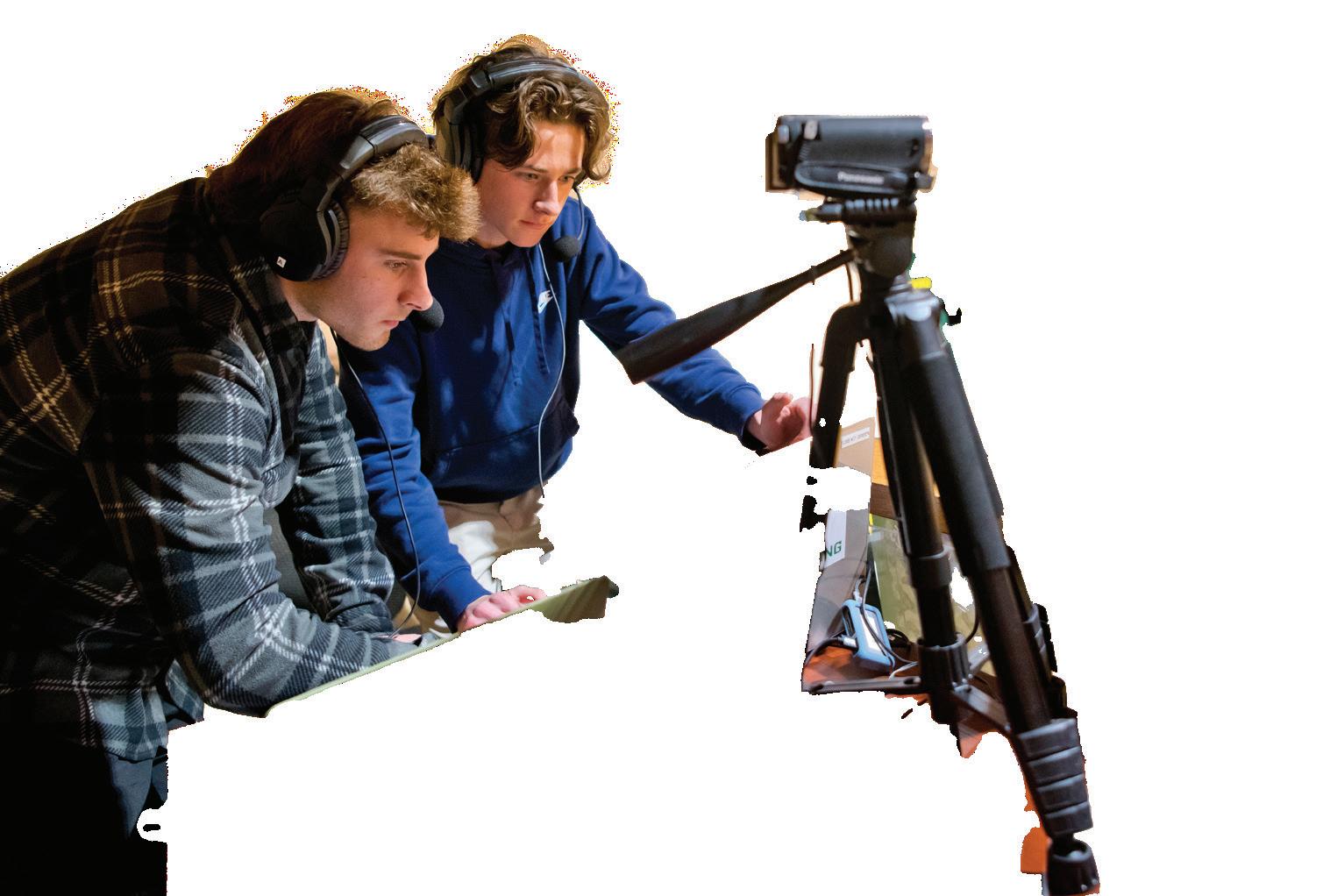
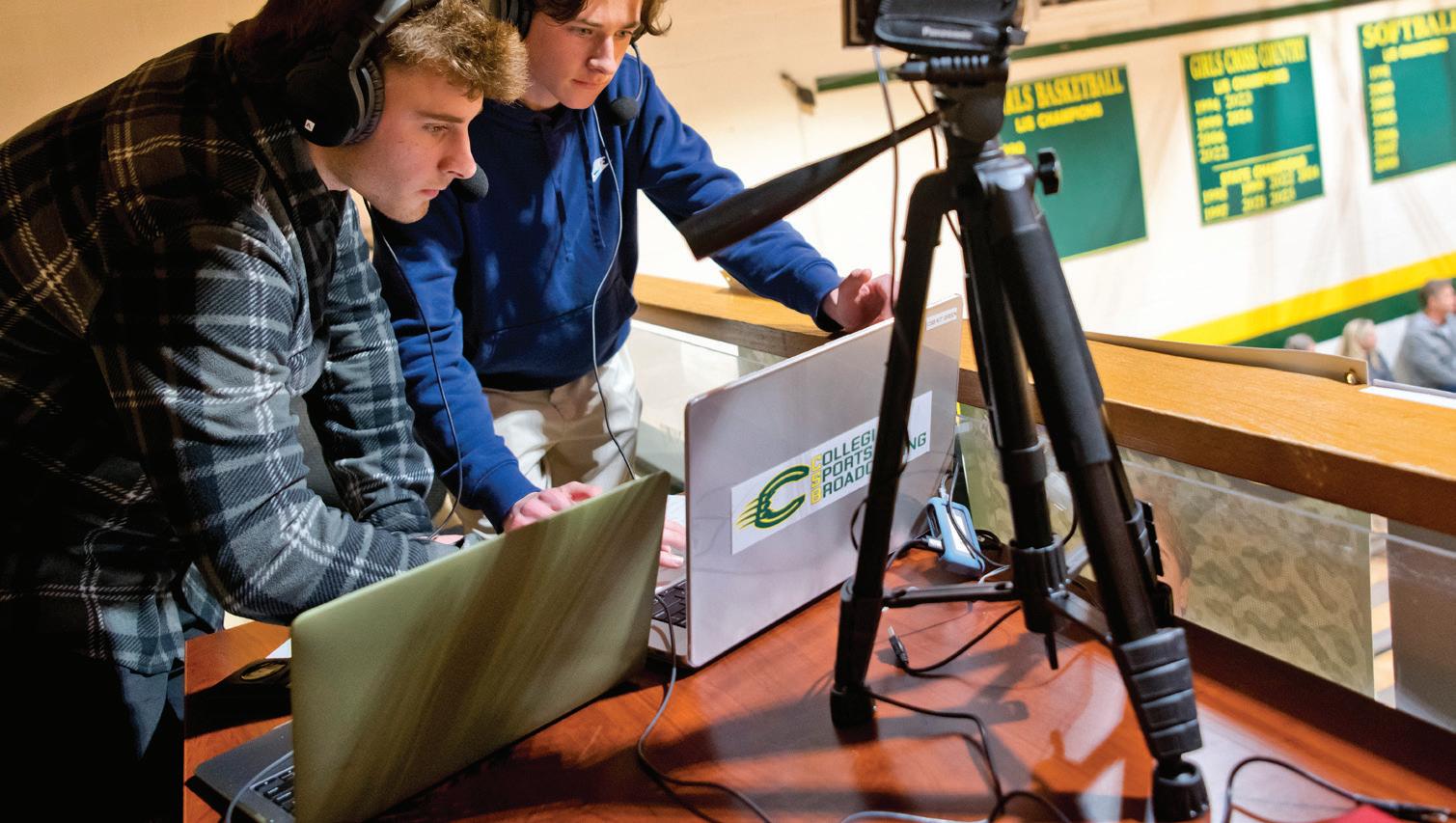
“I would like to see this program become a part of the culture,” explains Ruhl. “I would love for it to be something that becomes identifiable with our athletic program, as something we do and do well.” The student broadcasters feel similarly. Their live streams have not only highlighted the accomplishments of their peers, but connected the expansive Collegiate network. Its impact, explains Spicer, extends to “grandparents in Tennessee who tune in to watch their grandkids play” or “alumni who graduated twenty years ago tuning in to see how the team’s doing.” Coupled with the support members of the program demonstrate to their peers and school, the sports broadcasting program finds its footing in Collegiate’s core value of community.
Editor’s note: With every story we publish, our intention is to celebrate the experience of Collegiate. As part of that ongoing effort, we have been working with Upper School students, publishing stories in their own words. This piece is one such student narrative.
Unsung Seniors
Collegiate coaches celebrate a group of Senior athletes who distinguished themselves this spring but did so under the radar. By Weldon Bradshaw
GATHER ‘ROUND, FOLKS, and meet the latest class of unsung Seniors, a group of athletes who distinguished themselves in their final season but did so under the radar.
Caroline Crawford ’25 has competed on the varsity lacrosse team for three years. Playing attack, she’s contributed 13 goals, 18 assists, two caused turnovers, and 11 ground balls during her career.
“Caroline has been a role player every year for us,” says coach Carter Toohers. “She works tirelessly each day, she’s the first one to celebrate other people’s successes, and she sees the field and spacing very well. She’s a true team player and has gotten better every year.”
A three-season varsity lacrosse performer, Grayson McNeely ’25, a faceoff specialist and defensive midfielder, won 54 percent of his faceoffs and collected 48 ground balls during his final season.
“Defensive midfield is the toughest and most thankless position on the field and requires a lot of grit,” says coach Jason Archbell. “I felt like Grayson could be a perfect fit for it. I had a conversation with him one day after practice telling him that we could really use him on the defensive end of the field, and it would help our team. The conversation lasted about 20 seconds. He totally bought in and fully embraced the role from that point forward. No matter how exhausted he was on the sideline, he was always ready to take another run to help our team.
“Grayson is also a great change-of-pace faceoff player for us who frustrates opponents with his scrappiness and determination. He does everything with a huge smile on his face and a genuine passion for the game and for helping his teammates. He embodies our core values of selflessness, toughness, and enthusiasm and was integral to our success this season by doing all the little things that most people outside our team would not notice.”
Sadie Webb ’25 joined the track and field program this past winter and immediately made her mark.
“Sadie has been such a fantastic addition to the track program both this winter and spring,” says Beth Kondorossy, head girls track coach. “She takes every workout as a chance to improve, and her consistent effort does not go unnoticed.”
This spring, she ran personal bests of 2:29.87 in the 800, 5:29.29 in the 1600, and 11:36.92 in the 3200 as well as a 2:22 split in the 4x800 relay. She shares the school 4x800 relay record both indoors (9:52.28) and outdoors (9:31.75) with Nora Wallace, Rosie Ferrell, and Virginia Harris.
“Sadie came out for track the first time this winter and instantly loved running,” says distance coach Matthew Richardson. “She’s hard working, dedicated, and very disciplined. She’s a joy to coach and brings joy to her teammates and makes other people better each day. She’s learned a lot about running. She’s learned a lot about herself, and she’s fallen in love with the sport of distance running.”
Brandon Anderson ’25, a Bridgewater College football commit, has recorded personal bests of 11.20 in the 100, 6-2 in the high jump, and 23-1 in the long jump and, with Noah McDaniel, Xay Davis, and Nasir Diggs, is a member of the school record (43.51) 4x100 relay team.
“Brandon has such a positive and contagious spirit,” says Brent Miller, head boys track coach. “He’s a great competitor who works hard to prepare for every meet. I’ve been impressed with his growth as an athlete and as a leader this year. He came out for winter track for the first time, which set him up nicely for a very successful spring season. The younger athletes look up to him for guidance both on and off the track. I couldn’t be prouder of the legacy he’ll leave after graduating.”
Bridgette Schutt ’25 is a two-year member of Collegiate’s girls golf team and, during matches, competed in the Cougars’ regular rotation.
“Bridgette has shown a great deal of improvement since the season began,” says head coach Mark Palyo. “She’s grown into one of the most consistent ball strikers on the team, especially with her chips. Bridgette is competitive as well. When
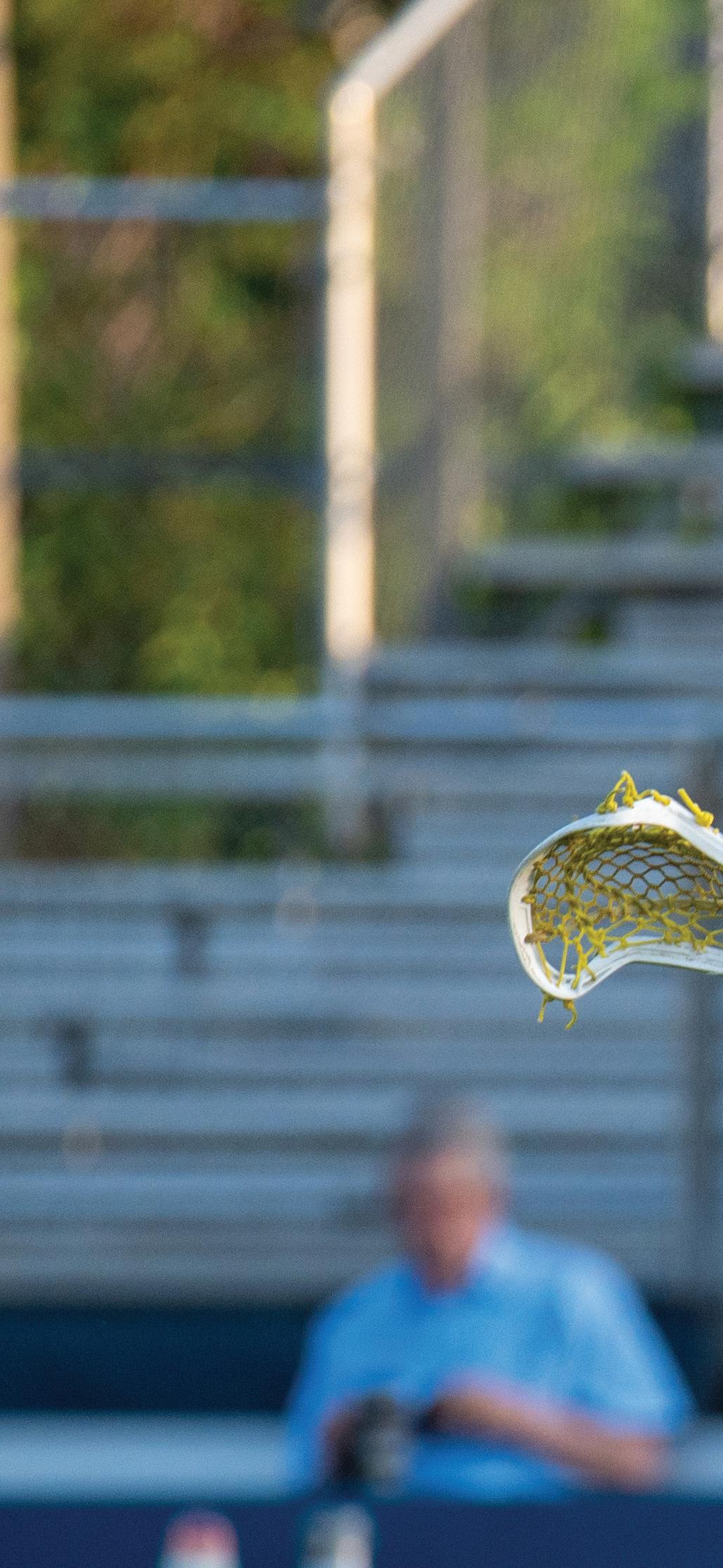
Caroline Crawford ’25 has been a role player on varsity lacrosse for three years.

she misses that perfect strike on the ball, I can see her frustration. When she strikes it well, I have seen her get in the zone and knock down great shot after great shot.
Britton Berson ’25 has played varsity soccer throughout her high school career.
“Britton has been an incredible teammate,” says Coach Rob Ukrop. “While she’s been a role player, she’s been an exceptional teammate who always puts team success first. Britton’s positive approach to life, her sense of humor, and her love for her teammates have been critical in the growth of our young team. She’s also not afraid of the big moment, contributing a huge, game-winning goal against Covenant earlier this season when our team needed a spark off the bench.”
A right handed pitcher and third baseman, Harrison Baxter ’25 has played varsity baseball for three seasons, the last two as a starter.
He pitched 23.2 innings, struck out 19, went 2-1 with one save, and had a 2.37 earned run average. At the plate, he batted .266 with 14 runs batted in.
“Harrison was consistent, supportive, and a great teammate all season,” says Coach Andrew Slater of the Rhodes College signee. “We know what we’re going to get with Harrison every day. He’s going to show up, work hard, and be a team-first guy.”
A tennis captain, Alexander Tan ’25 played as
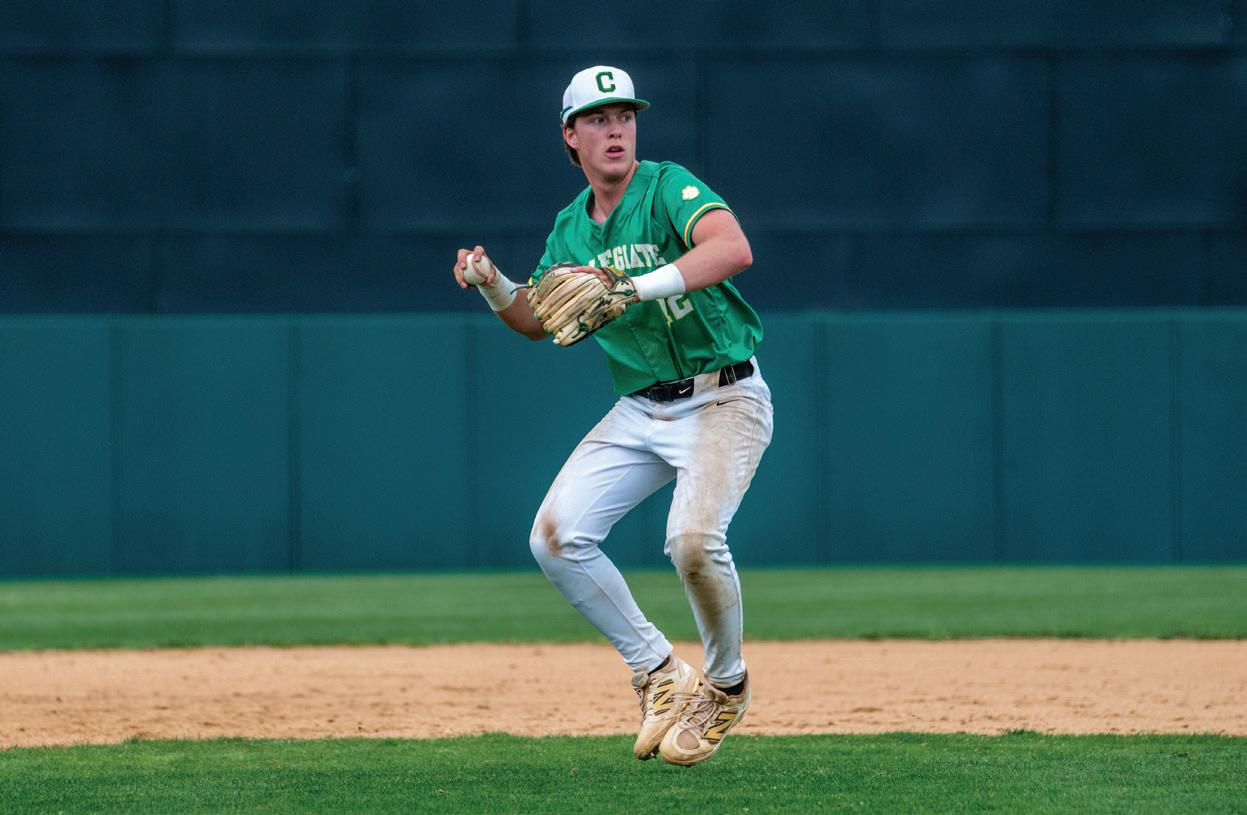
A
right handed pitcher and third baseman, Harrison Baxter ’25 has played varsity baseball for three seasons, the last two as a starter.
high as the No. 5 position in singles and compiled a 6-1 record. In doubles (mostly No. 3) he played with five different partners (Brayden Bogese, Tyler Geldreich, Tyler Kave, Andrew Everett, Fletcher Bor) and recorded a 13-5 mark, including key wins over Western Albemarle, Sidwell Friends, Woodberry Forest, and Norfolk Academy.
“Alexander brought high energy, a high effort level, and a willingness to improve each and every day,” says Coach Karin Whitt. “He also modeled a beast-mode mentality in the weight room and was a significant voice in team room conversations, tennis classroom sessions, and on the bus. While he was a contributing starter, it was his eagerness to improve his teammates and himself that we’ll miss the most.”
Frank MacNelly ’25, who earned his stripes as an All-Prep League basketball player, went out for golf in his final high school season.
“When Frank made the team, I told him that we needed a glue guy who would support his teammates,” says Coach Shep Lewis. “Frank assured me that he’d be a great teammate, and he delivered on that promise. Though rarely in the lineup, he came out to our matches and rooted on his teammates. He brought positivity and a sense of humor each day. Frank was a great addition to the team, and everyone enjoyed his presence.”
He’s going to show up, work hard, and be a team-first guy.”
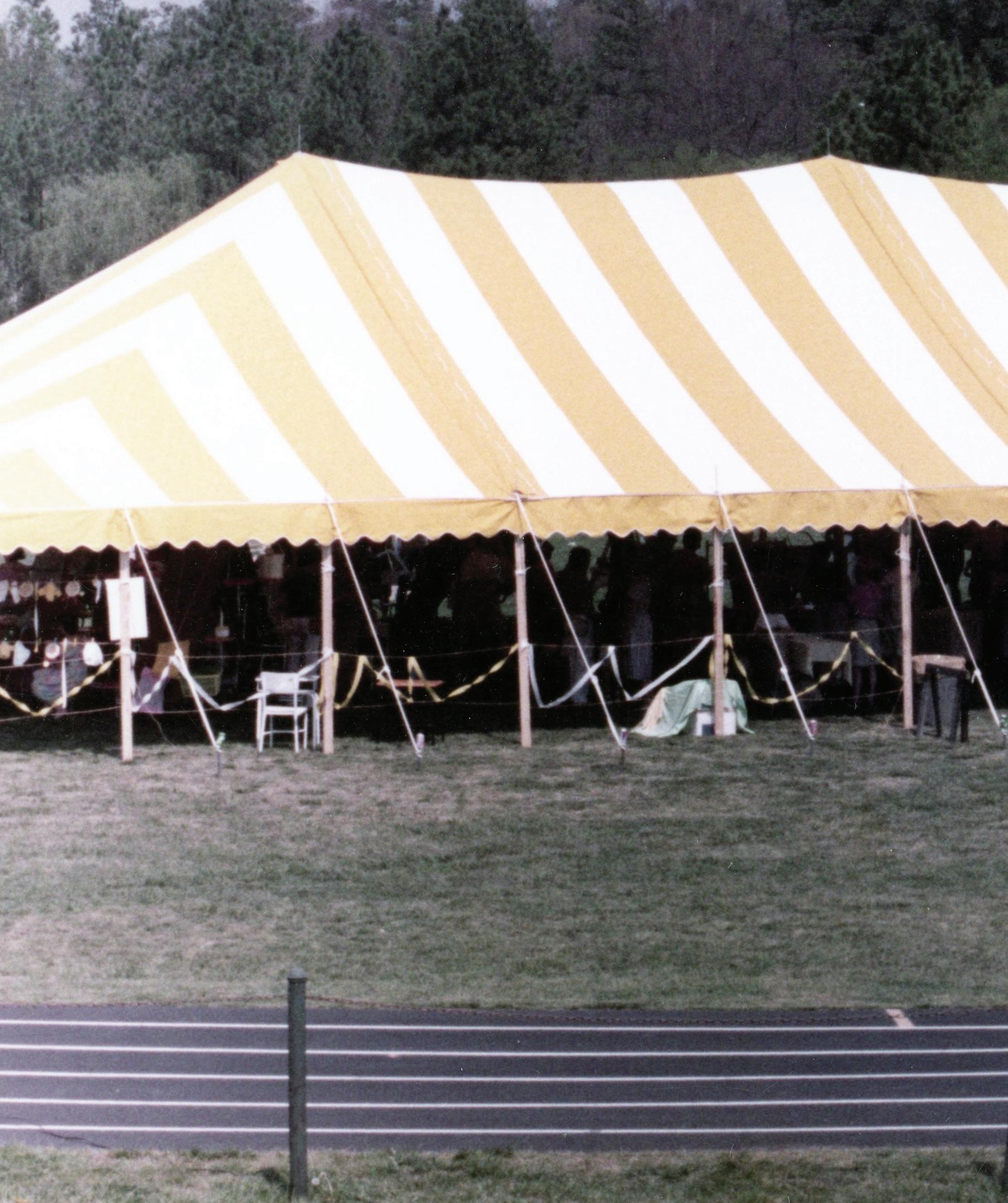
For 60 years, the Village Green Fair has functioned as the Parents’ Association biggest fundraising event and one of Collegiate’s most beloved community gatherings.
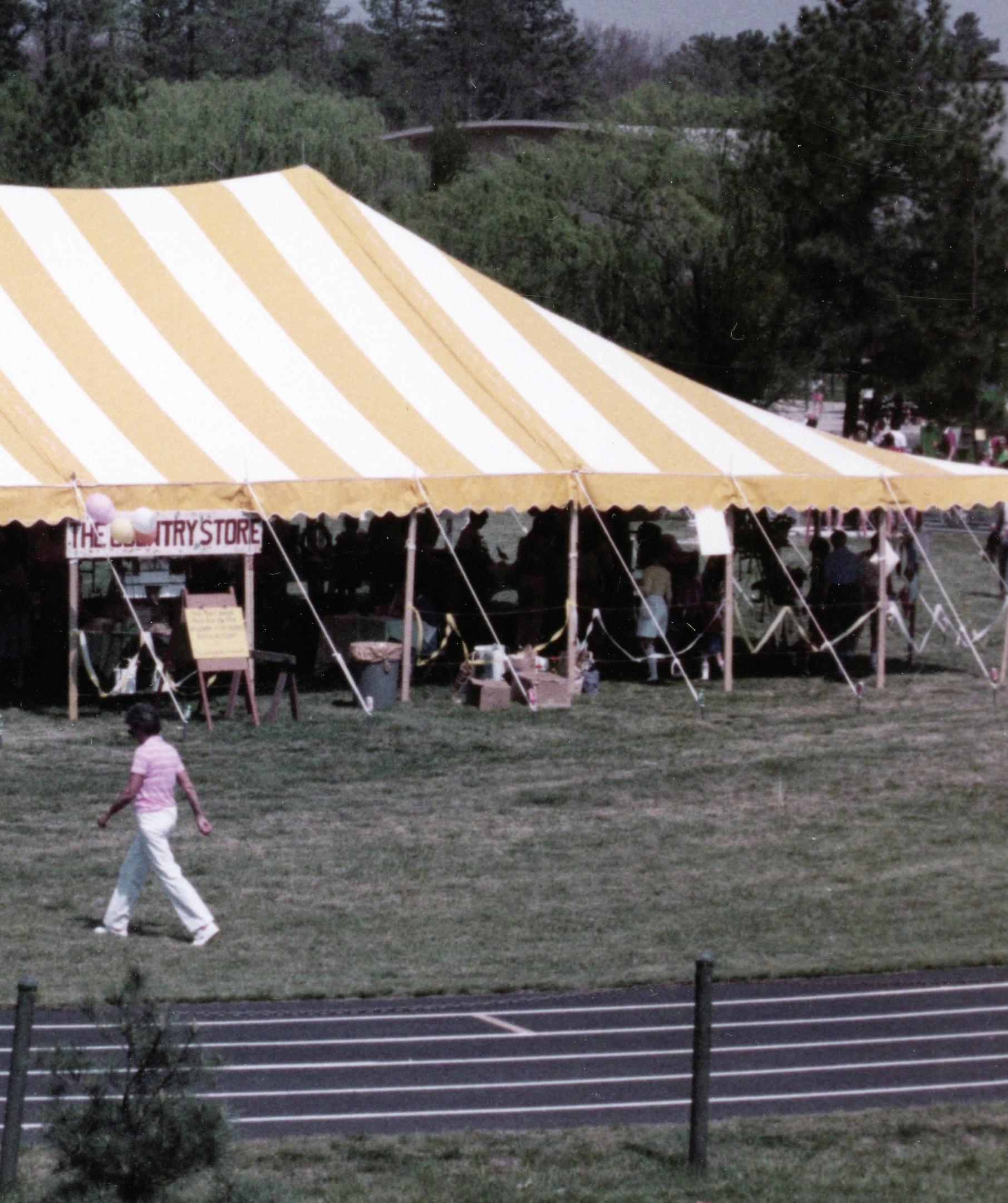
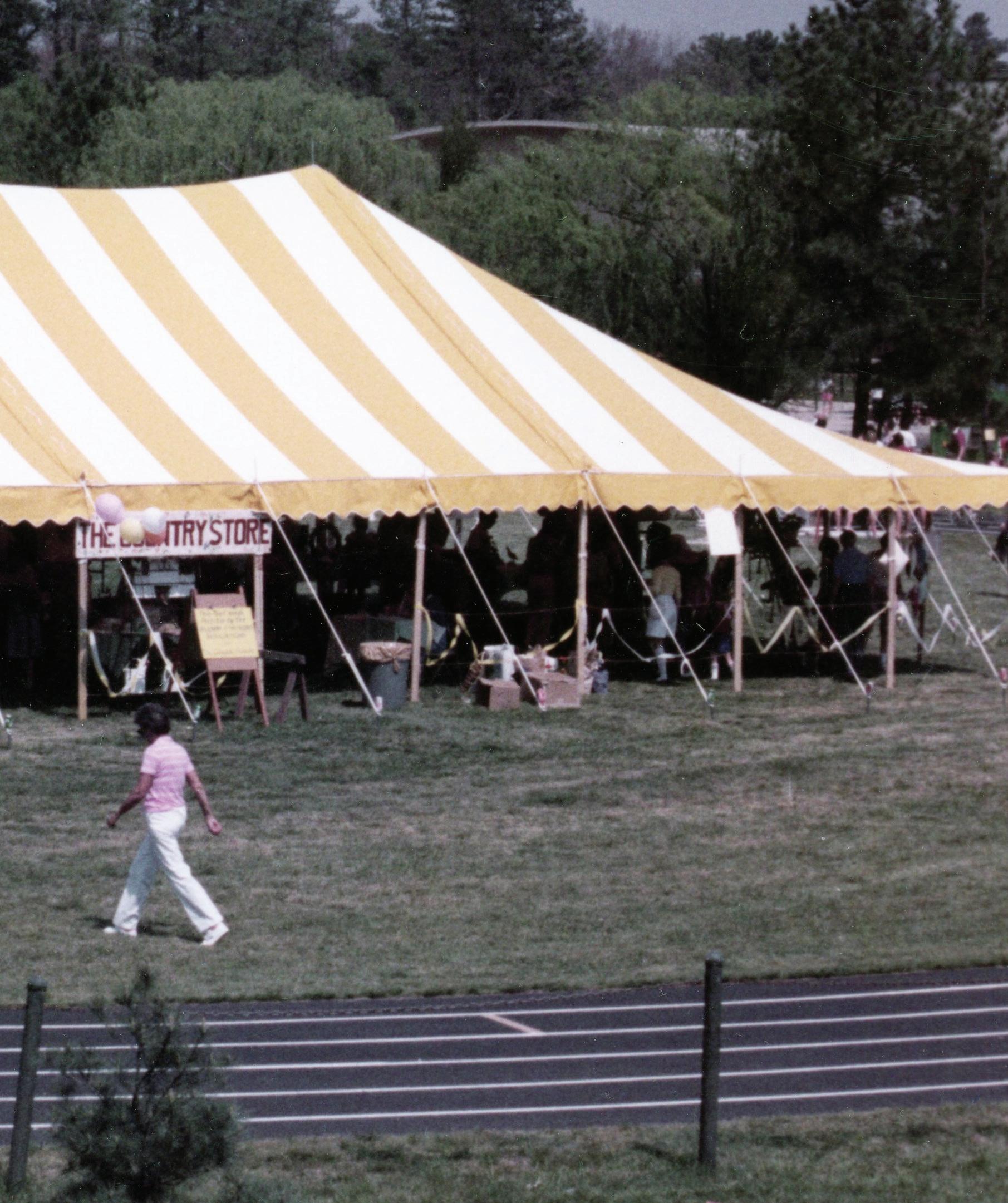
THE ARRIVAL of Collegiate’s Village Green Fair is similar to daffodils blooming. The pitching of the fair’s many tents, standing like trees over the Lower School lawn, always corresponds with spring’s first flower, unpacking their own leafy garments under warmer, more promising skies. Organized by the Parents’ Association, VGF signifies spring. But it’s much more than a sign of warmer days to come. VGF also signifies community and tradition. During the perennial profusion and warmth of spring, families come together on North Mooreland Road to play, shop, and enjoy each other’s company. It’s a tradition that, spring after spring, has been going on for 60 years, and, like the bloom of a flower, it’s an annual occurrence that never gets old. “The Village Green Fair is a fun, beautiful kick off to spring,” says Katherine Farley (P ’32), this year’s VGF co-cair. “It’s a great representation of what Collegiate is all about. Everyone is involved. All ages are welcome. There is something fun for everyone. It’s a perfect, wholesome, happy day in spring.”
Each spring, sunlight’s spectrum falls over the sight of tents, inflatables, and games spread out across the Lower School grounds. There is a cake walk, a lip sync battle, a dodgeball tournament, a petting zoo. In the past, there have been hot air balloons, rides on fire trucks, visits from professional athletes. For 60 years, VGF has been a beloved family affair. And then, one day, these fun, community building events become tradition. These small moments become cherished history.
The first VGF, chaired by Cornelia Hall, was officially held in 1965, with tents, games, and vendors spread across the Lower School lawn. But before the event became what is now affectionately called the Village Green Fair, it was known first as the AFS White Elephant Sale, a fundraiser carried out in partnership with the American Field Service non-profit, intended to raise funds to support an international exchange program. “A hallmark of Collegiate is that it’s always trying to improve and it’s always evolving, and hopefully it’s becoming more and more inclusive. And that’s exactly what my mother was trying to do with the AFS White Elephant, and then later with VGF,” Laura Hall ’68 says of her mother’s intentions behind VGF. “My mother’s point of view was that we needed to expand our school and invite in other cultures. We needed to have people with other experiences. We needed to broaden the school.”
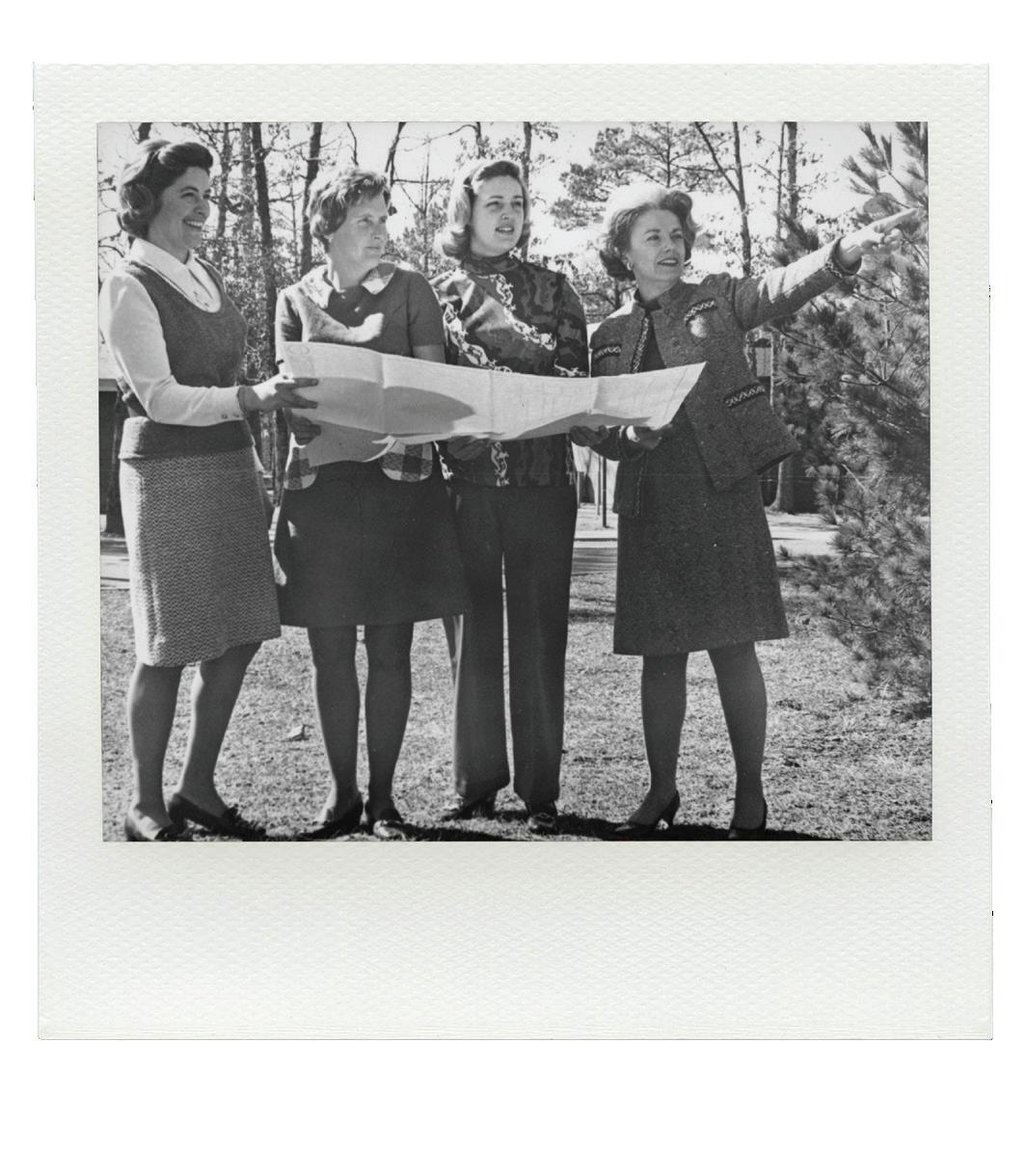
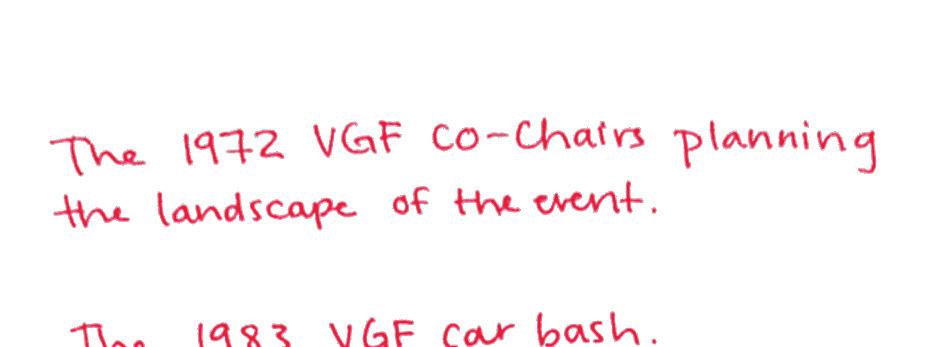
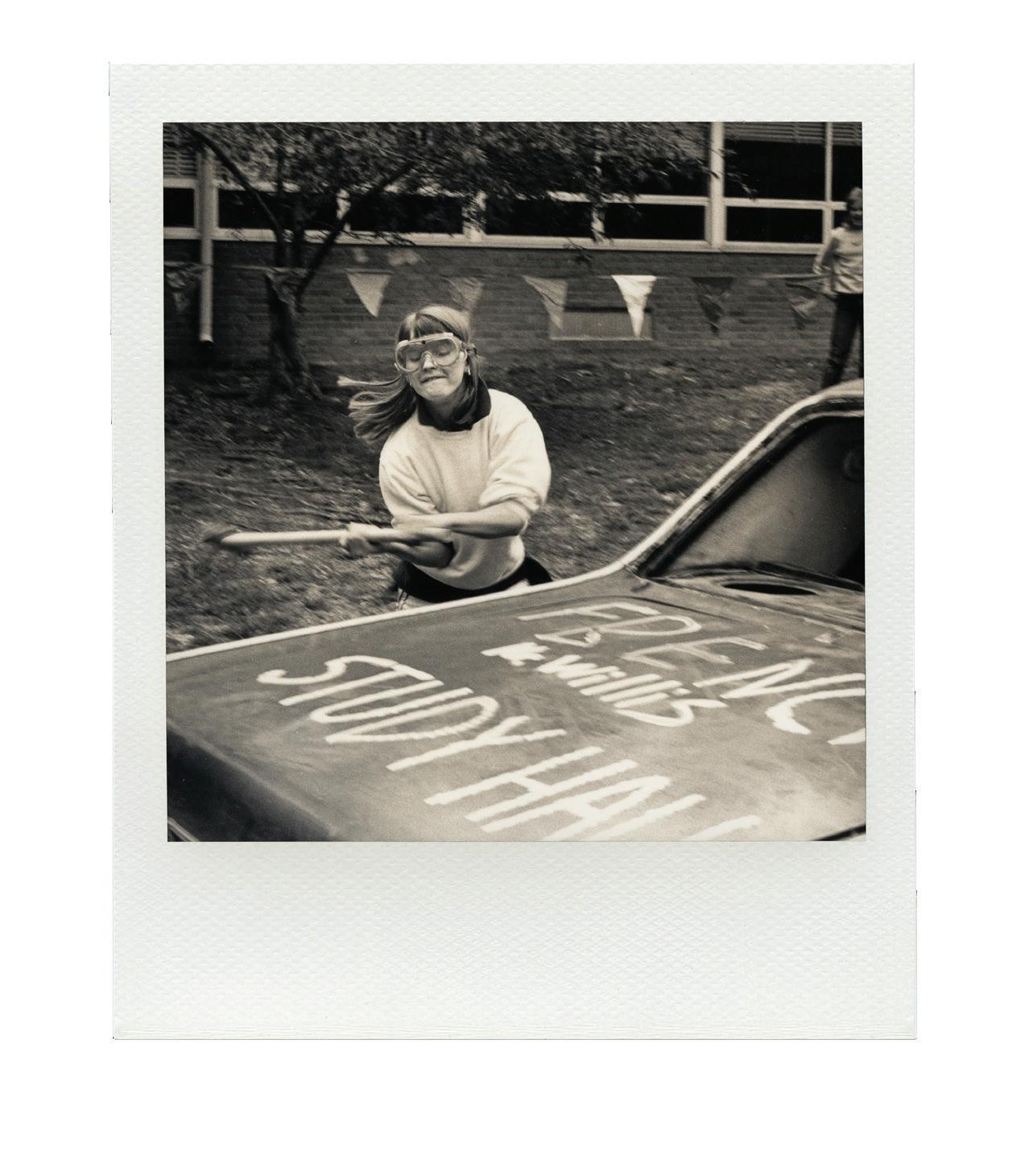
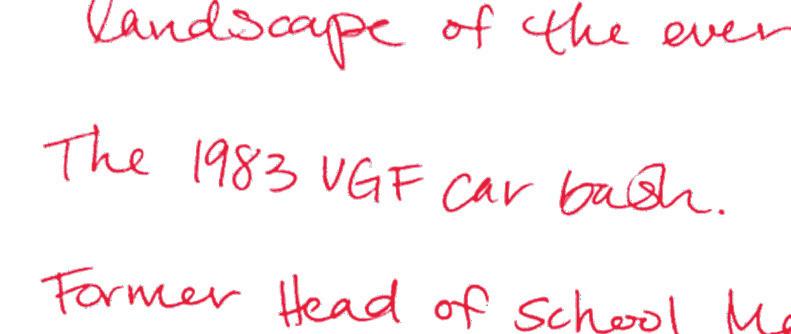
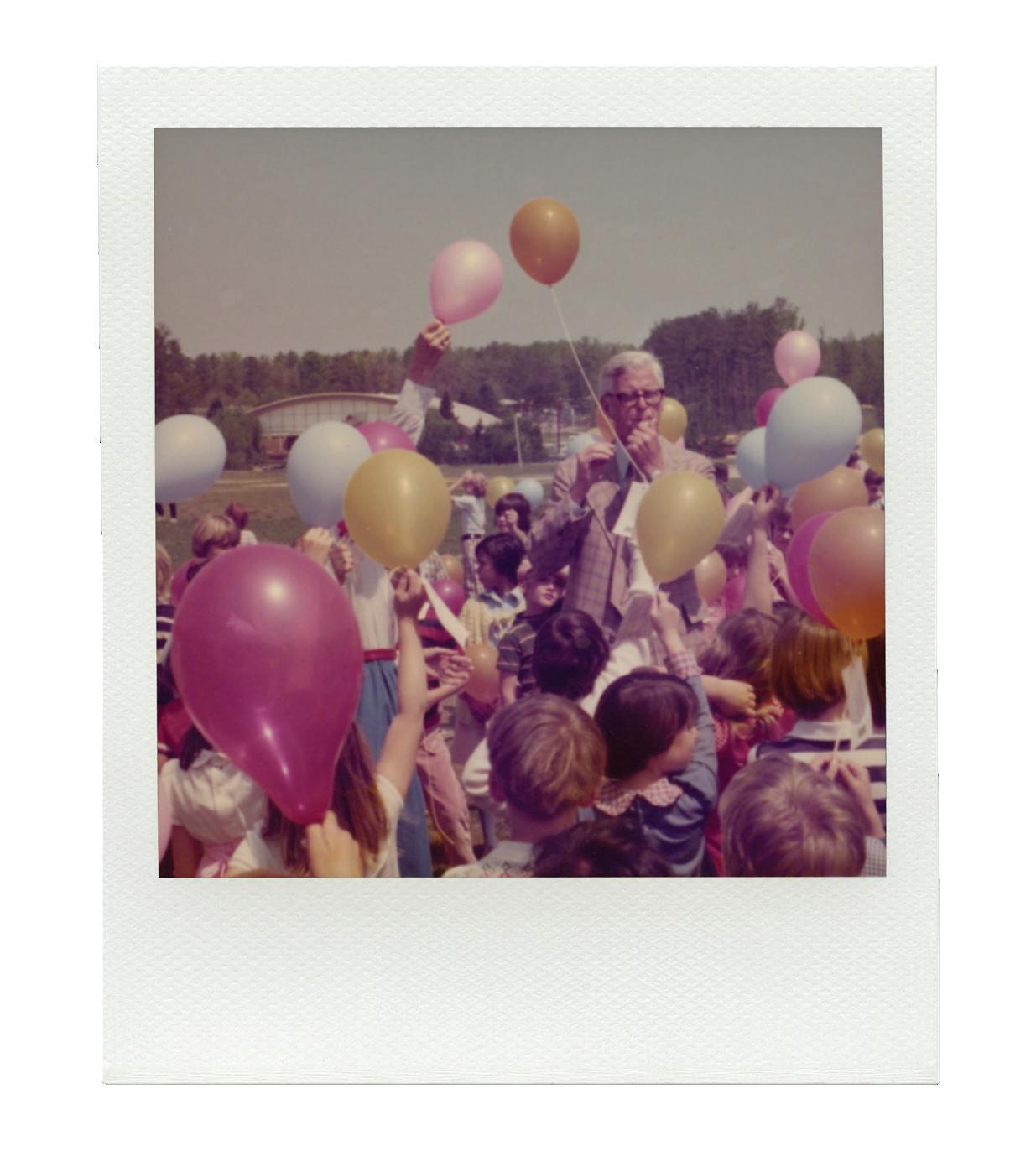
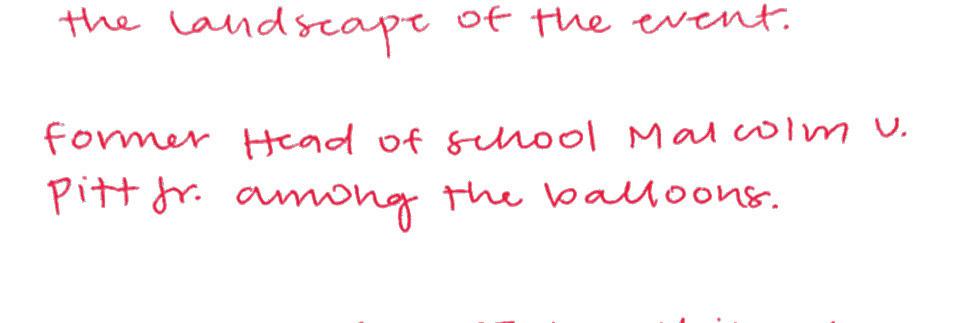
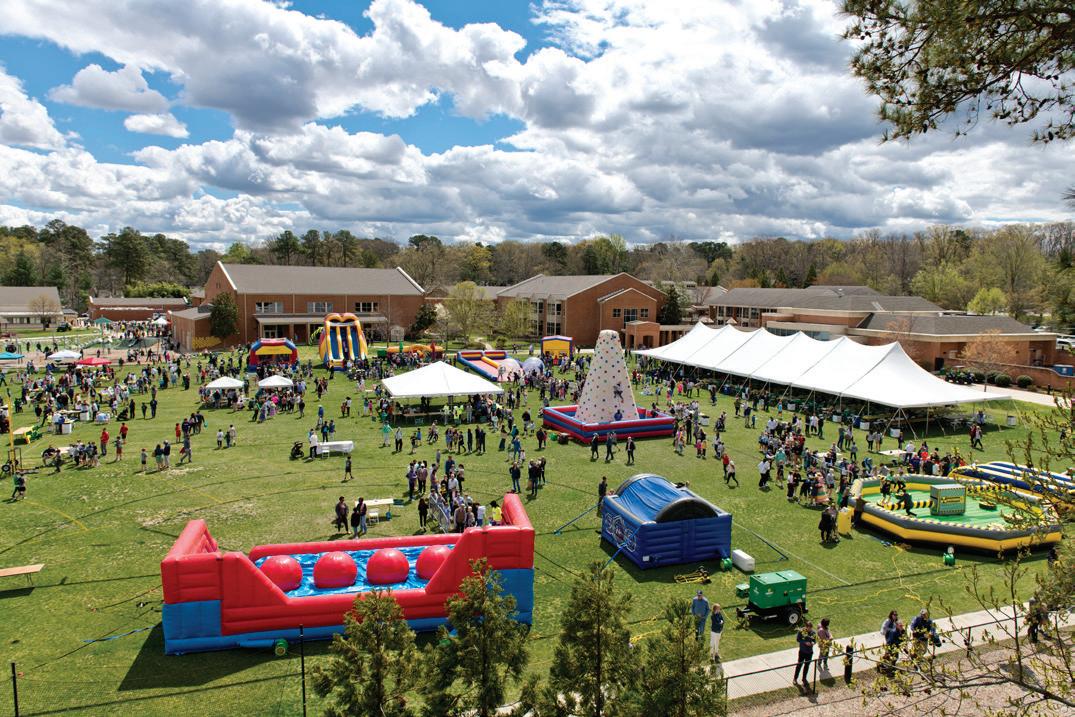
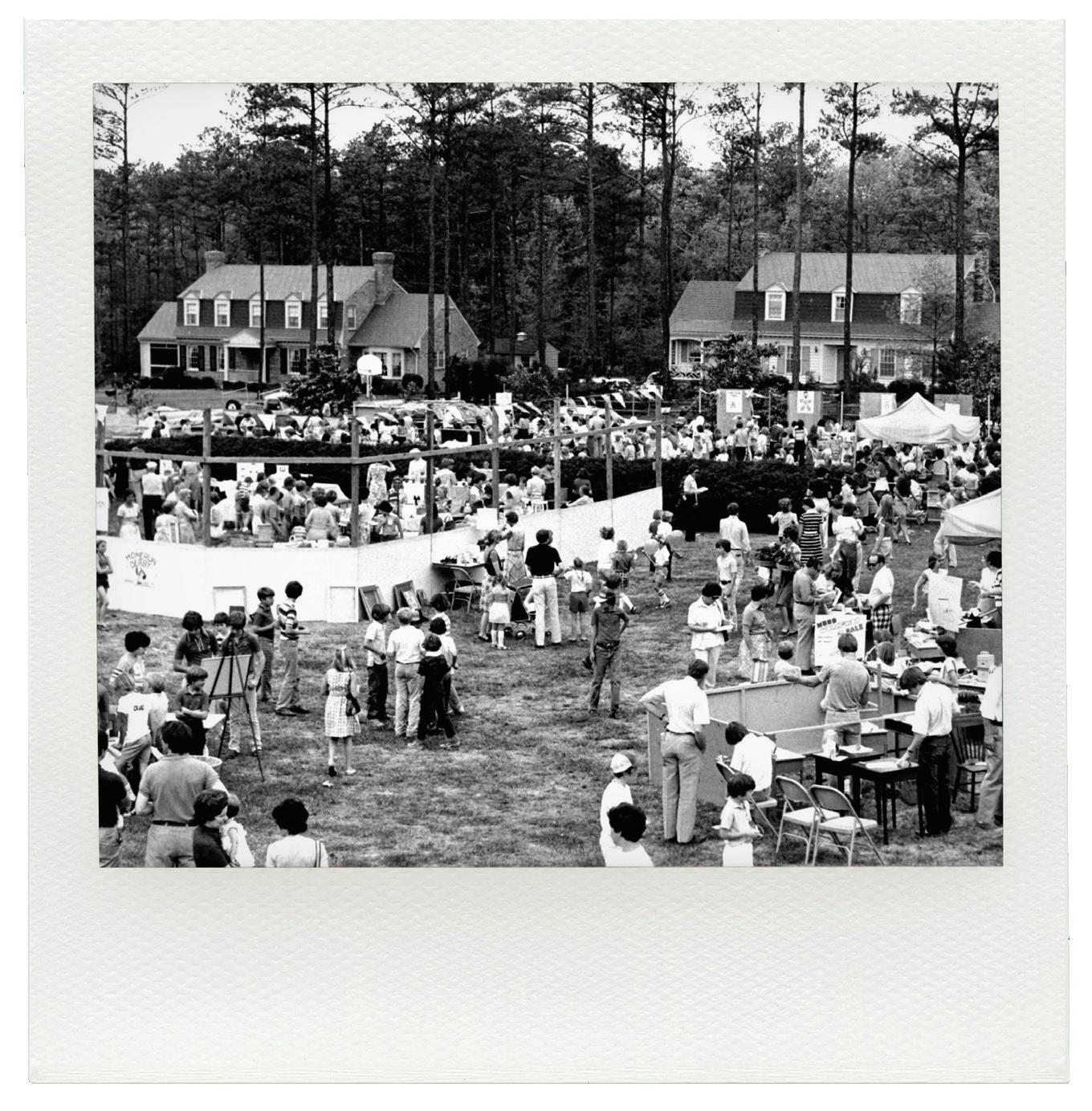


In the process of organizing the first VGF, the PA thought the structure of a bazaar would generate the most success. There would be a medley of carnivalesque entertainment combined with unique offerings that one might find at a bazaar. Instead of hosting a multitude of fundraising events scattered throughout the school year, this event would house everything under one big tent, which would, in theory, generate the most success. With the concept complete, it was time to decide on a name. “Somehow just to call it a bazaar or fair didn’t do it justice,” Hermie Wait Powell, the 1967 VGF chair, wrote in a 1975 Spark essay. “We felt ourselves to be a little community, perhaps not unlike a little village. We would be having the affair, or fair, on the green grass, and so it became known as the Village Green Fair.” In VGF’s first year, that little village raised $3,800.
The event has, of course, grown since its humble beginnings, but its foundational intent — to raise funds to support the mission of Collegiate — remains the same. For 60 years, VGF has functioned as the
PA’s largest fundraiser and has helped raise money for a number of school initiatives. Funds raised through VGF have helped support faculty/staff appreciation initiatives, physical improvements to Collegiate’s campus, the purchase of instruments in the music program, and technology improvements across campus. “VGF is one big annual show of support,” says PA President Patty Chang (P ’26 ’29). “The proceeds we receive from VGF go to fund a variety of things around campus. It’s our way of giving back to the community.”
To make the event a philanthropic success, VGF — and the previous day’s Friday Frolic — requires hundreds of parent/faculty/staff volunteers as well as Middle and Upper School student volunteers. In all, the event requires more than 400 volunteers across the community. It’s a tremendous task, one that takes months of planning and organizing, but it is one that Collegiate enthusiastically embraces. “It takes the whole Collegiate village,” says Director of Parent/Family Relations Frances Coleman ’92 (P ’19 ’22). “It truly requires everyone — from security to
The Village Green Fair is a fun, beautiful kick off to spring. It’s a great representation of what Collegiate is all about.
The purpose of VGF is definitely community building — that’s number one. It is really one of the best first introductions that a family can have to Collegiate... I immediately knew Collegiate was home, and I’m glad we can continue doing that for families.
technology to parents and faculty — to pull this off. It’s a lot of work, but these volunteer opportunities are a great way to get involved with the School in a variety of ways. Because, in a certain sense, you get to take a look behind the scenes of what it takes to put on an event. You really get to connect with Collegiate — its teachers, its campus, its parents, its community — in a special, powerful way.”
A philanthropic endeavor has never been so much fun. Throughout VGF’s 60 years, there have been a variety of vendors operating under the big tent, each entertaining in its own right, and each adding to the lore of the fair’s history. In 1969, a new booth, a pet booth, was introduced, where event goers might have found faculty like Mrs. Bruni tending to goldfish or Mrs. Whiteside keeping up with her turtles. In 1971, one of the highlights for sports fans was the appearance of Ken Willard, the former all-star fullback of the San Francisco 49ers and Richmond native, who graciously chatted with the Collegiate community and signed autographs. The cake walk
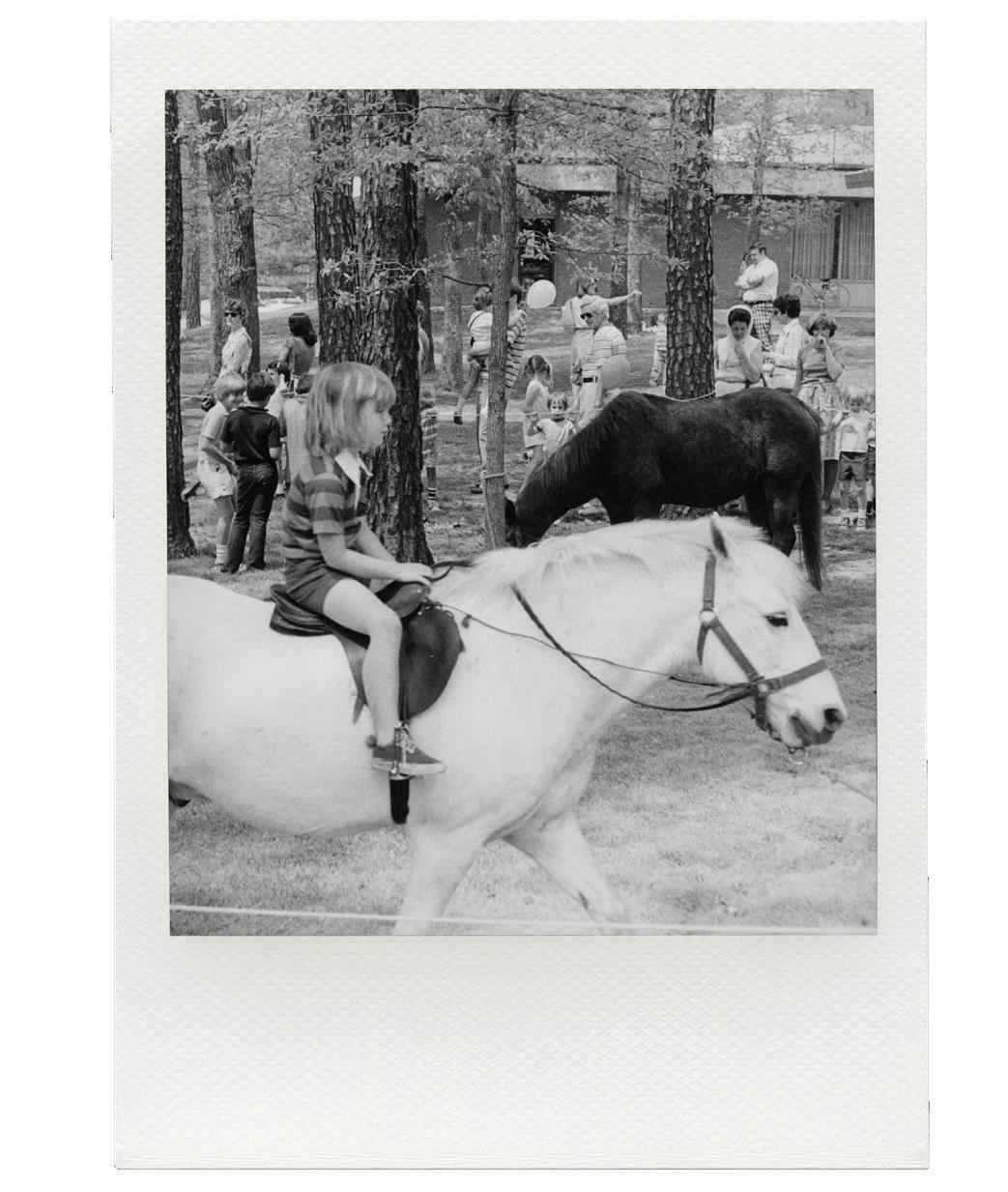

has been a perennial favorite for as long as the fair pitched its first tent. For a few years, attendees could participate in the demolition of a car, which, a surprise to no one and a disappointment to some, is no longer on the VGF itinerary. No matter the game, entertainment abounds. “VGF, to me, is about community and fun,” says Juliet Bloodgood (P ’30 ’32 ’34), this year’s VGF co-chair. “It’s a place for your kids to roam around and enjoy themselves. There are very few occasions nowadays where kids are free to be on their own with friends and just have fun. It’s really a sign of how open and kind and caring this community is. It’s a fun, family event, and I’m lucky to participate in it.”
For many families, the fun of VGF is their first introduction to Collegiate. This year, the Parents’ Association invited incoming JK-6 Grade Collegiate families joining for the 2025-26 school year to the community celebration. Each incoming family received one punch card ticket to enjoy the VGF amusements. “The purpose of VGF is definitely community building — that’s number one,” Chang says. “It is really one of the best first introductions that a family can have to Collegiate. I remember I brought my daughter to VGF as soon as she got her Kindergarten acceptance letter, and it was such a warm and inviting atmosphere. I immediately knew Collegiate was home, and I’m glad we can continue doing that for families.”
This year, on the day of the fair, Hall, who fondly remembers watching her mother Cornelia put together the first years of the fair and who recalls her own fun under the big tent, took a walk around campus. “I saw a bunch of Cougars running around, little children wearing T-shirts that said, ‘60th VGF,’ and I just thought how much my mother would have loved to see this,” she says. “She would be so extremely touched by the love the community has for VGF and the fun the kids experience on this day.”
What’s old is new again, evergreen under the big tents of the Village Green Fair. “Even though things ebb and flow within VGF, the main tradition stays the same,” says Farley, whose efforts this year emphasized the strength of Collegiate’s long-standing tradition. “There is just a general feeling of what a special community we have here. We have kids running around doing some of the same activities, year after year, enjoying the same traditions.”
In Powell’s 1975 Spark essay on VGF, she concluded by writing, “Long live our Village Green Fair!” It’s a testament to the School’s enduring traditions that we conclude with an affirmative confirmation that, yes, the fair has indeed lived on.
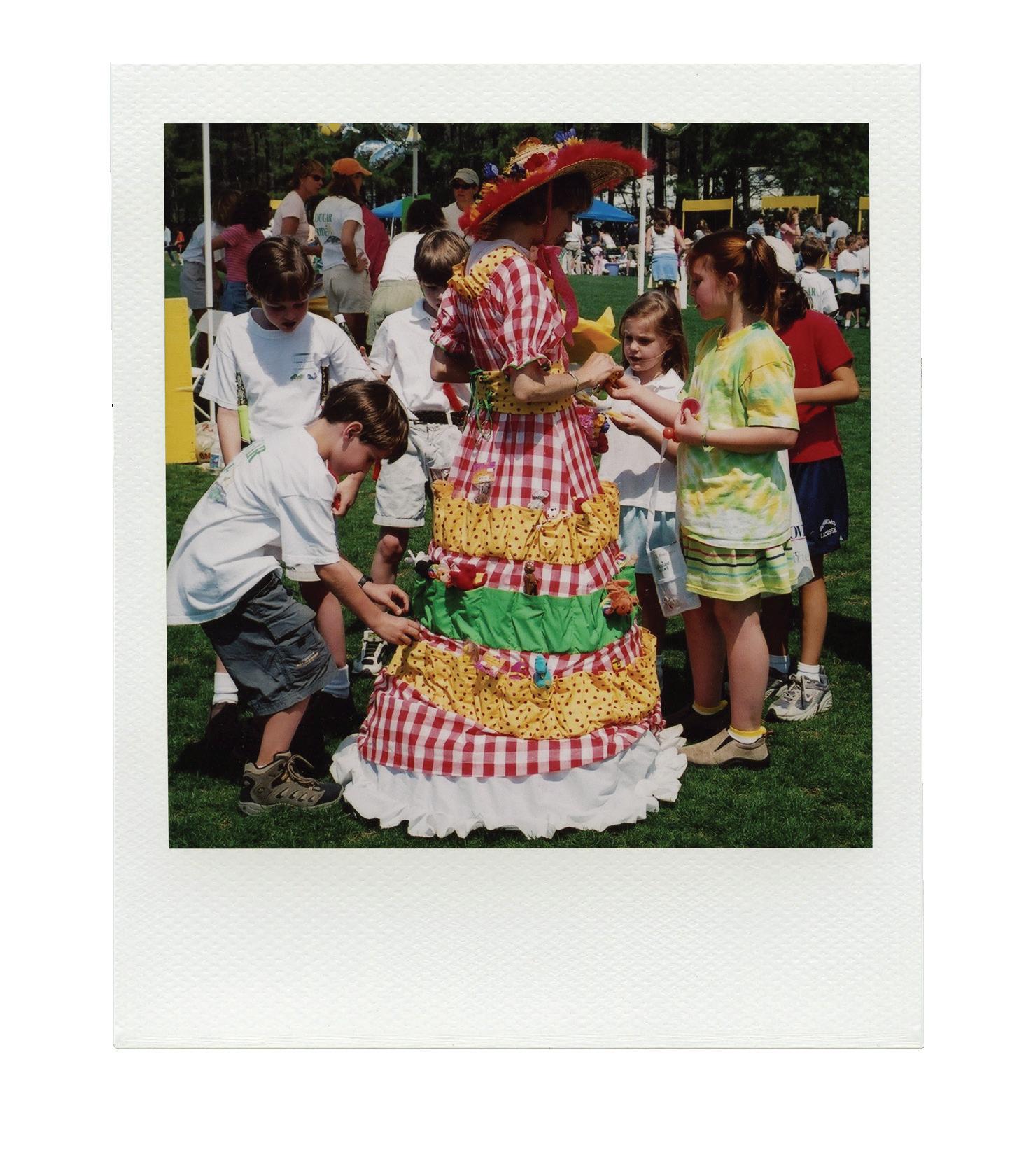
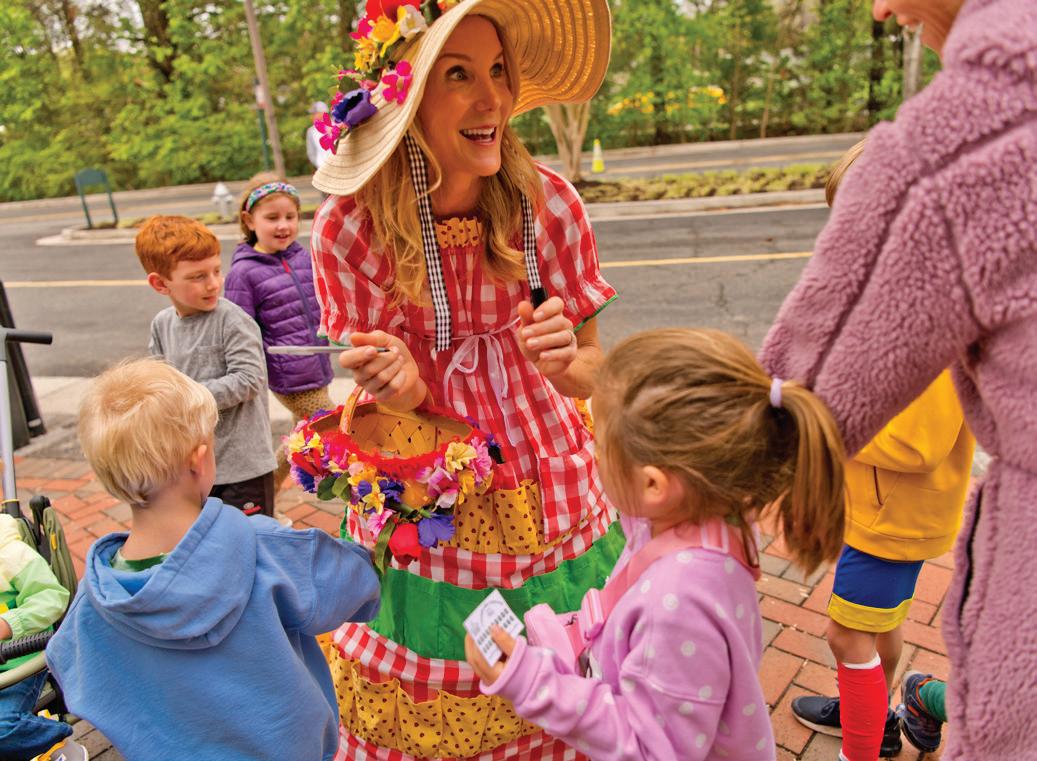
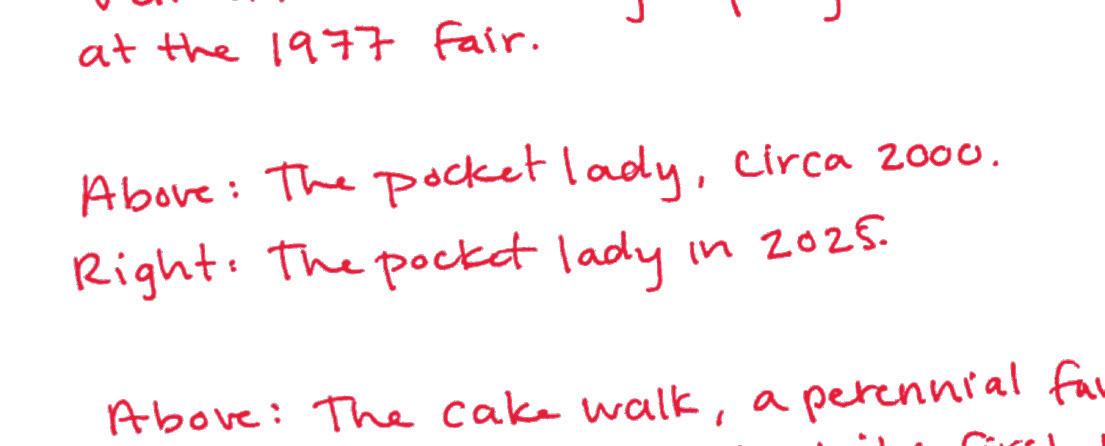
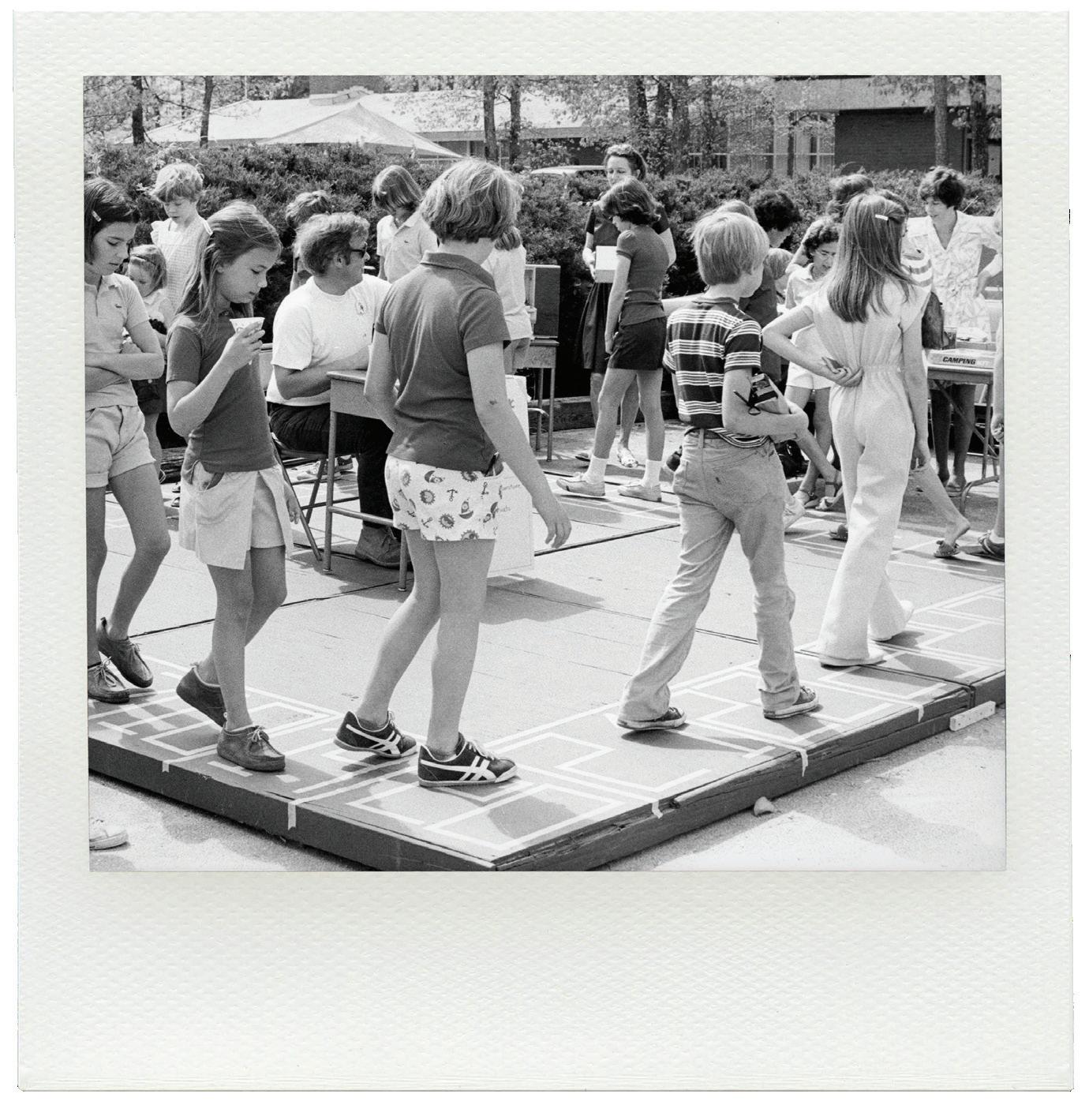
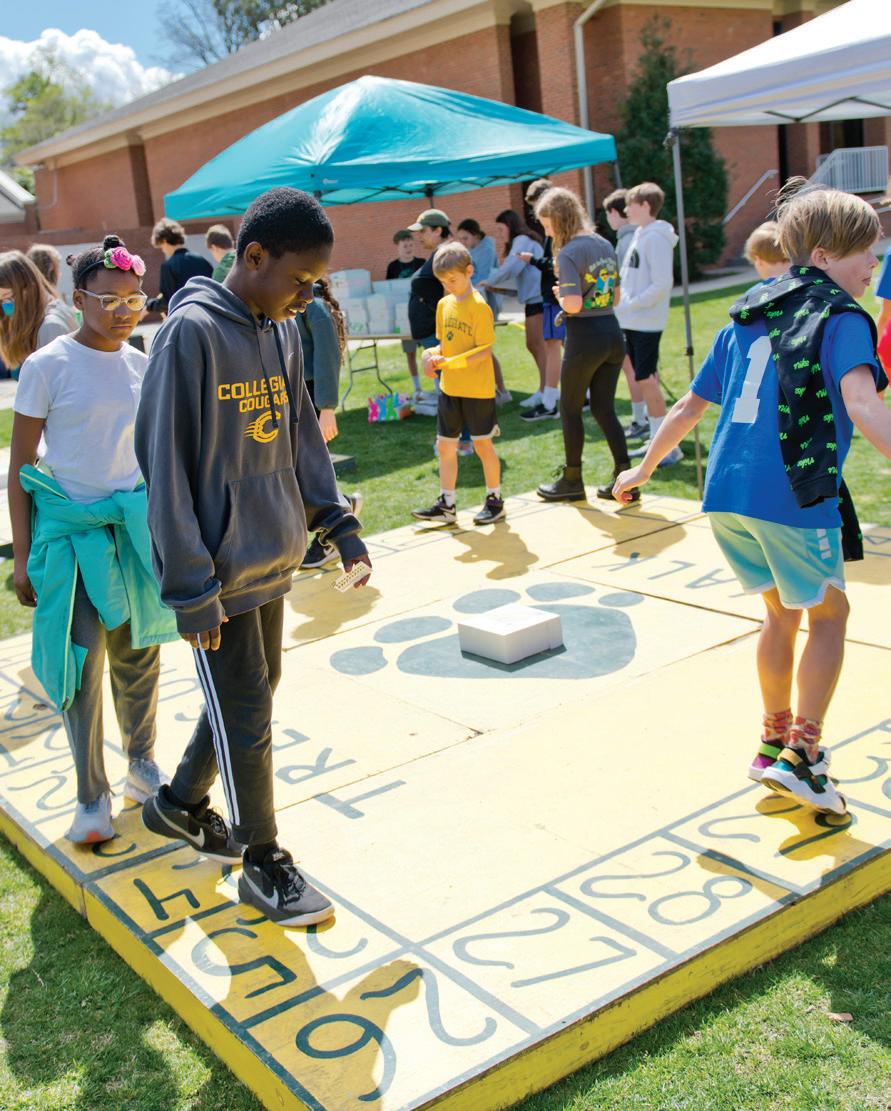
Congratulations to the
Class of 2025
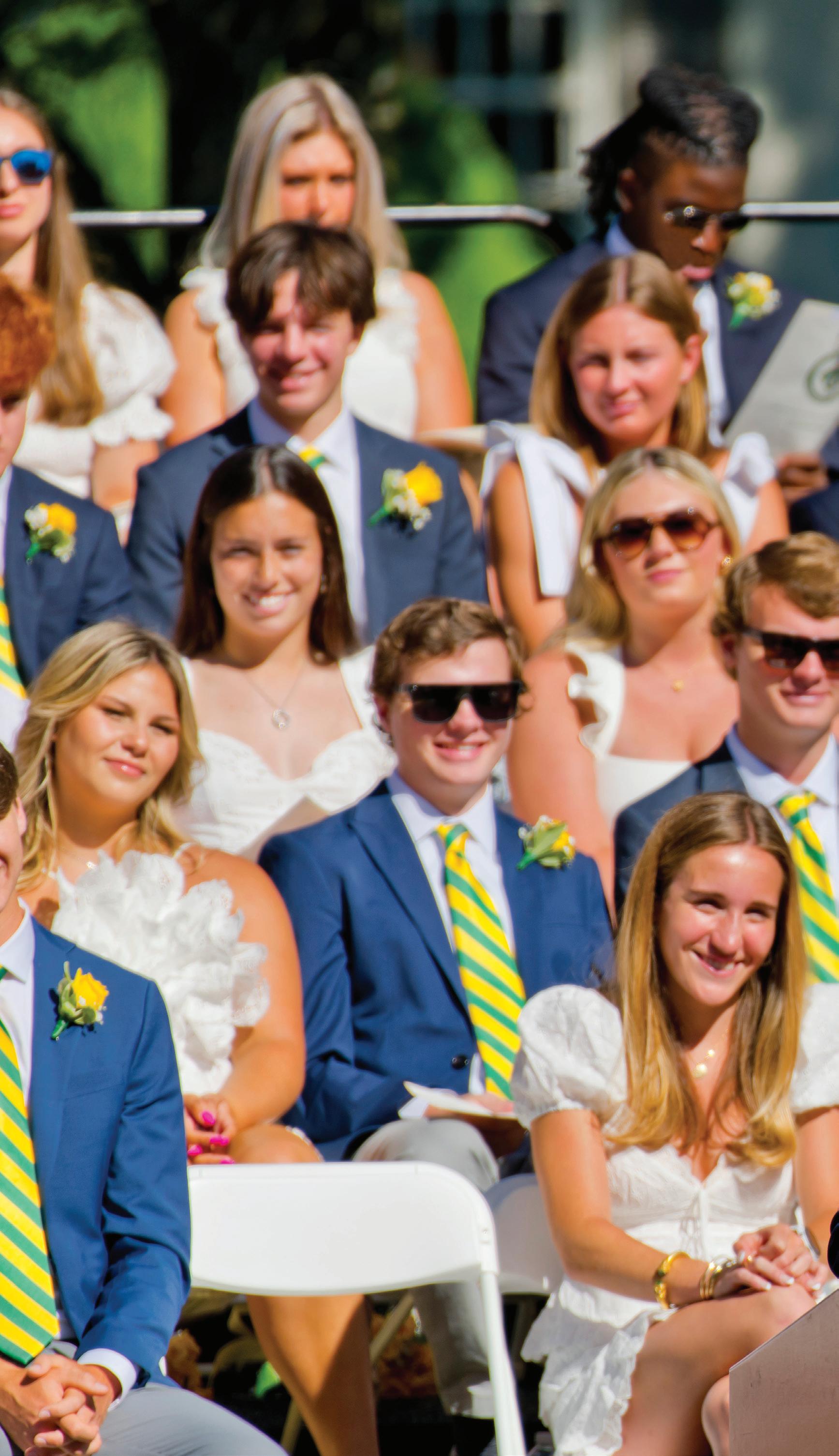
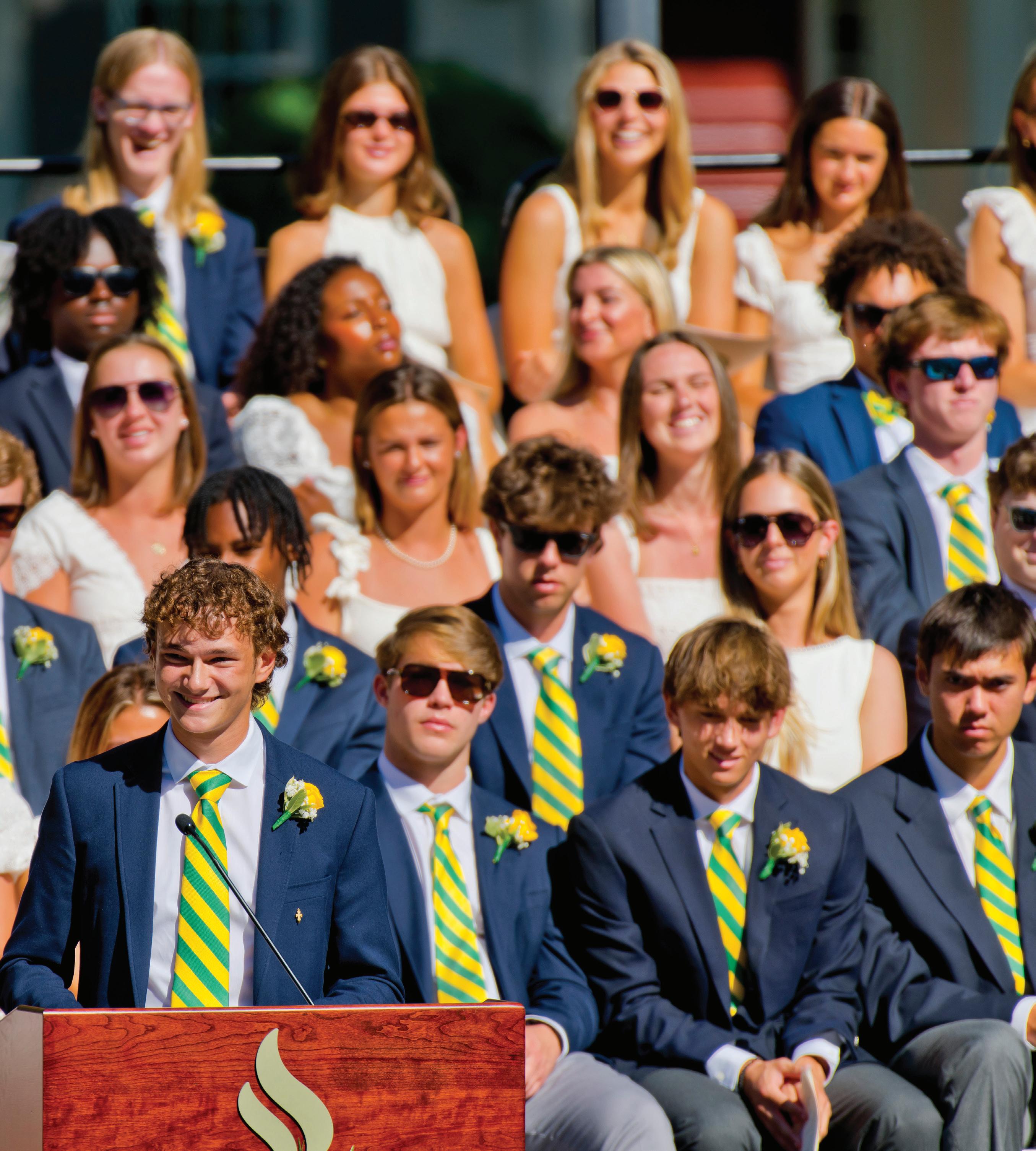
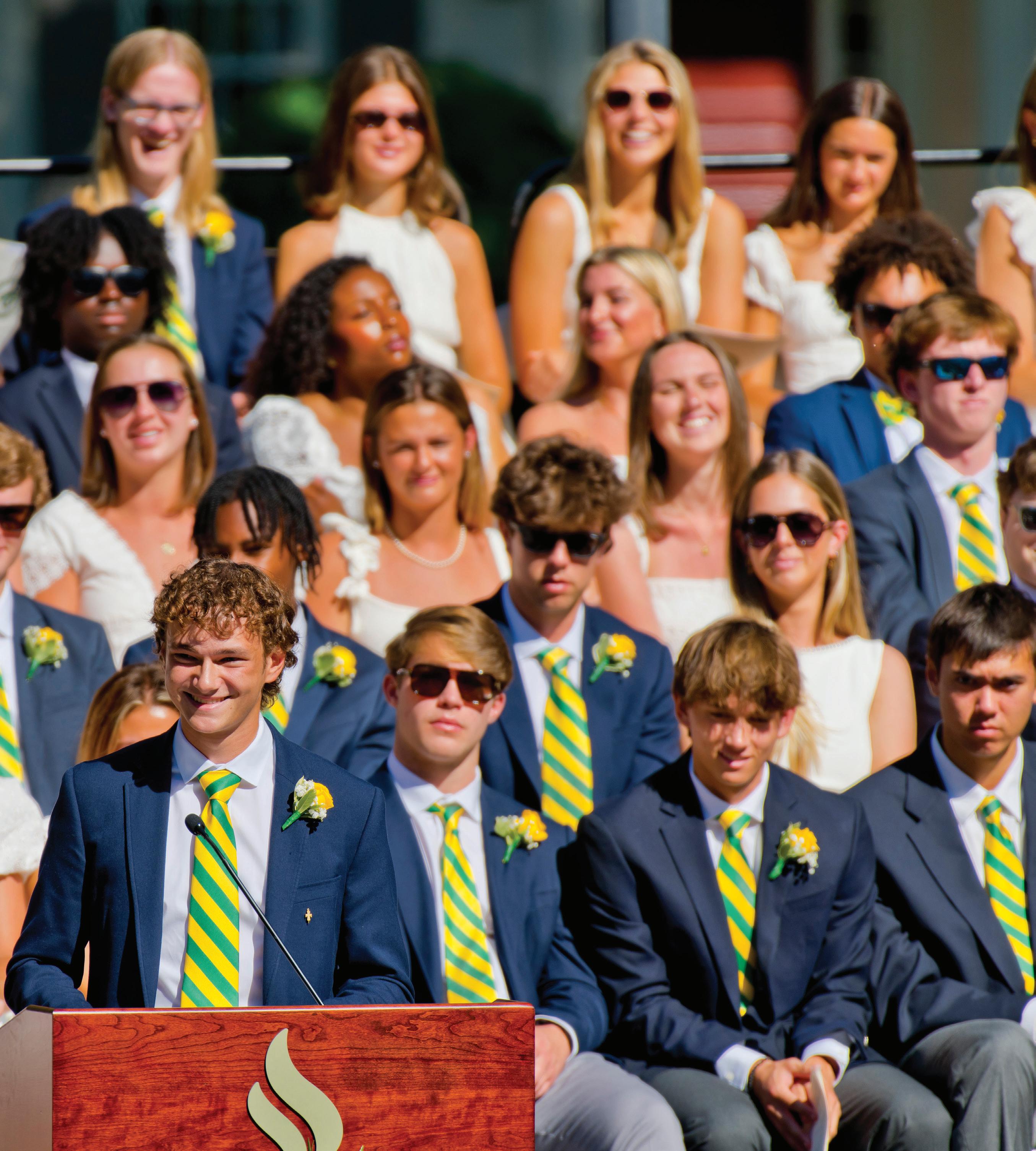
Collegiate Graduates Urged to Continue Growing

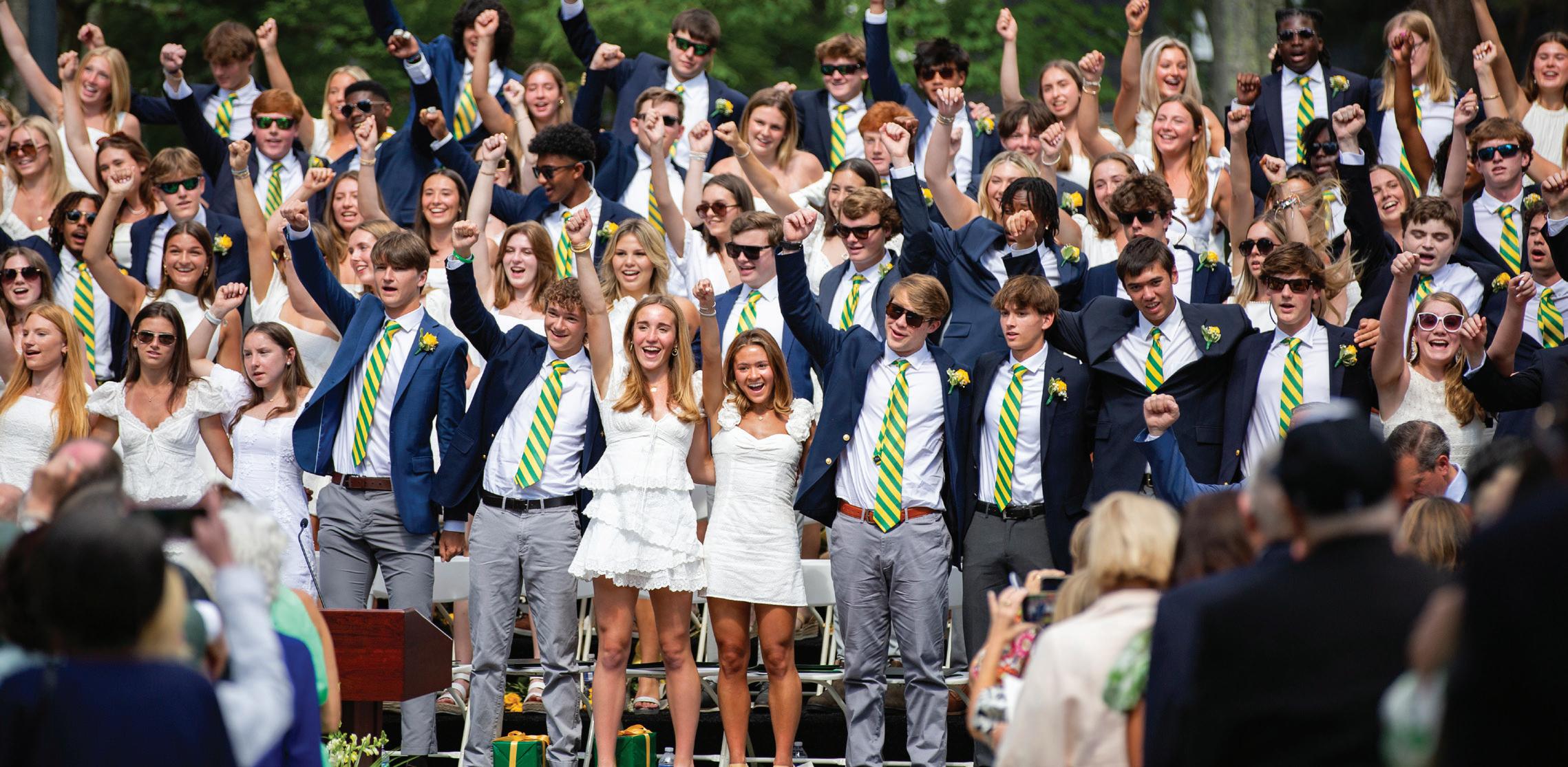
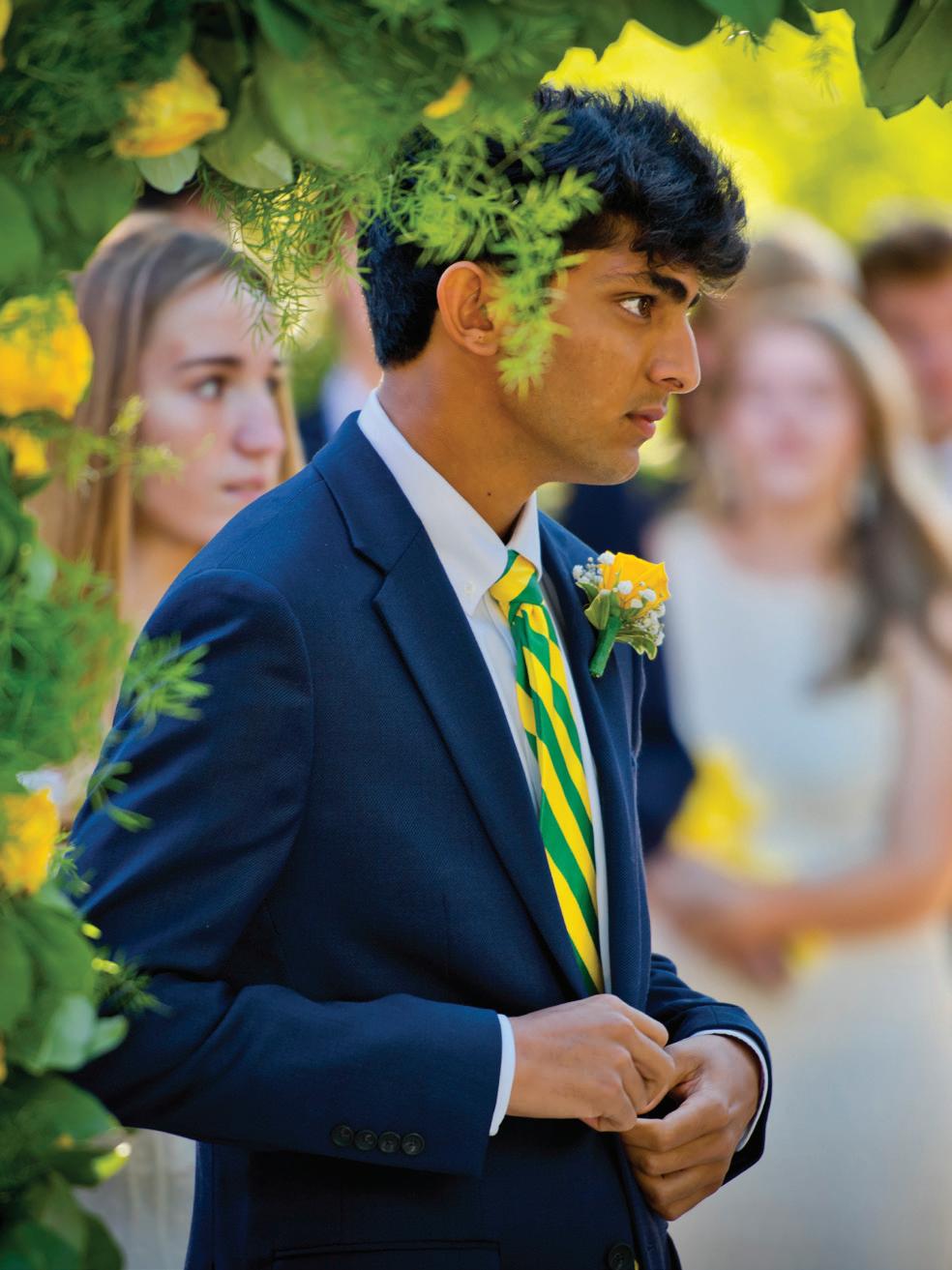
Collegiate School’s 110th Commencement took place in late May, with students of the Class of 2025 seated on stage in front of the 2,000-plus family members and friends who gathered to celebrate them.
Commencement is one of those events, first registered on a calendar, that feels as though it will never arrive. Then, suddenly and all at once, dressed up with the green-and-gold regalia, it’s here.
At least that’s how it often feels. But Commencement, really, is a slow, silent preparation, like a butterfly blooming from its cocoon. Getting a student ready for Commencement begins the moment they arrive on campus, when a careful, diligent teacher welcomes the young Cougars into class. There is the preparation of the ceremony — when the diligent grounds crew begin laying fresh grass seed on the lawn in front of Flippen Hall — and the preparation of students for that ceremony. Both are of great importance, and both are in service to the students, a practice and mission the School has endeavored to take on for more than a century.
Collegiate’s Commencement, that long-awaited, it’s-not-anend-but-a-beginning rite of passage for 143 Seniors, went off without a hitch on the crisp, sunny, idyllic morning of Friday, May 23.
When Jeff Mancabelli stepped up to the podium to deliver his opening remarks, he paused and looked out at the gathering before him, taking in his first Commencement as Head of School. As the
first class to graduate under his headship at Collegiate, these Seniors have meant a lot to him, and, to help him prepare his remarks, he asked the Class of 2025 what they felt the audience should know about them.
The Class of 2025 wanted the attendees of their Commencement to know that they have taken great joy in their education, that, under their leadership, programs such as robotics and speech and debate grew, and that, as a class that entered the Upper School having to wear masks, they grew, too — as both students and citizens. They also made sure to tell Mancabelli how much they loved and their teachers — every single one of them, including the late Debbie Miller and Dan Bartels.
“I believe the class was modest in their responses,” Mancabelli told the crowd. “Seeing them through the lens of their senior speeches, I found myself asking the same question, how do they do it all and how do they do it so well?”
The class, Mancabelli went on, displayed a voracious versatility in their interests, endeavors, and accomplishments. Their success both in the classroom and in extracurriculars is indicative of their strong character, their love of learning, and their excellence. As they continue their educational journeys, their efforts have been rewarded. “The Class of 2025 earned over $13 million in College Scholarships and received 718 acceptances into 190 colleges and universities,” Mancabelli said. “During the last four years, they were part of 29 league championships and 18 State Championships. 18 State Championships in four years is a new school record.”
In his speech, Mancabelli made sure to acknowledge the parents of the Class of 2025, asking the graduates to give thanks to those who supported them along the way. It was a long, polite, and humble applause of gratitude.
“As you prepare to leave Mooreland Road, let the world see in you what we already know: Inquisitive thinkers who ask critical questions, compassionate leaders who lift up others, and responsible citizens who stand for something greater than themselves,” Mancabelli concluded. “We congratulate you today and wish you all the best in your success in college.”
The two valedictorians of the Class of 2025 — James Galgano ’25 and Sadie Webb ’25 — were next to speak.
Webb, who finished her career as a student at Collegiate with the highest GPA ever recorded in School history, began by thanking everyone who helped her reach the day of her Commencement — her parents, her teachers, and her classmates.
A Collegiate lifer, Webb has felt as though Collegiate has been shaping her into the student she has become since the moment she stepped on campus. “While Collegiate provides for us to find our talents, they don’t let anyone rest there,” she said. “Teachers encouraged me, pushed me, challenged me — but never limited me to just ‘stick to my strengths.’ For that, I am most grateful. This school has given me my best friends, lifelong relationships that would never have been possible at a place that solely prioritized academics. Collegiate has never allowed my personality to be just ‘school.’”
As she made her way through Senior year, she felt herself becoming complete as a student. And then she discovered
her passion for running. This is strange, she thought: Maybe I’m never done growing.
It’s that lesson that Webb imparted to her classmates. Even as you reach these monumental moments in your life, you are never done making discoveries. “I don’t think we are ever done growing, changing, becoming,” she told the crowd. “Graduation sometimes feels like an endpoint, a stop. It feels like we are grown up, fully formed in our identities. But we aren’t. There’s always new parts of us to explore, new surprises to unearth. So let’s remember to take the chances, find the openings, the moments.”
Galgano, for his speech, returned to a topic he wrote about when he was first applying to Collegiate in 8th Grade. When he was younger, Galgano, on a family vacation with his parents in Italy, accidentally split from his family while touring Vatican City. “Among the towering pillars and elaborate tapestries, I found myself wandering into an entirely different tour group, whose leader quickly ushered me into the hands of the guards,” he explained.
To a certain extent, feeling lost is a natural fact of life and, especially as the Class of 2025 looks to graduate, there is value to getting lost — even if it happens to be within Vatican City. “If we are constantly looking forward without any sense of where we are, we will never find our way out of the woods,” Galgano said. “By looking and living within the present moment, in every place you find yourself, you can never truly be lost — even if you find yourself all alone in the Vatican.”
Galgano encouraged his classmates to lean into the journey and the thrill of being lost. Our endless journey toward home is in fact our home. “To the Class of 2025, if any of you find yourselves lost in the next few years, whether in what you want to study, what you want to do with your life, or if you actually get turned around in large buildings — it happens to the best of us — take it from an expert: stay in the current,” he said.
Galgano concluded with a reminder: Wherever you get lost, Collegiate will be there with open arms, there to help you find your way. “No matter where our lives take us, and how lost we get along the way, a piece of us will always be here, ready to help each other.”
Before awarding diplomas to the graduates, Head of the Upper School Patrick Loach, coins of sunlight dropping through the huge oaks shading Flippen Hall, addressed the graduates. Loach spoke with passion about the respect, honor, and range of talents the Class of 2025 has exhibited during their time on North Mooreland Road. Their incredible talents are what make Collegiate special. “The reason I love Collegiate is because of the students,” he said. “And I think that I’m not alone. If you were to ask the faculty — if you could be a fly on the wall here for a day, a week, a month or a year — you would see some pretty amazing kids, and you would have a lot of optimism about the future.” Then the time finally came for them to graduate. This watermark day, the one each of the students knew would eventually arrive, finally came, and they were ready for it. They’re ready for what’s next, too.
Awards Given at Commencement
GREENBAUM AWARD - VALEDICTORIANS
James Wilmington Galgano ’25
Sadie Garnett Webb ’25
E. ANGUS POWELL AWARD
Kenneth Jai Spicer ’25
ROSEMARY AWARD
Elizabeth Patricia Clarke ’25
DR. MARTHA E. KOLBE AWARD
Peter Friedrich Hartmann ’25
LOUISE MATTERN COLEMAN AWARD
Harper Davis Murphy ’25
CHARLES F. WILTSHIRE CITIZENSHIP AWARD
Omar Rahman Lanneau ’25
JOHNEL TATE POFFENBERGER AWARD
Sarah Shepard Adamson ’25
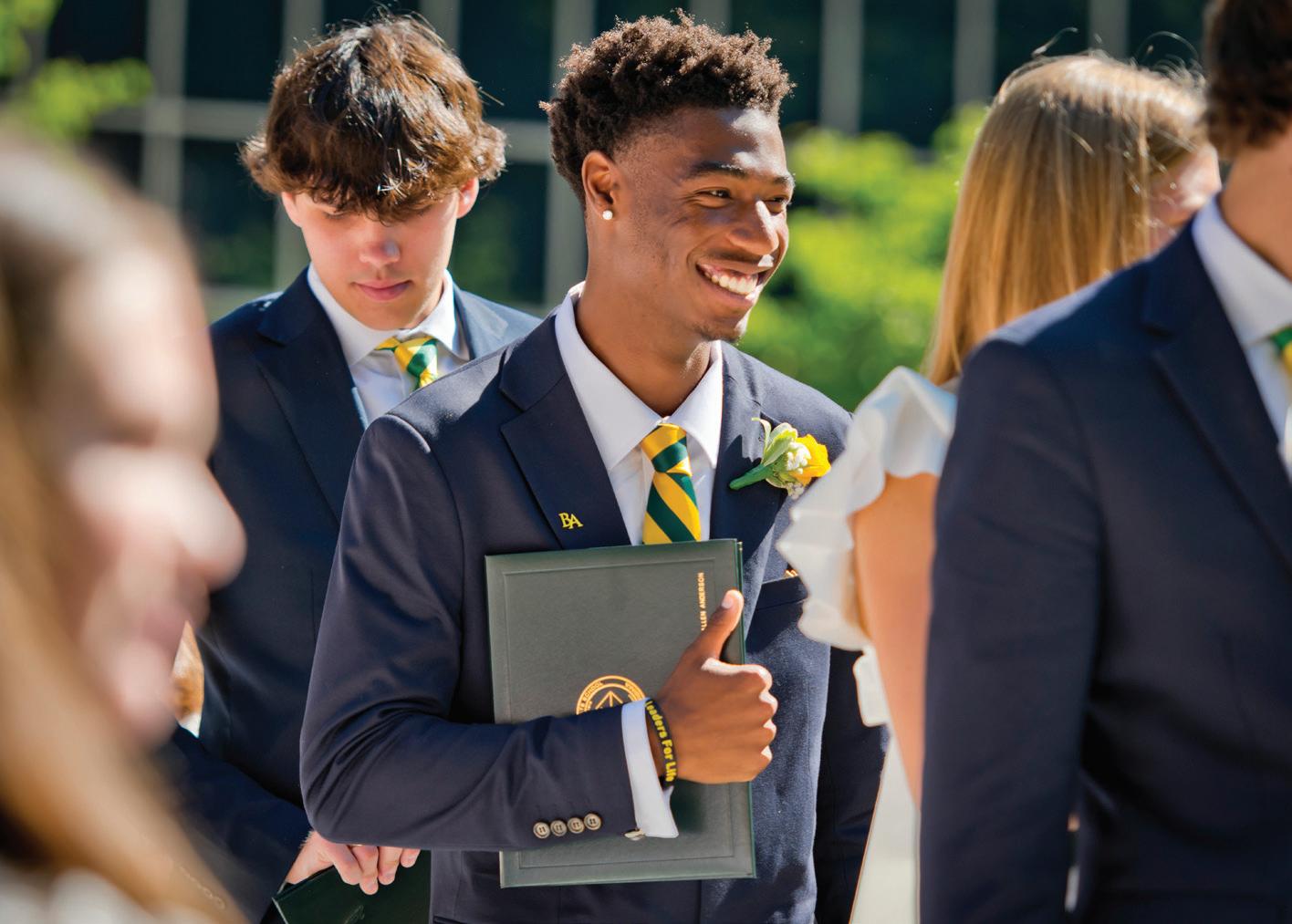
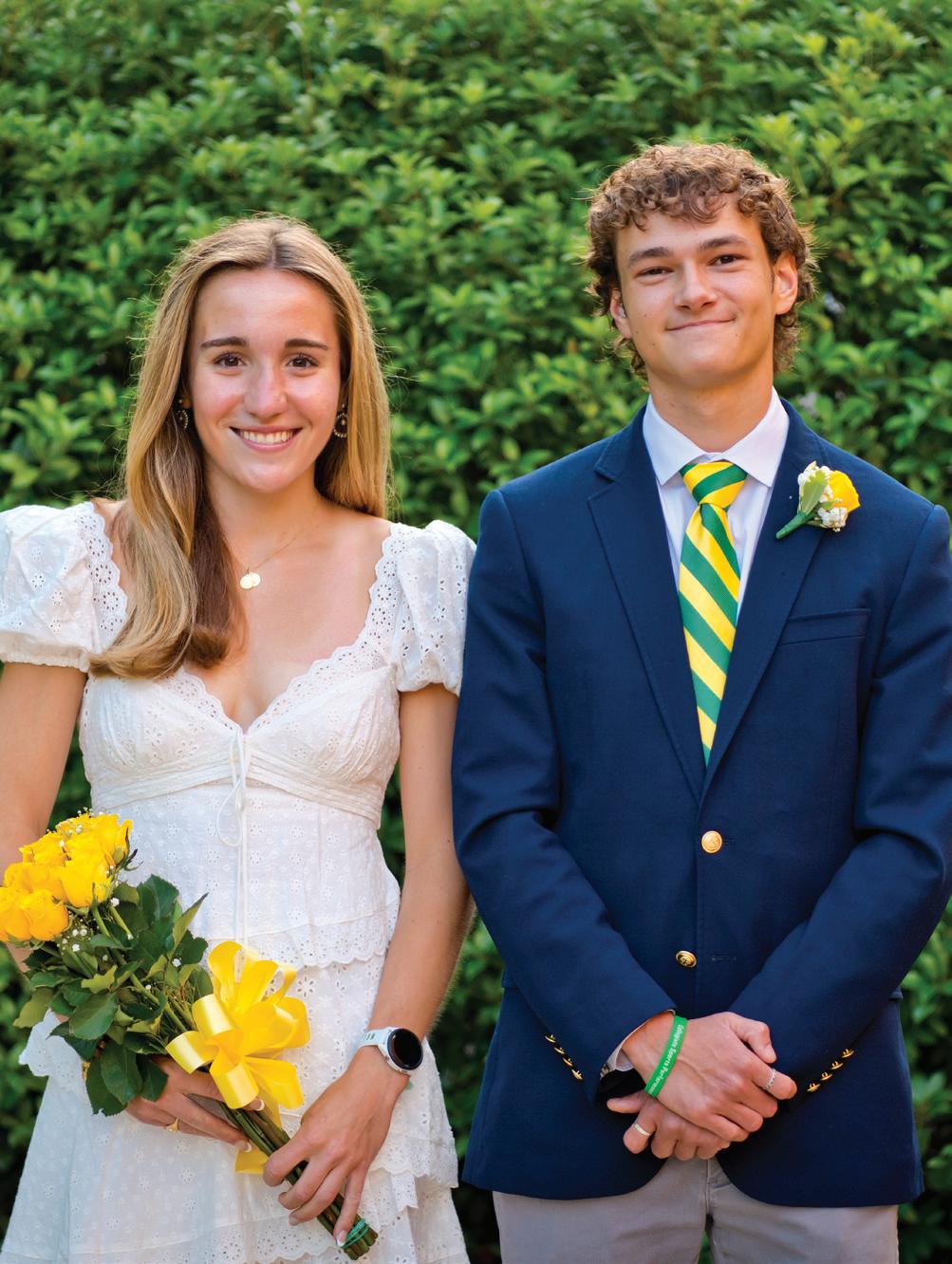
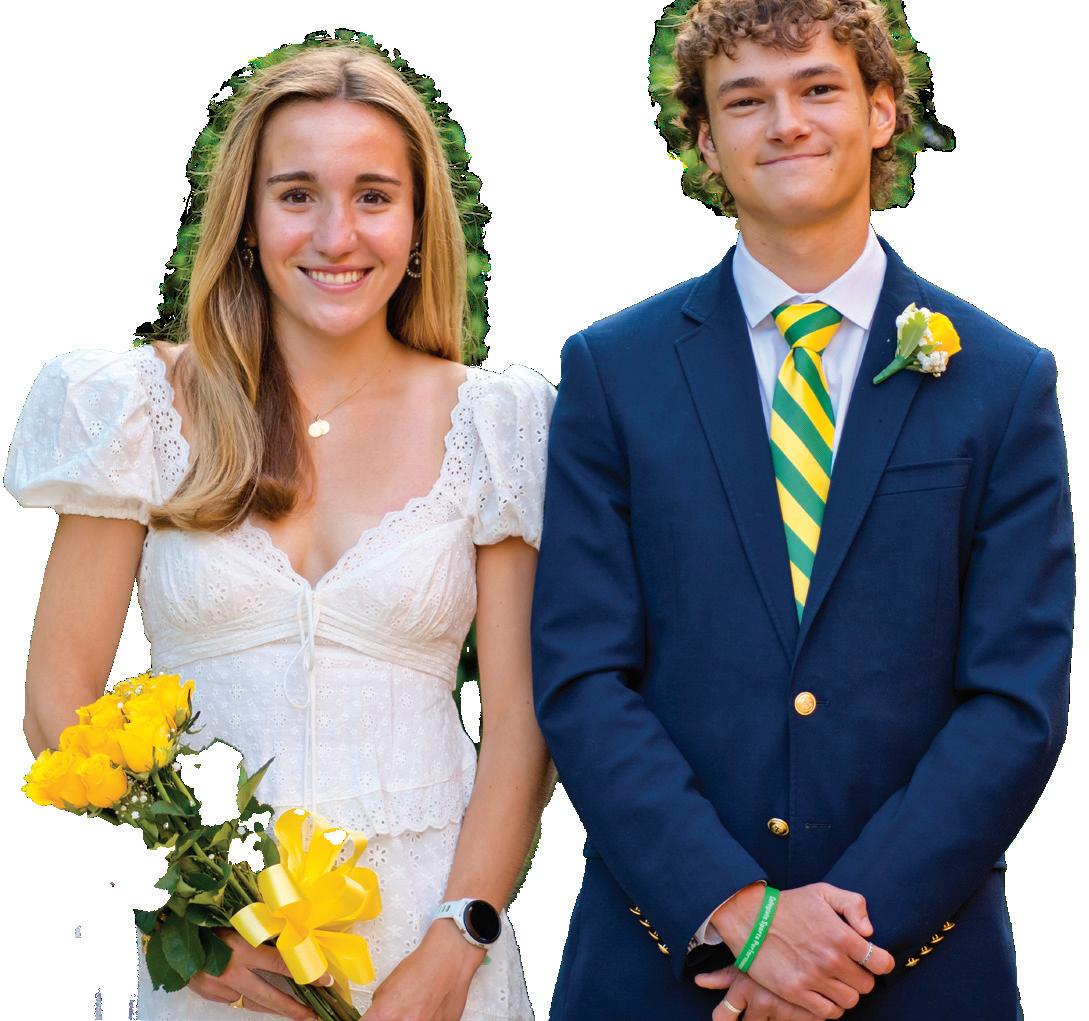
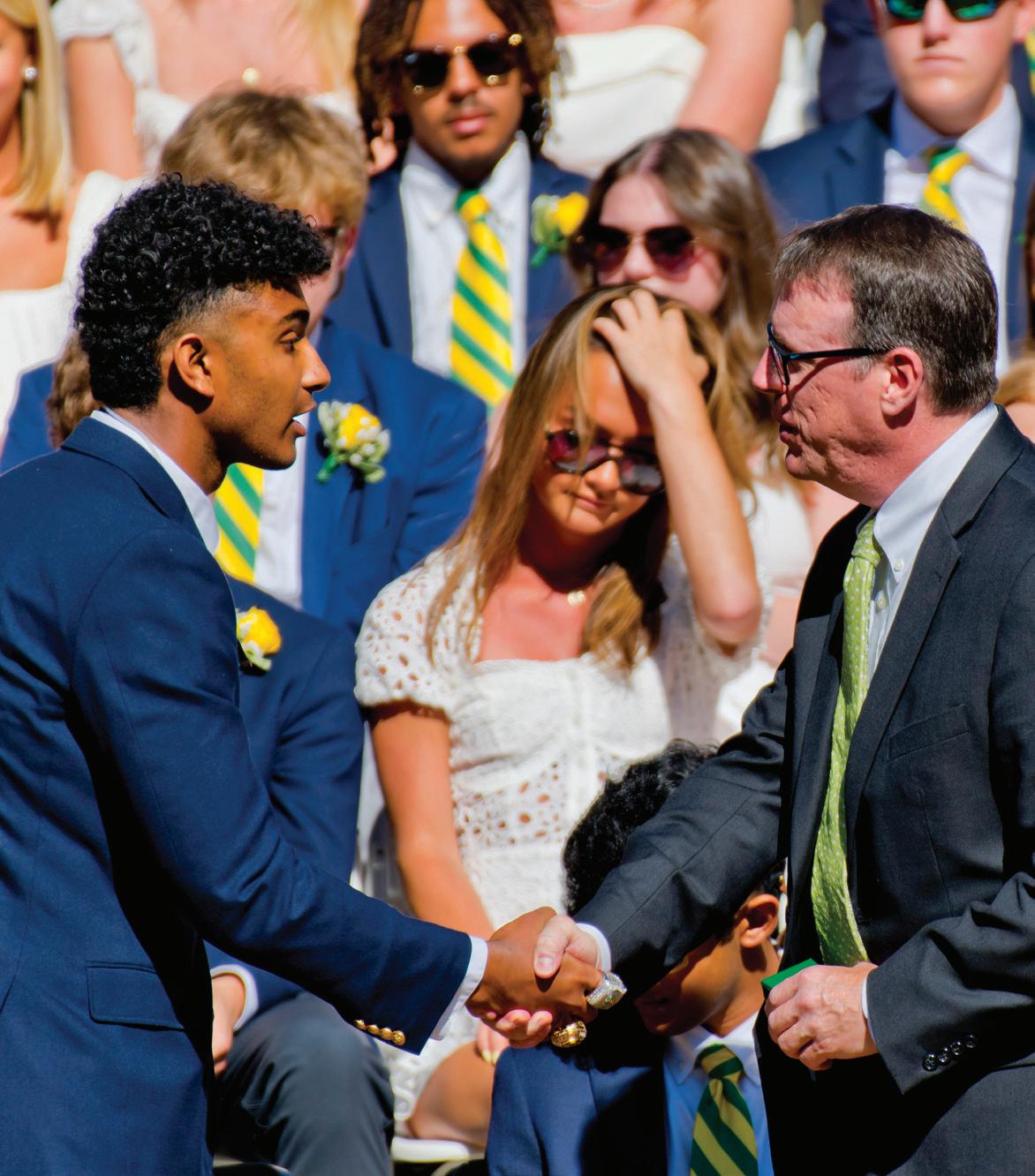
Honors Assembly Awards
Upper School faculty and administrators selected the recipients, who were honored throughout April and May.
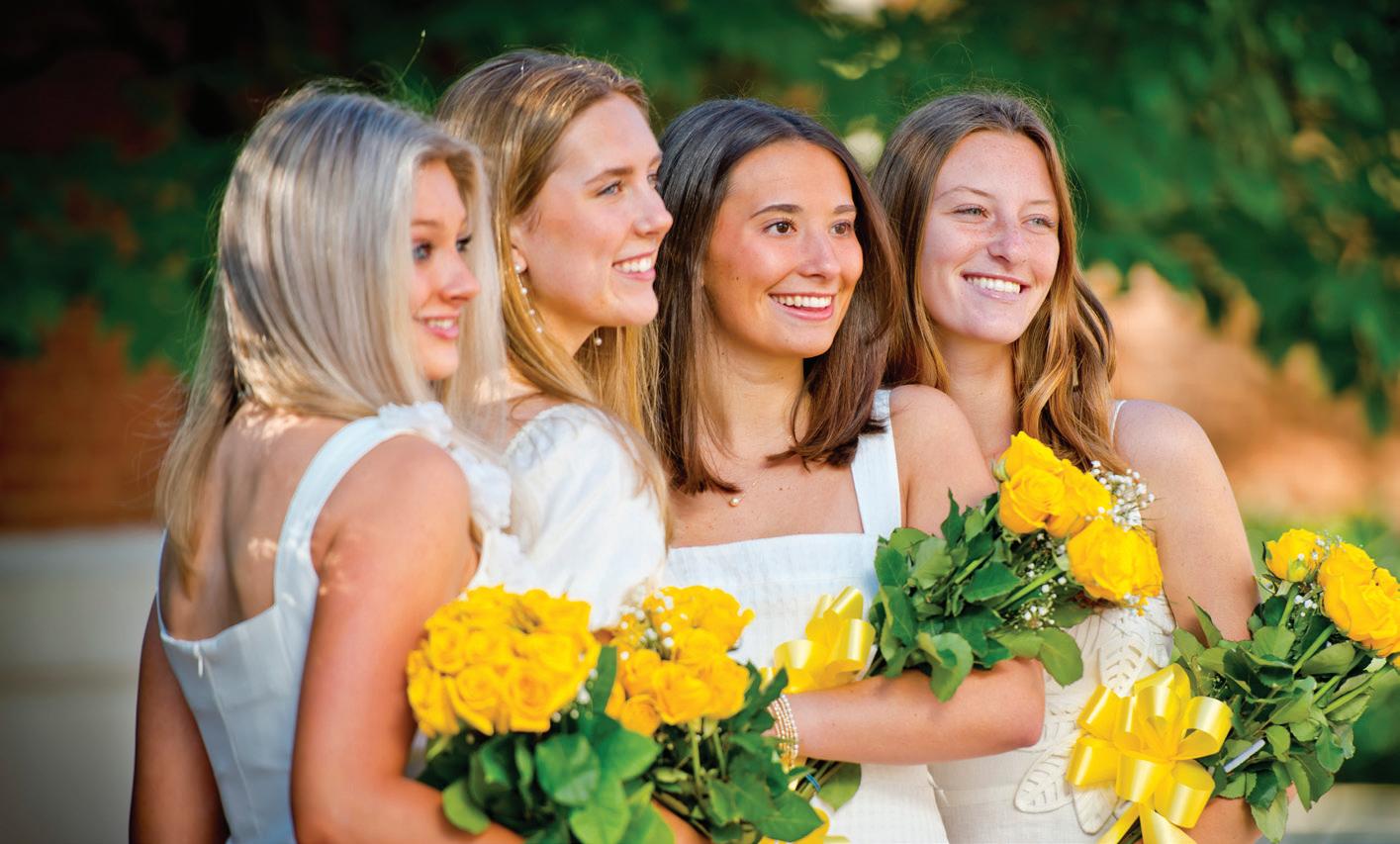
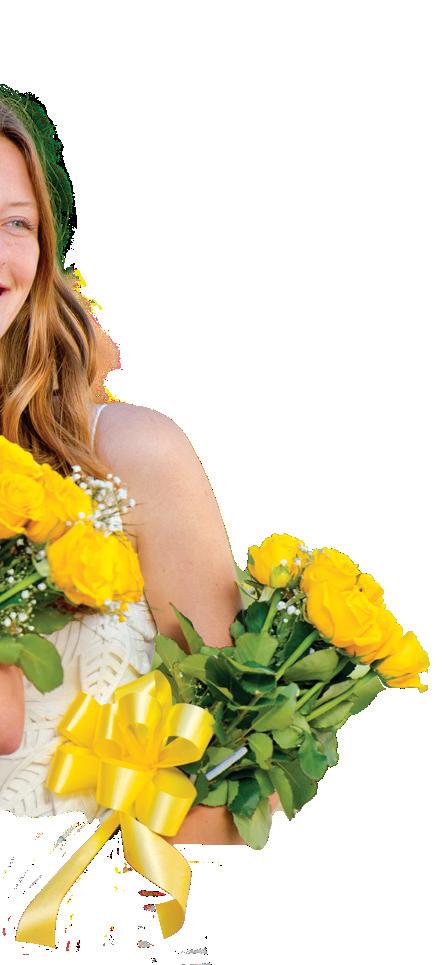
FOUNDERS AWARD
Justinas Petkauskas ’26
THE SPIRIT OF COLLEGIATE AWARD
Kyla Margaret-Elaine Williams ’26
Hollyn Grace Spencer Borich ’26
Carter Wells Quigley ’26
ARETÉ AWARD
Milton Walker Arendale ’26
Macy Rene Boyer ’26
SILVER TORCH AWARD
John David Chen ’26
Leah Katherine Johnston ’26
MALCOLM U. PITT, JR. SERVICE AWARD
Alice Tillery Davis ’26
PARAT, DITAT, DURAT AWARD
James Cummings Bonbright ’26
Madelyn Marie Privasky ’26
HELEN MOON SENIOR ENGLISH AWARD
Bennett Palmer Forstner ’25
Maytal Rebecca Zasler ’25
SENIOR CREATIVE WRITING AWARD
Grace-Anne Margaret Vincenza
Robert-Ford Hall ’25
CHARLOTTE STEVENS JUNIOR ENGLISH AWARD
Carter Wells Quigley ’26
Jane Kinsale Simkin ’26
BITTEN SENIOR MATH AWARD
James Wilmington Galgano ’25
Claire Delphine Lareau ’25
THALHIMER SENIOR FRENCH AWARD
Bennett Palmer Forstner ’25
SENIOR SPANISH AWARD
Claire Delphine Lareau ’25
SENIOR LATIN AWARD
Arthur Randolph Totten ’25
SENIOR CHINESE AWARD
Kana Maria Sakagami ’25
PERROW SENIOR HISTORY AWARD
Cooper John Perdue ’25
Sarah Garnett Webb ’25
VIRGINIA COURTNEY SIMPSON AWARD
Amelia Claiborne Chen ’25
ELIZABETH BRYSON POWELL AWARD
Blake Steward Ingold ’25
MARGARET DANIEL SENIOR SCIENCE AWARD
Kana Maria Sakagami ’25
OSBORNE SENIOR SCIENCE AWARD
Clavio Mario Giuseppe Ascari II ’25
DR. TAPAN HAZRA SCIENCE AWARD
Arianna Ming Hui Peña ’27
HIRSCHLER SCIENCE RESEARCH AWARD
Joseph John Paul Legutko ’26
ENGARD SENIOR ART AWARD
Kaelyn Jane Crosthwaite ’25
Kenneth Jai Spicer ’25
JAKE MACNELLY SENIOR ART PURCHASE AWARD (SPONSORED BY THE CLASS OF 1990)
Liam Wallace Gocke ’25
SCOTT HARDEN SENIOR PERFORMING ARTS AWARD
Madelyn Leigh Ford ’25
CAROLYN LEVEY MUSIC AWARD
Madeleine Rose Hough ’25
OSBORNE MUSIC AWARD
Soham Gaurav Saxena ’25
TECHNICAL THEATER AWARD
Marianna Rhett Anderson ’25
DANCE AWARD
Olivia Jane Bowman ’25
WEBB SENIOR SPORTSMANSHIP AWARD
Isabella Randolph Little ’25
JACOBS SENIOR SPORTSMANSHIP AWARD
Peter Friedrich Hartmann ’25
REED SENIOR ATHLETIC AWARD
Cecile Elizabeth Shield ’25
OUTSTANDING SENIOR ATHLETE AWARD
Xavier Derico Davis ’25
ATHLETIC DEPARTMENT AWARD
Benjamin Avery Heidt ’25
Harper Davis Murphy ’25
Details of Success
The Class of 2025 is a model of excellence in and out of the classroom, and we have numbers to back that up. Here’s a by-the-numbers breakdown of their demonstrated excellence.
143 SENIORS
721 ACCEPTANCES 85% OF THE CLASS
192 COLLEGES SUBMITTED ENROLLING IN RECEIVED TO TO
214 COLLEGES
1,057 APPLICATIONS 65 COLLEGES 6 ARTISTS 25 RECRUITED ATHLETES
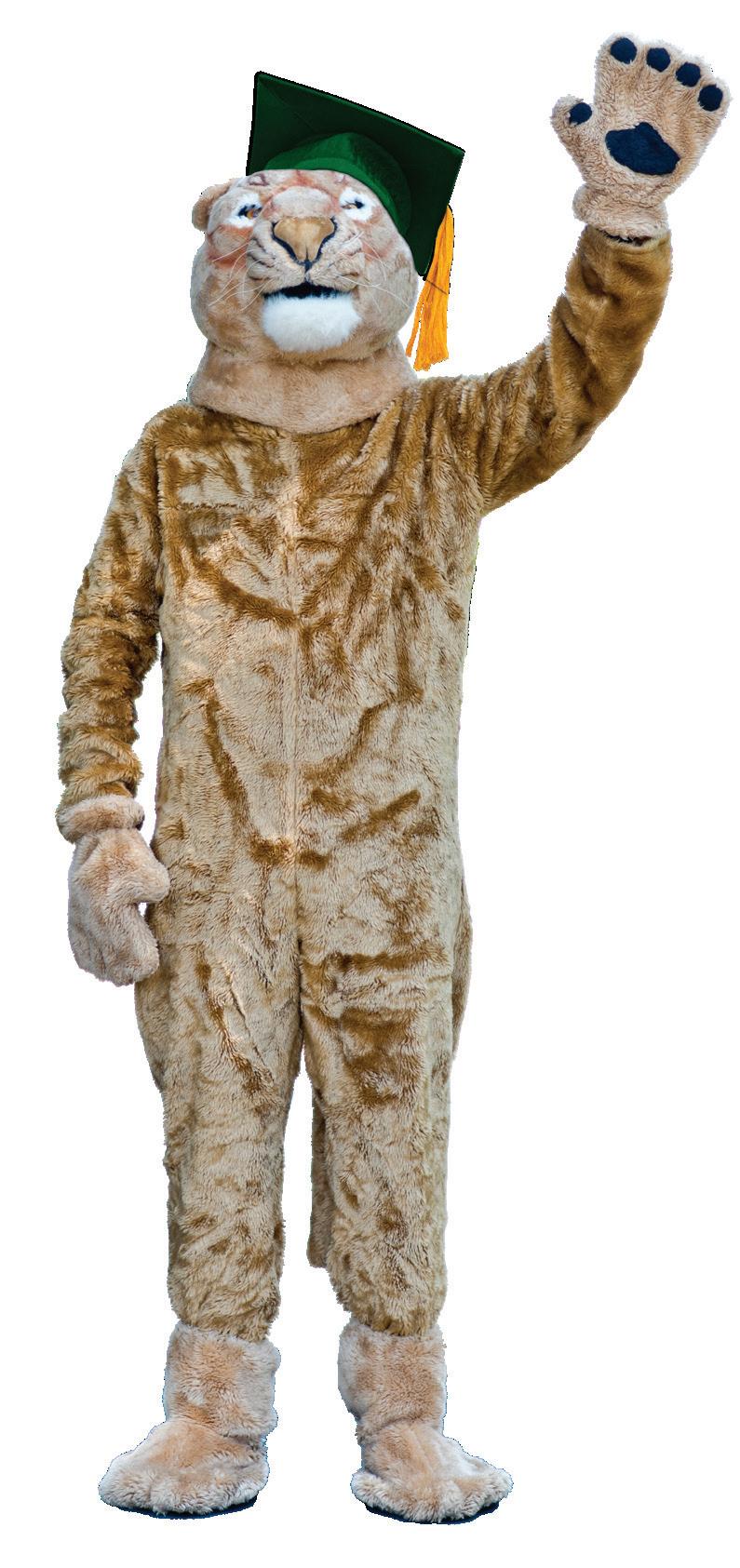
The Class of 2025 received an impressive total of in merit scholarship offers. Those offers included the prestigious Jefferson Scholarship.
$13.4 MILLION IN 42 STATES AND CANADA IN 27 STATES AND ENGLAND
reported being accepted by one of their top two colleges, and across three evaluative categories they offered high satisfaction ratings (college process overall: 93%; College Counseling Office: 94%; college counselor: 90%).
will pursue their craft in highly selective programs in creative advertising, film studies, musical theater, and visual arts.
will compete at the Division I, Division II, and Division III levels.
College Choices
The Class of 2025 enrolled in the following institutions of higher learning. Institutions where Collegiate students received multiple acceptances are noted in parentheses as (enrolled, accepted). The institutions that saw Cougars apply, admitted, and enroll display wideranging breadth, including arts schools, engineering schools, historically Black colleges and universities, large research universities, single-sex institutions, and small liberal arts colleges. Without a doubt, these Seniors are going places.
Auburn University (2, 27)
Baylor University (1, 5)
Boston College (1, 2)
Boston University (1, 2)
Bridgewater College (3)
Bucknell University (2, 4)
Clemson University (5, 27)
Colby College
College of Charleston (3, 29)
College of William & Mary (4, 7)
Dartmouth College
Davidson College (2, 3)
Duke University
Elon University (2, 16)
Florida State University
George Washington University (1, 3)
Georgetown University
Hampden-Sydney College (5, 7)
Hampton University (3, 4)
Imperial College London
James Madison University (7, 47)
Kenyon College
Longwood University (1, 9)
North Carolina State University (2, 9)
Princeton University
Purdue University
Radford University (1, 2)
Rhodes College (2, 3)
Roanoke College (1, 7)
Rochester Institute of Technology (1, 2)
Rutgers University
Samford University
Sewanee – The University of the South (1, 7)
Syracuse University (2, 4)
United States Air Force Academy
United States Military Academy
United States Naval Academy
University of Alabama (3, 20)
University of California – Los Angeles
University of California – Santa Barbara (1, 3)
University of Connecticut (1, 3)
University of Denver (1, 4)
University of Florida (1, 4)
University of Georgia (3, 12)
University of Kentucky (1, 18)
University of Mary Washington (1, 8)
University of Miami (2, 2)
University of Michigan
University of Mississippi (4, 29)
University of Pennsylvania
University of Pittsburgh (1, 2)
In addition, Collegiate Seniors were accepted to the following but have chosen not to matriculate.
Alabama A & M University
American Mus. & Dram. Academy
American University (3)
Amherst College
Appalachian State University (4)
Arizona State University
Brandeis University (2)
California Polytechnic State Univ.
California College of the Arts
Cardiff University
Case Western Reserve University (2)
Catholic University (2)
Christopher Newport University (8)
Claflin University
Coastal Carolina University
College of Wooster
Colorado School of Mines
Cornell University
DePaul University
Dickinson College (2)
Duquesne University
East Carolina University (3)
Eastern Kentucky University
Emory University (2)
Florida A & M University (2)
Florida Atlantic University
Florida International University
Fordham University (6)
Fort Lewis College
Furman University (2)
George Mason University (5)
Gettysburg College
Gonzaga University
University of Rhode Island
University of Richmond (4, 6)
University of Rochester (1, 2)
University of South Carolina (7, 40)
University of Tampa (1, 3)
University of Tennessee (3, 16)
University of Texas
University of Virginia (22, 27)
University of Wisconsin (1, 3)
Villanova University (1, 4)
Virginia Tech (5, 24)
Wake Forest University (4, 5)
Washington & Lee University (2, 2)
West Virginia University (1, 2)
Hamilton College
High Point University (5)
Howard University
Indiana University (2)
Jackson State University
Jacksonville State University
King’s College London
Lafayette College
Lehigh University
Liberty University (2)
Lipscomb University
Louisiana State University (3)
Loyola Marymount University (2)
Loyola University - Chicago
Loyola University - Maryland
Marquette University
Maryland Inst. College of Art
Marymount University
Massachusetts Coll. Art & Design
McGill University
Miami University - Ohio (3)
Michigan State University
Mississippi State University
Moore College of Art and Design
Morehouse College
Morgan State University (2)
Muhlenberg College
Norfolk State University
North Carolina A&T Univ. (2)
North Carolina Central University
North Carolina Wesleyan University
Northeastern University (6)
Occidental College
Ohio State University
Old Dominion University (6)
Pennsylvania State University (10)
Pennsylvania State U - Altoona
Pennsylvania State U - Berks
Pennsylvania State U - Erie
Pennsylvania State U - Harrisburg (2)
Pennsylvania State U - New Kens.
Pratt Institute - Munson
Randolph-Macon College (6)
Rice University
Ringling College of Art and Design
Santa Clara University
Savannah Coll. of Art and Design
School of Art Institute of Chicago (2)
South Carolina State University (2)
Southern Methodist University (4)
Stony Brook University
Temple University
Tennessee State University
Texas Christian University (6)
Towson University
Tufts University
Tulane University (2)
University of Arizona (2)
University of Arkansas
U. of California - Berkeley
U. of California – Davis (2)
U. of California - San Diego
University of Colorado Boulder (7)
University of Delaware
University of Edinburgh
University of Iowa
University of Louisville (2)
University of Maryland (3)
U. of Maryland - Eastern Shore
University of Minnesota (2)
University of Montana
U. of Nevada - Las Vegas
U. of North Carolina - Asheville (2)
U. of North Carolina - Chapel Hill
U. of North Carolina - Charlotte
U. North Carolina - Greensboro (3)
U. North Carolina - Wilmington
University of Oklahoma (2)
University of Oregon
University of San Diego
University of San Francisco
U. of Southern California
University of Utah (2)
University of Vermont (3)
University of Wyoming (2)
Virginia Commonwealth U. (8)
Virginia State University
Washington & Jefferson Coll.
Washington College
Western Carolina University
West Virginia U. Inst. of Tech.
Winston-Salem State University
Wofford College (4)
Xavier University
Cougar Legacies
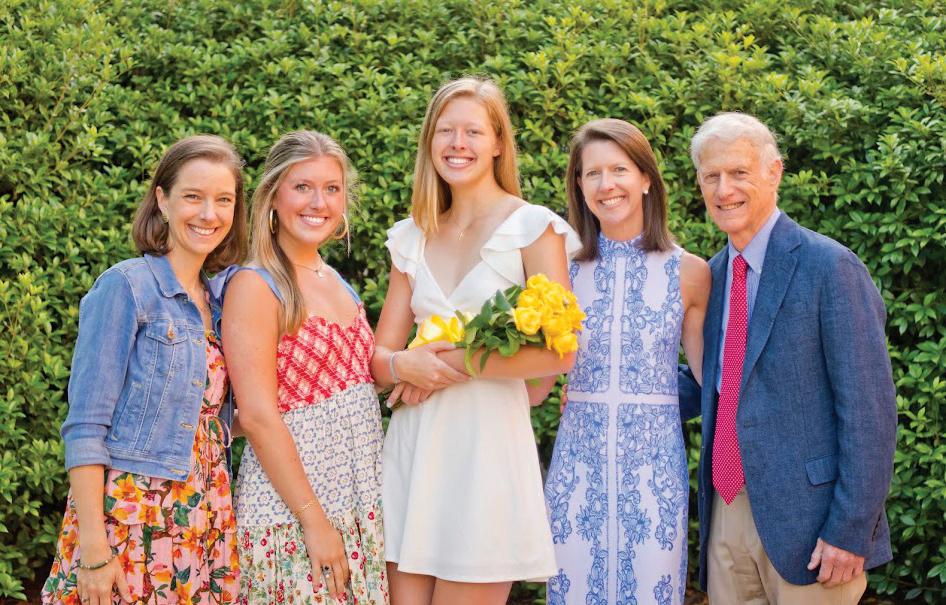
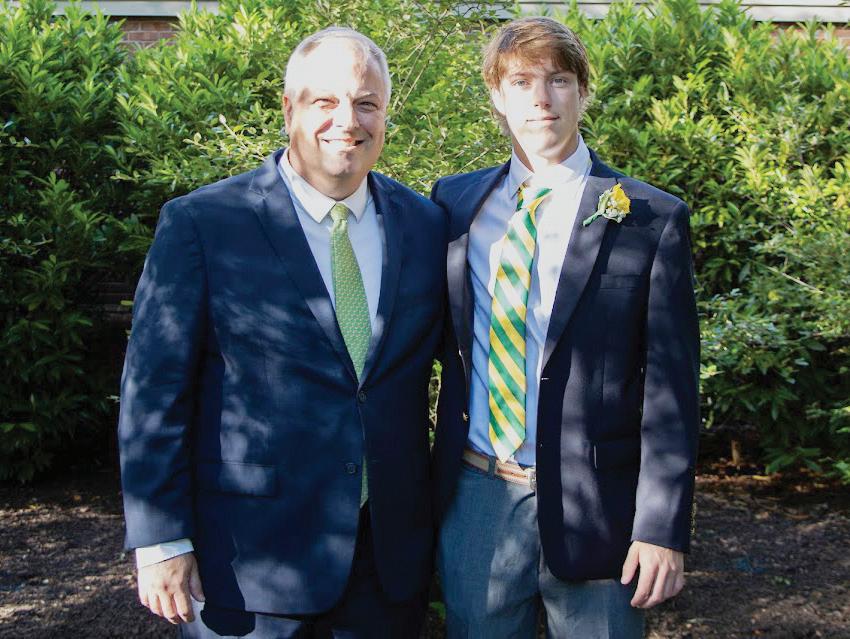
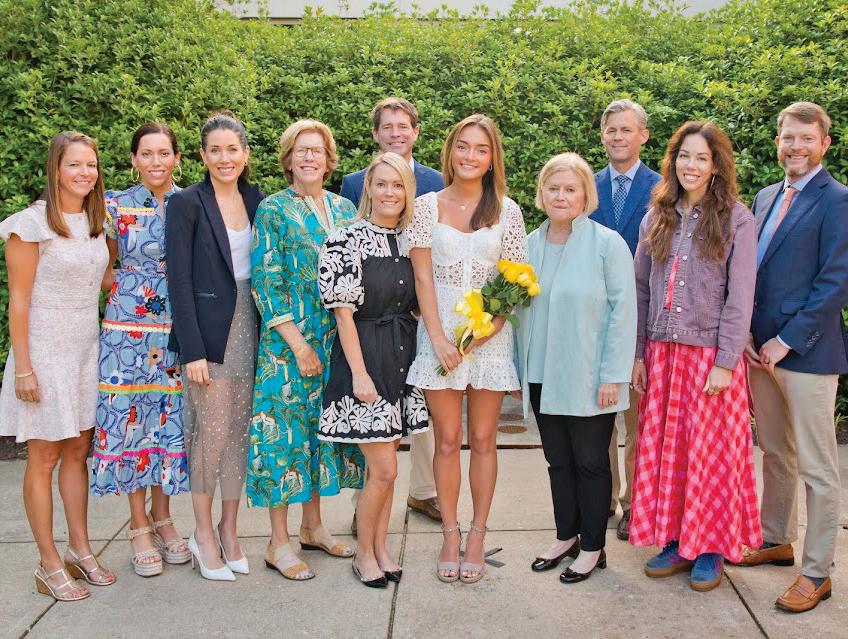
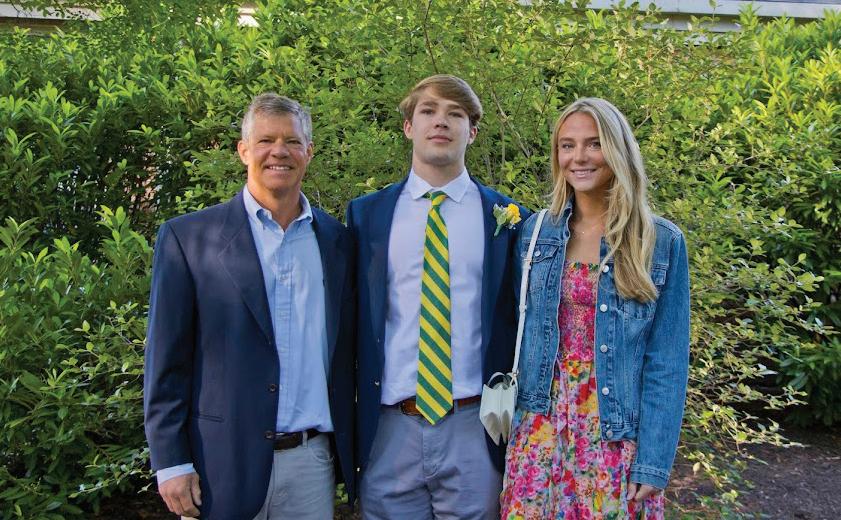
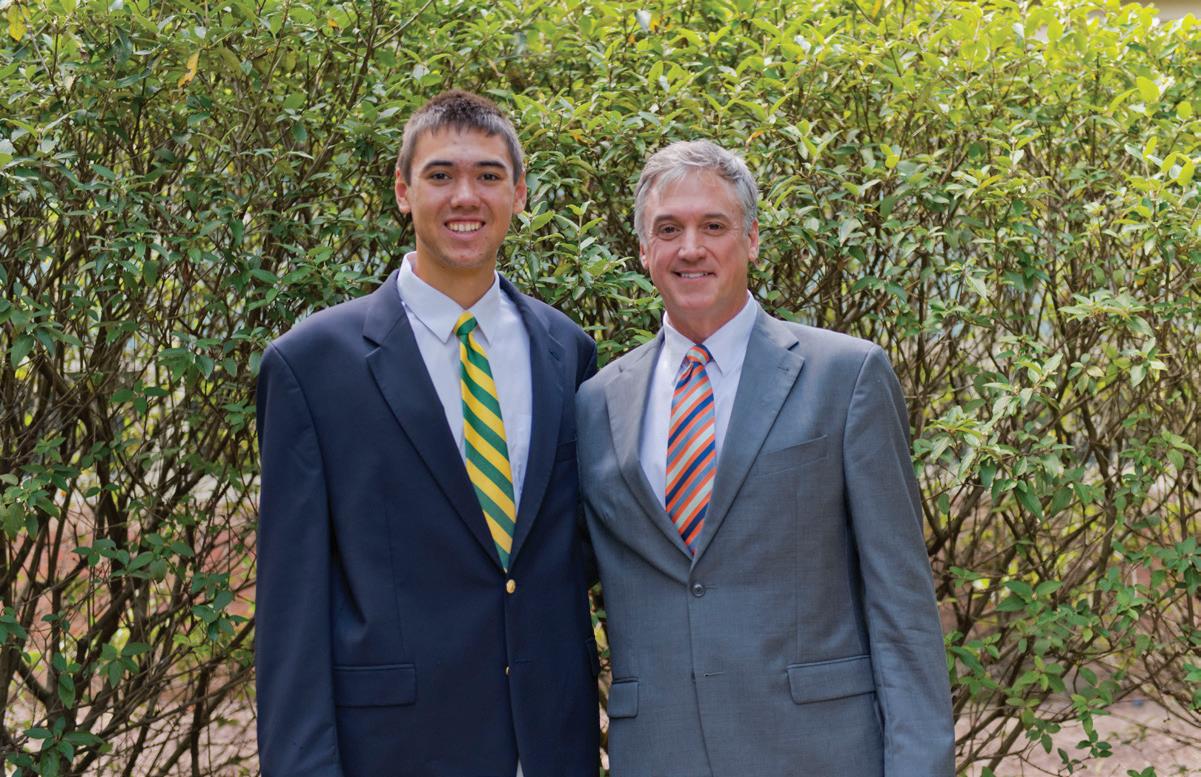
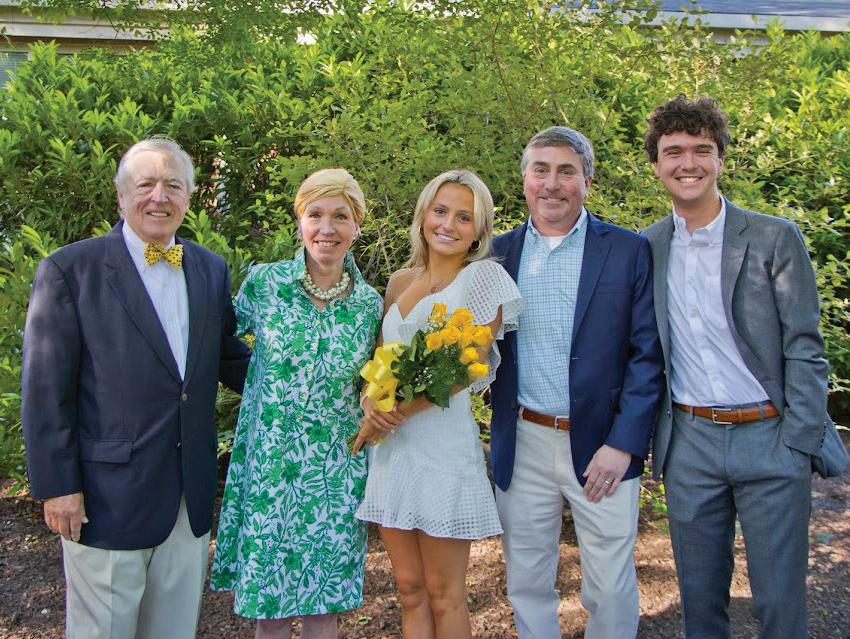
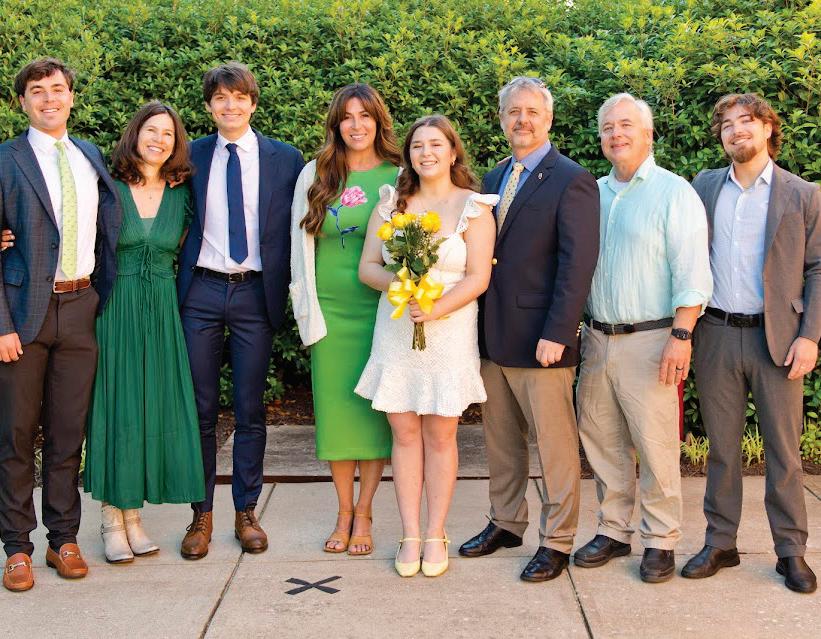
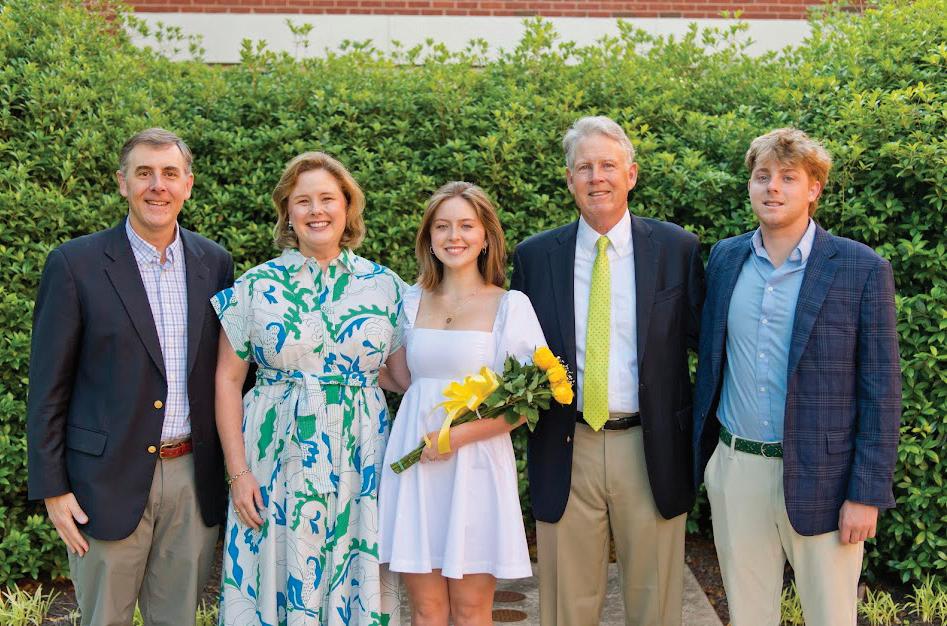
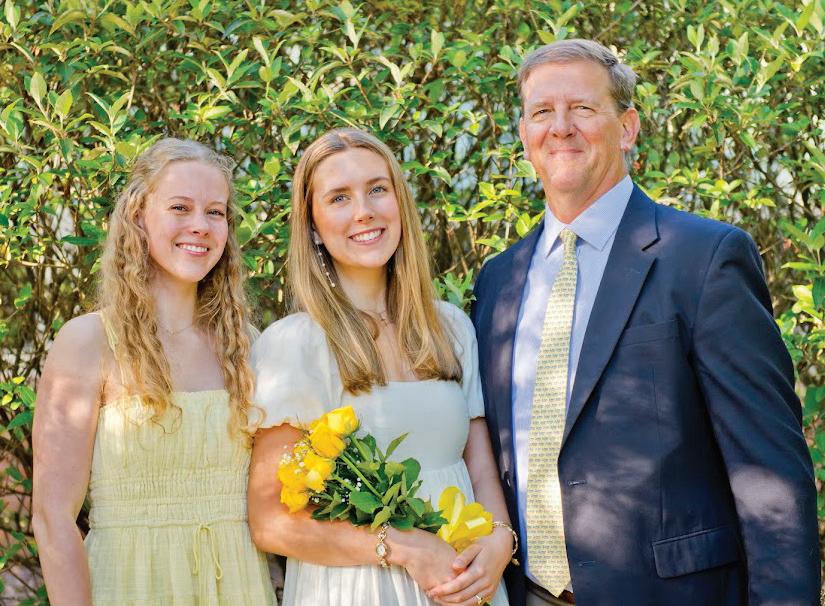
1. Sarah Shepard Adamson with aunt Christie Thalhimer Silverstein ’02, sister Katherine Perrow Adamson ’23, mother Katherine Thalhimer Adamson ’96, and grandfather William B. Thalhimer III ’64.
2. Harrison Arthur Baxter with father William Harrison Baxter II ’88.
3. Lucy Watkins Beckstoffer with cousins Anne Wiltshire Henry ’03, Betts McGurn King ’07, and Gracie McGurn Mason ’05, great aunt Boodie Wiltshire McGurn ’71, cousin Andrew Betts Wiltshire ’99, mother Mary Wiltshire Beckstoffer ’99, grandmother Louise Vincent “Weezie” Wiltshire ’67, uncle William Betts Wiltshire Jr. ’92, and cousins Missy McGurn Chiles ’03 and Richard Watkins Wiltshire III ’97. Not pictured: Deceased grandfather William Betts “Buck” Wiltshire ’67 and deceased greatgrandmother Jean Betts Wiltshire ’38.
4. Ryder Beale Bradley with father Ryan Beale Bradley ’92 and cousin Bradley Van Roekel ’24. Not pictured: brother Jack Bradley ’23 and cousin Bralyn Van Roekel ’20.
5. Jett Lin Bristow with father Charles R Bristow ’86.
6. Spencer Ashton Conrad with grandfather Daniel S. Smith ’68, mother Whitney Smith Conrad ’93, father William Scott Conrad ’93, and brother William Scott Conrad Jr. ’22.
7. Harper Lily Cuttino with cousin Heth Alexander ’21, aunt Stella Crane Alexander ’85, mother Libbie S. Crane ’89, father David S. Cuttino ’90, and uncle C. Marsh Cuttino ’86.
8. Alice Tillery Davis with uncle William R.B. Hershey ’94, mother Kathleen T. Hershey ’95, grandfather F. Robertson Hershey ’66, and cousin William R. Hershey ’24.
9. Catherine Elliott Featherston with sister Ginnie Featherston ’21 and father Charles Aubrey Featherston III ’87.
1. Madelyn Leigh Ford with aunt Meredith Diehl ’95, sister Natalie Ford ’22, and mother Lauren Diehl Ford ’92.
2. James W. Galgano with cousin Tom Meyers ’24, aunt Laura Meyers ’90, uncle Eric Meyers ’91, and mother Kimberly Meyers Galgano ’86.
3. Peter Freidrich Hartmann with brother Carl Hartmann ’20, mother Eva Morgan Hartmann ’88, and brother Alex Hartmann ’18.
4. Benjamin A. Heidt with mother Kathyrn Webb Heidt ’94 and father Benjamin Peter Heidt ’93.
5. Carter Boyd Hepp with brother Grayson Paul Hepp ’23, mother Ashley Linhart Hepp ’94, grandmother May Ellen Boyd Oakley ’67, and grandfather J. Theodore Linhart ’65.
6. Madeline Blair Jewett with cousin Scott Forbes Ruth Jr. ’22, cousin Anne Mason Montague Ruth ’19, grandfather Bryce D. Jewett Jr. ’64, mother Erin Smith Jewett ’94, grandfather Alex Smith ’65, father Bryce Dickinson Jewett III ’93, aunt Jennifer Jewett Ruth ’90, and uncle Scott Forbes Ruth ’91. Not pictured: Deceased grandmother Gay Montague Jewett ’65.
7. Noah Christian Kantner with uncle Jeff Ukrop ’92, mother Nancy Jo Ukrop Kantner ’95, sister Emily Kantner ’23, and uncle Rob Ukrop ’88. Not pictured: aunt Jacquelin Ukrop Aronson ’89 and cousins Peyton Garst ’20 and Presley Garst ’24.
8. Adriana Suzanne King with brother Wyatt King ’23, grandmother Adrienne Gould Constine ’55, mother Jo Ellen Constine ’87, and brother Austin King ’20.
9. Mary Ellis Logan with mother Michelle Kahn Logan ’98, uncle Jason E. Khan ’94, and aunt Barbara Ellis Kahn ’02.
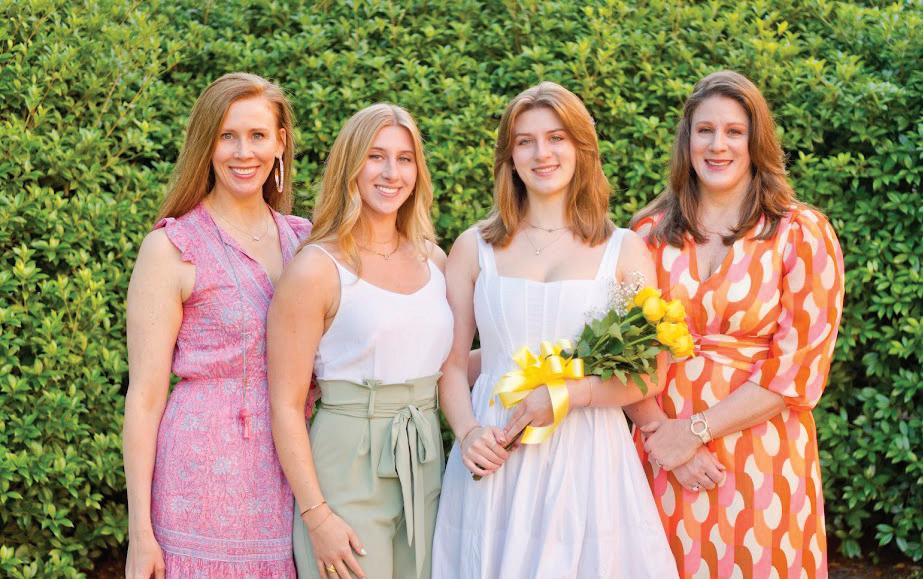
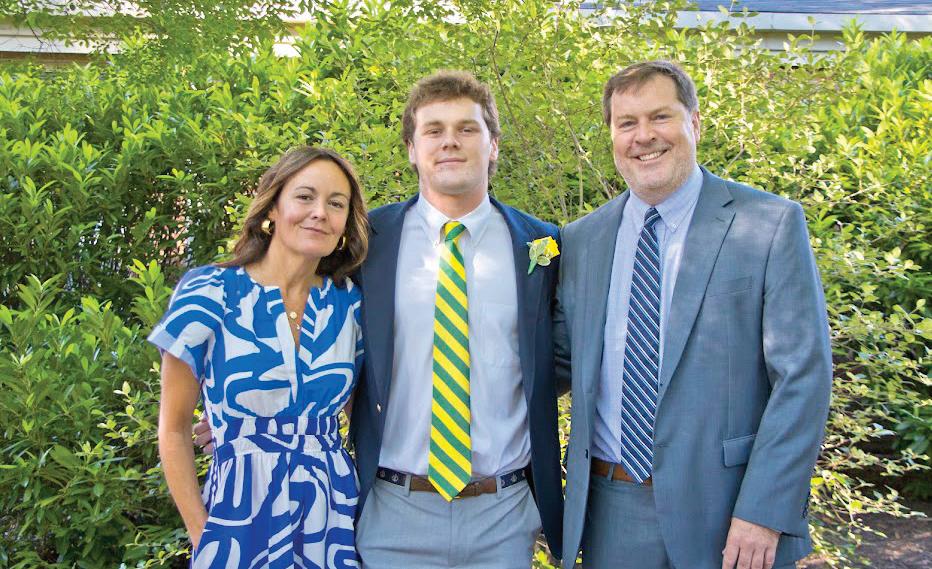
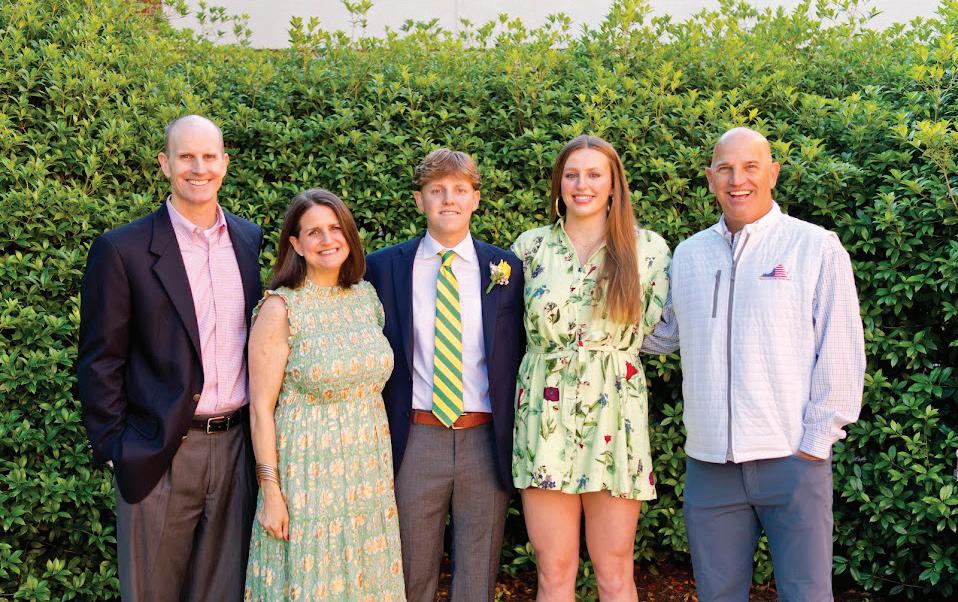
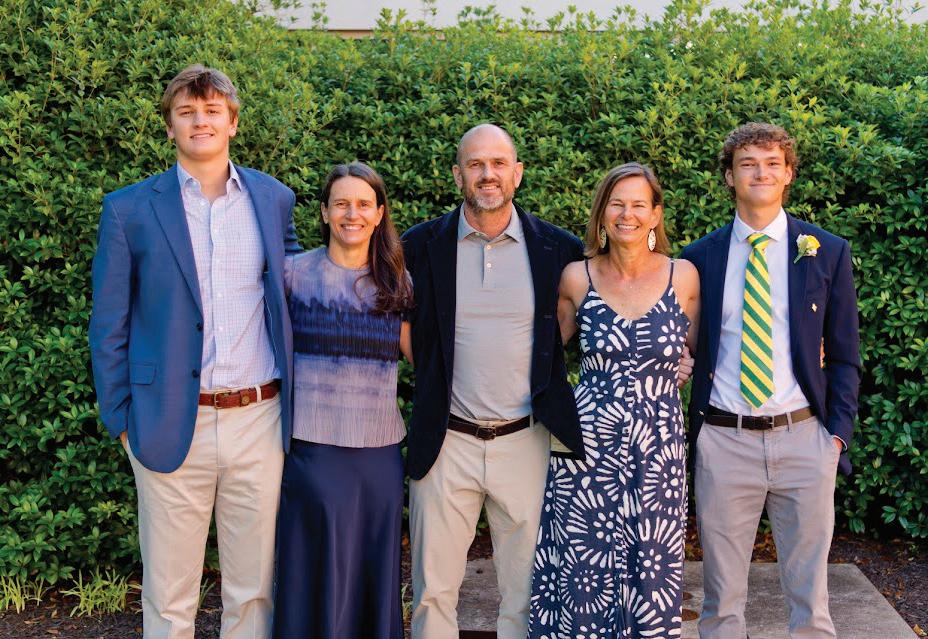
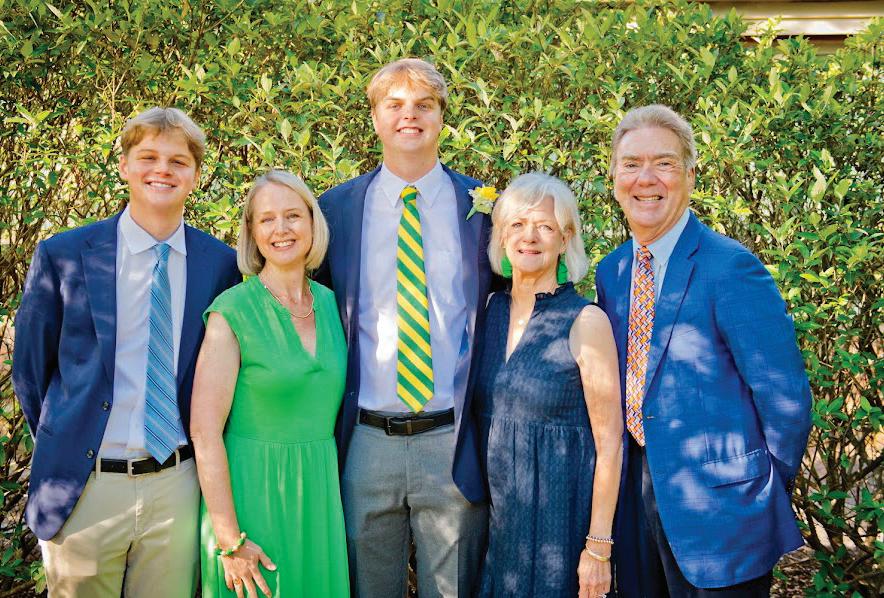
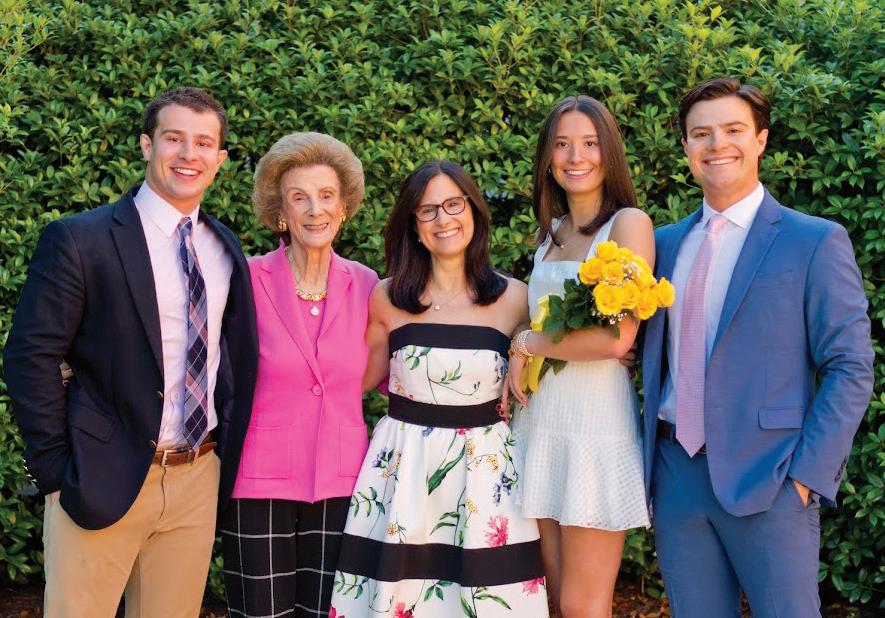
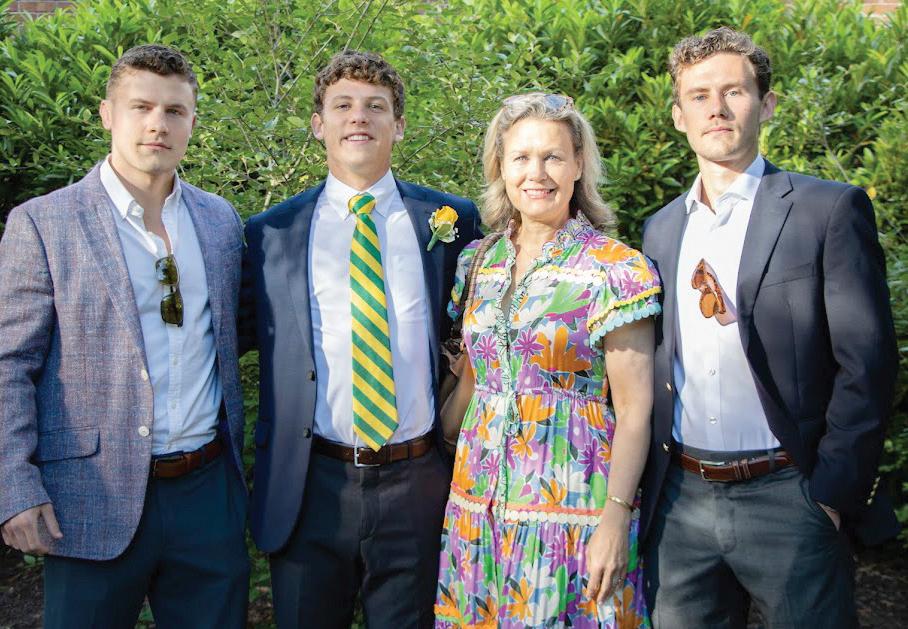
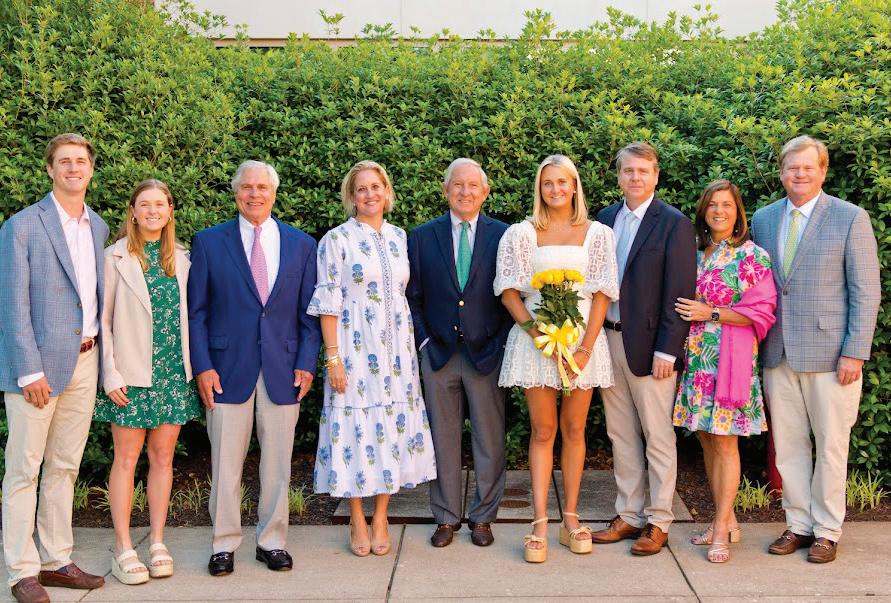
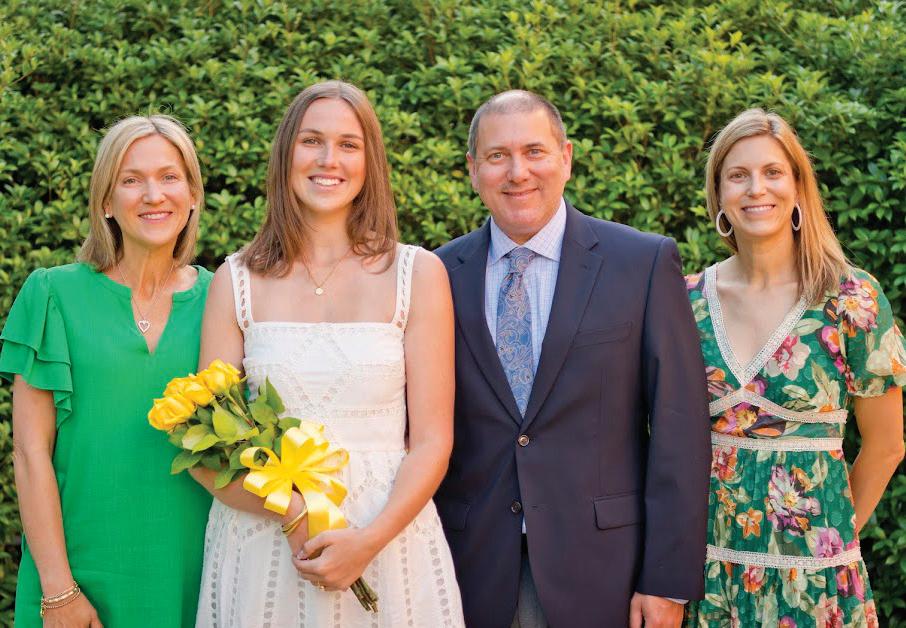
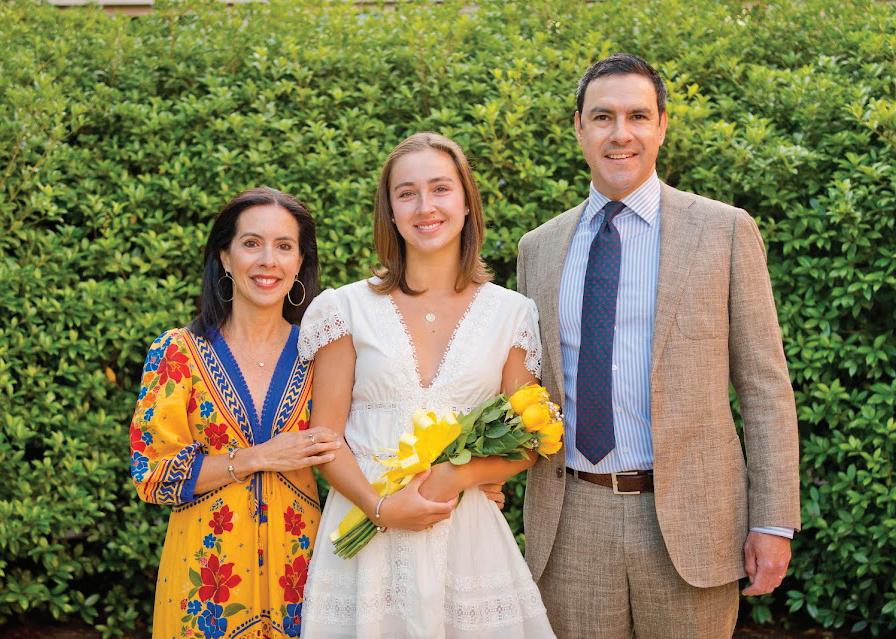
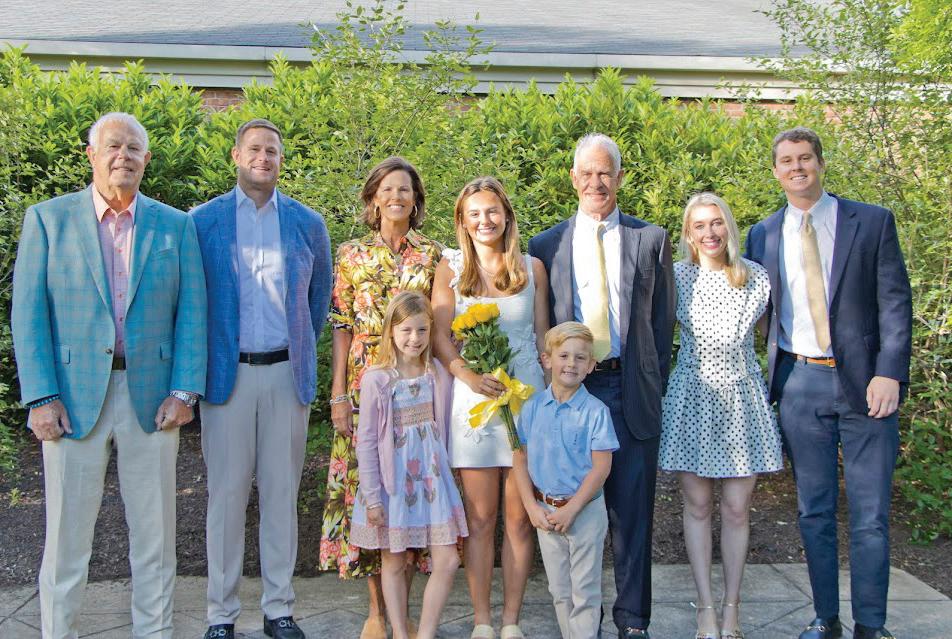
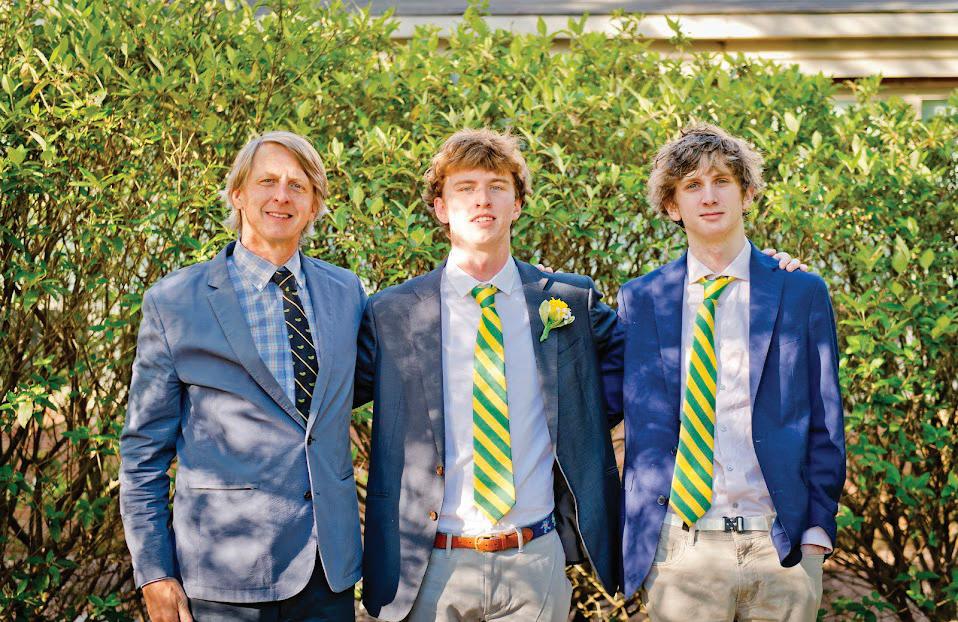
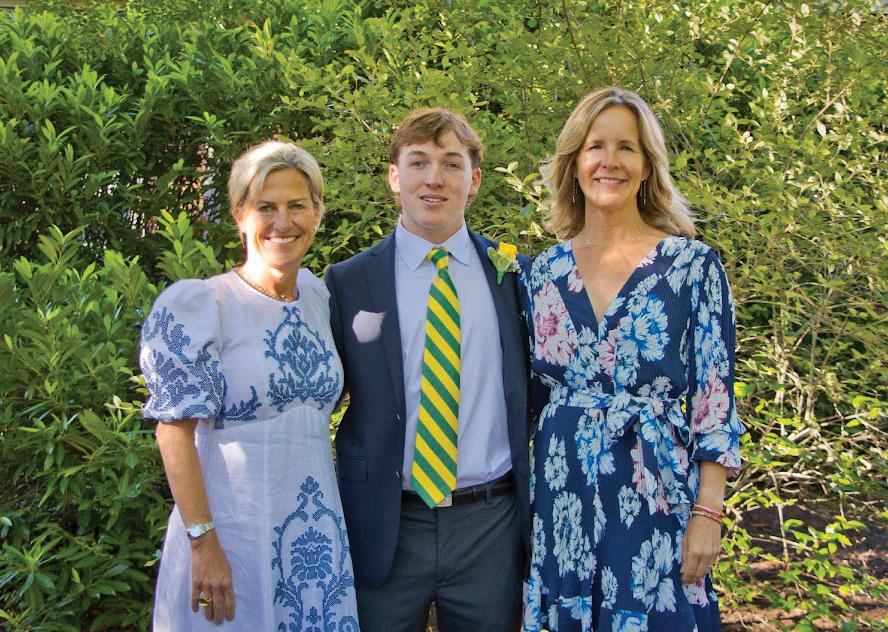
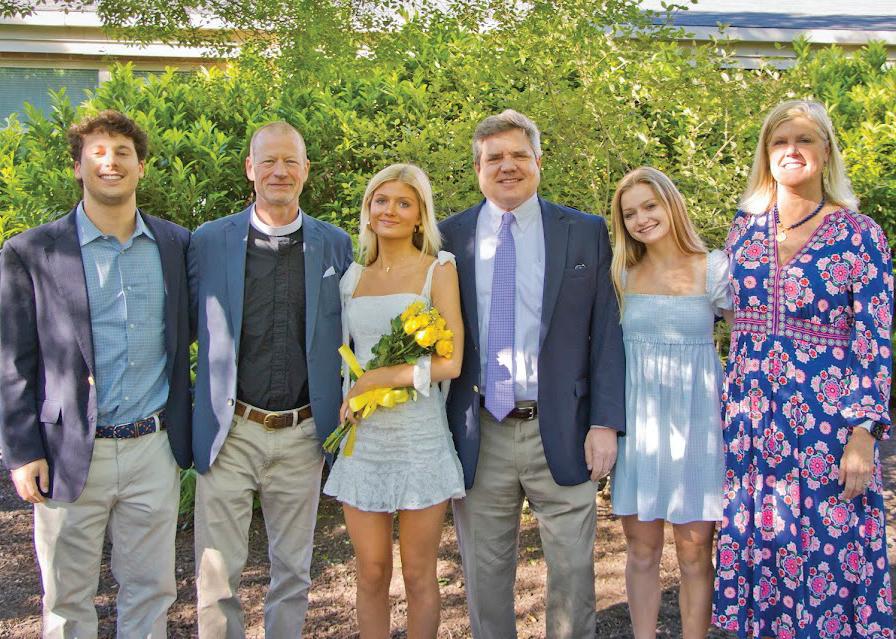
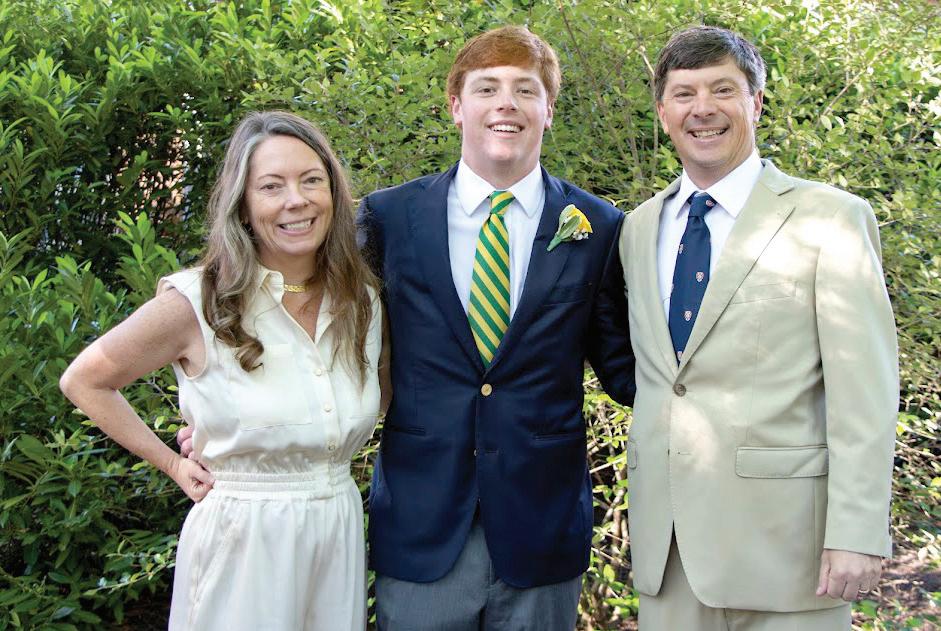
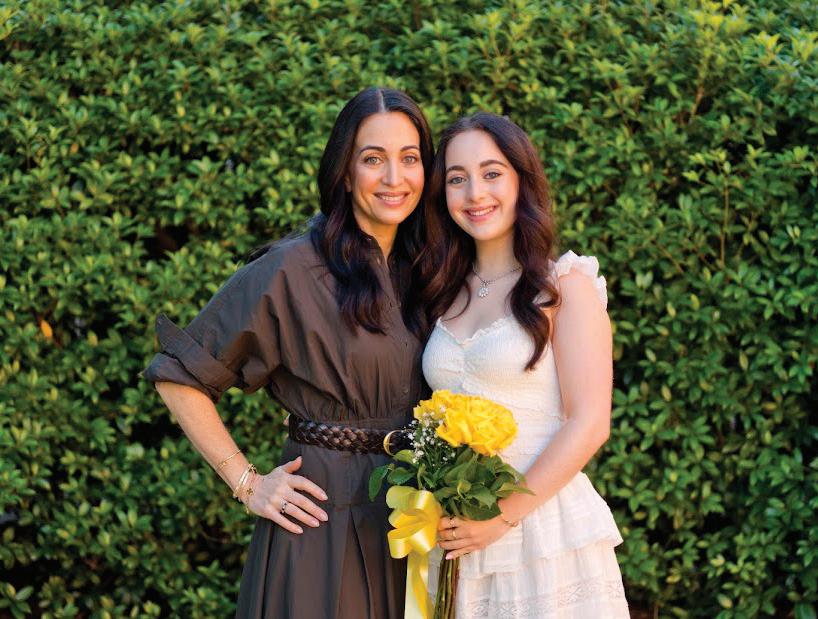
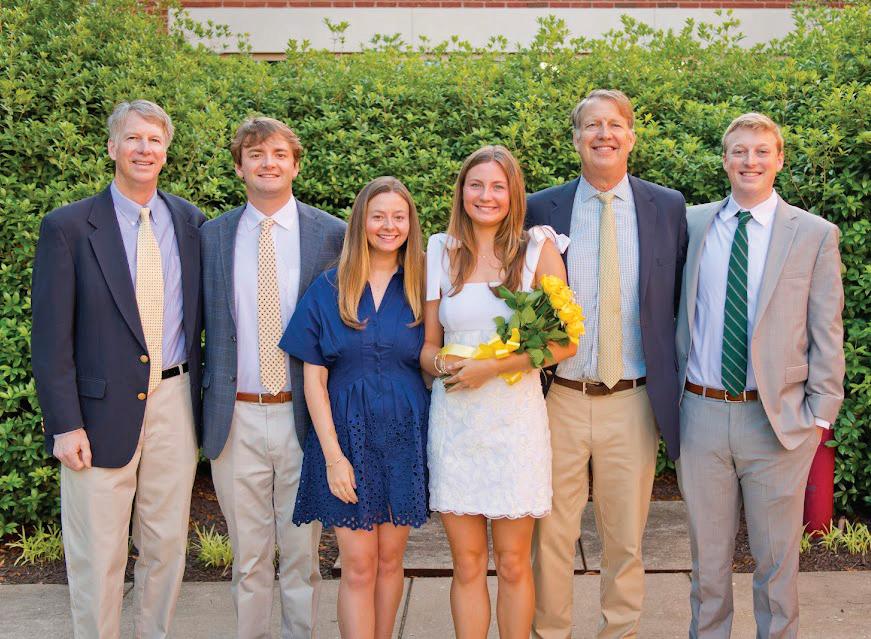
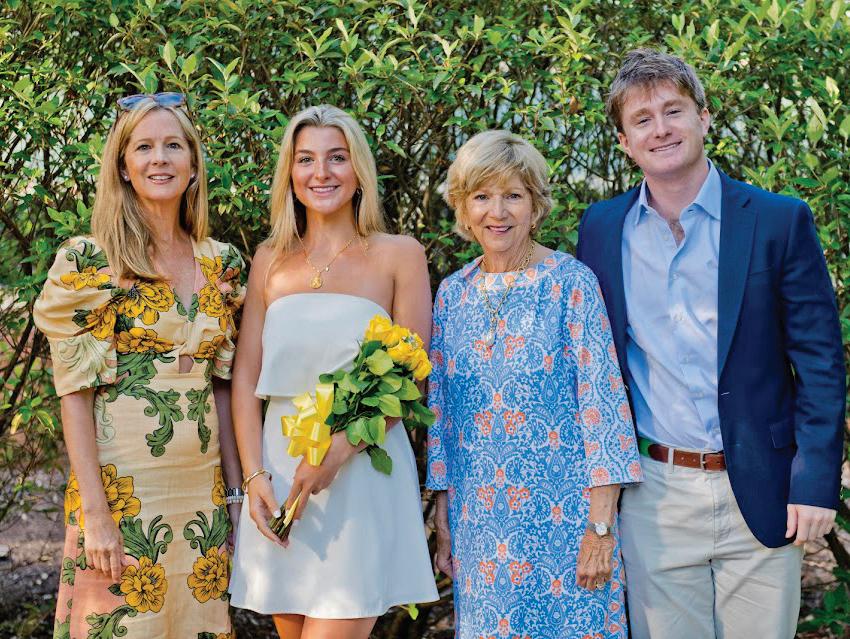
1. Gabriela Marie Linkonis with mother Nicole Marie Kelleher ’93 and uncle Francis James Kelleher Jr. ’98.
2. Isabella Randolph Little with uncle Lewis Randolph Little ’73, cousin Lewis Randolph Little Jr ’00, aunt Elizabeth Anne Beverly Little ’81, father Lloyd T. Little ’76, sister Elizabeth Gray Little ’13, and brother Logan Thomas Little ’18.
3. Frank Daniels MacNelly Jr. with father Frank Daniels MacNelly ’92 and brother Jake Michael MacNelly ’24.
4. Grayson Crawford McNeely Jr. with mother Tyler Fonville McNeely ’88 and aunt Walker Shaffner Fonville ’88. Not pictured: uncle Mahood Fonville ’88.
5. Elizabeth M. Myers with cousin Charles William Miller ’24, cousin Brian Justice ’85, father John Justice Myers ’82, sister Mary Kathryn Myers ’23, and aunt Karen Myers Miller ’88.
6. Henry Hart Palmore with aunt Elizabeth Camp Palmore ’97 and father Michael Goodrich Palmore ’93.
7. Rachel Samantha Peck with mother Suzanne Kitces Peck ’96.
8. Ann Virginia Reed with uncle Charles Reed ’83, brother Mercer Reed ’19, sister Laney Reed ’19, father John Mercer Reeves Reed ’85, and cousin Larus Reed ’16. Not pictured: Deceased grandfather Charles Larus Reed Jr. ’50 and deceased great-grandmother Edythe Robertson Reed ’20.
9. Isabel deLeon Rigby with mother Marshall Bates Rigby ’93, grandmother Isabel Spilman Bates ’67, and brother Thomas Gardner Rigby ’23.
1. Catherine Delaney Rohr with sister Eva Magdalene Rohr ’22, aunt Georgia Luck Mitchell ’98, mother Linda Luck Rohr ’93, and aunt Anne Luck Reynolds ’91.
2. Robertson Bayler Ruth with aunt Erin Smith Jewett ’94, brother Scott Forbes Ruth Jr. ’22, sister Anne Mason Montague Ruth ’19, uncle Bryce D. Jewett ’93, grandfather Bryce D. Jewett Jr. ’64, mother Jennifer Jewett Ruth ’90, father Scott Forbes Ruth ’91, aunt Courtney Ruth Turner ’97, and aunt Robin Ruth Jager ’88. Not pictured: Deceased grandmother Gay Montague Jewett ’65.
3. Cecile Elizabeth Shield and Thomas Turner Shield with father Henry Anderson Shield II ’91 brother Henry Anderson Shield ’23, aunts Stephanie Shield Roy ’00 and Katherine Shield Applewhite ’88.
4. Bridgette Harwell Schutt with brother Edward Patrick Schutt ’18, father Edward Christopher Schutt ’87, brother Charles Gannon Schutt ’20, and uncle Marshall P. Schutt ’98.
5. Caroline Perry Smith with sister Addison Hughes Smith ’20, father Julious Perry Smith III ’86, and sister Elizabeth Houston Smith ’22.
6. Lawson Elizabeth Vaughan with aunt Elizabeth Vaughan Anderson ’95, father Alan Porter Vaughan ’91, brother Alan Porter Vaughan Jr. ’23, grandmother Kate Donnahoe Vaughan ’65, and uncle Matthew Garland Anderson III ’00. Not pictured: grandfather C. Porter Vaughan III ’63.
7. Nora Lucille Wallace with brother Christopher Whitfield Wallace ’23, uncle Carl Nicholas Wallace ’00, and father Christopher Lawrence Wallace ’93.
8. Mary Douglass Wilkins with aunt Kim Robertson Berling ’86, father David Ryan Wilkins ’94, and mother Jennifer Robertson Wilkins ’92.
9. Justin Ray Williams with uncle Francis Williams ’13, father Jonnie M. Williams Jr. ’95, and brother Jonnie M. Williams III ’22.
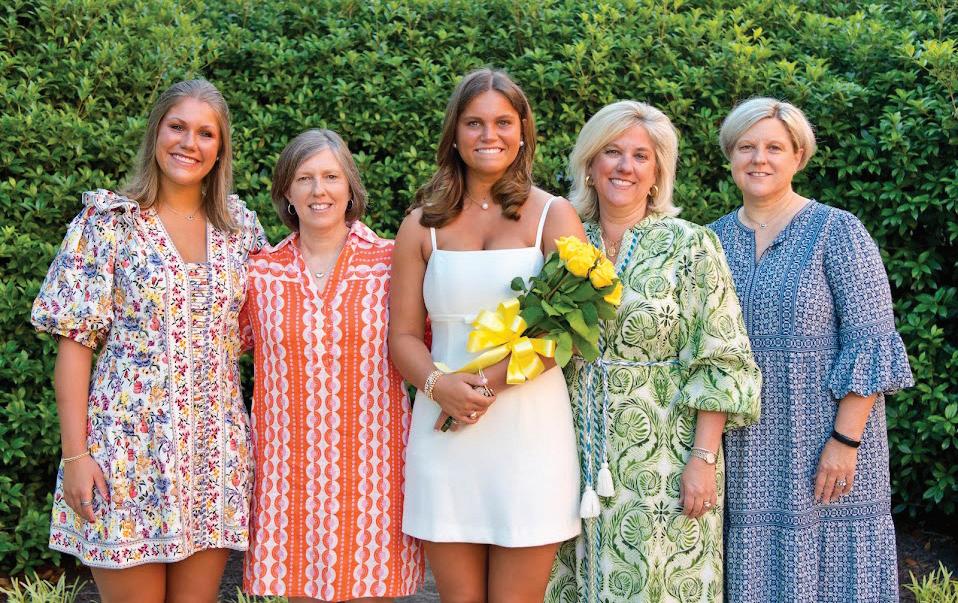
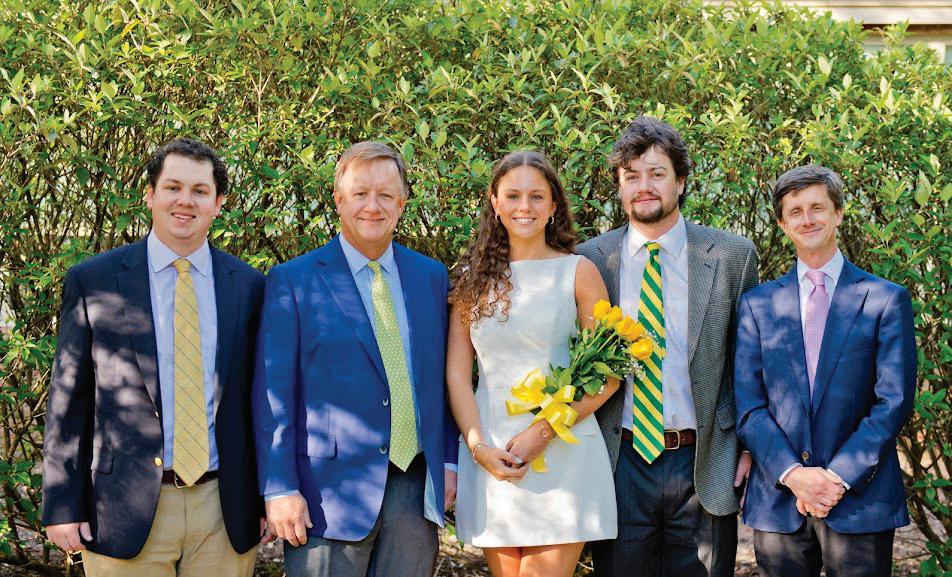
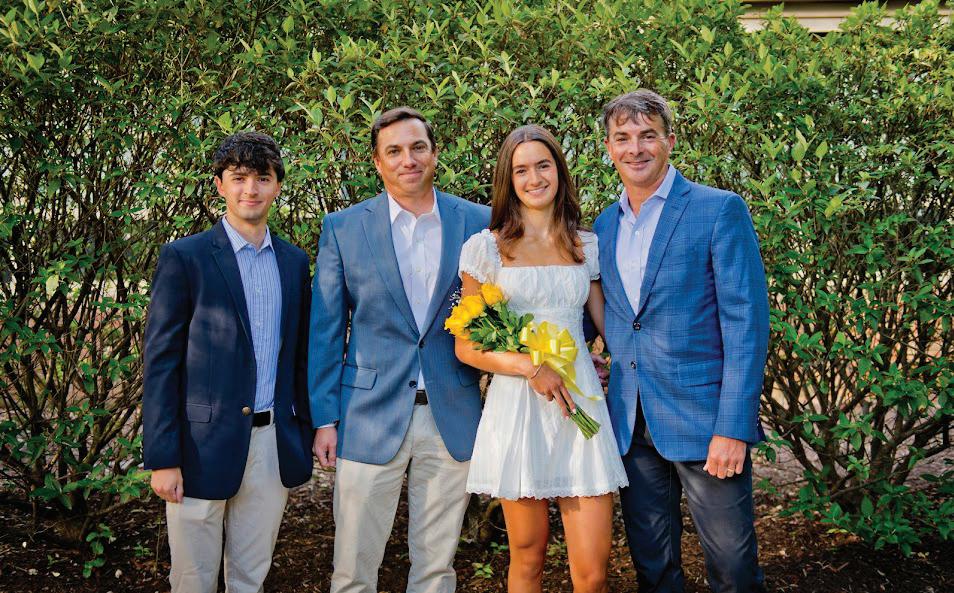
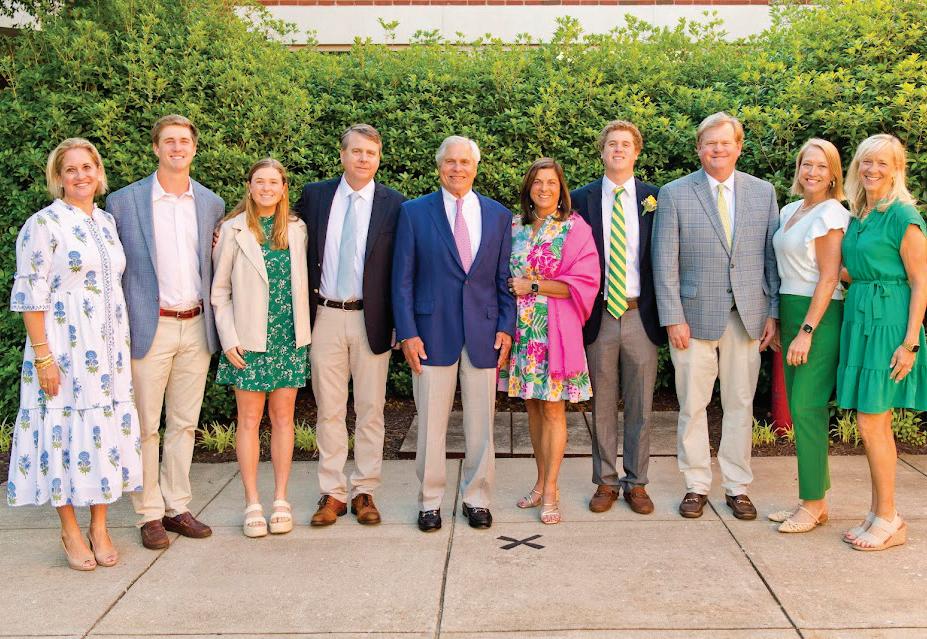
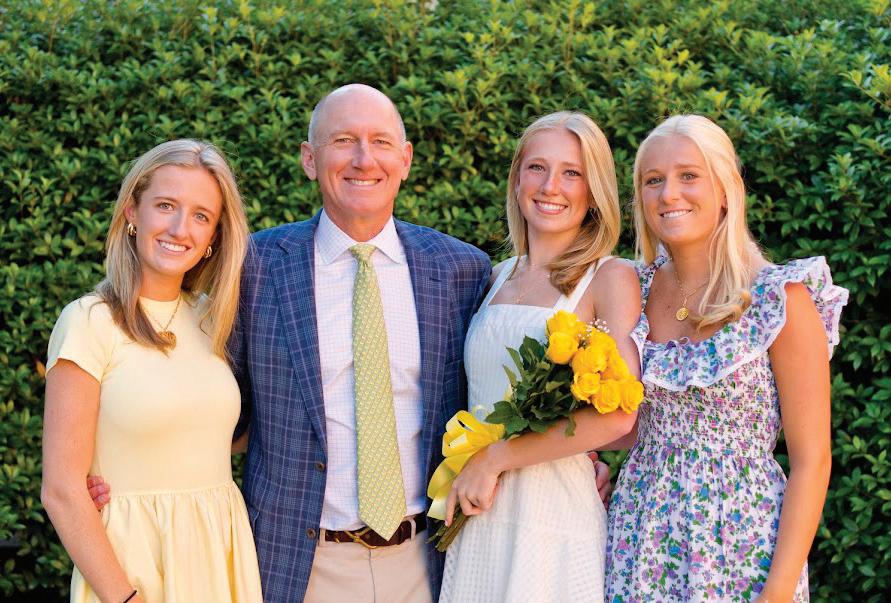
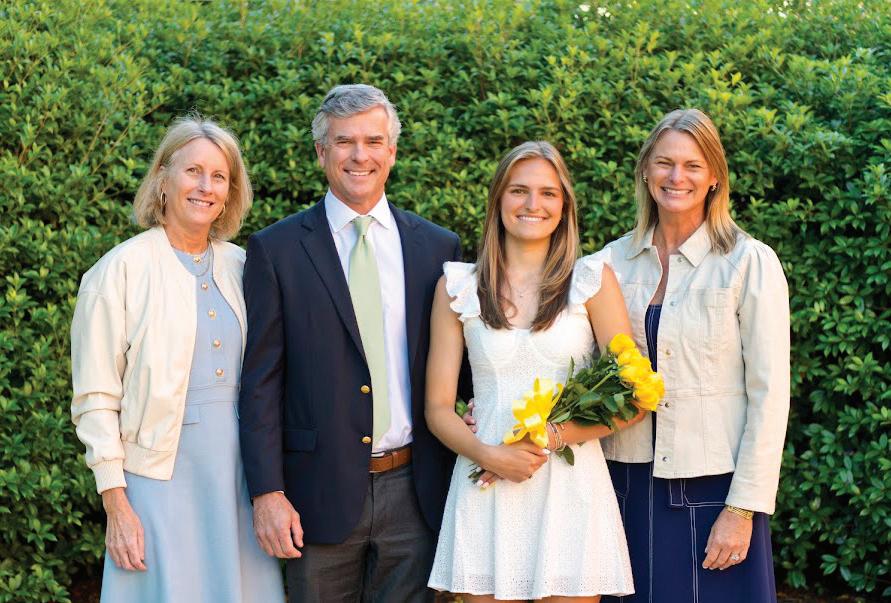
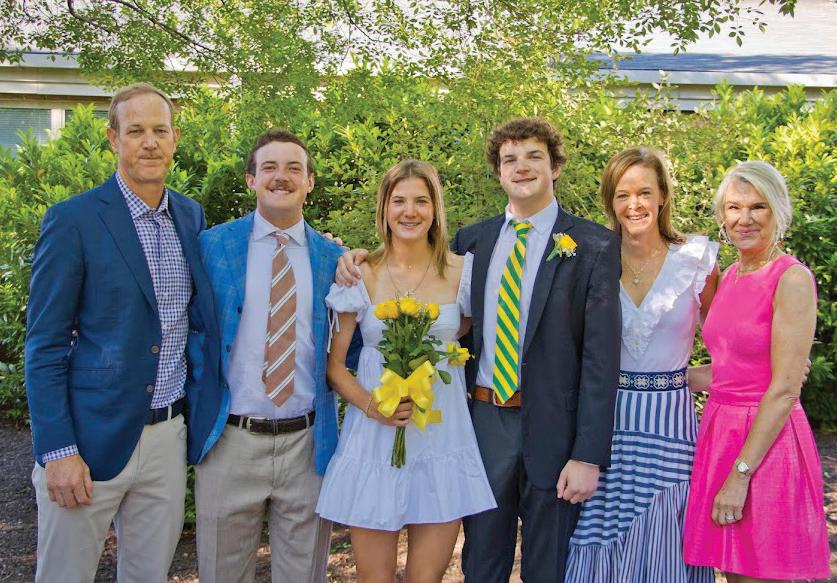
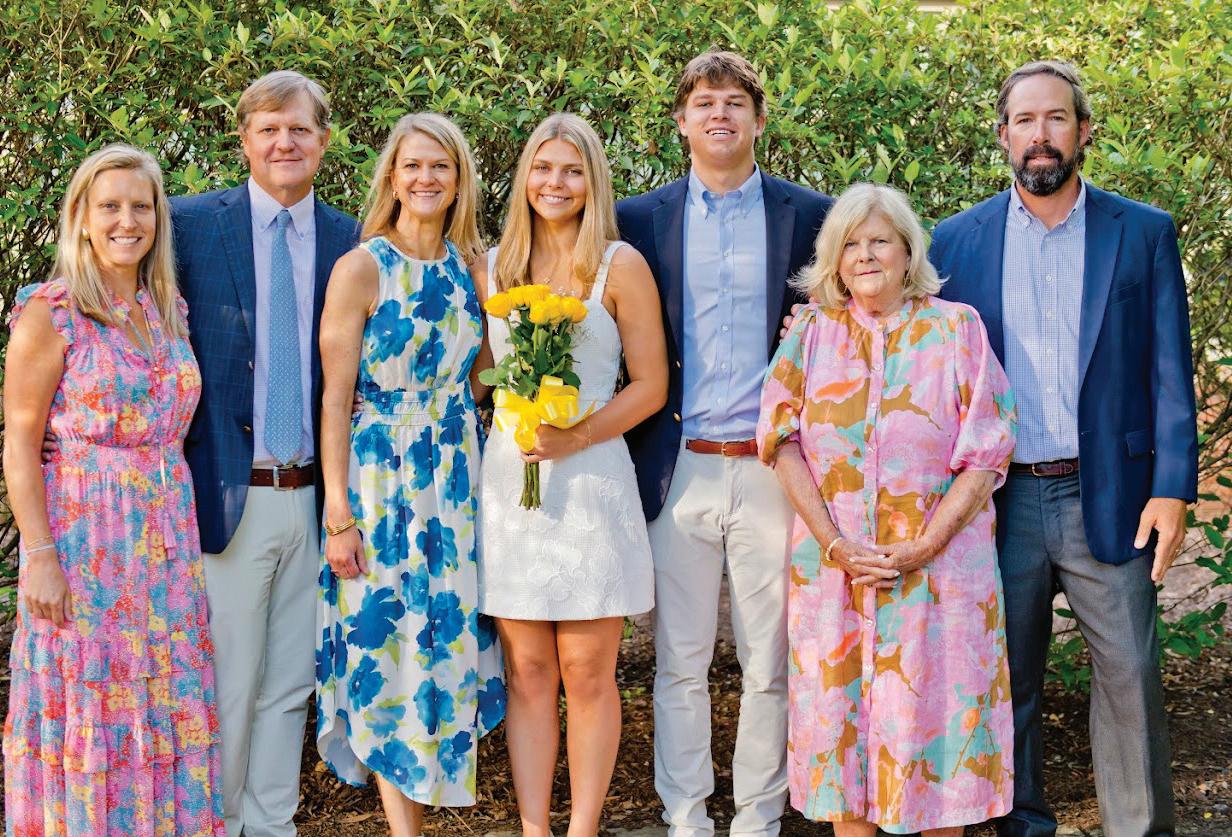
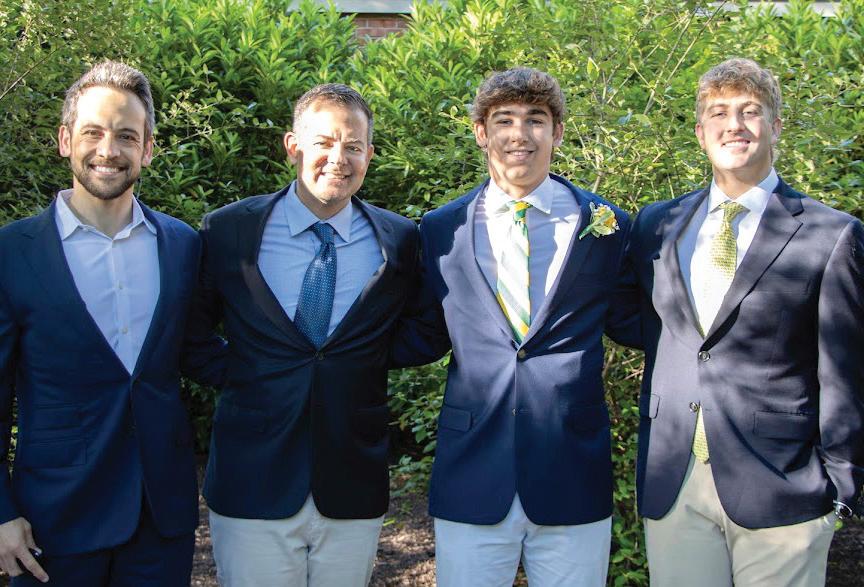
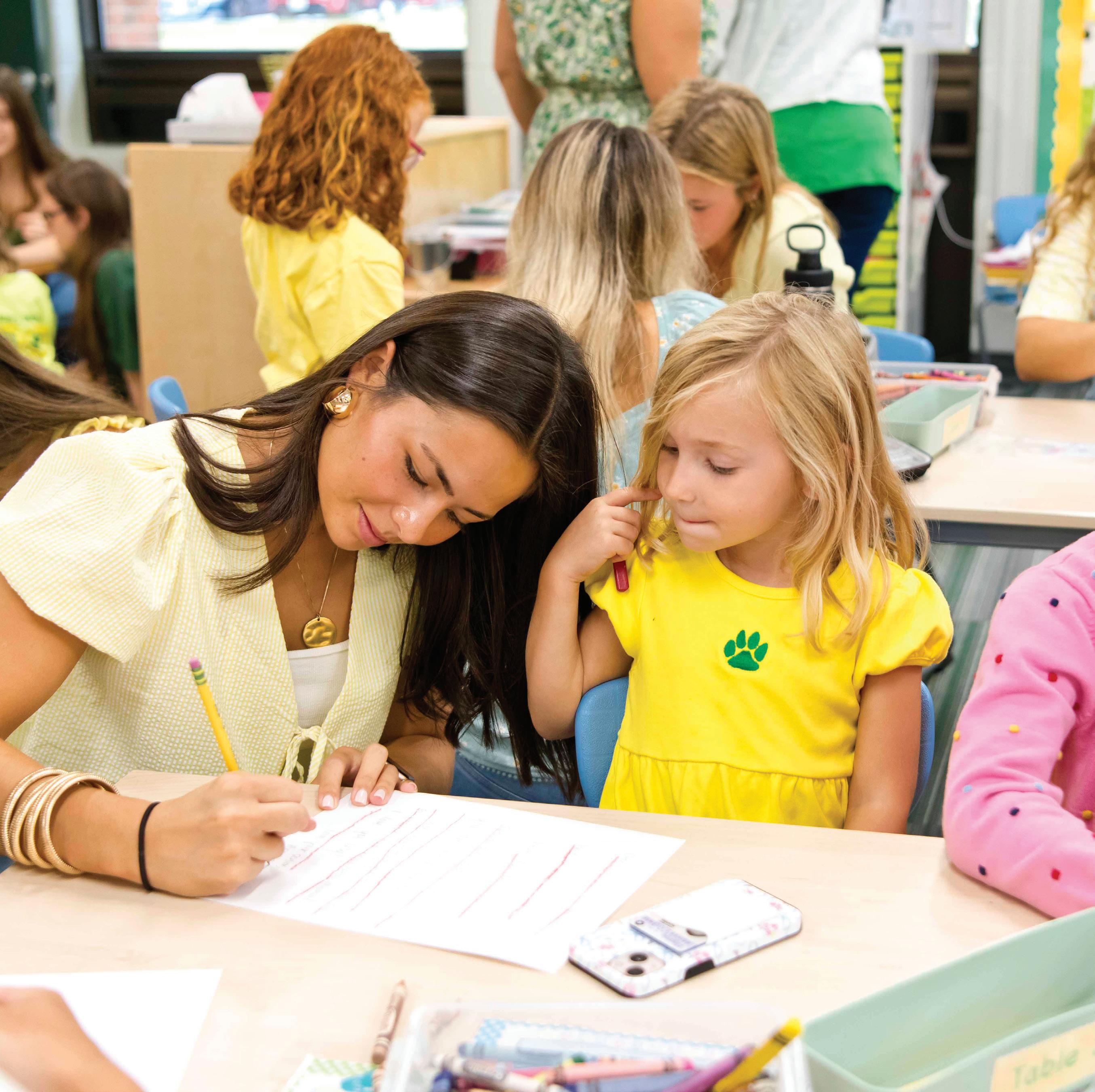


If you want a picture of friendship distilled to its purest form, look no further than the friendship between a Senior and their Kindergarten buddy. Like all strong friendships, theirs is one built on mutual respect and admiration. Although, by virtue of their age, the Seniors serve as role models to their Kindergarten buddies, the Kindergarteners impart just as much wisdom regarding life’s great questions — about sound character, about curiosity and kindness, about joy — as the Seniors do to their Kindergarteners. They might not be enrolled in the same courses, but they can still show one another what it means to be a Collegiate student and a responsible citizen. For this Senior feature, when Kindergarteners and their Senior buddies met for the last time just before Commencement, we asked a number of Kindergarteners what they think of their Senior buddies and some of the lessons and values they have learned from their friendship.
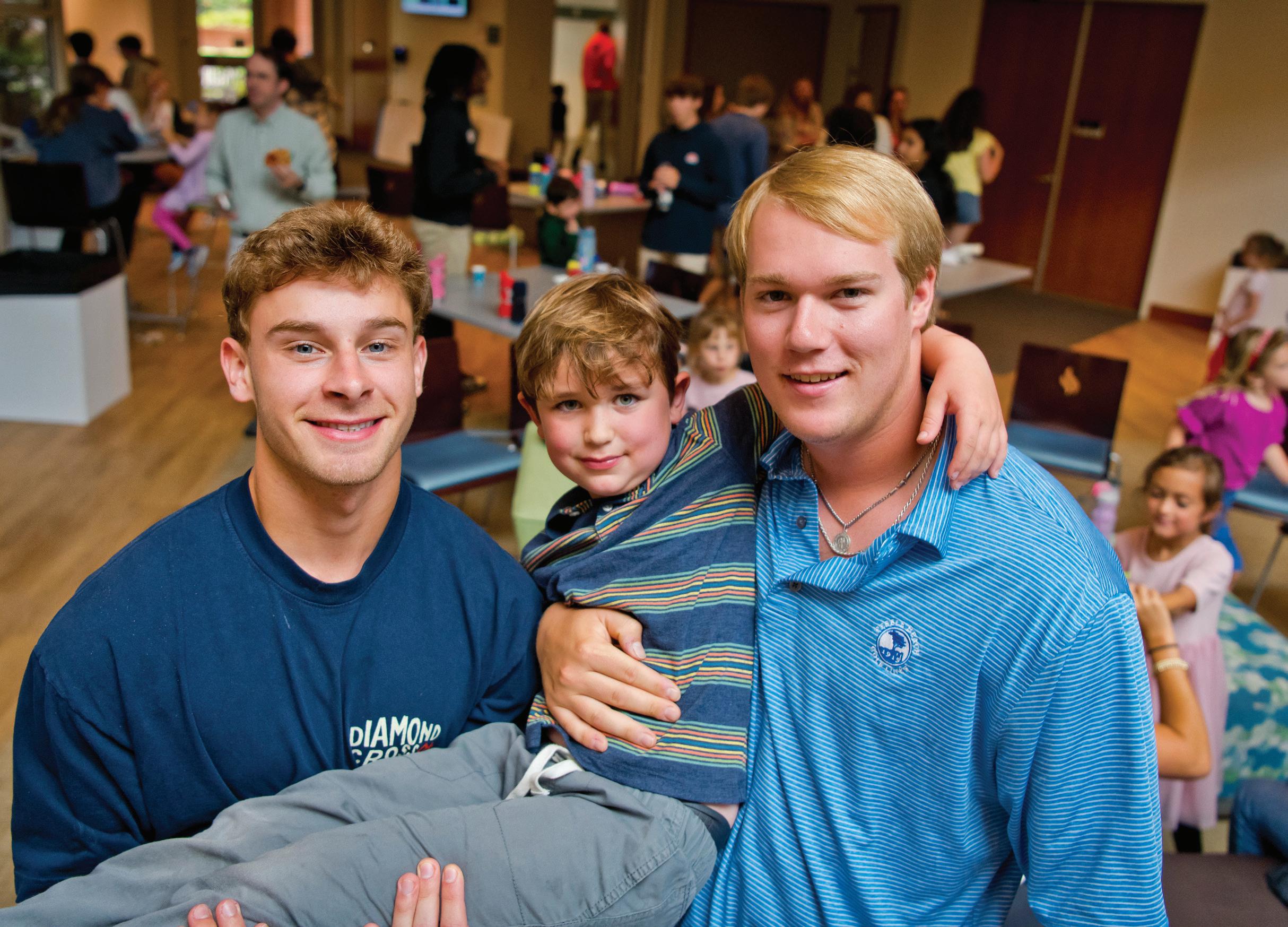
Carter Mitchell ’25, Blake Ingold ’25, and Teddy Dickinson ’37
“I really like that Blake is so funny and strong, because he plays football. I like that Carter is also really strong and he has some great jokes too. They both like to pick me up and throw me up, and that’s really fun.”
-TEDDY DICKINSON ’37
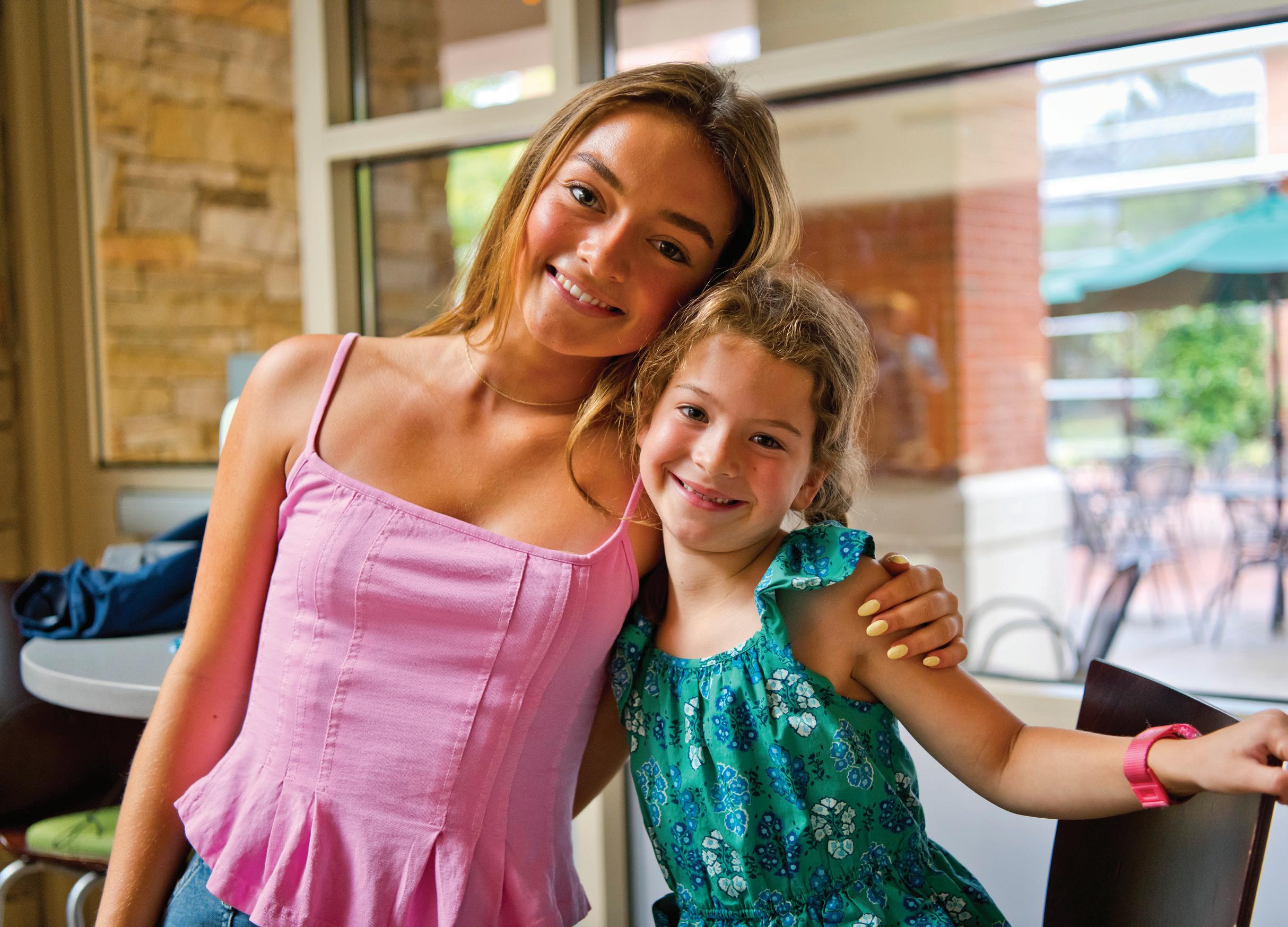
Lucy Beckstoffer ’25 and Eliza Henry ’37
“She’s nice to me, and she’s so funny. Because she’s been so nice, she has taught me a lot about respect. She’s nice to everybody.”
-ELIZA HENRY ’37
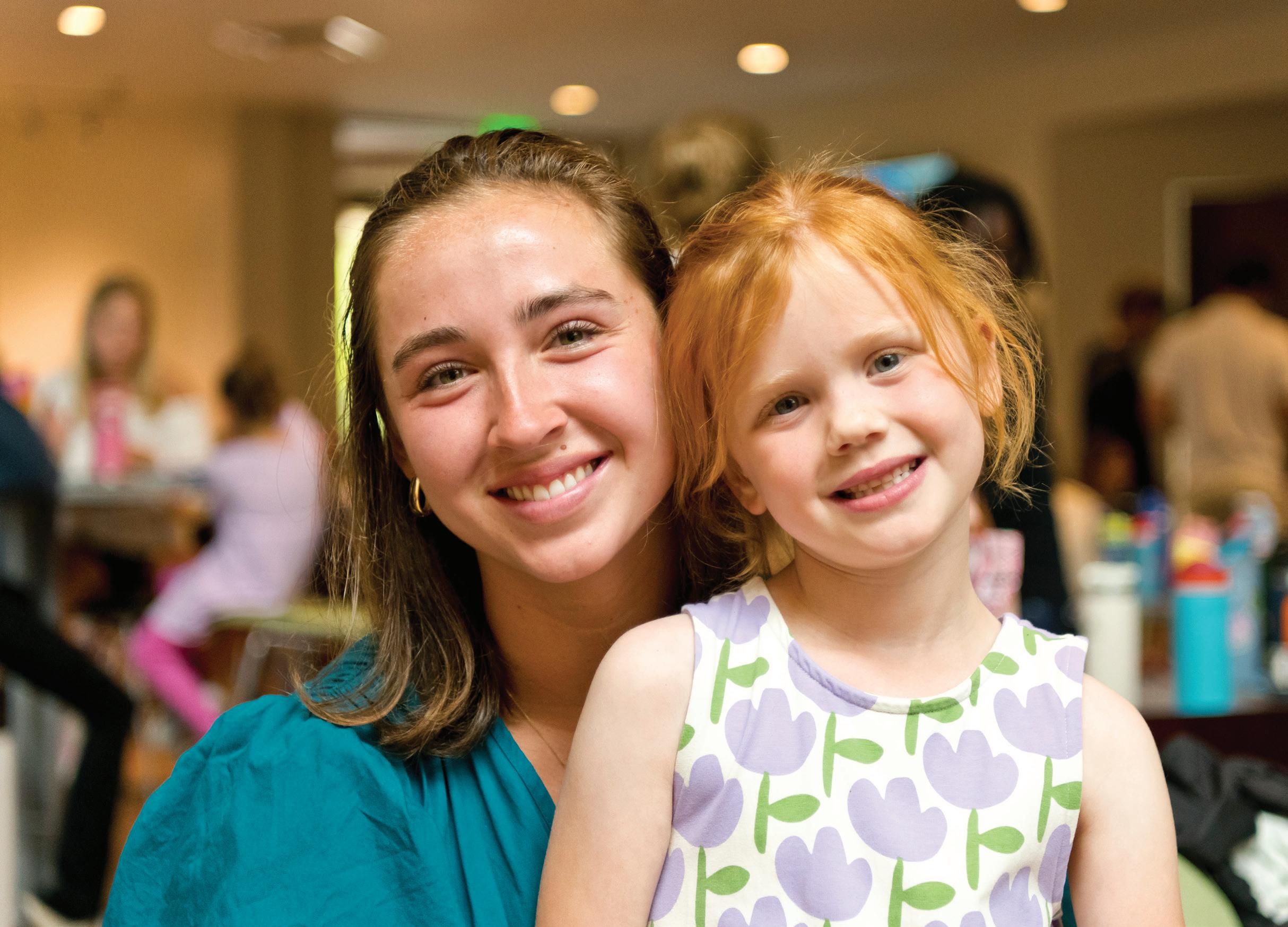
Gabriela Linkonis ’25 and Addison Murray ’37
“When I think of her I think of the first time I met my Senior. We went outside and played in the field and then we went back into the gym to sing songs together. She’s really kind to me and I know she respects others.”
-ADDISON MURRAY ’37
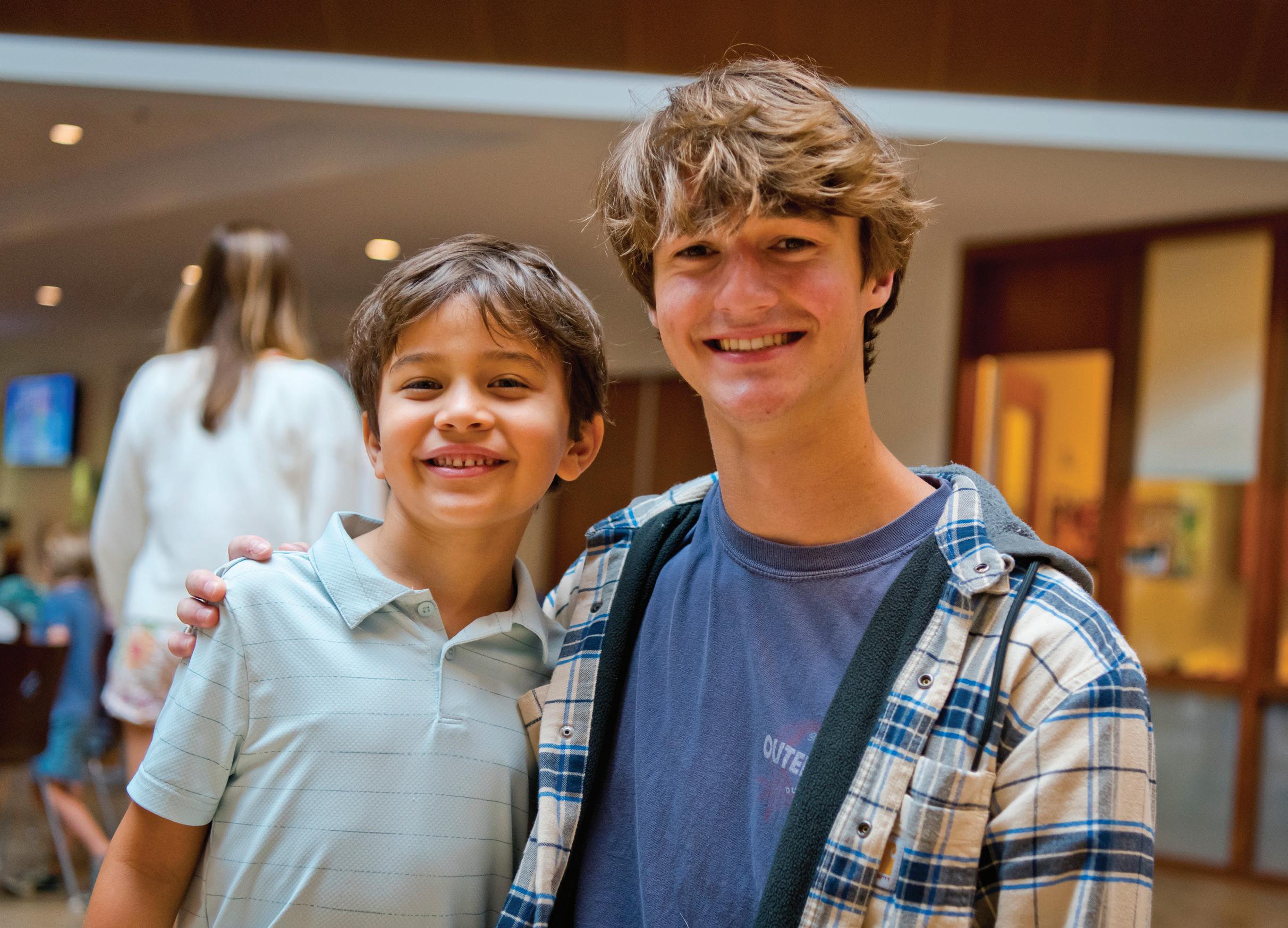
Jack Smith ’25 and Ignacio Fernandez ’37
“I actually really like Jack. If I had to choose a favorite memory with him it might be now. We’re having a pizza party! Jack is really awesome.”
- IGNACIO FERNANDEZ ’37
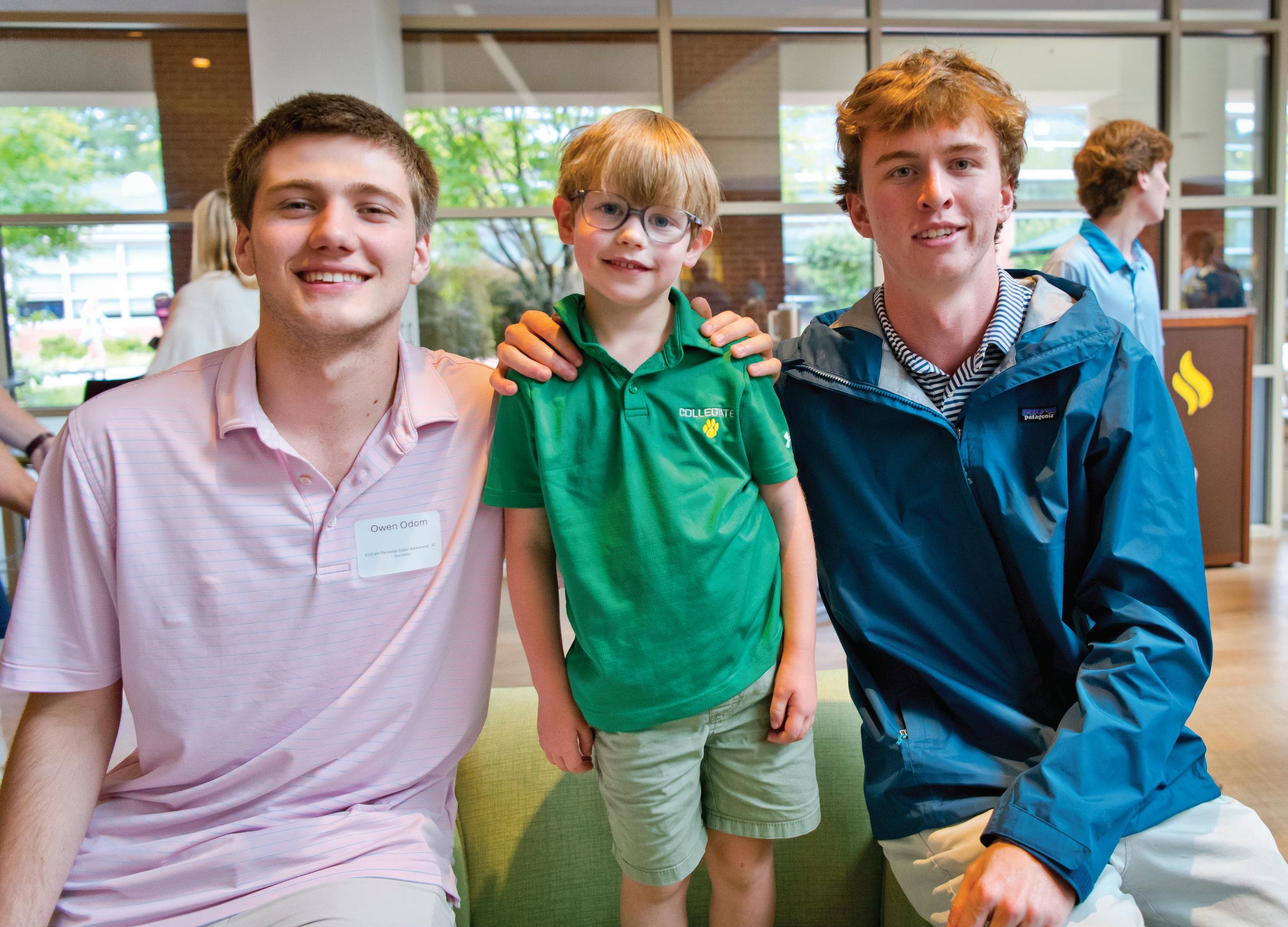
Owen Odom ’25, Frank MacNelly ’25, and Bryant Johnson ’37
“To me my Senior buddies mean happiness. We play together and hang out together, and that makes me happy.”
- BRYANT JOHNSON ’37
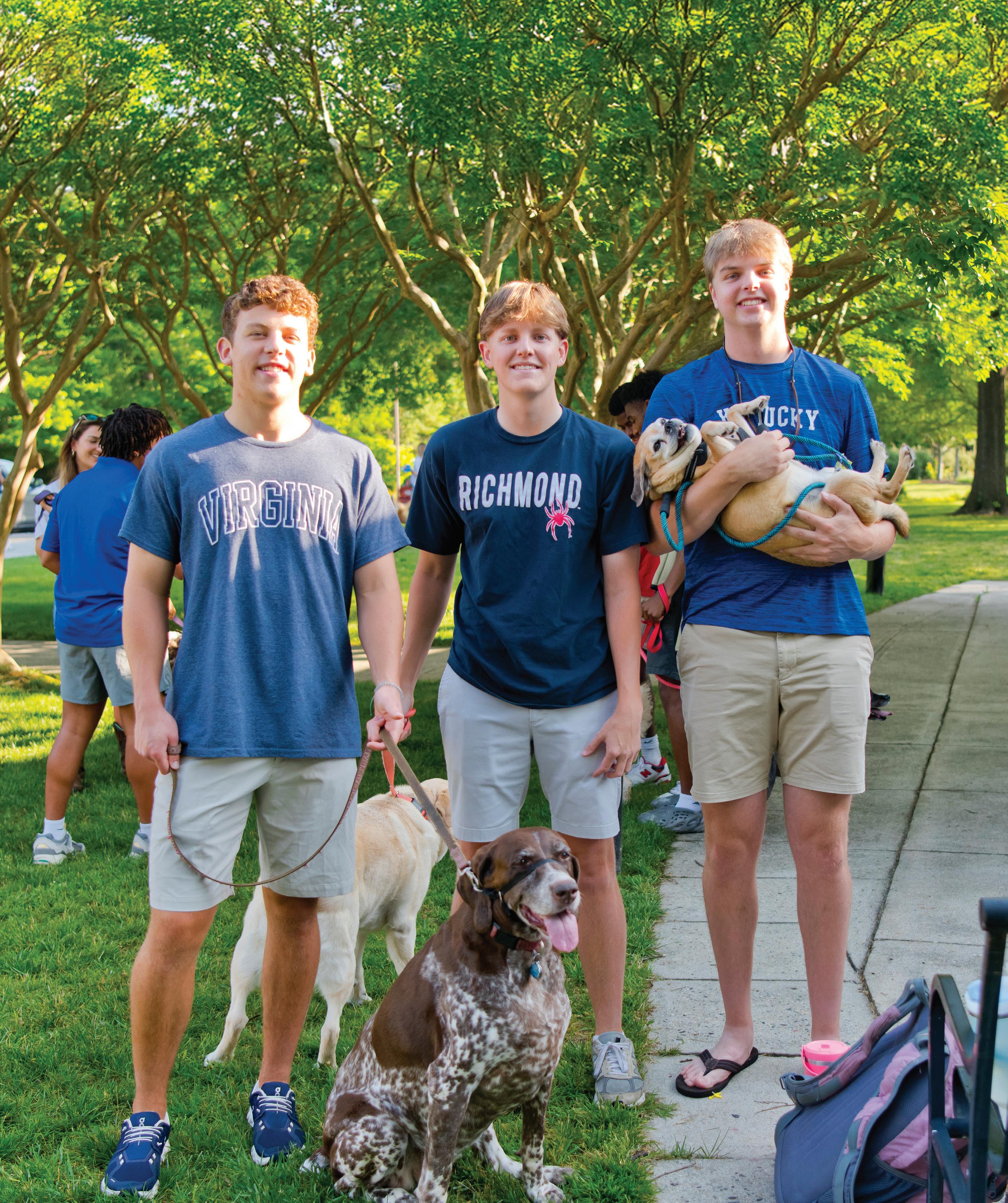
Letter from Alumni Association President Elizabeth Dolan Wright ’01
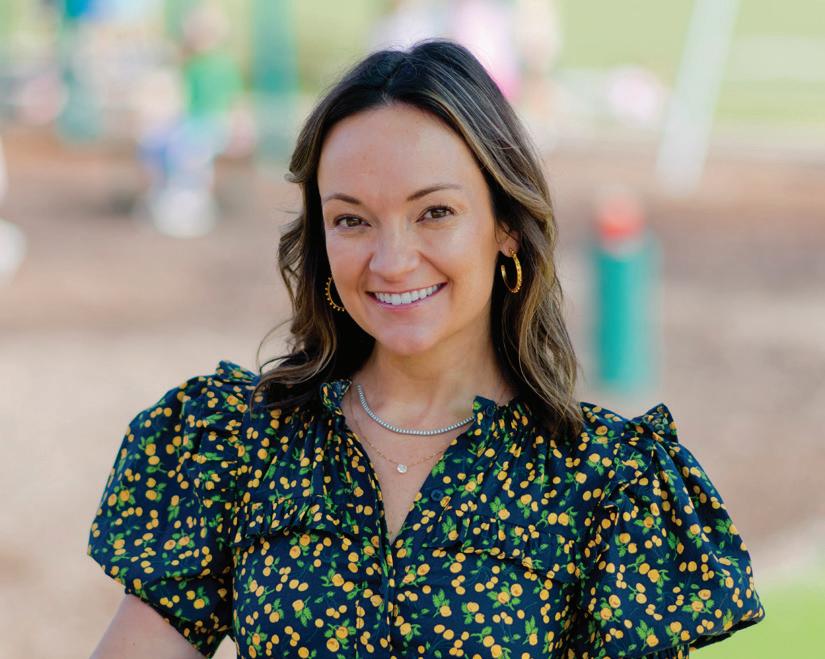
As I write this letter, I am in the delightful afterglow of an incredibly fun, albeit a bit exhausting, spring at Collegiate. The year-end picnics, parties, and traditions celebrate great milestones and acknowledge the achievements of our students, teachers, and families alike, sustaining the sense of community here we love so much.
As a parent of a 2nd and 4th Grader, I attended the States Fair, the Lower School Moving Up ceremony, and celebrated Class of 2033 “crossing the bridge,” which we will now affectionately call the Miller Bridge, honoring our adored Lower School Head Debbie Miller. During Senior Transition Week, in May, I joined 38 alumni to engage with the 143 graduating Seniors participating in the Senior Transition Program. With college and the professional world on the not-so-distant horizon, the Senior Transition Program helps students march boldly into the future. It felt great to be among fellow alumni, doing one of the things we do best: simply being there for students and young alumni, ready to lend a helping hand and offer advice.
Earlier this summer, in that same spirit of support, I had the great pleasure of connecting a rising Senior to the work of the Science Museum of Virginia’s foundation through Trailblaze, a one-week, alumni-driven job shadowing and mentorship program organized by Collegiate. I would like to take this opportunity to thank the many alumni, as well as parents, who participated in these fantastic programs for our students. The student-alumni connections forged through these events are certainly making a lasting impact while helping cultivate a lifelong devotion to Collegiate.
I am sure faculty, staff, students, and parents are joining me in embracing the more relaxing pace of summertime. Of course, when time slows down, we have the chance to reflect. The age-old saying of how “the days are long, but the years are short” comes to my mind. While attending the Moving Up ceremony, it struck me that it didn’t feel so long ago that our children were in masks and six feet apart (do some remember “cover, clean, and space between”?). How wonderful it feels to be able to now give congratulatory hugs and see so many precious smiles around campus.
In 2020, our Seniors were sadly deprived of some of the most seminal end-of-year traditions — such as prom and Commencement. This fall, we will welcome them back with open arms for their five-year reunion! The Class of 2020 has without a doubt demonstrated great resilience, responsible citizenship, and held tightly to their Collegiate values. When the Alumni Association Board considered who might be the right choice to receive the Distinguished Alumni Award at Alumni Weekend this September, the entire class seemed like the most obvious honoree. We can’t wait for their return to campus to experience the ceremony and accolades they were unable to enjoy in person.
Back to “the days are long, but the years are short.” I know all alumni must feel the same way when they are back on campus, whether it has been five years or 50! All Alumni are invited and encouraged to join us for this year’s Alumni Weekend, held Sept. 26-27. Of course, we understand many of our alumni live elsewhere, and it might not be so easy to get back to Richmond as often as you would like. So we encourage your participation from wherever you are! In October, the Alumni Association will host our annual Junior Career Fair and welcome the opportunity for remote, live-streamed alumni speakers, and we always love supporting the planning of regional events to inspire deeper connections with alumni near and far. Please keep in touch by reaching out to Collegiate’s Director of Alumni Engagement Anne Gray Siebert (asiebert@collegiate-va.org). We love hearing your ideas and we thank you for your steadfast commitment to Collegiate!
Elizabeth Dolan Wright ’01 Alumni Association President
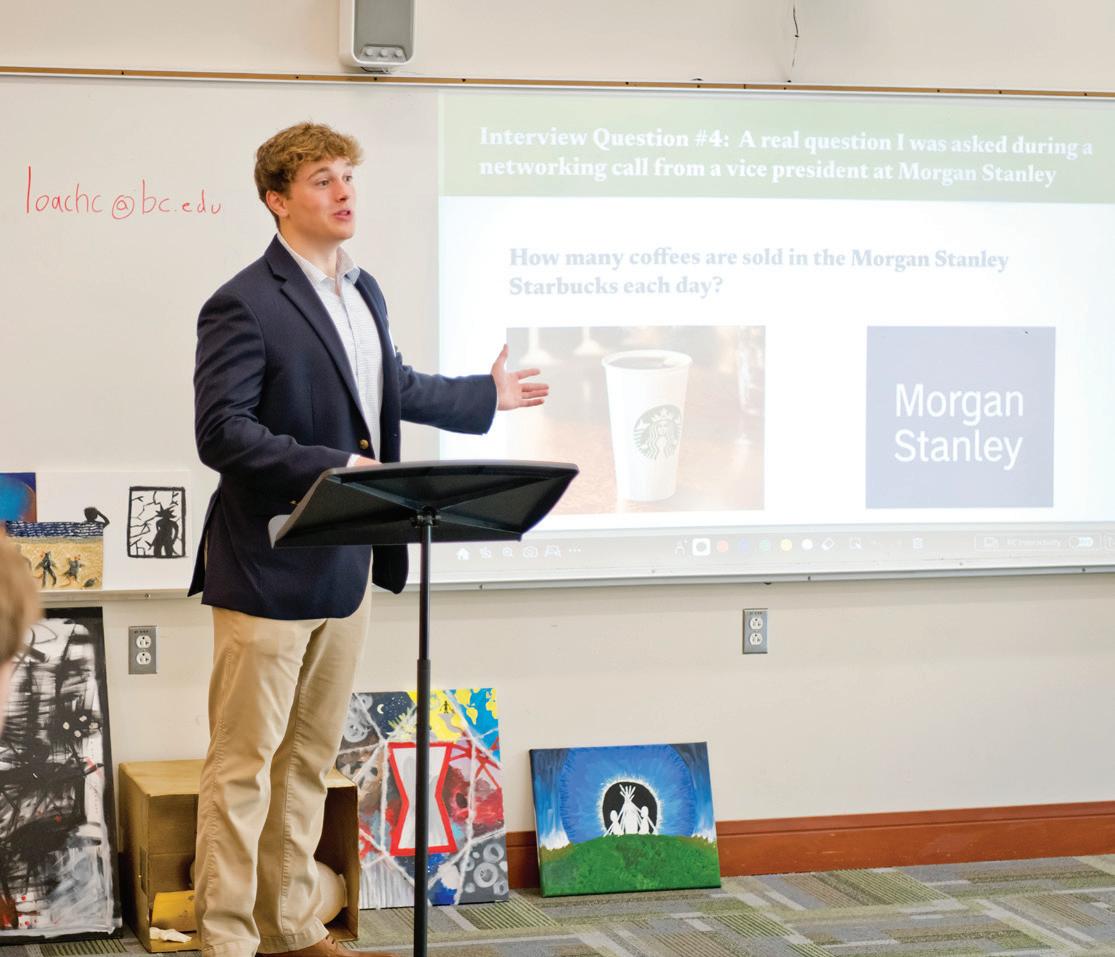
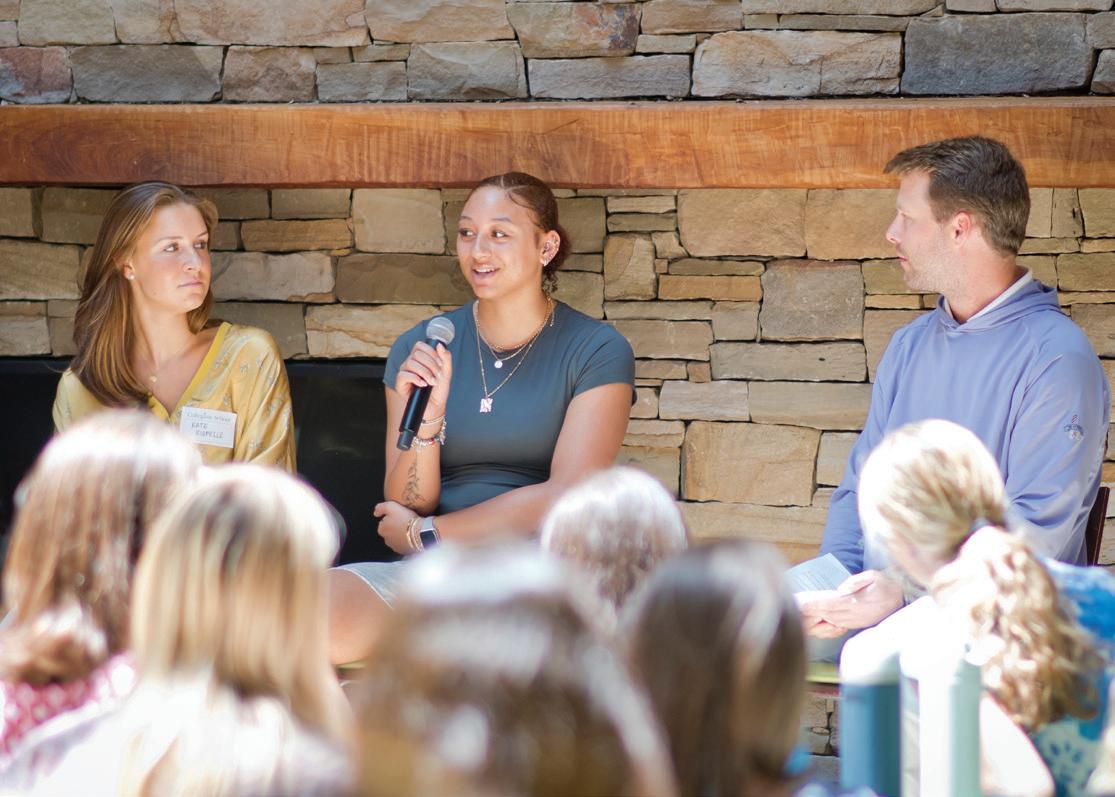
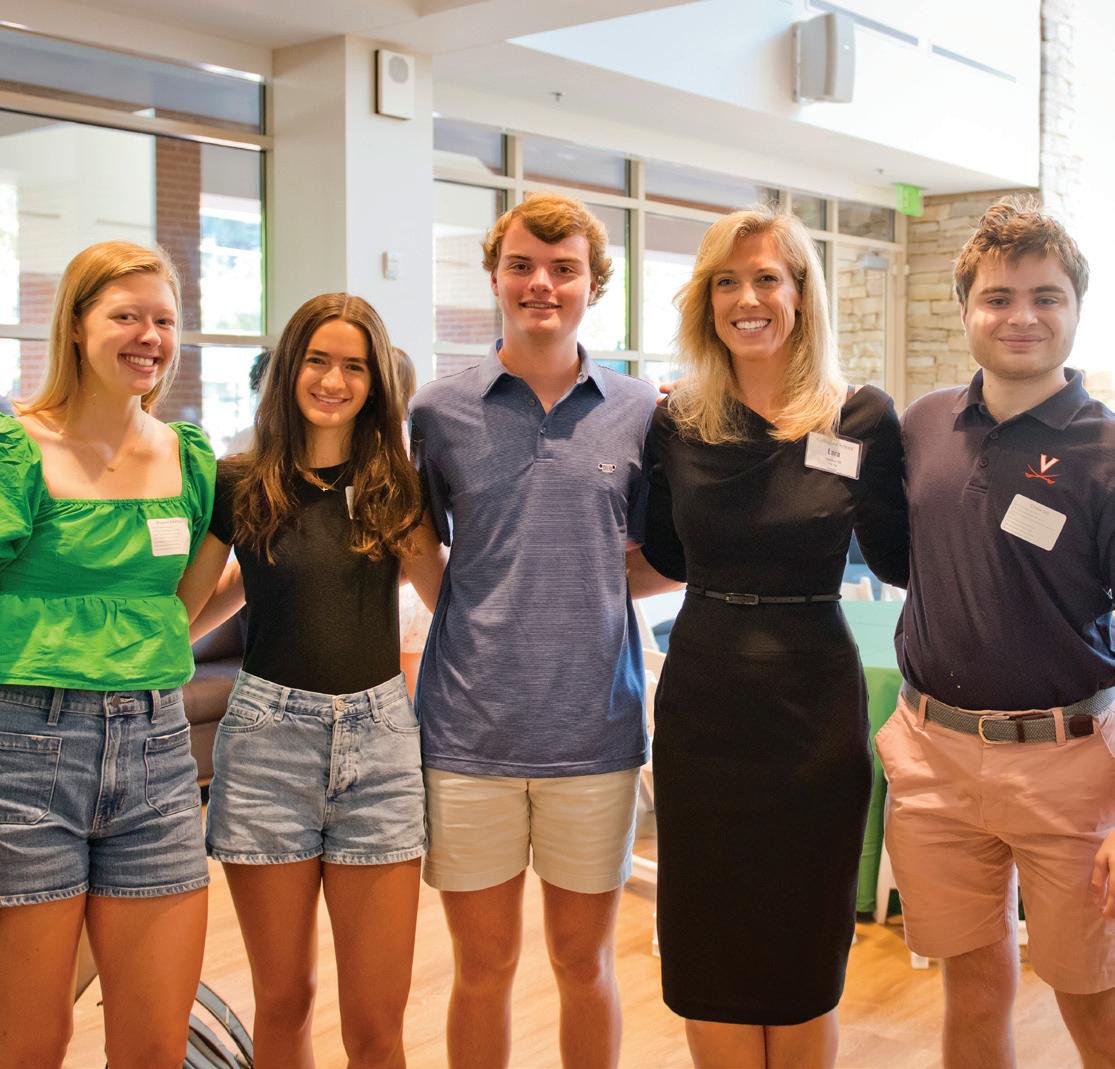
ALUMNI RETURN TO CAMPUS TO IMPART KNOWLEDGE
A Collegiate education will teach a myriad of things, but, in the formal curriculum at least, you won’t learn how to plunge a toilet or meal prep in a college dorm room. That’s where Collegiate’s alumni network comes in.
As part of the Senior Transition Program, Collegiate alumni come back to campus to provide advice and share their experiences with the graduating class in the hopes of smoothing the transition into the next stages of their lives. This year’s event brought alumni back on campus to lead invaluable discussions on financial planning, college readiness skills, résumé and letter writing, cooking instruction, and much more.
With college and the professional world on the not-so-distant horizon, the Senior Transition Program helps students march boldly into the future. Beyond the alumni-led sessions, which lasted two complete days, a week of educational development discussions helped prepare students for their next steps.
NUMBERS GAME
Charlie Willingham ’18, a member of the Los Angeles Dodgers baseball analytics team, translates the game from stats to on-field success. By Weldon Bradshaw
IF CHARLIE WILLINGHAM ’18 had his choice, he’d be pitching for the Los Angeles Dodgers rather than working in the team’s front office.
That said, the 2018 Collegiate graduate’s gig as a baseball strategy and information analyst with the defending World Series champion and current National League West leader enables him to indulge his passion not just for his all-time favorite sport but for the esoterica inherent in it in a meaningful and fulfilling way.
“I love what I do, but if I had the talent and natural ability to play major league baseball, obviously, that would be a dream come true,” says Willingham, a right-handed relief pitcher for the Cougars as a Junior and Senior. “My fastball was maybe 78 miles an hour in high school. I wasn’t good enough to play in college, so I had to find other ways to stay involved.”
An Atlanta Braves fan growing up, Willingham began his baseball journey as a fiveyear-old in the Richmond Little League, started travel ball at 13, and ultimately worked his way through Collegiate’s program from Cub to JV to varsity.
His connection with the sport continued after he enrolled at the University of North Carolina, where he graduated in 2022 with a B.S. in statistics
and analytics and a minor in math and data science.
“I was always math-oriented,” he says. “I was always interested in applying math to different things. From middle school through high school, I had an interest in baseball statistics.”
His pathway to the MLB began in earnest when he arrived in Chapel Hill and joined the Carolina baseball analytics team, a student-run volunteer group that worked closely with the Tar Heels’ coaching staff.
Upon graduation, he signed on as a junior baseball strategy and information analyst with the Dodgers, an organization that’s been on the cutting edge of analytics to enhance performance since analytics became an integral part of the baseball landscape. After two seasons, the Dodgers removed the “junior” tag from his title.
What does Willingham’s job actually entail?
As a member of the eight-person analytics team, he and his colleagues take the data collected from a variety of sources by the baseball systems team, synthesize, clarify, simplify it, and present it to specific coaches, who, in turn, present it to the players in their charge.
“We’re the translators,” Willingham says. “We give meaning to it and explain how it’s important to what we’re try-
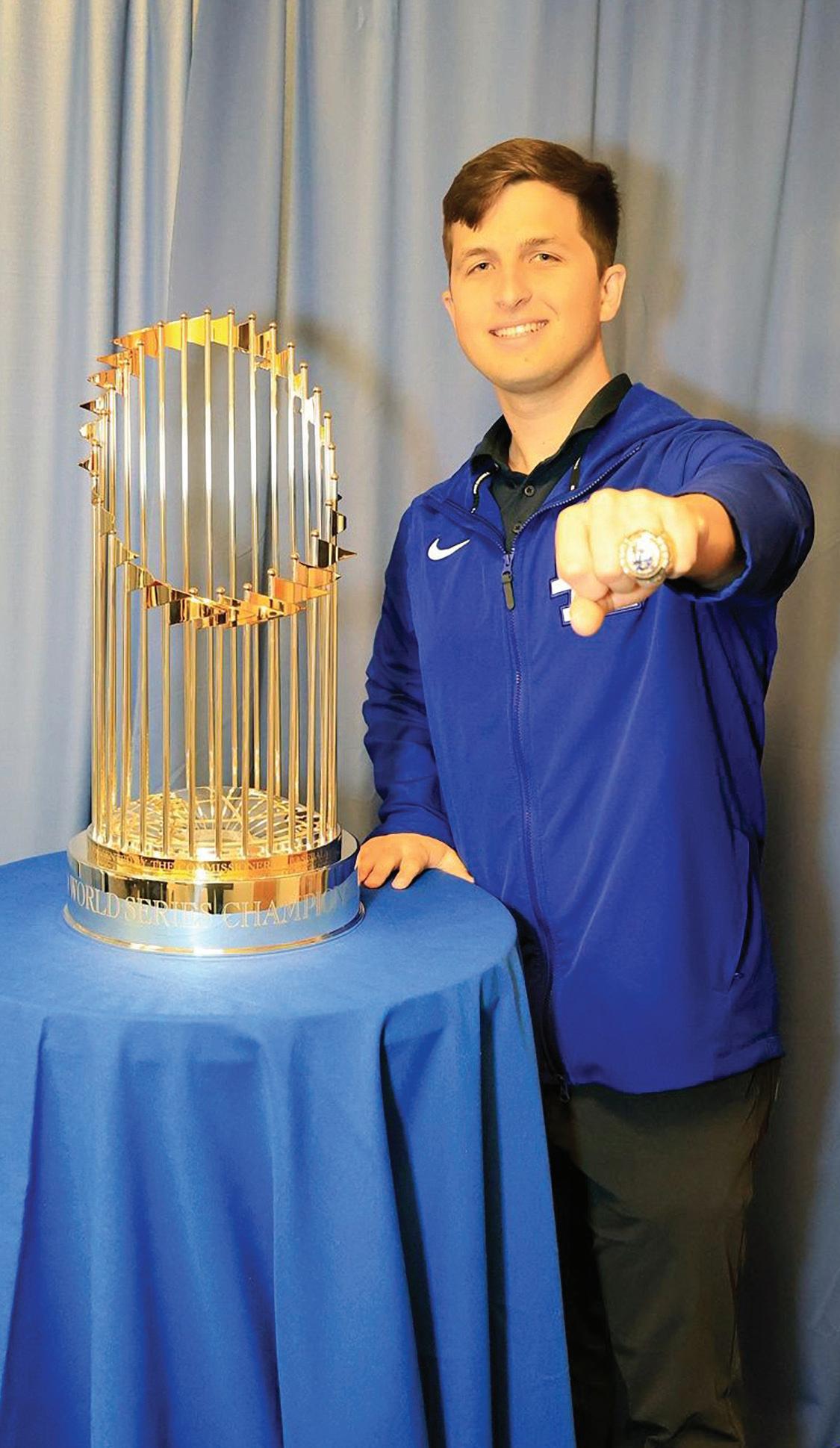
ing to do on the field. We take the technical sounding numbers and metrics and models and turn them into something that makes sense.”
For most of his time with the Dodgers, Willingham’s role has been with defensive positioning.
He’s worked extensively with Chris Woodward (first base coach/infield coach) and Dino Ebel (third base/outfield coach), so when players such as all-stars Freddie Freeman (first baseman), Mookie Betts (shortstop), or Teoscar Hernandez (outfield) shifts slightly from his usual spot, it’s likely on Willingham’s recommendation.
“I’m always looking at spray charts, which are graphs showing where on the field each batted ball was hit (by a particular opposing player),” Willingham says. “Ground balls for infield. Fly balls for outfield. All of our infielders and outfielders will have a card in their hat or pocket that tells them where to stand for each batter. It’s cool to have these conversations with our coaches about where we want [our fielders] against a certain hitter and have the feeling that they’ll defer to what I think we should do.”
This season, Willingham’s role has expanded to pitching game-planning, where he works closely with Mark Prior (pitching coach), Danny Lehmann (bench coach), and Josh Bard (bullpen coach) to determine how pitchers should attack each opposing hitter. When the likes of all-stars Clayton Kershaw, Tyler Glasnow, Yoshinobu Yamamoto, and Shohei Ohtani take the mound with Will Smith behind the plate, chances are that Willingham has played a role in determining pitch selection.
“Does this guy hit fastballs well?” Willingham explains. “Can he hit breaking balls? Will he be aggressive if we challenge him in the zone? Can we get him to chase pitches out of the zone? Things like that.”
Suffice it to say that he’s earned the trust of those with whom he works.
“I definitely give a lot of advice for each game, each series,” he says. “Trust is super important. A couple of the coaches I’ve been working with directly for two years have gotten very comfortable with me. The trust is there.”
Baseball is a numbers game. There is a cold, paper-thin difference between a strike and a ball, a good season and a bad one. Finding clarity within the minutiae is where Willingham excels.
“It’s finding any way to help us prevent an extra run or win an extra game,” he says, “and being able to watch games, knowing that our fielders are positioned where they are because of what I decided with the coaches and our pitchers are throwing certain pitches based on a game plan that I and some others helped determine. Over the course of a season, hopefully it makes a big difference.”
The job isn’t just a game-bygame endeavor.
“Leading up to the trade deadline and in the off-season, my group does a series of deep dives on players that we’re looking at or trading for or signing as free agents,” he says. “We try to give our front office leadership a 100 percent clear picture of who each player is, what he does well, what he doesn’t do well, and what we can do to make him better.”
The job is also very much behind the scenes. For Will-
There is a cold, paper-thin difference between a strike and a ball, a good season and a bad one. Finding clarity within the minutiae is where Willingham excels.”
ingham, it’s about taking quiet pride in playing an understated, often unsung role and making a difference.
“It’s definitely cool to see when the media references the Dodgers’ analytics team,” he says, “but I’ve never been one to really care about having my name and face out there.”
Willingham and his colleagues had an up-close-and personal view of the 2024 World Series and earned a ring, as did all members of the Dodgers’ organization.
He was in LA when Freeman hit a 10th inning, walkoff grand slam to win Game 1 against the New York Yankees.
“One of the most iconic moments in World Series history,” he says. “That was epic.”
He was in New York with the entire front office crew for Games 3, 4, and 5, the last of which was the clincher.
“One of the best nights of my life,” he says. “It was really cool to be the enemy at Yankee Stadium.”
Where does Willingham go from here?
“My dream is to stay in baseball long term and continue to move through the ranks into higher front office roles,” he says. “Now, I’m just taking it one year, one season at a time. I couldn’t be happier than where I am right now.”
YOUNG TRAILBLAZERS
Established by the Upper School, the Powell Institute for Responsible Citizenship, and the Alumni Association, the Trailblaze program provides space for students to grow in their curiosity.
For aspiring professionals, the potential avenues of employment a student can pursue sometimes seem endless. There’s politics and law, banking and finance, communications and marketing, engineering and science, and that doesn’t even cover the specifics within each of those fields or the fields that don’t exist yet. The list goes on, which is both daunting and encouraging.
That’s why, each summer, Collegiate offers rising Seniors the opportunity to participate in Trailblaze, a job shadowing program that connects students with Collegiate alumni. Established by the Upper School, the Powell Institute for Responsible Citizenship, and the Alumni Association, Trailblaze provides space for students to grow in their curiosity. The program expands and specifies students’ focus; they become more familiar with the jobs within a field and the opportunities available to them. “Trailblaze is a powerful reminder of what makes the Collegiate community so special,” says Director of Alumni Engagement Anne Gray Siebert ’97. “Through the generosity and kindness of our alumni, our students gain access to incredible opportunities that help shape their futures. From hands-on experiences in
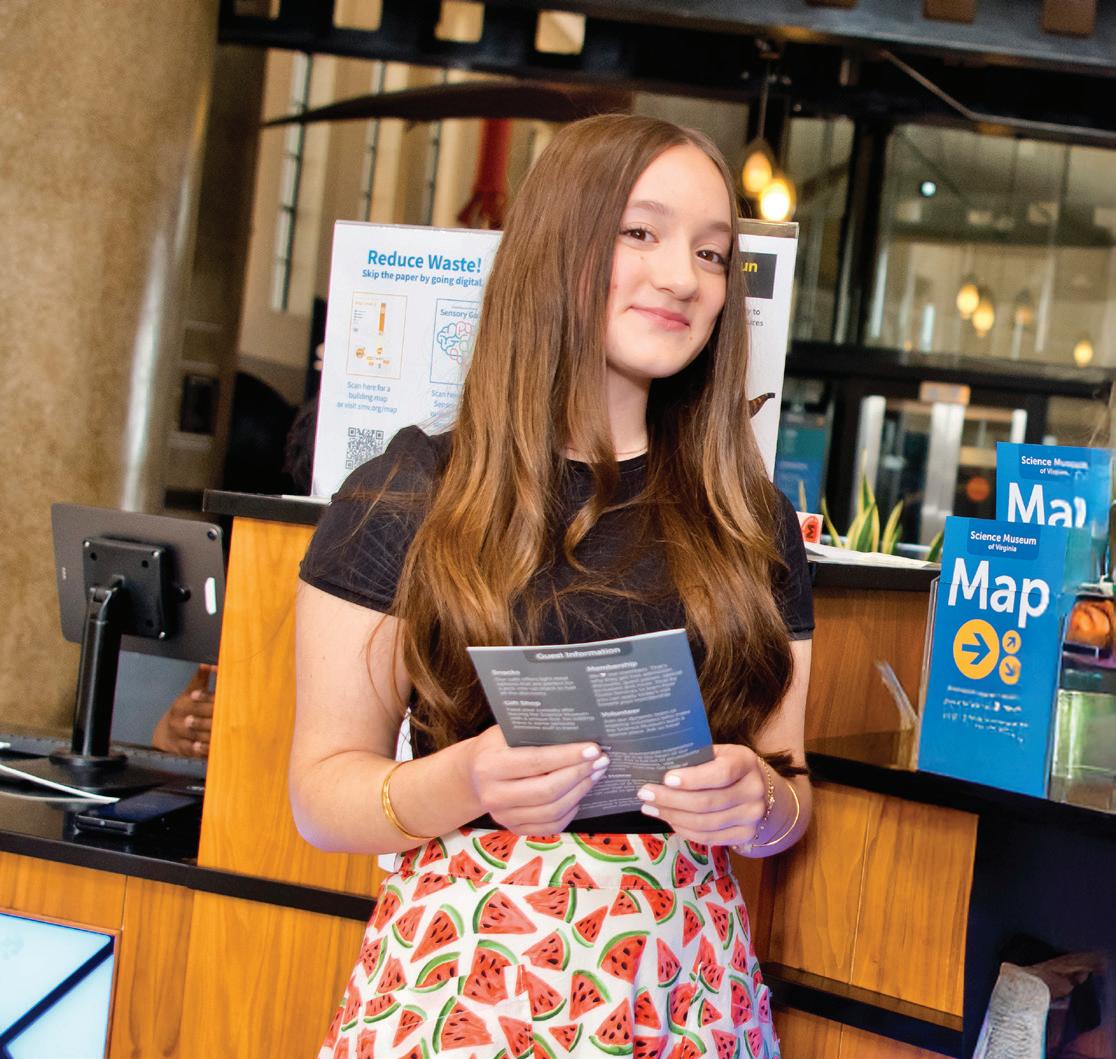
medicine and finance to creative fields like design and media, the doors our alumni open are truly life-changing.”
Eleanor Qureshi ’26 operates with a certainty unique for her age. She knows what she wants to do, and she’ll tell you as much with an enthusiastic clarity that makes you believe she’s already been in the field working for 10 years. A passionate percussionist and member of the Richmond Symphony, Eleanor wants to pursue a specific field of music education nonprofit management. “I realize that’s very niche,” she says, “but because of my involvement with the Richmond Symphony, I’ve seen the good that nonprofits like that can do in providing broader access to music education. That seems really cool — and really important — to me.”
In the spring of 2025, students like Eleanor submitted a Trailblaze interest form to participate and were placed with businesses and organizations that fit their potential career interests. Paired with Elizabeth Dolan Wright ’01, who serves as vice president on the board of the Science Museum of Virginia Foundation, Eleanor was able to take a deep dive into the intricacies of nonprofit management. “Nowadays, it’s difficult to find internships that are offered
to high school students — let alone one that you’re actually interested in,” Eleanor says, “so being given the chance to work with an organization that pairs with something I’m passionate about was really unique.”
She arrived at the office of The Science Museum of Virginia Foundation on an early Tuesday morning in June, bubbling with excitement and apprehension. She had beaten the traffic on her morning commute, the first morning commute to an office she had ever taken. She was stepping into an office setting for the first time, too. In fact, it was a week of firsts. First meetings, first strategic communications conversations, first emails, first lunch breaks. Finally stepping into that world was thrilling to her, like a traveler boarding a plane after months of vacation planning. Each day, through the connections of Dolan Wright, she spent a few hours shadowing a different supervisor. She was fascinated by the process of website management and the creativity of the communications team. She was blown away that someone had the job of overseeing the interior design of the museum. She worked on consolidating membership data. She learned how to write donor solicitation emails and the strategy behind
those emails. In a four day work week, her world expanded. “I learned a lot, but what I took away from that week was that I can do this,” she says. “It’s always really scary when looking into the future and considering entering the workforce. Like, I’m 17 and I’m going to college next year. But after Trailblaze I realized that it’s not an evil world out there. I learned a lot about myself, built up a lot of self confidence, and feel much more certain about my career trajectory.”
Any unknown is intimidating, but once we step into the world of the unknown, whatever apprehensions that once plagued us tend to fall away. In this sense, Trailblaze provides space for students to explore those unknowns alongside fellow Collegiate alumni. After all, that’s what alumni are there for: Creating a bridge for students between the classroom and the world, offering an extension of a collegiate education. “Trailblaze really shows how much of a family Collegiate really is,” Eleanor says. “We have connections between Lower, Middle, and Upper School students here on campus, but we also have alumni across Richmond and Virginia generally that remain connected with the School that are willing to support students.”
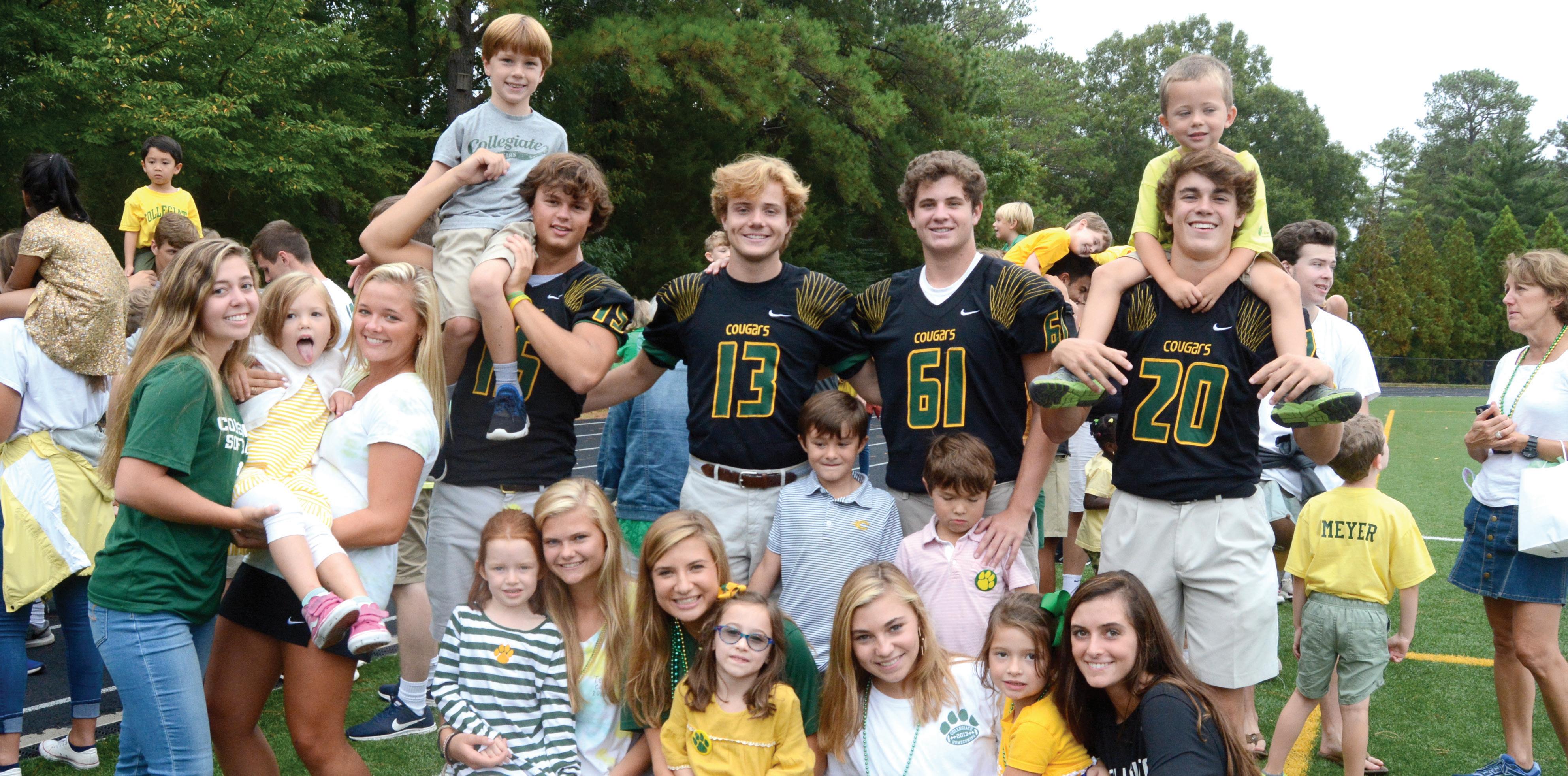
A MOMENT TO REFLECT
By Virginia Angle ’20
In early March of 2020, as rumors of a global pandemic swirled through the student commons, my friends and I joked about finishing the school year from home. Facetiously, we speculated about spending the next two months lounging on couches, attending classes in pajamas, and sunbathing between periods. If only we’d known how quickly our musings would become our reality, or that we had already experienced our last normal day at a place we had called home for 13 years. As I floated out of Collegiate’s hallways, thinking only of my Senior spring break plans, I was blissfully unaware that the traditions we had looked forward to — the spring play, our Senior prom, the near entirety of the spring sports season, our Commencement ceremony, and so many more — would never come to be.
Collegiate wasn’t just the school I attended for 13 years, it was the village that raised me. Throughout my time as a Cougar, I forged lasting relationships with classmates and teammates, teachers and coaches — people who showed up each day not just to make me a better student or athlete, but with
the intention of making me a kinder friend, a more thoughtful leader, and an engaged citizen. I always felt that every member of the Collegiate community was deeply invested in ensuring that, when I walked out of the doors for the last time, I’d leave prepared for the challenges ahead and fully equipped to make a real difference in the world.
Although we walked out of those doors earlier than planned, I know that in the five years since, my class has carried the lessons learned, friendships forged, and values formed at Collegiate forward with us into our new lives. Since we left, I’ve run into classmates in the most unexpected places, shared train rides with old teammates to cities we now call home and celebrated each other’s milestones.
To now receive the Distinguished Alumni Award as a class is more than just an honor; it is a testament to how far we have come since our virtual graduation five years ago. Although we finished our time at Collegiate as individuals on a Zoom screen, the award is a reminder that we are always stronger together. The award is not about what we missed; it’s a celebration of how we’ve
continued to lead in our communities, to grow in new spaces, and to support one another with the foundation that we built together.
Today, a little over five years after we would have been singing “Hail Collegiate” on a sunny May morning, I am responding to texts from fellow Cougars about our plans to travel back to North Mooreland for our five year reunion in the fall. We may not have had the sendoff that we wanted or expected, but we will soon return with more perspective and stories than our 2020 selves could’ve ever imagined.
Editor’s note: This September, during the Roaring Reunion, the entire student body from the Class of 2020 will be honored with the Distinguished Alumni Award. A class whose time at Collegiate was cut short, they demonstrated a compassionate resilience. In anticipation of the award ceremony, we asked one Class of 2020 graduate, Virginia Angle ’20, to reflect on her time at Collegiate, the personal effect of the pandemic, and what it means to receive the Distinguished Alumni Award.
BRIGHT LIGHTS, BIG CITY
There’s New York, and then there’s everywhere else. No matter where Collegiate alumni end up in the world, they have a knack for finding each other as easily as if they were still on North Mooreland Road. Early this spring, in April, 60 alumni came together during a regional New York reunion held at the New York Athletic Club. No matter where you go in this green-and-gold world, Cougars are there for you.
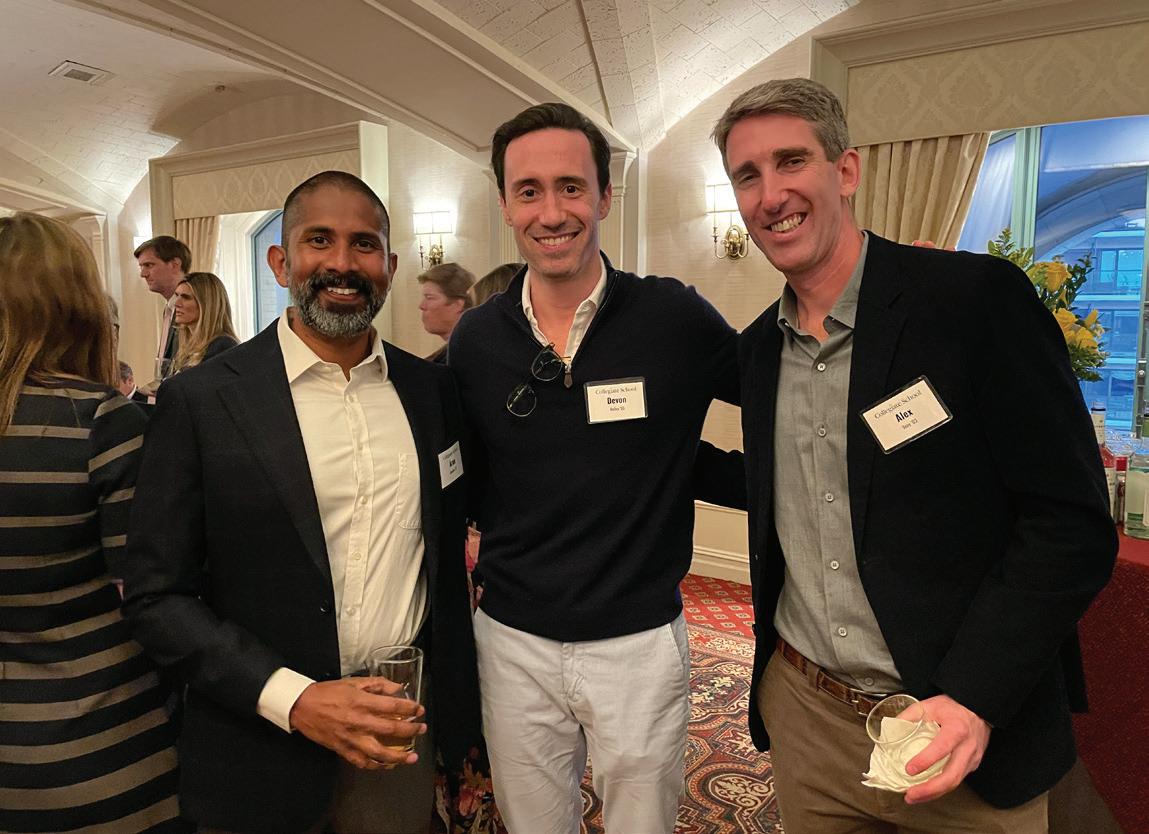
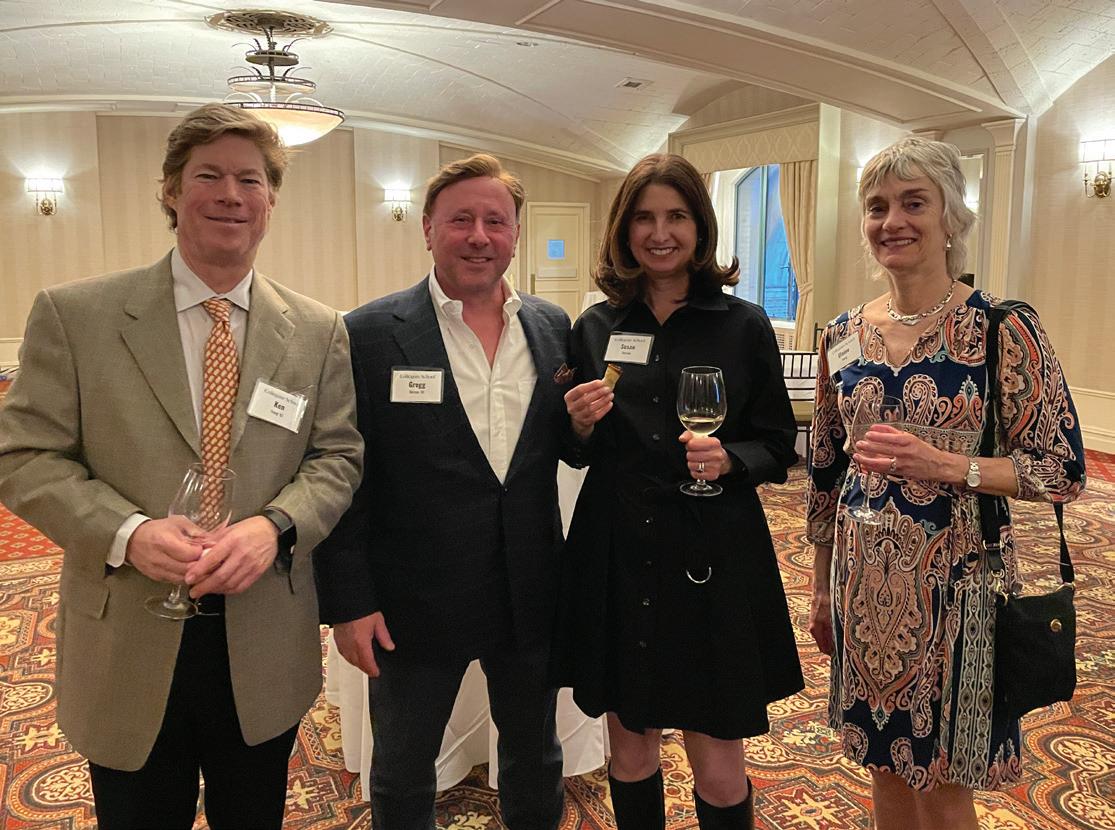
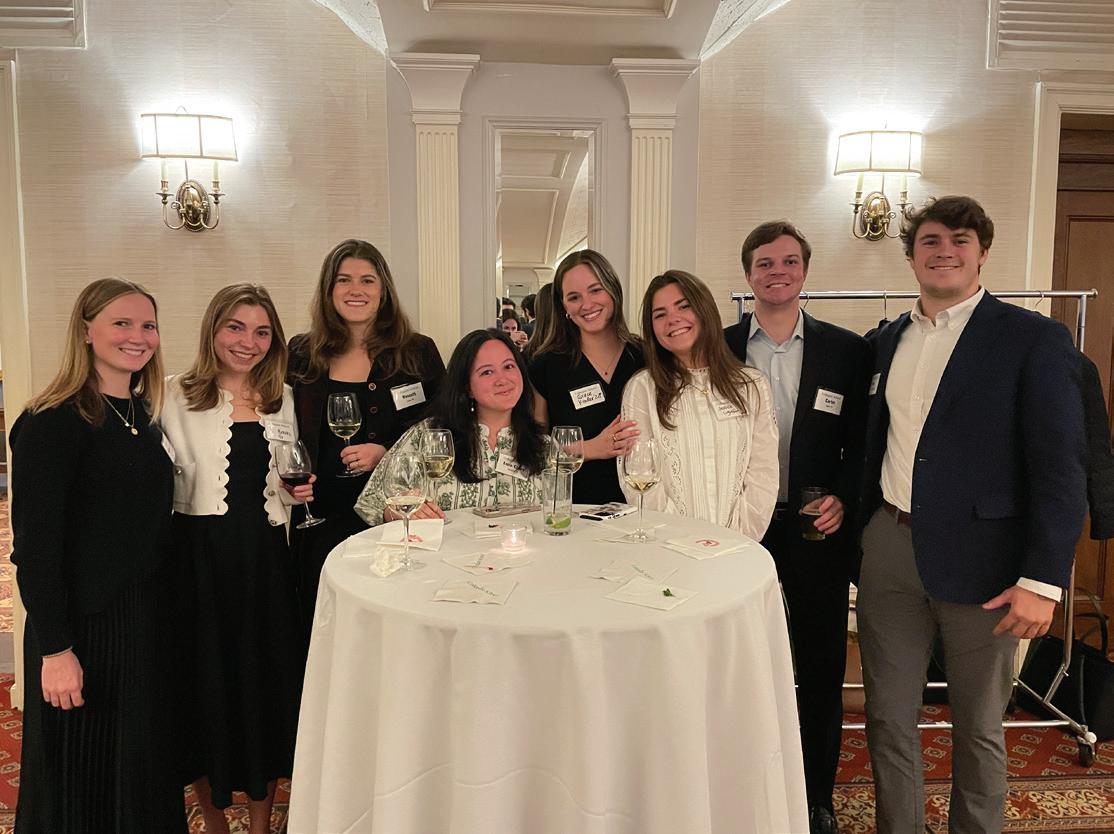
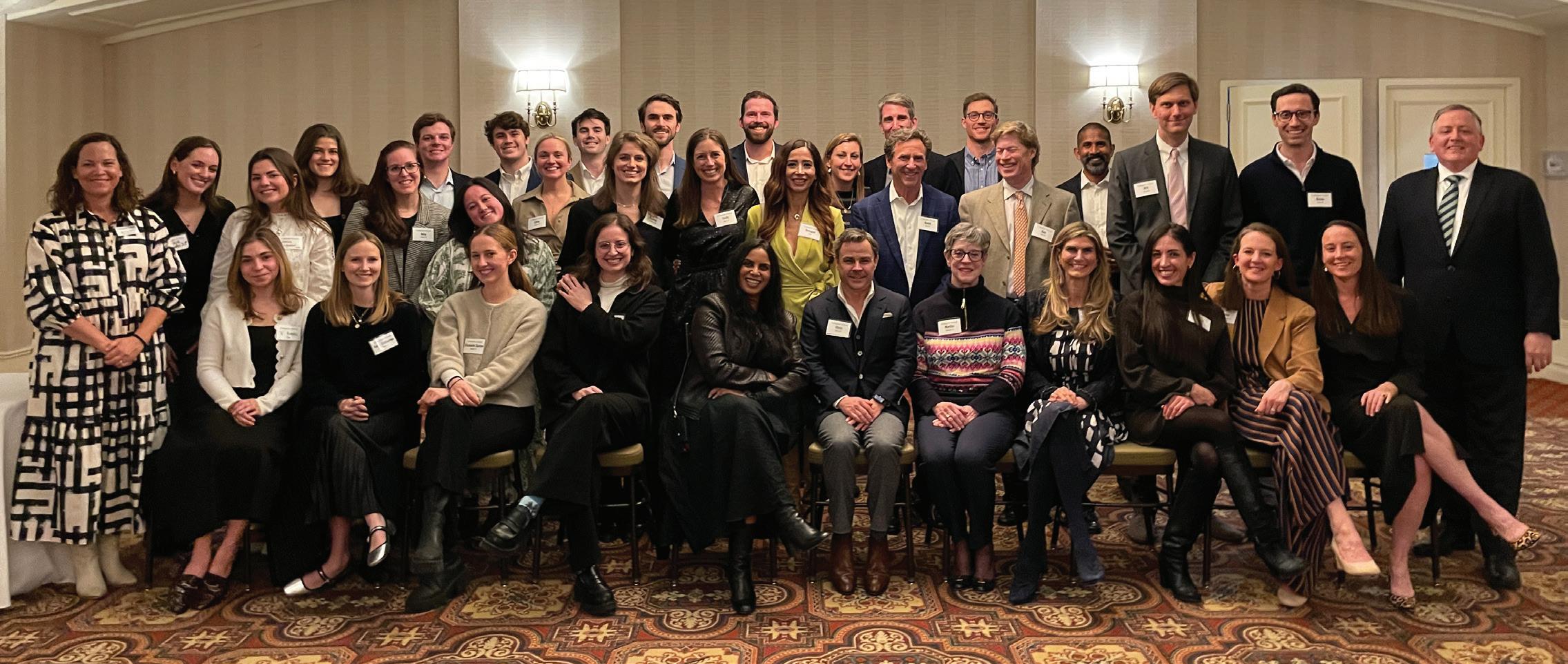
CLASS NOTES
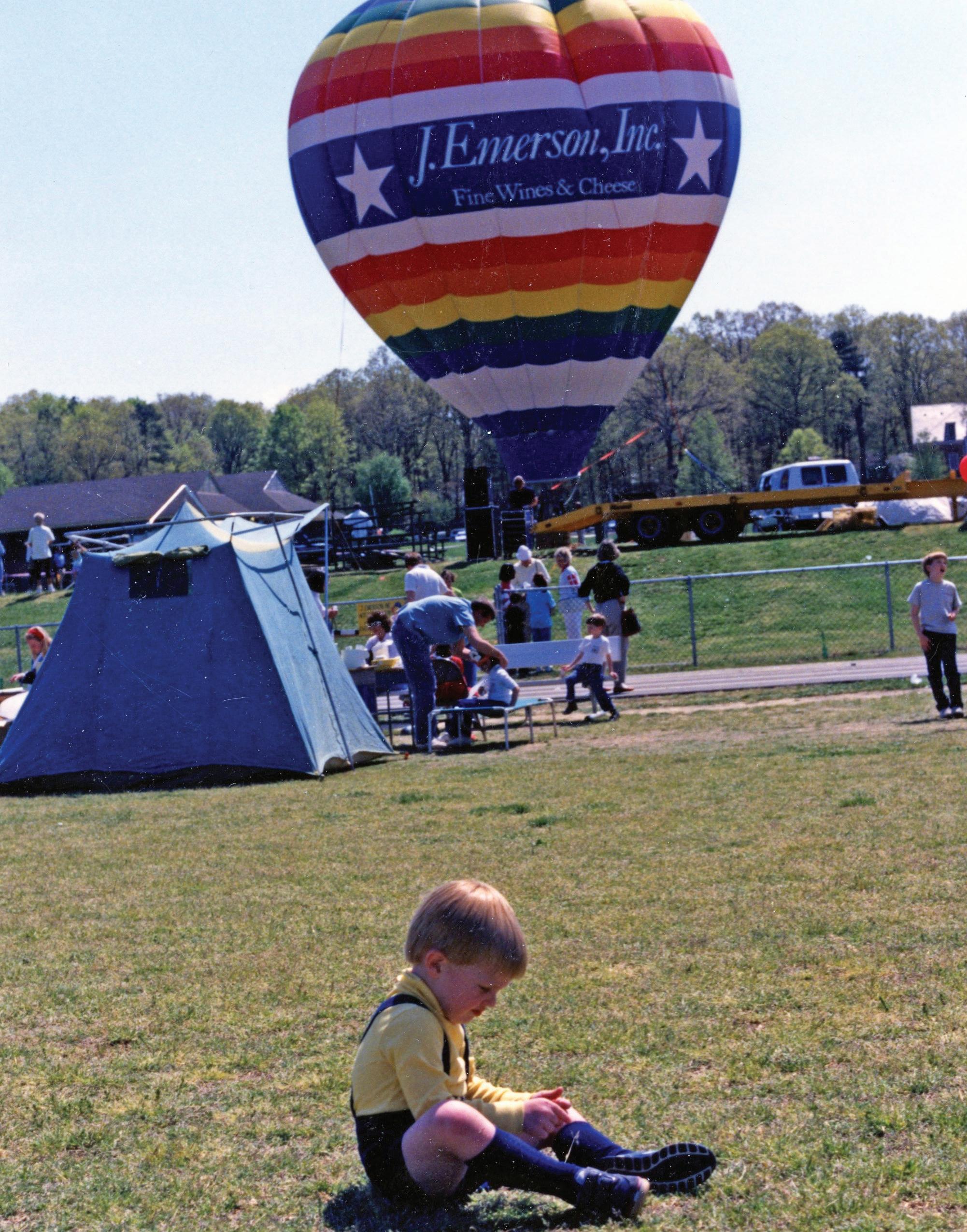
No matter where our life takes us beyond North Mooreland Road, we are always uniquely connected by our time spent at Collegiate School. Class Notes offers a window into that shared bond between fellow alumni. Whether you knew them then, follow them now, or never met, you are all Cougars.
1948
Mary Lois Miller Carroll died Jan. 6, 2025.
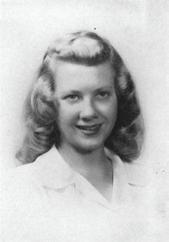
1949
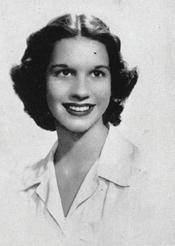
1950
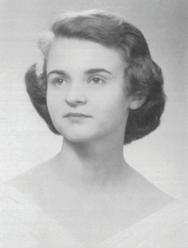
Virginia Archer Page Chichester died March 21, 2025.
Elizabeth Shewmake Johannessen, mother of Elizabeth Woodroof Cogar ’77 and William “Woody” Woodroof ’84; grandmother to James Cogar ’07 and Liza Cogar ’09, died March 18, 2025.
1951
Eva Eissmann Smith died Dec. 1, 2024.
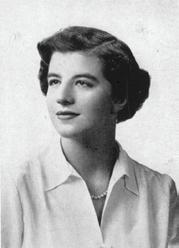
1956
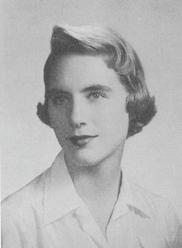
Elizabeth Hotchkiss Cary, mother of Taylor Cary Kell ’87; grandmother of Meg Kell ’16 and Haley Kell ’18; sister to Deane Hotchkiss Mountcastle ’59, died April 13, 2025.
1967
Martha Clark Goss, an independent director at American Water and other companies and nonprofits, was honored with the Lifetime
Achievement in Governance Award. Serving on 25 different corporate boards over the last 30 years, she said that today’s corporate landscape is faster, riskier, and more complicated. “Technological change, market volatility, regulatory shifts, and political polarization demand directors who are independent, objective, and strategic,” she said. “They bring an outside perspective that is essential, especially during downturns and crises. We are talking about not just safeguarding shareholder value, but the long-term sustainability of business itself. Good governance is good business.”
1974
Scott Pettit reports that he is trying (slowly) to launch his second novel, TAHOE, a fictional story set in Wintergreen and Lake Tahoe. The book is available on Amazon, and he is open to workshopping ideas on how to market both this book and his first novel, DOUBLE TAKE He loves doing book clubs and sharing his experiences in writing his stories. If anyone has any questions, his email is pettitsc@gmail.com.
1977
Tom Kastenbaum shares that he visited Sweden with his son Karl Kastenbaum ’23. They traveled to Kalmar and Stockholm.
1978
Lynne Berkness received the 2025 Nina Abady award from VAFRE. She serves as the Chief Advancement Officer at Liberation Veteran Services. She has been working in nonprofit fundraising for nearly 30 years. Lynne’s previous fundraising roles include VP Philanthropy at
Boys & Girls Clubs, Founding Director of Advancement at Cristo Rey Richmond High School, Director of Development at Northstar Academy, and Director of Planned Giving and Stewardship at Collegiate School. Lynne is a past president of Virginia Association of Fundraising Executives and served on the board for seven years. Before her work in nonprofit fundraising, Lynne supported air quality efforts as an Environmental Specialist at Dominion Power. Lynne serves on the Board of the UVA Club of Richmond and is also a member of the Academic Excellence Committee at Cristo Rey.
1984
Randy Reynolds was nominated to the VCU Board of Visitors for 2024-2028.
1986
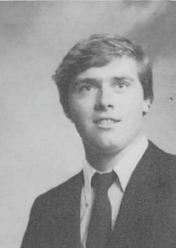
Charles Kennon Harrison Sr., father of Charles Kennon Harrison Jr. ’09; grandfather of Charlie Kennon Harrison ’36; son of Constance Kennon Harriss ’59; brother of Arthur Harrison ’86 and John Russell Williams ’80, died May 1, 2025.
1993
John Brown retired after nearly 20 years of teaching to focus on helping students succeed on standardized tests. He shares that he is loving the transition.
1996
Aurora Shannon Fulks was born Nov. 4, 2024, in Hanover, New Hampshire, to Abby and Wilson Fulks
1998
Laura McCandlish traveled with her family to Utah for her husband’s peacebuilding conference at BYU. She shares that there has been a terrific Collegiate connection between her son Theo and Margaret Williams Bode’s son. Laura has also reconnected with Tina (Lewis) Millner, whose grandson Ryan Lewis ’25 is heading to Davidson College.
2001
Allison Ramsey Soneru visited Richmond in April 2025 with her family to see her siblings and parents, including David Ramsey ’00, Kristen Ramsey Cardenas, and Robert Ramsey ’69. During her trip to Richmond, she also reconnected with Carol Hume Bokinsky and Eric Bokinsky. Allison now lives in Boston, working as a glaucoma surgeon at Mass Eye and Ear and teaches at Harvard Medical School.
Michael Thalhimer and Lizzie Messick are busy organizing the fifth annual Dunk-for-a-Cure, scheduled for Aug. 23, at Hardywood West Creek, in memory of Geoff Shudtz. Their FCSP Foundation has raised $750k and aims to surpass $1 million in 2025.
2004
Jessica (Lane) Metzler welcomed daughter Sophia Hope Metzler on July 27, 2024, with her husband Ryan.
2009
Betsy Mastropieri got engaged to Chris Barwick on New Year’s Eve 2024 in Los Olivos, California. Her sister Katie Mastropieri ’10 threw them a surprise engagement party.
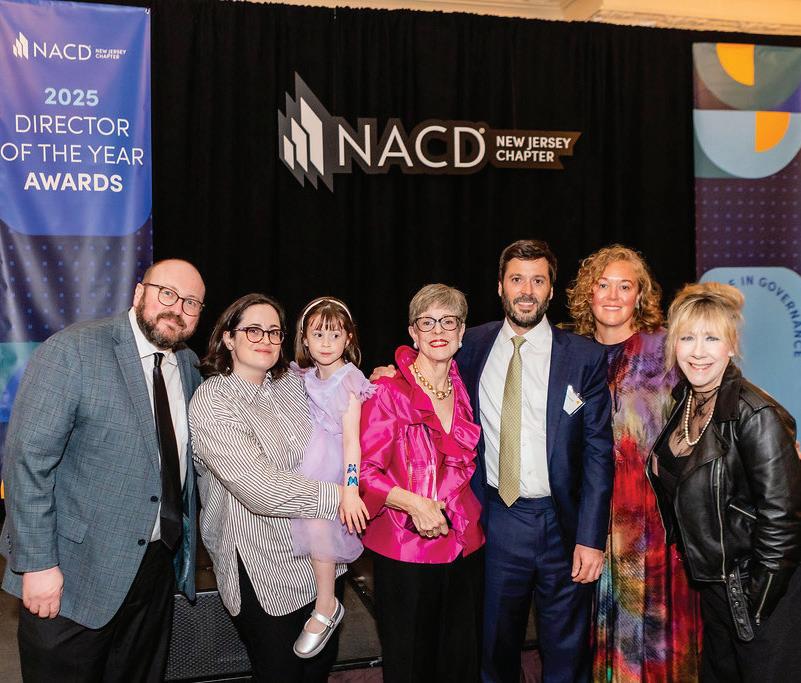
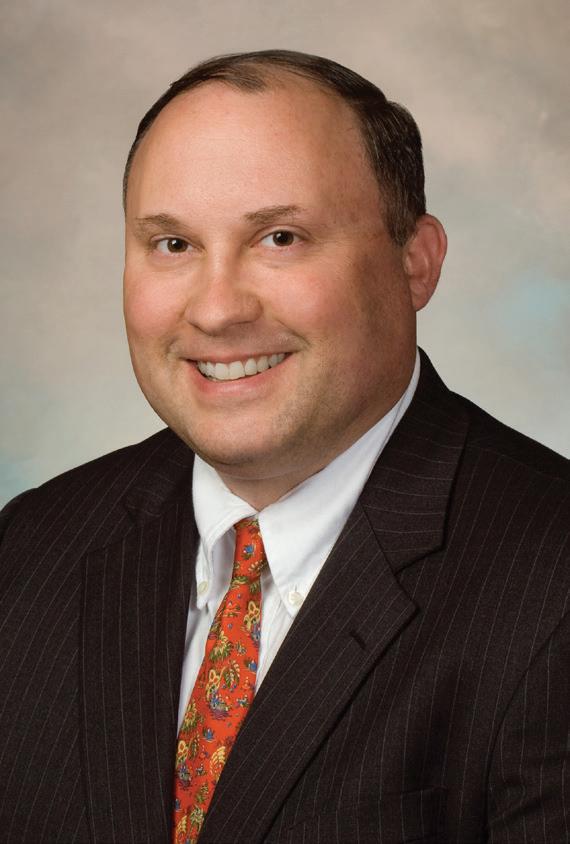
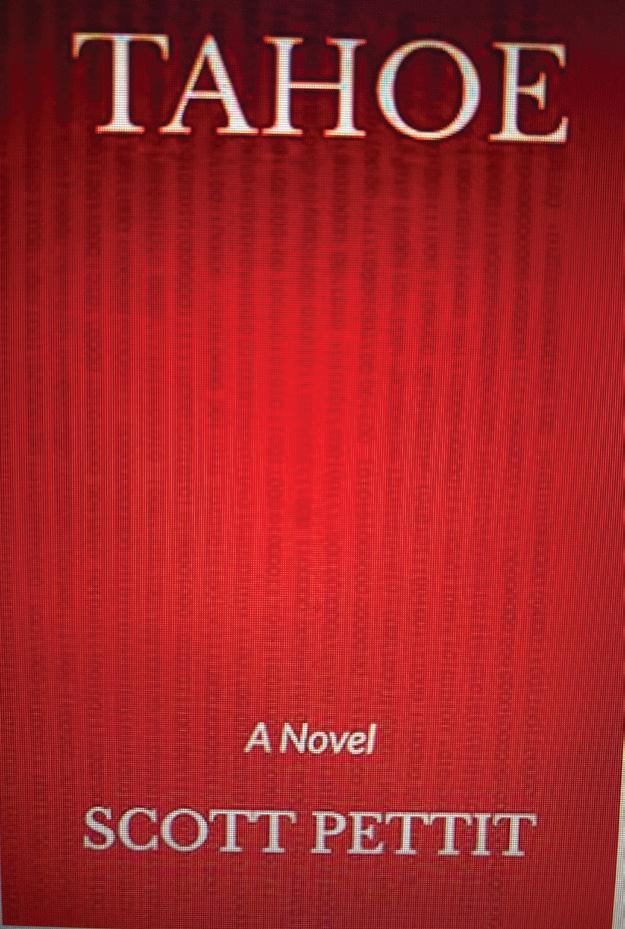
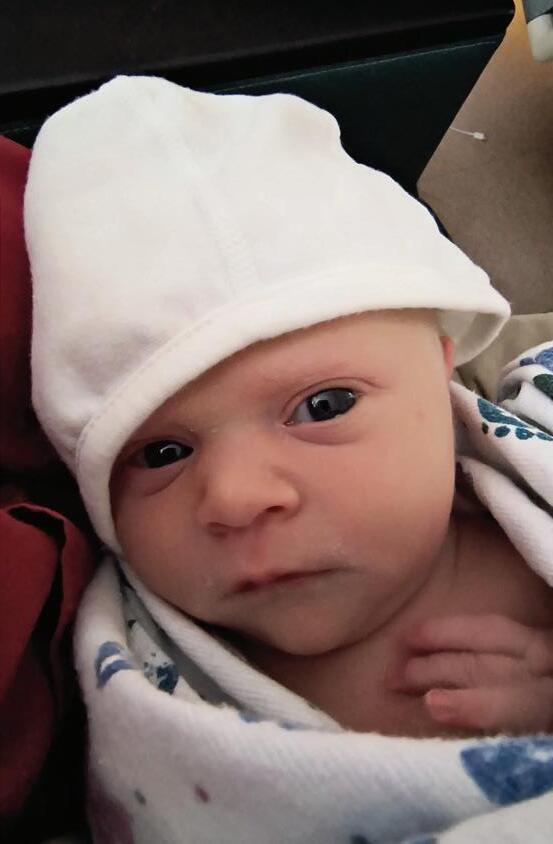
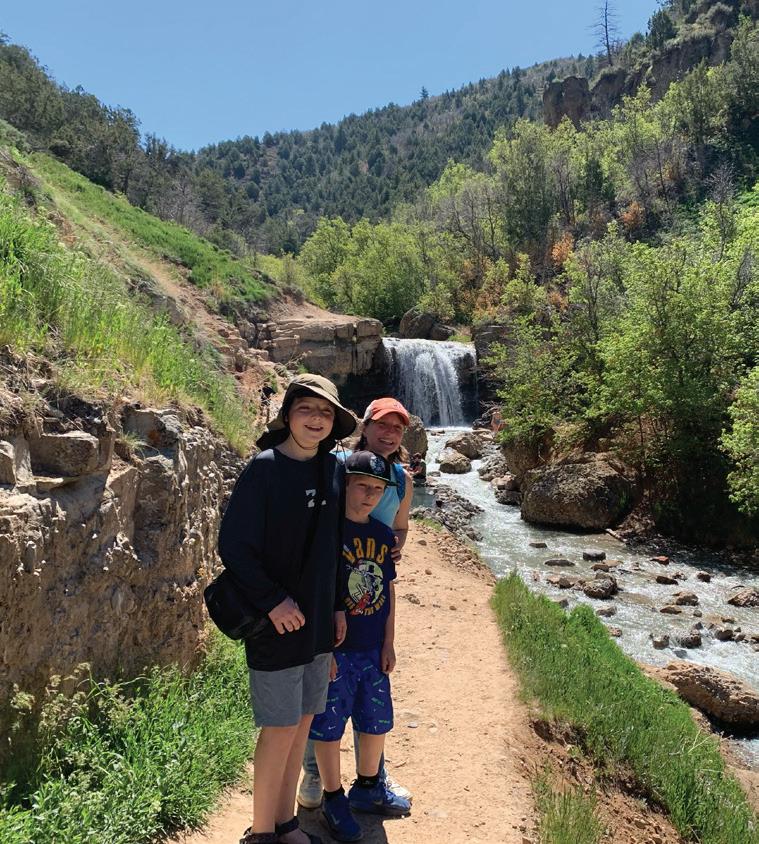
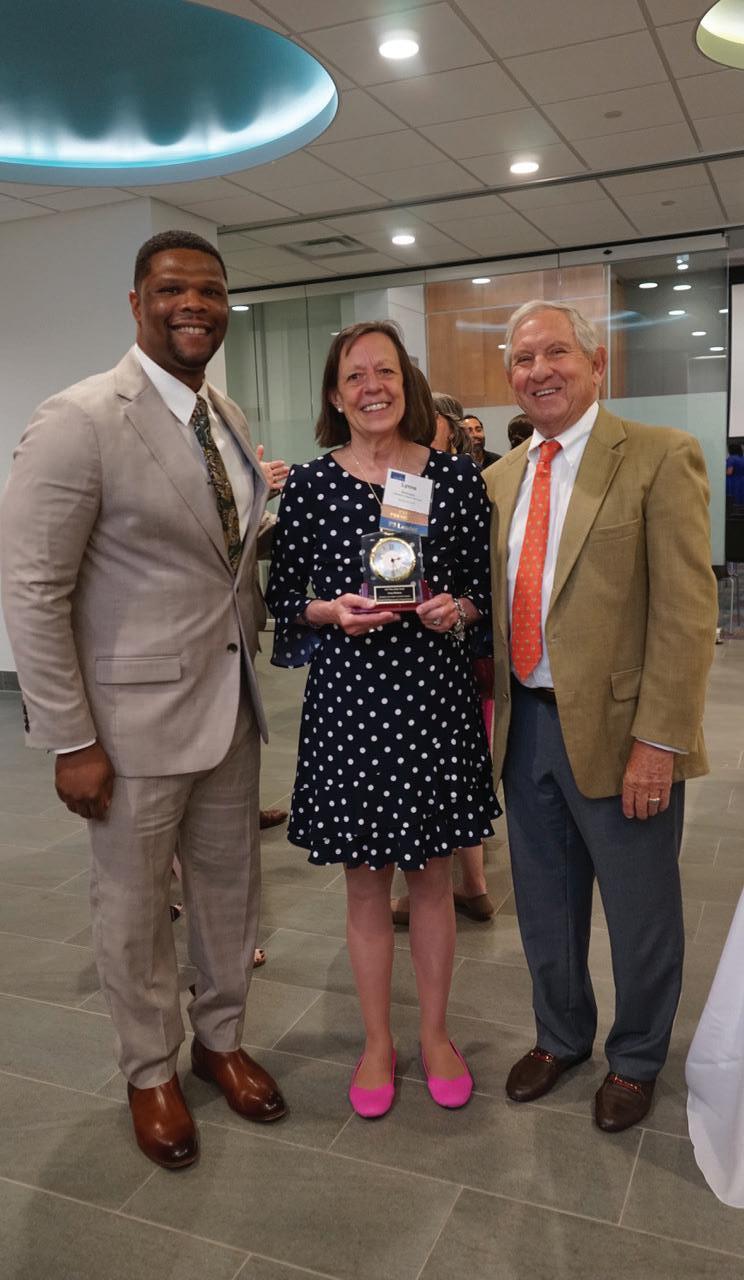
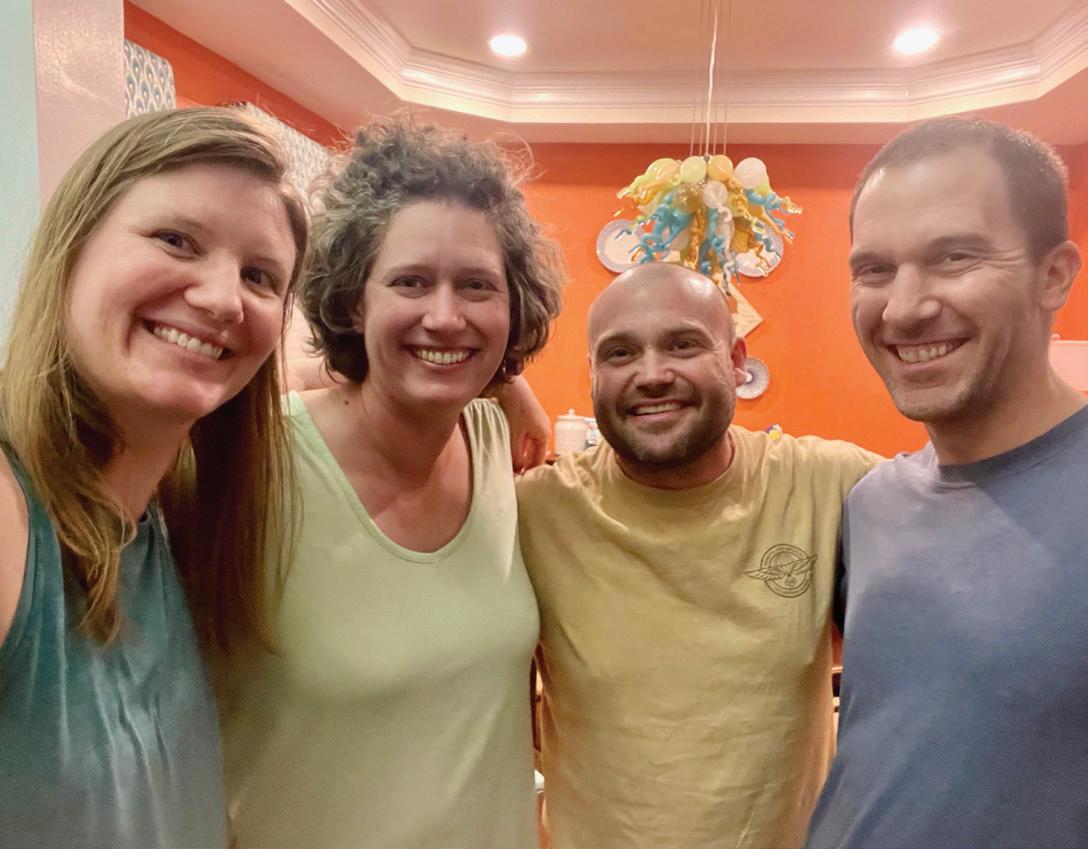
1. Martha Clark Goss ’67, an independent director at American Water and other companies and nonprofits, was honored with the Lifetime Achievement in Governance Award.
2. Scott Pettit ’74 reports that he is trying (slowly) to launch his second novel, TAHOE, a fictional story set in Wintergreen and Lake Tahoe. The book is available on Amazon.
3. Lynne Berkness ’78, pictured with Alex Smith ’65 and Jay Patrick, received the 2025 Nina Abady award from VAFRE.
4. Randy Reynolds ’84 was nominated to the VCU Board of Visitors for 2024-2028.
5. Aurora Shannon Fulks was born Nov. 4, 2024, in Hanover, New Hampshire, to Abby and Wilson Fulks ’96.
6. Laura McCandlish ’98 traveled with her family to Utah for her husband’s peacebuilding conference at BYU.
7. Allison Ramsey Soneru ’01 visited Richmond in April 2025 with her family to see her siblings and parents, including David Ramsey ’00, Kristen Ramsey Cardenas ’01, and Robert Ramsey ’69. During her trip to Richmond, she also reconnected with Carol Hume Bokinsky ’01 and Eric Bokinsky ’01.
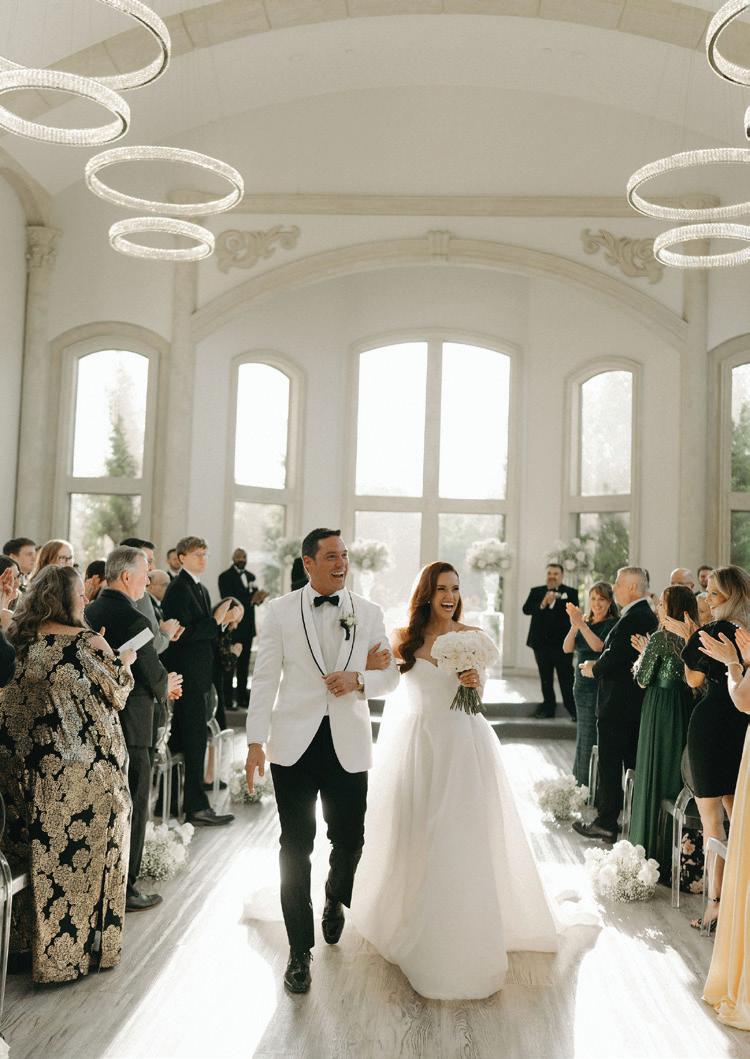
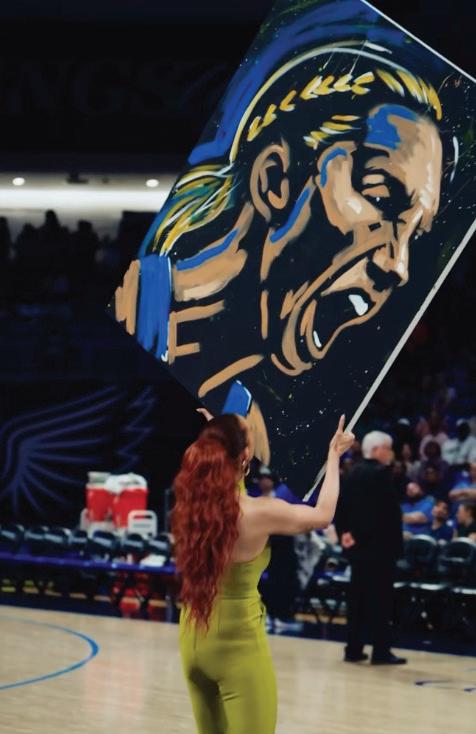
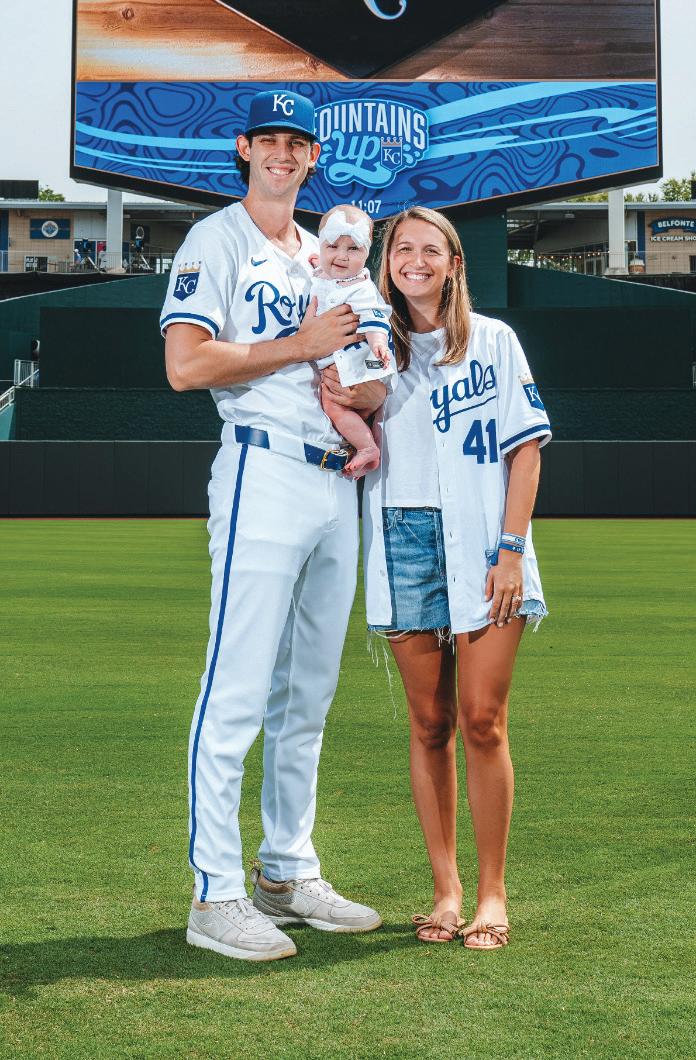
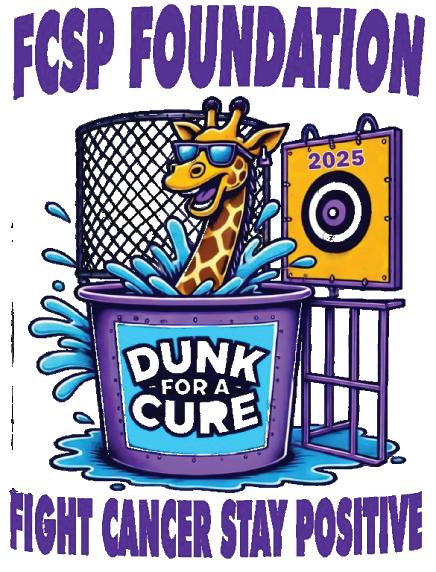
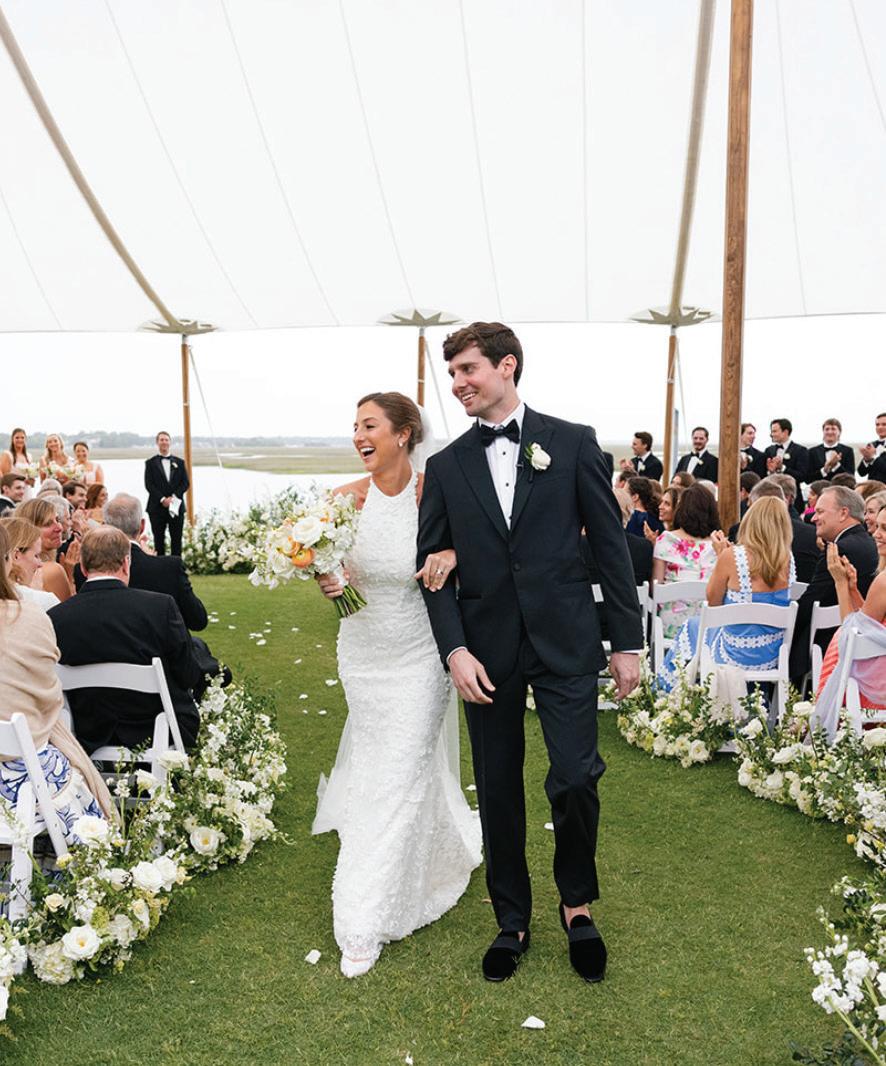
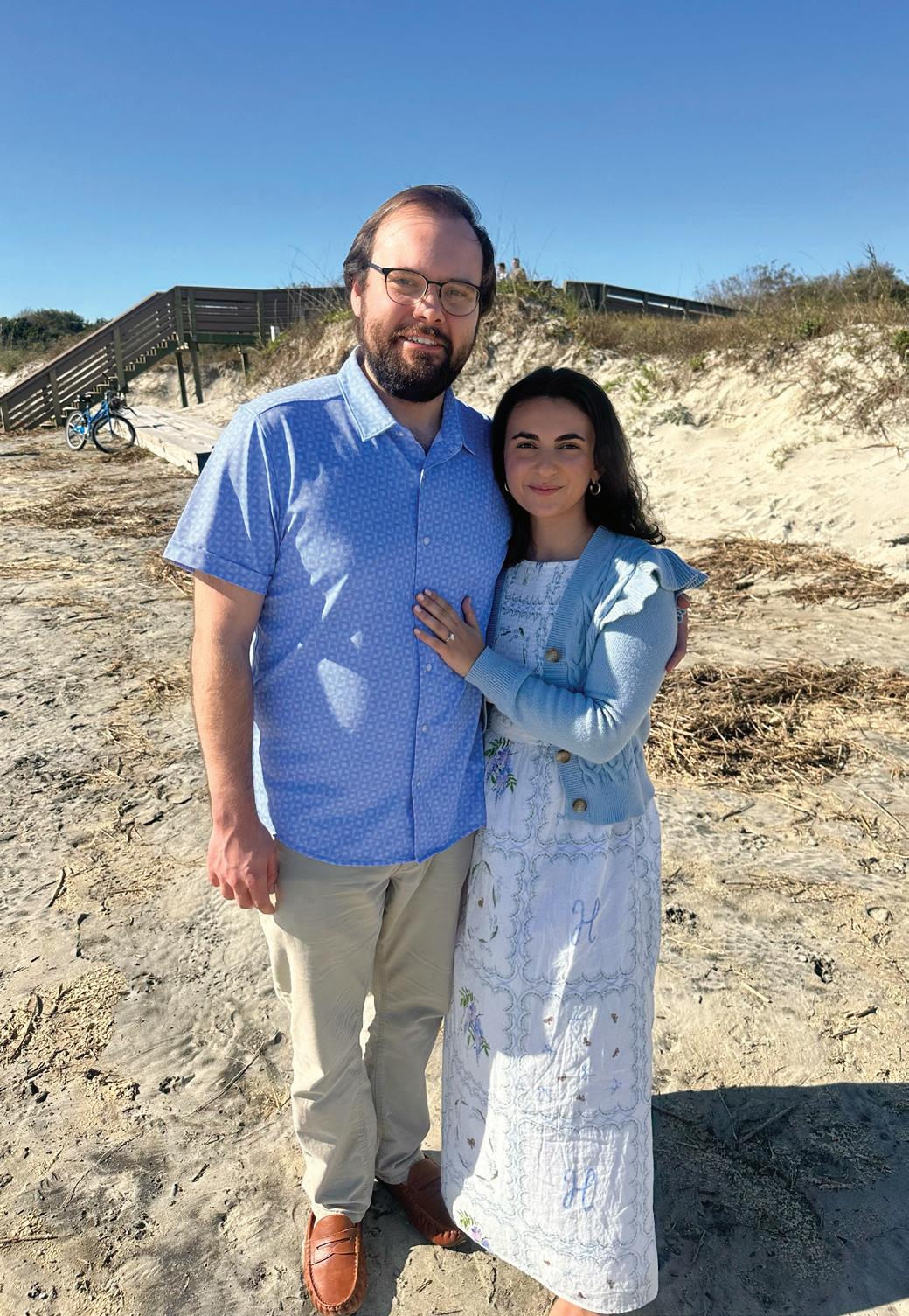
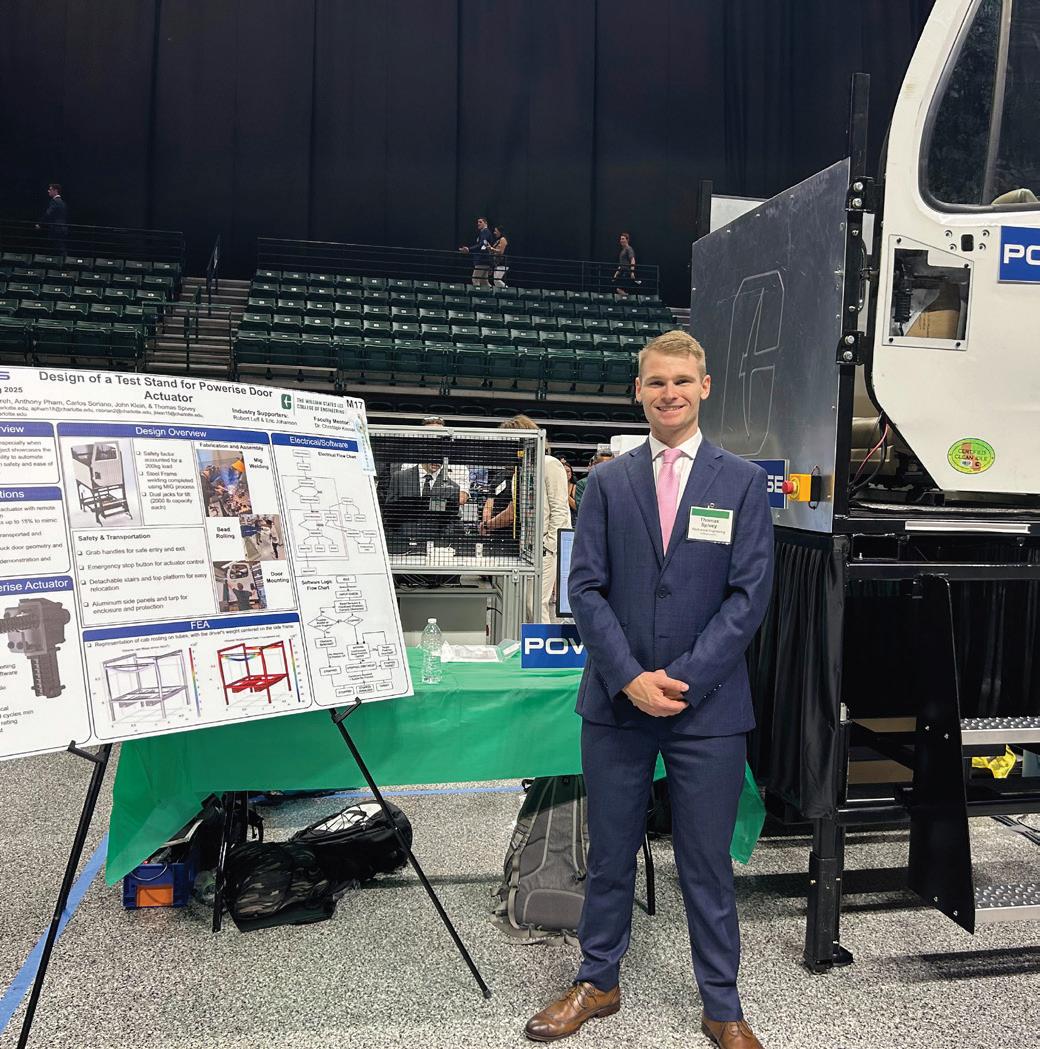
1-2. Annika Wooton ’12 married Jesse Bourque on April 13, 2025, in Little Elm, Texas. You can’t tell from the wedding photo, but she’s also been busy working as a live speed painter. Recently, she performed at the Dallas Wings WNBA opener.
3. Michael Thalhimer ’01 and Lizzie Messick ’01 are busy organizing the fifth annual Dunk-for-a-Cure, scheduled for Aug. 23, at Hardywood West Creek, in memory of Geoff Shudtz.
4 Millie DuBose Lynch ’16, daughter of Emily Hilbert DuBose ’89, welcomed her baby girl, Lainey Saunders Lynch, on Jan. 16, 2025.
5. Jack Cooke ’15 married high school sweetheart Evie Taylor ’16 on May 10, 2025, at Figure Eight Island Yacht Club. Many Cougar alumnus joined in the celebration.
6. Margaux Gaeser ’19 is engaged to be married October 2025.
7. Thomas Spivey ’20 graduated from UNC Charlotte with a degree in mechanical engineering, with a concentration in motorsports. He now works at Ballenger Motorsports/Flagtronics designing products and working trackside with race safety systems.
2012
Annika Wooton married Jesse Bourque on April 13, 2025, in Little Elm, Texas. Annika has been busy working as a live speed painter. Recently, she performed at the Dallas Wings WNBA opener. Her performance hit 1.3M views on Instagram in 24 hours. More performances are scheduled this season.
2014
Erin Cross writes, “The Glass Ceiling studio, which I have co-founded, received a $20,000 CultureWorks grant for studio improvements and accessibility.” She’s collaborating with Brody Schneider ’13, Liza Dent ’13, and Maddy Crews ’13 and mentoring VCU student interns.
2015
Jack Cooke married high school sweetheart Evie Taylor ’16 on May 10, 2025, at Figure Eight Island Yacht Club. Many Cougar alumnus joined in the celebration.
2016
Millie DuBose Lynch, daughter of Emily Hilbert DuBose ’89, welcomed her baby girl, Lainey Saunders Lynch, on Jan. 16, 2025.
2019
Margaux Gaeser is engaged to be married October 2025.
2020
Thomas Spivey graduated from UNC Charlotte with a degree in mechanical engineering, with a concentration in motorsports. He now works at Ballenger Motorsports/ Flagtronics designing products and working trackside with race safety systems.
IN MEMORIAM
Mary Martha Mason, mother of Mary Gordon Seay ’00, died Nov. 7, 2024.
Wayne Breedlove, father of Ymani Breedlove ’15 and grandfather to Maliyah Lenardson ’35, died Jan. 8, 2025.
William McLarin, father of Suzanne Duncan ’65, Jean McLarin ’77, and John McLarin ’79; grandfather of Blair McLarin ’15, died Jan. 12, 2025.
Arnold Frederick, father of Carol Frederick Gentry ’79 and Rick Frederick ’81, Feb. 9, 2025.
Betty Myers, grandmother of Bryan Barley ’03 and Eric Barley ’07, Deb. 11, 2025.
Lois Woodhouse, grandmother of Sadie Woodhouse ’20 and Matthew Woodhouse ’23, died Feb, 13, 2025.
Margaret Daniel, mother of Anne Margaret Daniel ’81; former science teacher from 1968 and retired in 1992, died Feb. 18, 2025.
Betty Featherston, mother to Trip Featherston ’87 and Spencer Featherston Kirkmyer ’82; grandmother to Ginnie Featherston ’21 and Ellie Featherston ’25; sister-in-law of Sharon Welton Parker ’62; mother-in-law to Lower School librarian Kate Featherston, died Feb. 18, 2025.
Robert Hines, husband of Anne Thomas Hines ’64, died Feb. 19, 2025.
Mary Moore, grandmother of Jim Berents ’12, Kendall Berents ’12, and Meredith Berents Gaza ’12, died Feb. 20, 2025.
Mary Alice Hammond, grandmother of Nate Holdych ’19, Cam Holdych ’22, Ryan Holdych ’24, and Luke Holdych ’27, Feb. 23, 2025.
Robert Garnett Hall, brother of Nancy Page
Our condolences are offered to these members of the Collegiate family.
Hall Edmunds ’52, died Feb. 26, 2025.
Sonia McDonald, wife of Trustee Mac McDonald; mother of Malcolm McDonald ’87 and Gregory McDonald ’88; grandmother of Alexander McDonald ’17 and Edan McDonald ’20, died Feb. 26, 2025.
David Redmond, father of Scott Redmond and former Assistant Upper School Head Sarah Redmond; grandfather of Anastasia Redmond ’21, Robbie Redmond ’26, and Eugenia Redmond ’35, died Feb. 26, 2025.
Cornelia Gates, mother of College Counseling employee Jenn Earle, died March 2, 2025.
Guy Tripp, father of Middle School history teacher Laura Philips, died March 3, 2025.
Lottie Mae Campbell, mother of physical plant employee Carroll Campbell, died March 5, 2025.
Sally Timmerman, grandmother of Wilton Speight ’13, Griffin Speight ’15, Jess Speight ’17, and Quin Timmerman ’20, died March 5, 2025.
Millard Younts, father of Emily Younts Golliday ’11, died March 9, 2025.
Jane Cunningham, grandmother of Hope Morgan ’12 and Anna Morgan ’15, died March 12, 2025.
Corrina Waxman, wife of Information Technology Manager Andrew Petrus, died March 13, 2025.
Anne Hedley Davey, daughter of Anne Thomas Hines ’64, March 14, 2025.
Francena Alvarez, grandmother of Cece Cullen ’35 and Tighe Cullen ’37, died March 15, 2025.
Mary Lee Odell, grandmother of Connor Odell ’12, died March 15, 2025.
Mike Thompson, former faculty/staff and father of Jackie Thompson Koenig ’03, William “Mikey” Thompson IV ’06 and John Thompson ’11; brother of Elizabeth Thompson Childrey ’68, died March 17, 2025.
Richard Dodd, father of Whitney Dodd Godwin ’74 and Sally Dodd Pellarin ’78, died March 19, 2025.
Clyde Middleton, grandfather of Luci Davis ’28, died March 21, 2025.
Barbara Rennie, mother of Hope Rennie ’86, died March 23, 2025.
William Stuart, father of Elizabeth Stuart Chapman ’75 and Sally Stuart Ingram ’81, died March 23, 2025.
Martha Foster, grandmother to Jackie Foster Mullen ’07, Andrew Foster ’10, Megan Foster McKenzie ’15 and David Foster and Ashley Foster, died March 25, 2025.
Nancy Gordon, great-grandmother of Whitfield Mudrick ’34 and Waverly Mudrick ’36, died March 27, 2025.
Rosemary Parks, grandmother of Virginia Parks Hosbein ’11 and Austin Parks ’14, died March 27, 2025.
Sidney Richmon, grandfather of Jake Palyo ’11 and Jessica Hall, died March 27, 2025.
Paul Woo, father of Slade Woo ’19, died March 28, 2025.
Lucy Davis, mother-in-law of Kathryn Davis ’79; grandmother of Mason Davis Wright ’06 and Christopher Davis ’11, died March 29, 2025.
Vanessa Cooper, grandmother of Porter McConaghy ’33 and Libby McConaghy ’36, died April 6, 2025.
Ann Payne, mother of Ashley Payne Eason ’83, Kimball Payne Mullins ’86 and Whitney Payne Harris ’92, died April 7, 2025.
Ernest Johnson, father of Courtney Johnson Sievers ’94, died April 8, 2025.
Joseph Morgan, father of Karen Morgan ’91, died April 20, 2025.
Courtland Lee Warfield Jr., father of Lee Warfield ’81, died April 21, 2025.
Edsel Wilkinson, father of Heath Wilkinson ’93 and step-father of Jennifer Swink Bower ’98, died April 21, 2025.
Byrd Newton, grandfather to Edward Laux ’32 and Mary Witt Laux ’34, died April 28, 2025.
George Redd, grandfather of Walker Redd ’07 and Chappell Redd, died May 6, 2025.
Marie Will, mother of Quest employee Sharon Hamner, mother-in-law of Tom Hamner ’85; grandmother Daniel Hamner ’14, Matthew Hamner ’17, and Elizabeth Hamner ’20, died May 9, 2025.
Marian Bell, grandmother of Damon Lassiter ’27, died May 12, 2025.
Sallie Cross, mother of Michael Cross ’97 and Elizabeth Cross Jakesch ’00, died May 17, 2025.
Laura Garnett Taylor Neale, greatgrandmother to Holt Hopper ’25, died May 17, 2025.
John Montague, grandfather of Jack Montague ’18 and George Montague ’21; brother to David Montague ’66, Mary
Warren Montague Pinnell ’70, and Gay Montague Jewett ’65 (deceased), died May 18, 2025.
Elizabeth K. Dalton, former Trustee from 1974-1978; mother of Susan Dalton Presson ’73, G. Vince Dalton ’75, J. Breck Dalton ’78, Mark Dalton ’79, Sarah Dalton McWhirt ’83; grandmother to Hunt Dalton ’14, Elise Dalton ’16, and Breck Dalton, died May 23, 2025.
Patricia Sage, mother of former employees Kathryn Oden and Ansley Gift; grandmother to Jimmy Gift ’04, Michael Oden ’04, Billy Oden ’06, Madison Stewart McLane ’16, Ann Hammond Gift Macpherson ’17, and Michael Stewart ’20, died May 23, 2025.
Martha Gibbs, mother of John Gibbs ’87 (deceased) and David Gibbs , died May 29, 2025.
Mary DeAlto, grandmother-in-law of 2nd Grade teacher Kenzie DeAlto; greatgrandmother of Corrie DeAlto ’37 and Griffin DeAlto ’39, died June 9, 2025.
ALUMNI
Mary Lois Miller Carroll ’48
Virginia Archer Page Chichester ’49
Elizabeth Shewmake Johannessen ’50
Eva Eissmann Smith ’51
Elizabeth Hotchkiss Cary ’56
Charles Kennon Harrison Sr. ’86
These notices were received as of June 9, 2025. This In Memoriam section is taken from printed obituaries, which may be edited for space. Please contact our office if the information is incomplete. The information included is compiled from our database, which is continually updated. To submit a condolence, email spark@collegiate-va.org.
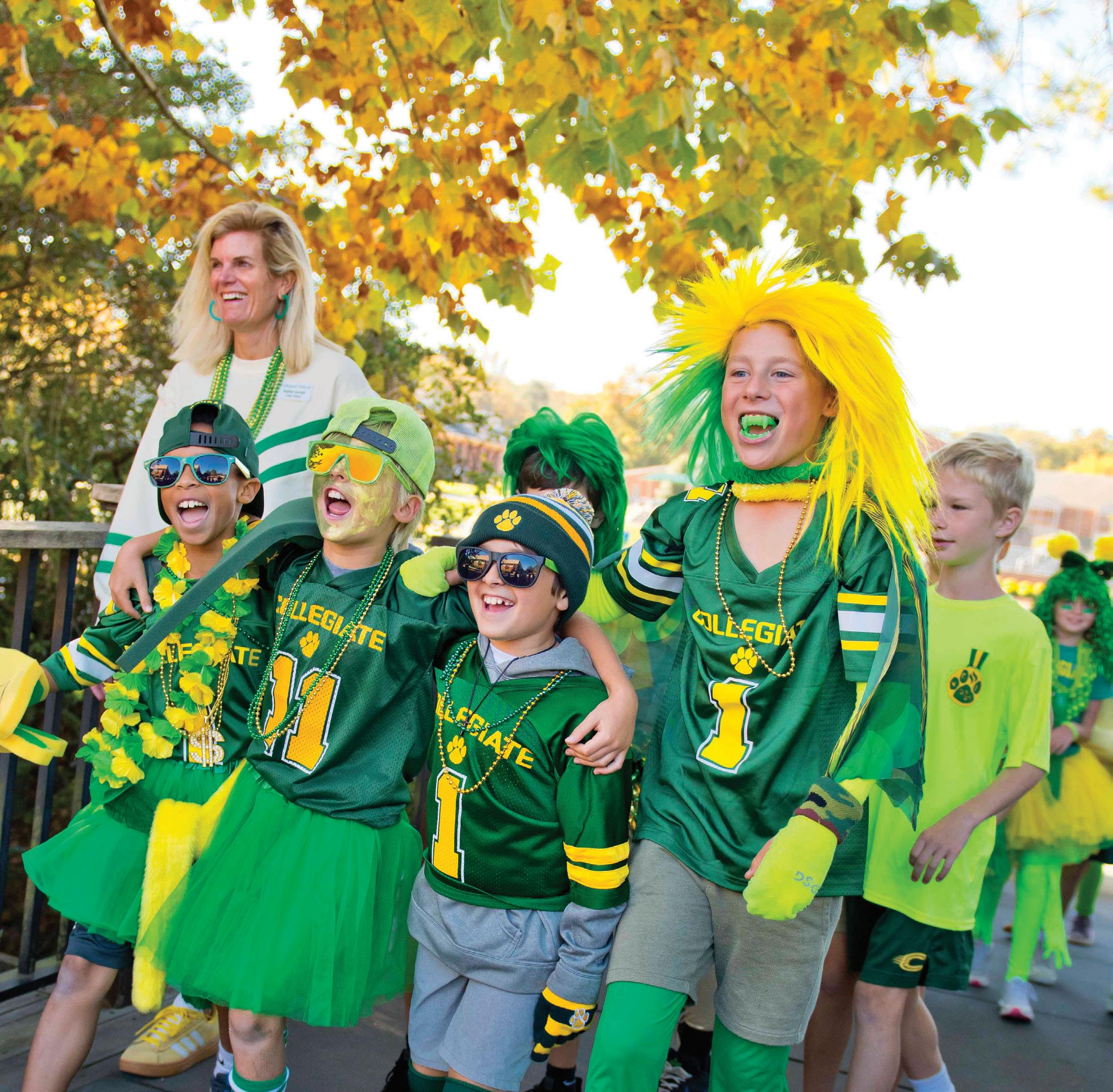
The Collegiate Fund is the top fundraising priority of the School and the most important philanthropic gift that is asked of our community. This year we are inviting you to join us in P.E.P. Week and show your support by “Pledging Early Please” to the Collegiate Fund!
SAVE DATE THE
The fun kicks off Monday, Oct. 27 and culminates at the Homecoming football game on Saturday, Nov. 1.
By showing your early support of the Collegiate Fund, you help the School be more responsive to the experiential needs of the students and faculty throughout the year. The more we raise, the more flexible the School can be to funding an education that comes to life.
Each morning, through her classroom window in Luck Hall, Lower School Spanish teacher Alice Innes ’05 sees students skipping on their way to their first class of the day. “It’s the quintessential picture of joy and the embodiment of what it means to love learning,” says Innes, who is the World Language Department Chair in the Lower School. In her own classroom, Innes reciprocates that joy. Learning a language is about connection, encouraging students to embrace the exciting challenges of discovery. If that happens, conjugating verbs will come naturally. So students play games — like Pictionary, one of Innes’s personal favorites when she was a Spanish student at Collegiate — and speaking activities that stimulate deep connection with the material. It’s an atmosphere of fun, and the ideal picture of what learning can look like when you infuse everything with joy. Innes sat down with Spark to discuss the joys of teaching at Collegiate, her own teaching style, and the benefits of teaching in a JK-12 school.
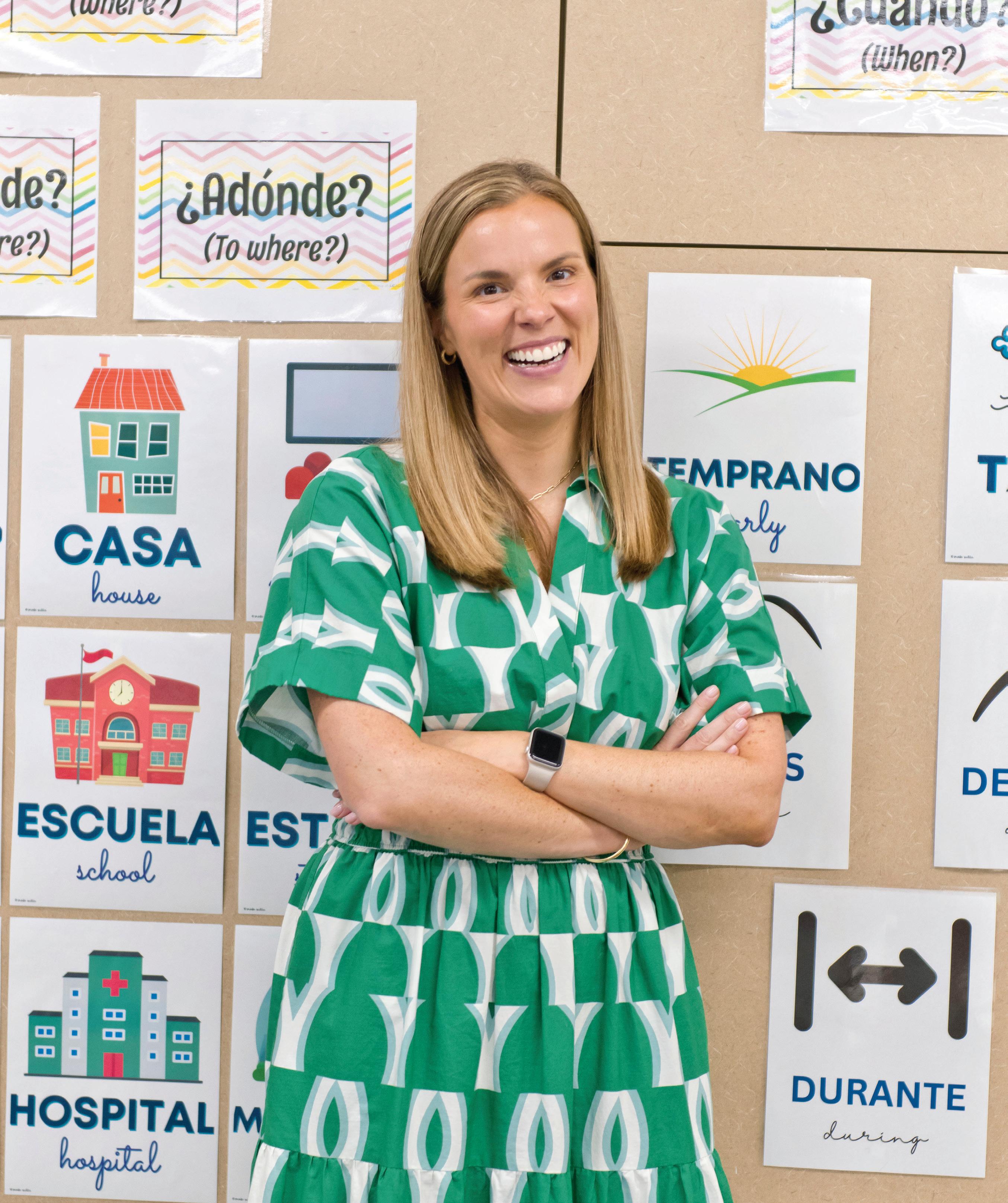
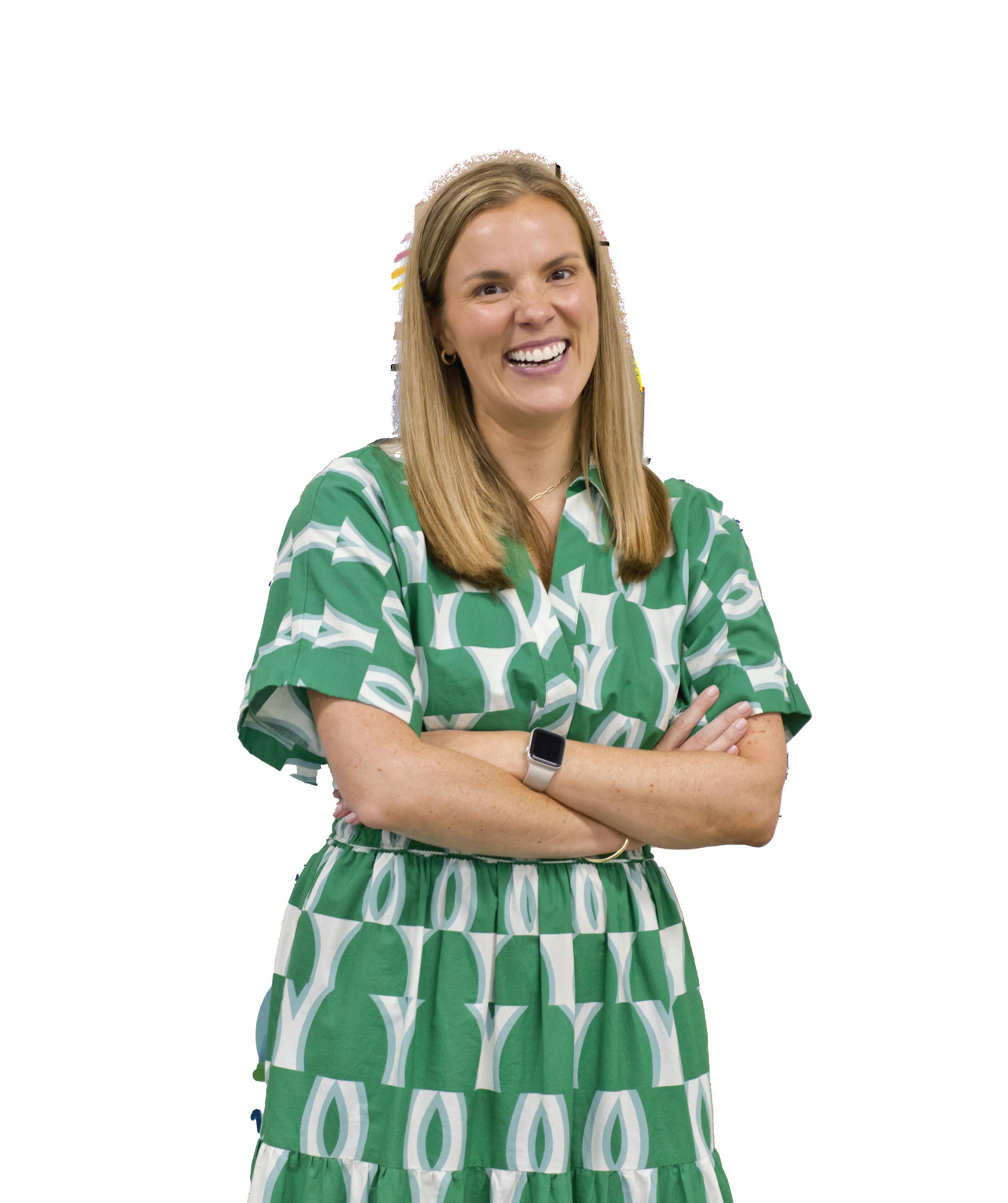
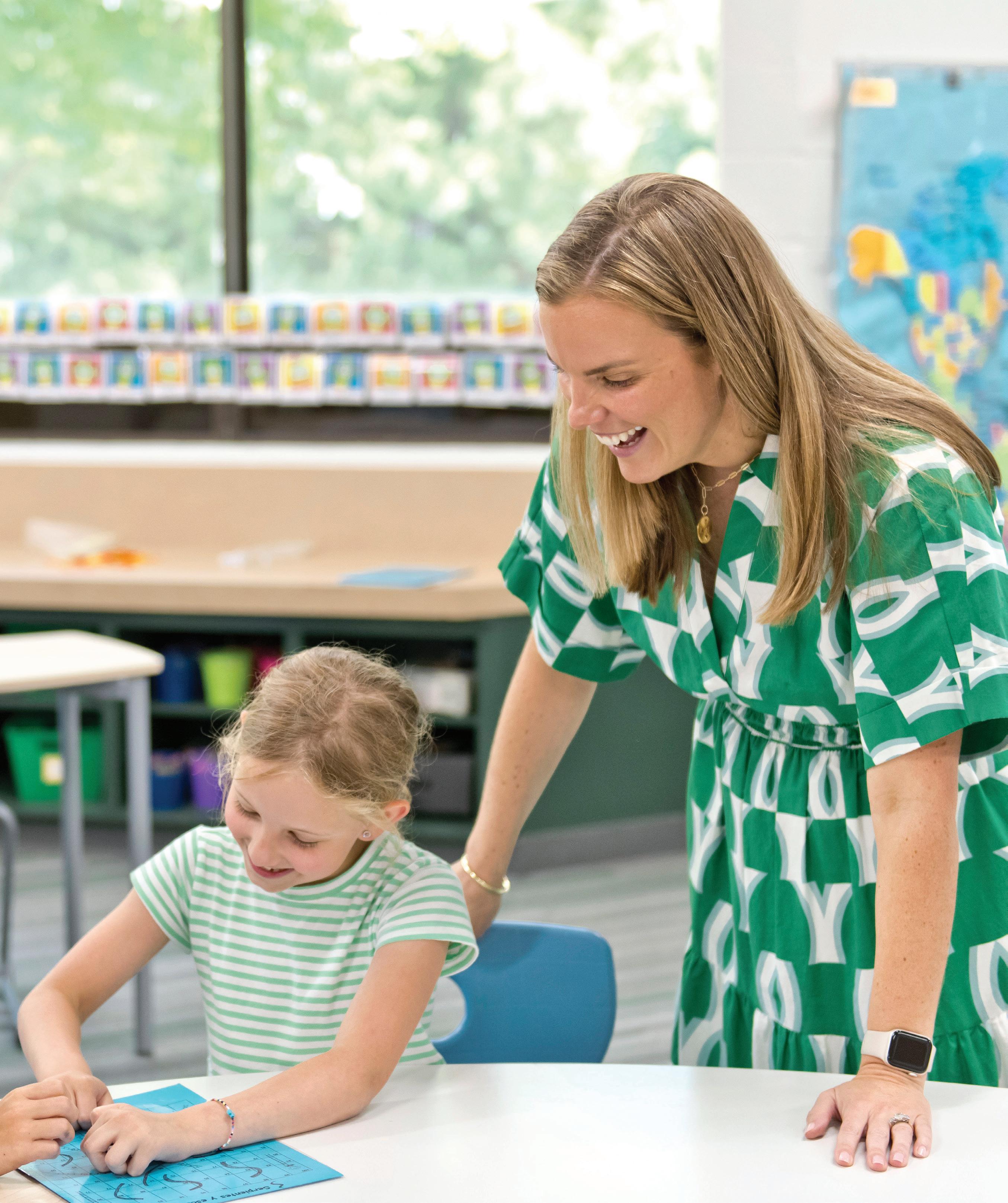
Spark talks with Lower School Spanish Teacher Alice Innes ’05
What makes teaching at Collegiate so special?
The people. Whether that’s our students and families, the teachers I work with, or our staff and administrators, everyone has this passion and love for learning that is really energizing. For example, when your students walk out of your classroom every day saying, “Thank you for teaching me today,” you just know you’re in the right place, doing what you’re meant to be doing. Everyone here is constantly striving to learn more. The relationships that I have here with teachers make collaboration — across subjects, across divisions — easy. It’s a true privilege to be surrounded by so many people who are experts in their field, and that makes you want to come to work and want to learn more, explore more, and connect.
What is your approach to teaching?
I don’t think I’ve ever put a workbook in front of students and said, “All right, for 45 minutes, you’re working in a workbook.” That’s not how I teach and it’s not how we learn a language. We learn through communicating. Students have to have opportunities to speak to and connect with each other, and we do that through hands-on, interactive games and speaking activities. They’re learning through Charades, Connect Four, Chutes and Ladders, but they’re also having a lot of fun. When you bring an atmosphere of fun into education, students are more willing to take risks, connect, and try new things, which is important for learning any world language.
Talk about the benefit of teaching at a JK-12 school.
It presents a unique opportunity to fully collaborate with colleagues across divisions, which allows us to focus on making sure we are preparing students as best as possible for whatever comes next. As a Lower School teacher, understanding what Middle and
Upper School Spanish students are learning helps me build a stronger foundation. Through cross-divisional collaboration, we are able to set students up for success.
As a Collegiate alumni, what are some lessons you were taught as a student that you now work to instill in your own students?
I look back on my educational experience with such fondness and gratitude for what it gave me. As a student, I felt that I was very valued, seen, and known for who I was, and I was met exactly where I was at any given time. I try to do the same for my students now. I try to truly meet them where they are as learners. And I try to instill in them the values — love of learning, hon-
or, respect, excellence, community — that were so important to my own foundation as a student.
What do you hope your students take with them when they leave your classroom?
Of course I hope students will leave my classroom with a foundational knowledge of Spanish. But, much more than that, I want them to love learning a language and everything that it entails: creative and critical thinking, problem-solving and risk-taking, empathy and respect for other people and cultures, and ultimately a deeper understanding of our shared humanity.
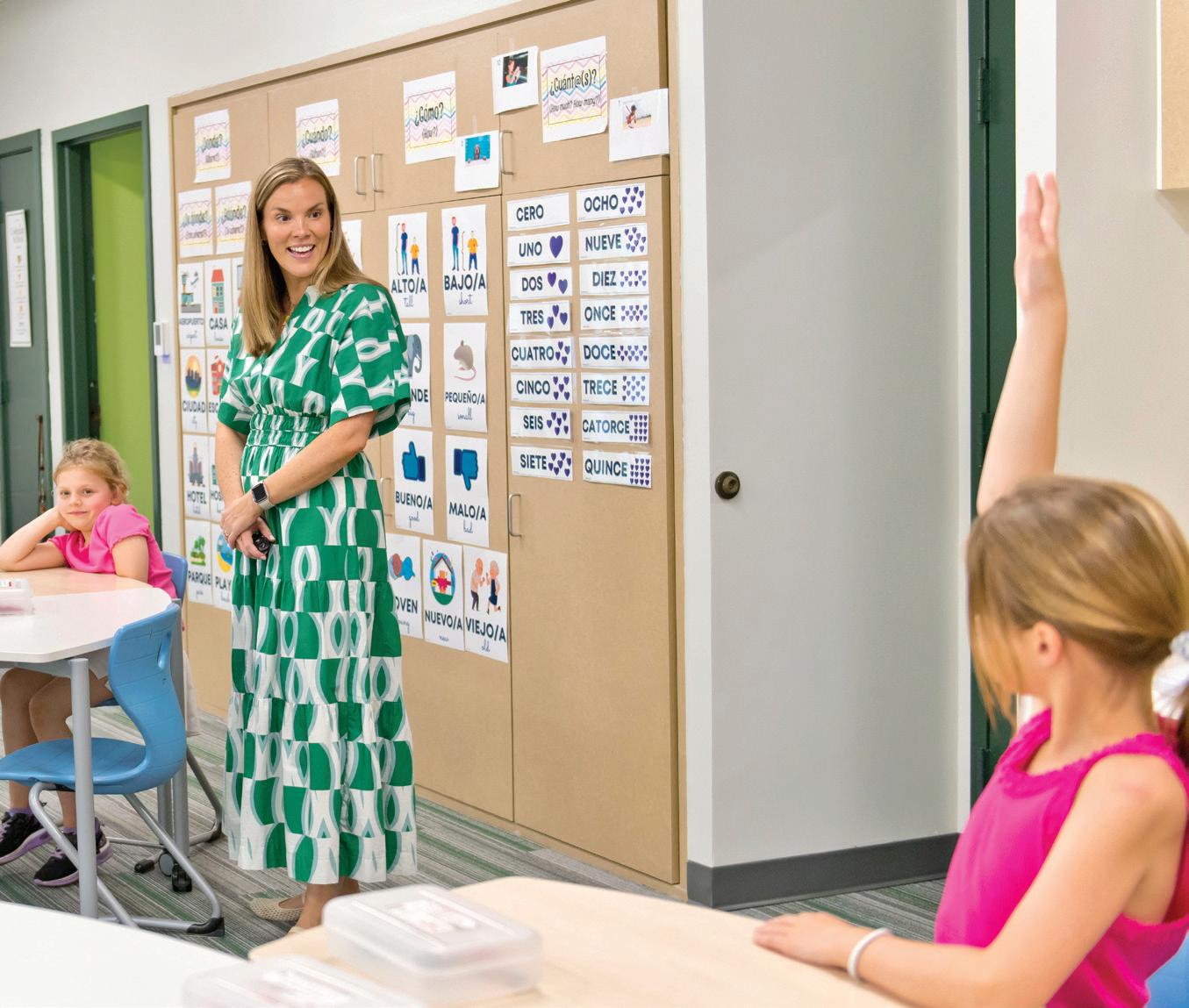
103 North Mooreland Road Richmond, Virginia 23229

We got a little sentimental. Commencement will do that. So we took a journey through our photography archives to find the Class of 2025 as they completed their Lower School graduation. Their horizons are expanding, but it all began here.
